Image

P: 20
Majority: Tannery, Azizullah, 1338
Dabaghi, Azizollah
Title and Creator Name: Takht-e-Foulad: the treasury of culture/ Azizollah Dabaghi.
Publishing Specifications: Esfahan: Binesh Azadegan, 2009=1388.
Religious Cultural Complex of Takhte-foulad in Isfahan
Appearance: 240 p. Illustrated.
ISBN: 978-964-7722-84-1
Cataloging status: FIPA
Note: English.
Transcription Title: Steel Flat ...
Thread: Flat steel
Thread: Takht Fulad
Congressional Ranking: DSR2073 / p. 2, 1388
Dewey classification: 955/932
National Bibliographic Number: 1669642
P: 1
Takht-e-Foulad
The
Treasury
of
Culture
Researched and Authored by:
Dr. Azizollah Dabaghi
In collaboration with:
Dr. A. Aghili Dr. A. Montazerolghaem
P: 2
P: 3
Takht-e-Foulad: The Treasury of Culture
Authored by: Dr. Azizollah Dabaghi
In Collaboration with : Dr. Asghar Montazerolghaem
Publisher:
First
print: 2009
Circulation: 1000
Printing:
Typing: Mohammad Dabaghi, Azin Baseer
All Rights are reserved
P: 4
Foreword.. 11
Preface. 18
Location of Takht-e-Foulad Cemetery.. 19
Origin of the Name. 22
History of Takht-e- Foulad.. 22
Hidden Treasures in Takht-e-Foulad.. 26
Great Number of Buried Dignitaries. 27
Variation of Architectural Designs and Styles of Buildings in Different Periods 28
Other Distinct Architectural Features. 30
Water Reservoirs. 30
Takht-e-Foulad Cemetery.. 36
Section One: Safavid to Qajar Period 37
Baba Roknoddin Graveyard.. 39
Baba Foulad Halvayee……………………………………………………………………… 46
Mir Fendereski Graveyard.. 46
Some Great Dignitaries Buried in This Area. 49
Mirza Rafi'a Graveyard.. 55
Some Important Dignitaries Buried in this Graveyard.. 56
Khansari Graveyard.. 58
Some Important People Buried in the Graveyard.. 59
Agha Sayyed Razi(Sadat Graveyard). 63
Khatoon Abadi Graveyard.. 66
Some Important Dignitaries Buried in the Graveyard.. 67
Fazel Sarrab Graveyard.. 69
Important Men Buried in the Graveyard.. 70
Fazel Hendi Graveyard.. 72
Some Important People Buried in the Yard.. 73
Mulla Esma'eil Khajooyee Graveyard.. 77
Some Dignitaries Buried in the Yard.. 78
Mosalla Grand Burial Site………………………………………………………………… 81
Behind Mosalla Graveyard.. 81
Important People Buried.. 81
Sadat Beheshti Family Resting Ground……………………………………………… 84
Important People Buried.. 83
Imami Family Resting Ground…………………………………………………………. 86
Feiz Graveyard.. 86
Important Dignitaries Buried in the graveyard.. 86
Agha Mohammad Bid Aabaadi Graveyard.. 89
Some Important Dignitaries Buried in this Graveyard.. 90
Section Two: Qajar to Present Time 93
Sheikh Mohammad Taghi Razi Graveyard.. 95
Important People Buried at this Site. 97
Mahdavi Graveyard.. 101
Some Important Dignitaries Buried in this Graveyard.. 101
Aabadehee
Graveyard.. 104
Jahangir Khan Qashqa'ei Graveyard.. 108
Great Dignitaries Buried Here. 109
Shahshahani Graveyard.. 113
Important People Buried in this Graveyard.. 114
Valeh Graveyard.. 116
Important People Buried in this Graveyard.. 117
Agha Sayyed Mohammad Bagher Charsouqi (Saheb Rozat) Graveyard.. 118
Some Important Graves. 119
Abol Ma'ali Kalbasi Graveyard.. 125
Some Dignitaries Buried in the Graveyard.. 126
Toyserkani Graveyard.. 130
Some Dignitaries Buried in the Graveyard.. 131
Ameen-o-Tojjar Graveyard.. 134
Agha Bashi Graveyard.. 136
Some Eminent People Buried in the Graveyard.. 137
Reezy Graveyard.. 140
Khadem-u-Sharia Graveyard.. 144
Important People Buried in the Graveyard.. 144
Rokn-ul-Mulk Mosque. 146
Important People Buried by the Mosque. 148
Kazerouni Graveyard.. 150
Some Deceased Dignitaries in the Graveyard.. 151
Boroujerdi Graveyard.. 158
Some Deceased Dignitaries in the Graveyard.. 159
Sayyed-ul-Araghain Graveyard.. 163
Dignitaries buried in the Graveyard.. 164
Golzar Graveyard.. 171
Moghaddas Graveyard.. 174
Important People Buried in the Graveyard.. 175
Agha Sayyed Muhammad Latif Khajooi Graveyard.. 177
Some Notable Tombs in the Graveyyard.. 177
Haj Bagher Ghazvini Dardashti (Khalilian) Graveyard.. 179
Distinguished Tombs in the Graveyyard.. 179
Sadat Ahmadabadi (Faghih Ahmadabadi) Graveyard.. 182
Important People Buried in the Graveyard.. 182
Zand-e- Kermani Graveyard.. 184
Famous Dead People Buried in the Place. 184
Zargarha Graveyard.. 186
Important Dead persons. 186
Hamadanian Graveyard.. 188
Important Dead persons. 188
Sadr-e-Hashemi Graveyard.. 189
Imam Jom’aa Graveyard.. 190
Maarefi Graveyard.. 191
Important Dead persons in this graveyard.. 191
Hashemi Talkhooncheh Graveyard.. 192
Hojjat Najafi Graveyard.. 193
Sayyed Mahmood Kelishadi Graveyard.. 194
Ata-ul-Molk Dahesh Graveyard.. 195
Sirafianpoor Graveyard(Tooba Garden). 196
Section Three: Golestan-e- Shohada Burial Site 199
(Including general graveyards and the martyr graveyard)
Lesan-ol-Arz Graveyard(The Tongue of the Earth). 202
Some Important Dignitaries Buried in the Graveyard.. 203
Malek Graveyard.. 207
Some Important Dignitaries Buried in this Graveyard.. 207
Mir Mohammad Sadeqi’s Graveyard.. 212
Some Important Dignitaries Buried in the Graveyard.. 212
Boroojeni Graveyard.. 216
Some Important Dignitaries Buried in the Graveyard.. 216
Koohi Graveyard.. 217
Mirza Ahmad Khan Mohei Graveyard.. 217
Golestan-e Shohada (Rose Garden of Martyrs). 218
INDEX 230
P: 5
Behind Mosalla Graveyard.. 81
Important People Buried.. 81
Sadat Beheshti Family Resting Ground……………………………………………… 84
Important People Buried.. 83
Imami Family Resting Ground…………………………………………………………. 86
Feiz Graveyard.. 86
Important Dignitaries Buried in the graveyard.. 86
Agha Mohammad Bid Aabaadi Graveyard.. 89
Some Important Dignitaries Buried in this Graveyard.. 90
Section Two: Qajar to Present Time 93
Sheikh Mohammad Taghi Razi Graveyard.. 95
Important People Buried at this Site. 97
Mahdavi Graveyard.. 101
Some Important Dignitaries Buried in this Graveyard.. 101
Aabadehee
Graveyard.. 104
Jahangir Khan Qashqa'ei Graveyard.. 108
Great Dignitaries Buried Here. 109
Shahshahani Graveyard.. 113
Important People Buried in this Graveyard.. 114
Valeh Graveyard.. 116
Important People Buried in this Graveyard.. 117
Agha Sayyed Mohammad Bagher Charsouqi (Saheb Rozat) Graveyard.. 118
Some Important Graves. 119
Abol Ma'ali Kalbasi Graveyard.. 125
Some Dignitaries Buried in the Graveyard.. 126
Toyserkani Graveyard.. 130
Some Dignitaries Buried in the Graveyard.. 131
Ameen-o-Tojjar Graveyard.. 134
Agha Bashi Graveyard.. 136
Some Eminent People Buried in the Graveyard.. 137
Reezy Graveyard.. 140
Khadem-u-Sharia Graveyard.. 144
Important People Buried in the Graveyard.. 144
Rokn-ul-Mulk Mosque. 146
Important People Buried by the Mosque. 148
Kazerouni Graveyard.. 150
P: 6
Some Deceased Dignitaries in the Graveyard.. 151
Boroujerdi Graveyard.. 158
Some Deceased Dignitaries in the Graveyard.. 159
Sayyed-ul-Araghain Graveyard.. 163
Dignitaries buried in the Graveyard.. 164
Golzar Graveyard.. 171
Moghaddas Graveyard.. 174
Important People Buried in the Graveyard.. 175
Agha Sayyed Muhammad Latif Khajooi Graveyard.. 177
Some Notable Tombs in the Graveyyard.. 177
Haj Bagher Ghazvini Dardashti (Khalilian) Graveyard.. 179
Distinguished Tombs in the Graveyyard.. 179
Sadat Ahmadabadi (Faghih Ahmadabadi) Graveyard.. 182
Important People Buried in the Graveyard.. 182
Zand-e- Kermani Graveyard.. 184
Famous Dead People Buried in the Place. 184
Zargarha Graveyard.. 186
Important Dead persons. 186
Hamadanian Graveyard.. 188
Important Dead persons. 188
Sadr-e-Hashemi Graveyard.. 189
Imam Jom’aa Graveyard.. 190
Maarefi Graveyard.. 191
Important Dead persons in this graveyard.. 191
Hashemi Talkhooncheh Graveyard.. 192
Hojjat Najafi Graveyard.. 193
Sayyed Mahmood Kelishadi Graveyard.. 194
Ata-ul-Molk Dahesh Graveyard.. 195
Sirafianpoor Graveyard(Tooba Garden). 196
Section Three: Golestan-e- Shohada Burial Site 199
(Including general graveyards and the martyr graveyard)
Lesan-ol-Arz Graveyard(The Tongue of the Earth). 202
Some Important Dignitaries Buried in the Graveyard.. 203
Malek Graveyard.. 207
Some Important Dignitaries Buried in this Graveyard.. 207
Mir Mohammad Sadeqi’s Graveyard.. 212
Some Important Dignitaries Buried in the Graveyard.. 212
P: 7
Foreword.. 11
Preface. 18
Location of Takht-e-Foulad Cemetery.. 19
Origin of the Name. 22
History of Takht-e- Foulad.. 22
Hidden Treasures in Takht-e-Foulad.. 26
Great Number of Buried Dignitaries. 27
Variation of Architectural Designs and Styles of Buildings in Different Periods 28
Other Distinct Architectural Features. 30
Water Reservoirs. 30
Takht-e-Foulad Cemetery.. 36
Section One: Safavid to Qajar Period 37
Baba Roknoddin Graveyard.. 39
Baba Foulad Halvayee……………………………………………………………………… 46
Mir Fendereski Graveyard.. 46
Some Great Dignitaries Buried in This Area. 49
Mirza Rafi'a Graveyard.. 55
Some Important Dignitaries Buried in this Graveyard.. 56
Khansari Graveyard.. 58
Some Important People Buried in the Graveyard.. 59
Agha Sayyed Razi(Sadat Graveyard). 63
Khatoon Abadi Graveyard.. 66
Some Important Dignitaries Buried in the Graveyard.. 67
Fazel Sarrab Graveyard.. 69
Important Men Buried in the Graveyard.. 70
Fazel Hendi Graveyard.. 72
Some Important People Buried in the Yard.. 73
Mulla Esma'eil Khajooyee Graveyard.. 77
Some Dignitaries Buried in the Yard.. 78
Mosalla Grand Burial Site………………………………………………………………… 81
Behind Mosalla Graveyard.. 81
Important People Buried.. 81
Sadat Beheshti Family Resting Ground……………………………………………… 84
Important People Buried.. 83
Imami Family Resting Ground…………………………………………………………. 86
Feiz Graveyard.. 86
Important Dignitaries Buried in the graveyard.. 86
Agha Mohammad Bid Aabaadi Graveyard.. 89
Some Important Dignitaries Buried in this Graveyard.. 90
Section Two: Qajar to Present Time 93
Sheikh Mohammad Taghi Razi Graveyard.. 95
Important People Buried at this Site. 97
Mahdavi Graveyard.. 101
Some Important Dignitaries Buried in this Graveyard.. 101
Aabadehee
Graveyard.. 104
Jahangir Khan Qashqa'ei Graveyard.. 108
Great Dignitaries Buried Here. 109
Shahshahani Graveyard.. 113
Important People Buried in this Graveyard.. 114
Valeh Graveyard.. 116
Important People Buried in this Graveyard.. 117
Agha Sayyed Mohammad Bagher Charsouqi (Saheb Rozat) Graveyard.. 118
Some Important Graves. 119
Abol Ma'ali Kalbasi Graveyard.. 125
Some Dignitaries Buried in the Graveyard.. 126
Toyserkani Graveyard.. 130
Some Dignitaries Buried in the Graveyard.. 131
Ameen-o-Tojjar Graveyard.. 134
Agha Bashi Graveyard.. 136
Some Eminent People Buried in the Graveyard.. 137
Reezy Graveyard.. 140
Khadem-u-Sharia Graveyard.. 144
Important People Buried in the Graveyard.. 144
Rokn-ul-Mulk Mosque. 146
Important People Buried by the Mosque. 148
Kazerouni Graveyard.. 150
Some Deceased Dignitaries in the Graveyard.. 151
Boroujerdi Graveyard.. 158
Some Deceased Dignitaries in the Graveyard.. 159
Sayyed-ul-Araghain Graveyard.. 163
Dignitaries buried in the Graveyard.. 164
Golzar Graveyard.. 171
Moghaddas Graveyard.. 174
Important People Buried in the Graveyard.. 175
Agha Sayyed Muhammad Latif Khajooi Graveyard.. 177
Some Notable Tombs in the Graveyyard.. 177
Haj Bagher Ghazvini Dardashti (Khalilian) Graveyard.. 179
Distinguished Tombs in the Graveyyard.. 179
Sadat Ahmadabadi (Faghih Ahmadabadi) Graveyard.. 182
Important People Buried in the Graveyard.. 182
Zand-e- Kermani Graveyard.. 184
Famous Dead People Buried in the Place. 184
Zargarha Graveyard.. 186
Important Dead persons. 186
Hamadanian Graveyard.. 188
Important Dead persons. 188
Sadr-e-Hashemi Graveyard.. 189
Imam Jom’aa Graveyard.. 190
Maarefi Graveyard.. 191
Important Dead persons in this graveyard.. 191
Hashemi Talkhooncheh Graveyard.. 192
Hojjat Najafi Graveyard.. 193
Sayyed Mahmood Kelishadi Graveyard.. 194
Ata-ul-Molk Dahesh Graveyard.. 195
Sirafianpoor Graveyard(Tooba Garden). 196
Section Three: Golestan-e- Shohada Burial Site 199
(Including general graveyards and the martyr graveyard)
Lesan-ol-Arz Graveyard(The Tongue of the Earth). 202
Some Important Dignitaries Buried in the Graveyard.. 203
Malek Graveyard.. 207
Some Important Dignitaries Buried in this Graveyard.. 207
Mir Mohammad Sadeqi’s Graveyard.. 212
Some Important Dignitaries Buried in the Graveyard.. 212
Boroojeni Graveyard.. 216
Some Important Dignitaries Buried in the Graveyard.. 216
Koohi Graveyard.. 217
Mirza Ahmad Khan Mohei Graveyard.. 217
Golestan-e Shohada (Rose Garden of Martyrs). 218
INDEX.. 230
Bibliography…………………………….…………………………………………………….237
P: 8
In the Name of Allah, the Owner of the Day of Judgement
The Prophet once
said: “The hearts also get rusted sometimes just as iron does due to
moisture”.
The Companions asked, “Then how can the rust be removed,
O Prophet of
Allah ‘?”
The Prophet replied: “By remembering death frequently, and by reciting the
Quran.”
P: 9
P: 10
Isfahan is perhaps one of the world’s most beautiful cities. It has been the centre of culture, knowledge and arts in the Islamic world. This fine city flourished and developed in the post-Islamic period and became the capital of Iran during the reign of three different Persian dynasties; the Buyids, the Seljuqs, and the Safavids, and became the heart of culture, arts, and knowledge. Isfahan's golden age arrived in the 16th century under Shah Abbas, the Great (1587-1629). Under the Safavids (1502-1736), Isfahan reached its zenith. Numerous parks, mosques, schools, palaces, orchards, caravanserais, districts, and memorial sites were built displaying the exquisite grandeur of Iranian and Islamic architecture. The German traveler, Kamfer, believed that the city was so large, that it could be regarded as the greatest city on this side of the River Ganges. In 2006, the Organization of Islamic Countries (IOC) selected Isfahan as the cultural capital of the Islamic world. In addition, in 2008, from among 167 pieces of art that received the UNESCO Seal of Excellence Award, twenty two pieces belonged to Isfahani artists. The Award Ceremony was attended by delegates from several Asian countries.
Throughout its majestic history, Isfahan has always been a place for the emergence of talent and intellect in the arts and sciences. It has given birth to creativity and the purest of thought, it has cradled delightful patterns and wonderful designs and manifested Iranian culture and civilization in the Islamic era. This melting-pot of theories, ideas, religions, and artistic values, has attracted numerous great scholars and artists, for most of whom the city became their eternal home. After Muslims came to Isfahan, many different cemeteries such as 'Abbakhshan', 'Toghchi', 'Sonbolan', and Setti Fatima' were built to embraced these pillars of knowledge and art. However, from the time of the Safavids until
P: 11
almost two decades ago, Takht-e-Foulad cemetery was the main burial ground of Isfahan, where most scholars and artists were laid to rest. This fact gives it a special place among the cemeteries the Islamic world.
During the Islamic Revolution and the Imposed War, a new graveyard, ‘Golestan-e Shohada’ was formed, which became the consecrated resting ground of some of the most brave men and women of this land who sacrificed their lives to break through the night and reach the dawn. Golestan-e Shohada became the rose garden of those martyrs who defended this land against the eight-year aggression of the murderers who ruled over Iraq and the evil forces who supported them. The Martyrs, who have been laid to rest in this graveyard, are the ones who turned the enemies’ sweet dreams of occupying this country into horrible nightmares. These martyrs, having been educated, and brought up with the teachings of Imam Hussein in the School of Ashura, paved the way for reaching the exalted ends of humanity and salvation in the hereafter, overnight.
In order to preserve this massive and priceless cultural heritage, The Takht-e-Foulad Cultural Organization, in affiliation with the Isfahan Municipality, is responsible for carrying out extensive project works at maintenance and renovation as well as cultural, research, and educational levels. These include publishing books, leaflets and brochures; holding conferences and educational workshops; organizing galleries and exhibitions on photos, stone artifacts, and journals; guiding tourists; and making films about the lives of the departed dignitaries. The Encyclopedias Office is also looking forward to publishing this cemetry's encyclopedia in the near future.
The present book is an attempt to familiarise tourists and non-Persian speakers with some of the personalities who were very influential in the life and culture of the people in Isfahan and, perhaps Iran. We are thankful to many hard-working individuals for their efforts towards completing this work. In particular, to Dr Azizollah Dabaghi for his continuous and painstaking work in
P: 12
writing, compiling and translating this valuable book. Now that he has written this outstanding piece of document, I am happy to say that the historical facts mentioned by him have the benefits of authenticity and accuracy. We also would like to express our thanks to Dr Saghaian Nezhad, the Honourable Mayor of Isfahan for supporting the cultural activities in this important cemetery. We are very grateful to Mr Hussein Hamidi Isfahani, the
manager of The Takht-e-Foulad Cultural Organization, for his encouragement and financial support.
Asghar Montazerol Ghaem
Encyclopedias Office of Takht-e-Foulad
March 2009
P: 13
P: 14
Author’s Preface
Remember, one day you will appear before ALLAH and answer for your deeds. So beware, do not astray from the path of righteousness after I am gone.
(Prophet Mohammad, SA)
All of us, no matter our position or wealth, will one day come to a place of rest. In the end, when that great leveler arrives, there shall remain nothing, no pits no hills. The only worldly possessions that will remain for us are a small plot of land with a headstone marked by some words of remembrance and some numbers signifying the dates of our birth and death. It is our good deeds and the memories of a well - lived life that will be of lasting value.
For me personally, there are several reasons for showing respect for the dead; by visiting cemeteries and reading about them. We come to cemeteries as a mark of respect for our ancestors who may have not been known to us personally, but about whom we may have been told about by our elders. As a Muslim, I believe cemeteries are about more than simply remembering the deceased. Our Holy Book, the Qur'an , tells us that all the people will be raised on the Day of Judgment. Muslims, in a similar way to the followers of many other religions, believe that at the end of time, both body and soul will be reunited and restored in an extraordinary way that we cannot comprehend from this side of eternity. However, the respect we show for the remains of the deceased and our visit to the graves of our departed loved ones is a very concrete way of expressing our faith in this mysterious resurrection of the body.
Reading about the dead or visiting their graves also gives us an opportunity to pray for the dead, that they might be released from their sins, committed whilst they were still living.
In addition, the people who are laid to rest in these graveyards represent our past and our future, they walked their ways in this world before us, just as our decendants will walk theirs too. These people have left us a heritage, their ways of living and culture, by passing on their values and their faith. They paved the path of life in this world leaving us a path to follow their example. Their contribution to our lives must not
P: 15
be forgotten or taken for granted. It is, therefore, our responsibility to the departed, and to the generations not yet born, to preserve cemeteries and graveyards. If we let the history of the departed and their lives fade away, how can we expect future generations not to let our memories die away?
When for the first time I was asked by my honorable friend and the head of the Encyclopedias Office of one of the most prominent cemeteries in the world of Islam, Takht-e Foulad, to write something about the buried dignitaries, I was very reluctant. So many people have been buried in this place and it would be boring for me to say something about something as gloomy as death and the dead. Then a strange thing happened- I had a dream one night. I saw a large crowd of people marching in front of me and saluting me. A dead man appeared from his grave at a corner of the cemetery and said to me, “You forgot to include me in your book," and then he disappeared back into his grave. Then I saw my late father who was following the marchers. He looked so happy. I went to him hugged him and asked him if he was fine. He said he was fine and had been told to follow the people in the march. This dream, together with the loss of my mother, was a confirmation to me that I should complete the job.
This book has involved translation, collection, and writing. Every attempt has been made to keep the style, choice of words, and grammar as close as possible to authentic English. However, expressing some cultural concepts is not always an easy task and does not always lead to a piece of smooth and comprehensible writing. Therefore, the writer by no means claims that it is an errorless job; in fact comments and suggestions for improvement on all aspects of this writing would be appreciated. I dedicate this work to my late beloved father and mother, Haj Karim and Talaat, who are buried in another cemetery, at the foot of Sayyed Mohammad Mount, next to the Shrine of Imamzadeh Sayyed Mohammad. My martyred brothers Bahram and Mohammad Dabaghi have also been laid to rest here in the Rose Garden of the Martyrs, to the north west of Isfahan. Their loving memory is with me all the time.
In completing this work, several people have helped me, without whom the job would have been impossible. First and foremost I would like to thank my wife, Zahra, and my sons, Mohammad and Shahab, for their tolerance and support over the last two years. My appreciation goes to Engineer Hossein Hamidi, the Head of the Cultural Organization, for his
P: 16
constant help. I would like to thank Associate Professor Dr Asghar Montazerol Ghaem for his patience and support, as well as his valuable information on related historical events. Special thanks to my British friend, George MacGillivray, for proof reading the manuscript. George bore all the arduous tasks of reading and provided valuable comments. I thank him for all his advice. I also owe a debt of gratitude to my former student Miss Azin Sadat Baseer for typing some parts of the first version of the manuscript. I also owe a debt of gratitude to my scholarly- minded friend, Mr. Ahmad Abul Barakat, for his insightful comments on different parts of the book. Also my gratitude goes to the young scholar and researcher, Dr Sayyed Ahmad Aghili for allowing me to use the contents of his valuable book ‘Takht-e-Foulad Cemetery’ for translation; also his colleagues, Hamid Khalilian, Babak Shamsollahi, Mehdi Babai, and Miss Maryam Zeinali for their assistance. My special gratitude goes for Mr Mortaza jannatian, the dedicated publisher for his painstaking efforts
Azizollah Dabaghi
P: 17
"The ones who provide merely for this world destroy their eternity, and the ones who provide for their eternal life, achieve their aspirations."
Imam Ali (pbuh)
The history of Isfahan is as long as the history of Persia, but the city did not develop and flourish until after the emergence of Islam. During the early centuries, following the arrival of Islam, the city prospered so much that it became a centre of science and culture in the Islamic world. During the Buite, Seljuk, and Safavid dynasties, Isfahan became the capital of Iran and across many districts, the building of mosques, orchards, caravanserais and cemeteries flourished.
During the Safavid period, the city thrived and developed so much that the famous Italian traveler, Pietro de la valle, wrote ‘Isfahan is a great city, populous and beautiful.’ As different localities in the city grew, many different cemeteries were established. 'Abbakhshan', 'Toghchi', 'Sonbolan', and Setti Fatima' were typical examples of these cemeteries. However, with increasing urbanization, and since land was required for housing, malls, palaces, dwellings, and gardens, burial grounds had to be moved to the suburbs of the town.
During the 'Buite' era, the Grand cemeteries of 'Lesan-ol-Arz' (the original site of Takht-e-Foulad) began to develop. From the newly discovered brick tombstones that date back to 567(AH) and 687(AH), it may be understood that the cemetery was already being used in the sixth and seventh centuries (AH). Nevertheless, the real growth of this burial site was in the Safavid period when thousands of dignitaries including religious scholars, philosophers, mystic figures, scientists, and artists were laid to
P: 18
rest in different parts of the site. The fame and the sanctity of Takht-e-Foulad cause it to be ranked as the second largest cemetery after 'Baqi' and 'Wadi-u- Salam' cemeteries, embracing the graves of noble figures in the world of Islam. In addition to its sacredness, Takht-e-Foulad is a typical example of a cemetery which contains magnificent architectural, masonry, calligraphy, and plaster works. This cemetery, in a similar way to any other burial grounds, display parts of history, national identity, Islamic culture, civilization, and arts of this land. In fact, this historic cemetery yields a treasure trove of information about the past. Every grave has a story to tell; and by visiting them, one can take part in it.
The seventy-five acre square Takhte-e-Foulad is located in southeast Isfahan. It is situated within an area between Mir Street on the north; Sa’adat Abad Road (around Flight University) on the south; Sajjad and Bahar Streets, on the east; and Mosalla Street, on the west. In addition to two graveyards, Boroojerdi and this, Mirza Rafee’a Mausoleum and Reezi, are located in the southern part of Sa’adat Abad Road.
P: 19
Image

P: 20
P: 21
In historical records, this cemetery is recorded as 'Lesan-ol-Arz' (which means ' the tongue of the earth'), 'Baba Rokn-u-Din', and its current name ‘Takht-e-Foulad'. The etymology of the name 'Takht-Foulad' is probably rooted in the presence of the tomb and mausoleum of the tenth century mystic and a scholar, Baba Foulad Halvayee (d. 959 AH), which was formerly used as a place of worship. Another reason for this naming is that in the old times the cemetery was extended as far as Khajoo Bridge which was built by stone slabs(poles) errected at intervals from each other and were covered by wooden timbers (takhteh), meaning a bridge made of wooden timbers. Considering the fact that the names of many historical cities and places change over time, this may also be a reason for the origin of the word. An additional reason for the name may be the fact that Soffeh Mount used to have a number of flat-surface hills (takht) at the foot, similar to some other places in Iran such as Takht-e-Soleiman. One of these hills was the burial place of Baba Foulad Halvaee. Thus, the name 'Takht-e-Foulad' derives from this fact.
The antiquity of this cemetery dates back to the pre-Islamic period and is attributed to a tomb which is supposed to belong to 'Joshua, the Prophet' located in a burial ground called 'Lesan-ol-Arz' (meaning’ the tongue of the earth’). However, the tomb attributed to Joshua, a Jewish prophet, and the successor of Moses, is said to exist in Palestine and the possibility of its being located in Isfahan is faint. Nevertheless, it can be confirmed that the tomb belongs to a great Jewish dignitary. There are no other pre-Islamic mausoleums in this burial ground and until two decades ago it was surrounded by an old wall. According to the experts of the Organization of Cultural Heritage, some parts of it were made of Deylamids-Style brickwork.
P: 22
Image
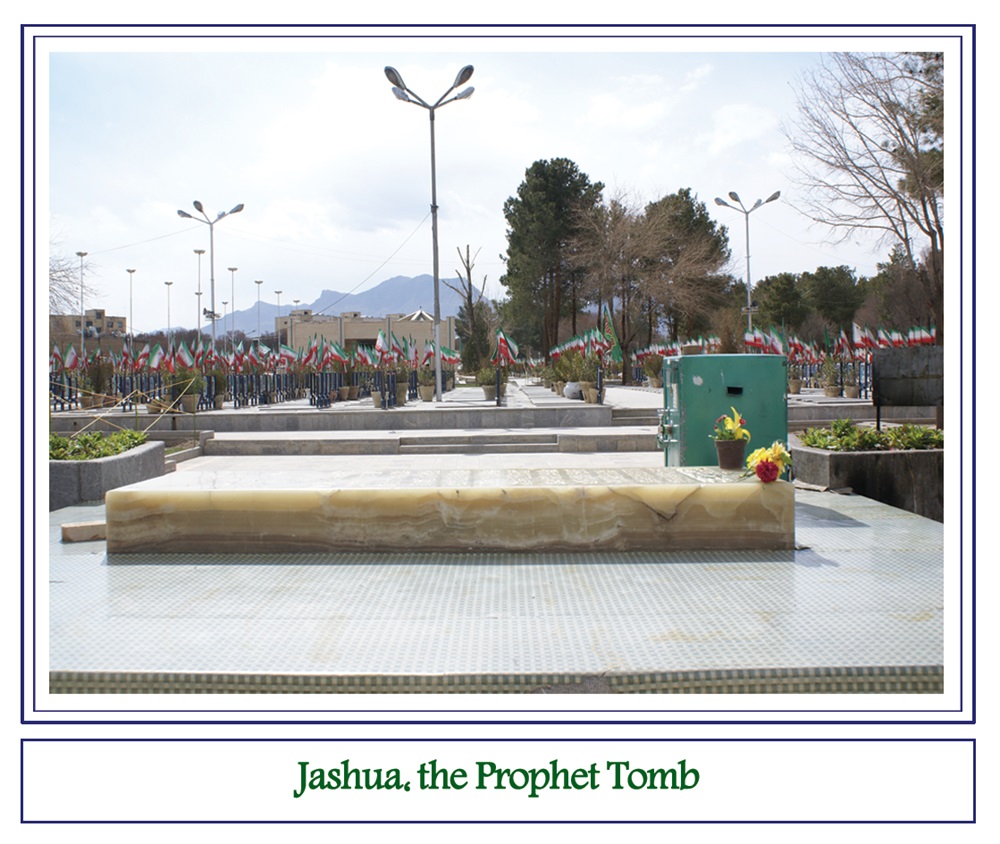
Although there is little recorded history of this cemetery in the periods between the fifth and seventh centuries(AH), some of the tombstones, dated between 567(AH) and 686(AH), are inscribed with Kuffic and Naskh scripts, which indicate that the cemetery did exist in those periods. In the time of Seljuks, records show the existence of many luxurious buildings in this cemetery. During the period between the seventh and tenth centuries, (AH) Takht-e-Foulad was used as a place for worship and ascetic practices, where the mystics and sophists such as Baba Rokn-u-Din and Baba Foulad used to pray in their own personal worship places. During the seventh and eighth centuries (AH), some great mystics, who were titled ‘Baba or Amoo’ are said to have lived in the area, the most renowned of whom was Baba Rokn-u-Din (died 769 AH). The great scholars, Sheikh Bahayee, Mohammad Taghi Majlesi, Ayatollah Sayyed Abdolkarim Keshmiri, and Haji Kalbaasi remember him. Baba Rokn-u-Din was buried in his usual place of worship, which is now called ‘Baba Rokn-u-Din Mausoleum’.
P: 23
Image
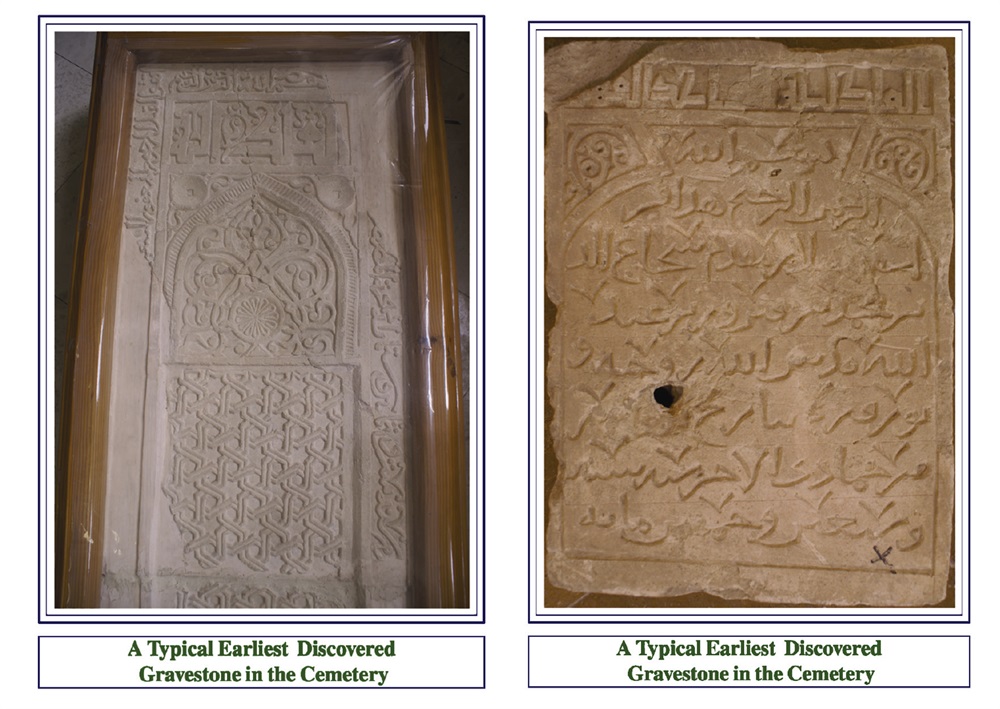
Subsequent to the entombment of Baba Rokn-u-Din, up to the Safavid period, dignitaries were occasionally buried in the cemetery. However, it was not used as the city’s official burial sites since people buried their dead in the district they lived in. Some of the remains of these different cemeteries still exist in various localities in Isfahan. However, since the Safavid period, due to urban development, many graveyards and mausoleums were established in this area turning it into the biggest cemetery in Isfahan. Some historians have suggested that Takht-e-Foulad was initially used as an inhabited area and the neighboring cemetery was called ‘Baba Rokn-u-Din’. As the cemetery extended to include ‘Takht-e-Foulad, the name changed to the present one.
In the time of Shah Abbas, many changes occurred in the Takht-e-Foulad area. The king focused on developing the southern part of the city. Many Zoroastrians, who used to live in the southern
P: 24
part of Hassan Abad (Khajoo) Bridge, were moved to the south of Jolfa district and their residential areas were replaced with houses, orchards, and palaces. Some of the most notable examples of these developments were ‘Seven-fold Building’, ‘Golestan Garden’, ‘Mirror House’, ‘Saltcellar-shaped Building’, and ‘Sa’adat Abad Garden’. The King also ordered the construction of a ‘Chahar Bagh’ which was from the south of Hassan Abad Bridge up to the gate of Takht-e-Foulad’s. It was known as ‘Gabr Abad Chahar Bagh’ and embraced such gardens as ‘Bagh Kaj’ (Pine Tree Garden), Mostofi Garden, Negarestan Garden, and Anarestan Orchard.
In the time of Shah Abbas II, Takht-e-Foulad was so developed that it included various guest houses, Sufi houses, Imam Hussain Ceremonial Houses (Takias), and two ice houses that provided cold water for the pilgrims.
Nevertheless, by the end of Safavid dynasty, Takht-e Foulad, due to the Afghans attack on Isfahan, became less prosperous, disused, and gradually began to ruin, except for certain periods.
At the beginning of the Qajar period, Takht-e-Foulad was only a small green village in the suburbs of Isfahan. The cemetery associated with the village was beyond the city wall and fortifications.
During the rule of Abdullah Khan (the son of Haj Mohammad Hussein Khan Sadr-e- Isfahani, died in 1236 AH), Gabr Abad Chahar Bagh was renovated and became known as Ameen Abad Chahar Bagh.
Despite the fact that in the period of Zelle Soltan, the ruler of Isfahan, many buildings were demolished, in the same period, Rokn-ul-Molk Mosque and a water reservoir were built in the cemetery area by Soleiman Khan Rokn-ul- Molk, deputy governor of Isfahan.
The present Feiz Street was founded on the ruins of the old Chahar Bagh. The surrounding Gardens gradually became used for agriculture. These were still in use until 1335(AH). Since then, due to the increasing population of the city, the remains of the Safavid
P: 25
orchards and palaces, as well as the agricultural lands turned into residential areas and became one of the districts of Isfahan. In a limited period, private family burial sites were built and a vast portion of the surrounding area was confiscated by individuals and government authorities to build offices and houses. This trend continued until 1405(AH), when funerals in this cemetery were prohibited, and ten years later in 1415(AH), Takht-e-Foulad was registered as a NATIONAL HERRITAGE SITE. Presently, the Takht-e-Foulad Cultural and Religious Organization are responsible for repairing, renovating, and restoring this holy cemetery.
‘Oh, you, Takht-e-Foulad, are the pilgrimage place of devotees,
On your decent pure earth, lovers worship their lovely Almighty,
The eyes of the insightful look intently at you,
The Kaaba of those who follow the path of Love,
Is placed within you.’
(Shafigh Isfahani)
Takht-e-Foulad, in the course of history has been one of the most sacred burial sites in the world of Islam. Spiritually, it has been a focus of attention for the general public as well as for religious scholars. The existence of a tomb, said to belong to the Prophet Joshua, and also the narratives about the Lesan-ul-Arz existed in different sources have added to the sacredness of this area. Additionally, this cemetery has been used as the place for numerous religious, gnostic, and mystic enlightened ones across the centuries. The presence of a collection of graveyards and mausoleums as well as the graveyards of the recent martyrs of the Islamic Revolution and the Imposed War have turned this cemetery into a centre of focus in a spiritual sense. Moreover, holding worship ceremonies and prayer meetings in different
P: 26
mosques in the cemetery and holding religious festival prayers in the neighboring Public Prayer Place (Isfahan Mosalla) have all added to the sacrednees and blessedness of Takht-e-Foulad.
It is recorded in Qajar sources that every time Isfahan faced a famine or drought, the ulema (the religious scholars) went to Takht-e-Foulad to pray for rain. On many occasions, their wish came true!
The cemetery is famous for having embraced many of the graves of noble and prominent figures in the arts, religion, science, and mysticism. It includes numerous burial grounds (that are known as ‘Tekkiyeh’). These burial grounds may include many mausoleums, some of which relate to a single extended family. The following are some of the notable burial grounds (Tekkiyehs) in Takht-e-Foulad:
Mir Fendereski, Khansari, Mohammad Bagher Charsooghi, Mirza Rafee’a, Khatoon Abadi, Sayyed-ol-Araghain, Fazel Saraab, Valeh, Abade’ee, Toyserkani, Jahaangir Khan, Mirza Abol Ma’ali Kalbasi, Boroojerdi, Izad Goshasb, Sheikh Morteza Rizi, Malek, and Golzar.
Some graves attributed to Shiite philosophers and (Islamic) jurists as well as to the artists within these graveyards belong to:
Baba Rokn-u-Din (d. 769 AH),
Abol Ghasem Mir Fendereski (d. 1050 AH),
Mirza Rafee’a Na’eini (d. 1082 AH),
Agha Hussain Khansari (d. 1098 AH),
Mir Mohammad Esma’eil Khatoon Abadi, the author of Great Interpretation (d. 1116 AH),
Agha Jamalodin Khansari (d. 1122 AH),
Molana Mohammad Ibn Abdol Fattah Tonekaboni, known as Fazel Saraab (d. 1124 AH),
Bahaa-o-Din Mohammad Isfahani, known as Fazel Hendi (d. 1135 AH),
P: 27
Dervish Abdol Majid, master of calligraphy (cursive writing) (d. 1185 AH),
Hakim Agha Mohammad Bid Abadi (d. 1197 AH),
Haj Sadeq Takht-e-Fouladi (d. 1290 AH),
Agha Mohammad Kazem Valeh Isfahani (d. 1299 AH),
Mohammad Hussain Angha, known as Malek-o-Sho’araa (the king of poets) (d. 1308 AH),
Agha Mirza Mohammad Bagher Chaharsooghi, the author of Rozat al-Jannat) (d. 1313 AH),
Jahaangir Khan Ghashghayi (d. 1328 AH),
Haj Mirza Agha Imami, miniaturist (d. 1375 AH),
Sayyed Mohammad Sadr Hashemi, journalist, author and historian (d. 1384 AH),
Maryam Begum, known as the prince’s mother, (d. 1264 AH),
Shahr Banoo, the daughter of Sheikh Mohammad Razi,
Nasmeh Khatoon, the daughter of Sheikh Ja’far Kashef-ol- Gheta,
Banoo Nosrat Sadat Ameen, the female Grand Ayatollah (The high-ranking shiitti clergywoman) of the world of Islam, (d. 1403 AH).
The cemetery is remarkable due to the different architectural styles and design of mausoleums, graveyards, caravanserais, water reservoirs, stone-troughs, and drinking fountains.
The graveyards can be divided into four periods of history:
1. Safavid Period
Seven graveyards belong to this period: Baba Rokn-u-Ddin, Khansari, Mirza Rafee’a, Khatoon Abadi, Mir Fendereski, Fazel Saraab, and Agha Razi.
These graveyards were designed with particular architectural styles and embellishments. The variations seen in their plans and construction are rare amongst the other Isfahan monuments.
P: 28
2. Qajar Period
Overall, the graveyards remaining from the time of Qajars add up to twenty, the most significant of which are: Sheikh Mohammad Taghi Razi, Agha Mohammad Bid Abadi, Mirza Abol Ma’ali Kalbaasi, Toyserkani, Haj Mohammad Ja’far Abade’ee, Sayyed-ol-Araghain, Haj Agha Majles and Kazerooni.
Architecturally, graveyards from the Qajar period are very similar to those of the Safavid period. Octagonal plans are commonly used from the interior and exterior. Mausoleums are built with eight pillars on which the dome rests. The interior and exterior parts are decorated with plaster work, sun-baked bricks, and ceramic tiles with an array of beautiful patterns.
3. Pahlavi Period
The gravyards, left behind from the time of Reza Shah and his son, Mohammad Reza add up to seventeen. Six of these resting places are more famous than the others. They are: Broojerdi, Moarefi, Golzar, Moghaddas, Hojat-e-Najafi, and Kermani. By the end of the Qajar period, the graveyards of Takht- e- Foulad tended to be more privatized and family owned.
3. Islamic Republic Period
During this period many buildings and mausoleums were repaired and renovated according to the Persian traditional architecture style. Also the new buildings were decorated with patterned tiles. Typical examples of these monuments are the mausoleums attributed to Banoo Ameen, Martyr Shams Abadi, Haj Agha Rahim Arbab, Martyr Ashrafi Isfahani, Fazel Hendi, Mulla Esma’eil Khajoo’ee, and Jahangir Khan Qashqaie.
Moreover, in this period, the cemetery known as Golastan-e Shohada (the garden of sacrificial victims) contains the graves of more than 7300 brave and faithful Iranian soldiers who were killed for the cause of the Islamic Republic.
P: 29
There are a number of historical mosques that are of pleasing architectural importance which were built after the Safavid period. The existing historical mosques in Takht-e-Foulad include: Mir Mohammad Isma’eil Khatoon Abadi and a public prayer house that was renowned in the time of the Safavids. People would gather here on important days, especially when there was deficiency of water, to pray to God for rainfall.
Since the wells in the cemetery contained salty water and a lot of effort was needed to reach water, the use of water reservoirs was essential. The design of the reservoirs shows that the streams and water channels in the area supplied the water to these reservoirs. During the summer, when the amount of water was insufficient, the reservoirs were used to irrigate the area. Some of these which are historically and structurally significant in the cemetery are as follows: Kazerouni Water Reservoir, Mosalla Mosque Water Reservoir (dates back to around 1290 AH), and Lesan-ol-Arz (dates back to 11th or possibly 10th Century(AH) or even before).
Image
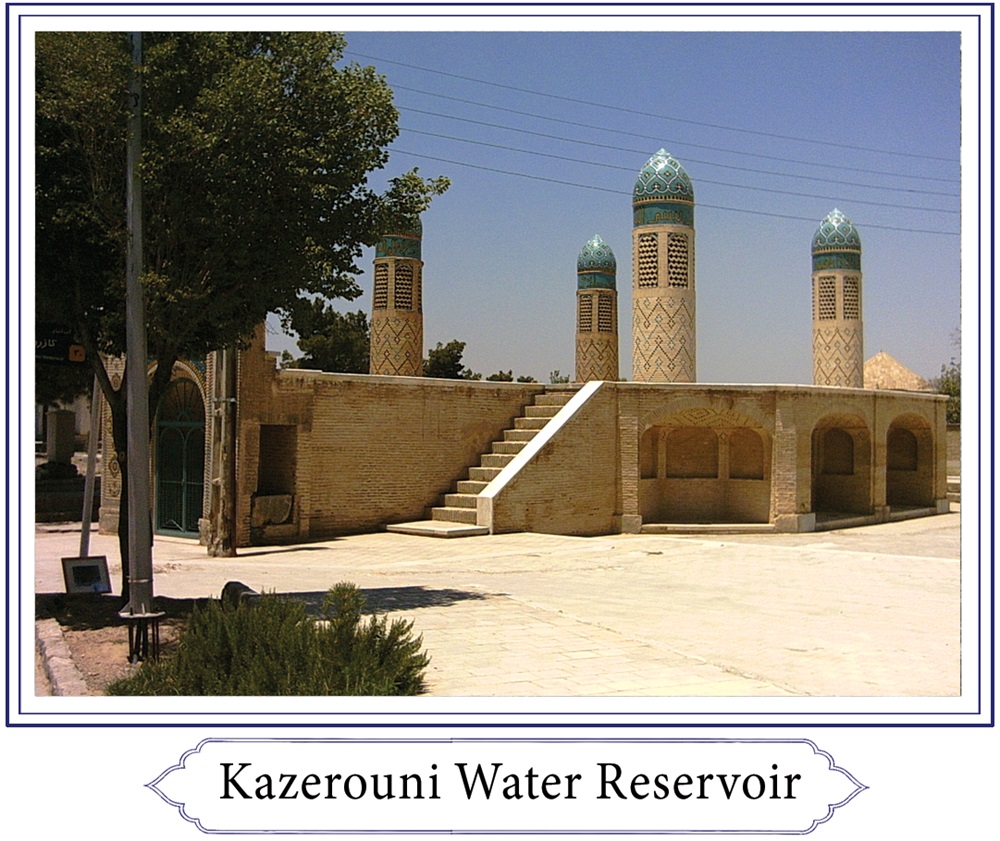
P: 30
Water Streams (Maadies)
A number of streams that irrigate the land and orchards of Takht-e-Foulad originated in the Zayanderood River The most important of these streams was named ‘Two Hundred and Fifty’ and was a branch of Shayej Water Canal that started from the Zayandeh River and irrigated the land on its way to the villages of Hossein Abad, Farhabad, Sichan and Kooleh Parcheh. The reason for calling it ‘Two Hundred and Fifty’ was the square (250 acres) area of the lands in the districts of Sa’adat Abad and Gabr Abad that shared the water provided by this stream. There were also other famous water streams such as.’Black and White,’ streams which provided the water for Lesan-ol-Arz and Mosalla sites. However, the streams dried up in the period after the Safavids.
Water Fountains and Water Stones
Water fountains and Water stones were often built by the believers to quench the thirst of the pilgrims to the cemetery in memory of Imam Hussain and Hazrat Abbas, who were innocently killed in Karbala while they were thirsty. People usually expected a reward from Allah for this pious act. However, there are some typical water fountains and water stones that are of stylistic and artistic significance. Some valuable ones can be seen in different graveyards (takiyes) of the cemetery such as the ones in Kazerooni, Mir, Aghabashi, Baba Roknoddin, Abade’ee and Sheikh Mohammad Taghi Razi. The difference between a water fountain and a water stone lies in the fact that the water supplied to a water fountain comes from a well beside the fountain, whereas, the water for the water stone is provided from elsewhere, added to this is the fact that the latter enjoyed a holy status among the general public.
P: 31
Image

This caravanserai belongs to the time of the Safavids and is located on the way from Isfahan to Shiraz. The founder was Beig Torkeman, an army chief of Shah Abbas. Since it was repaired in the Safavid period by Ibrahim Malek-u-Tojjar, it was also named ‘Malek Caravanserai’. The area is about 2700 square meters and was used as a resting place for business caravans. The building is a four porch structure and its tall magnificent portals are adorned with beautiful brickwork. Since the time of the Qajars, it has been used as a warehouse and due to a lack of proper supervision during the last decades; this building has become the personal property of some individuals. This distinct historical building is in need of special attention, requiring the government to take an interest in its maintenance and renovation.
P: 32
Image
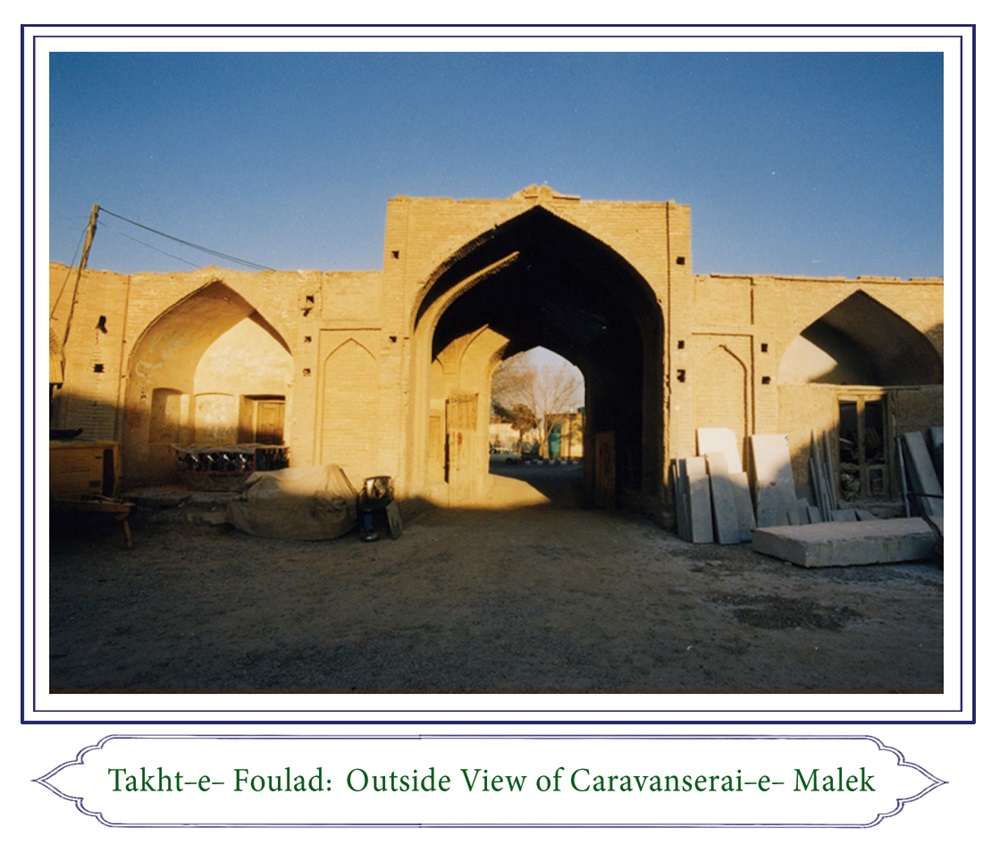
Artistic Manifestations
The cemetery has been a place where some of the most beautiful pieces of art have manifested themselves. It was once considered an ideal place for calligraphers, masons and other artists to learn from the splendid calligraphy works of Mir Emad in the Mir Fendereski Graveyard as well as the woks of Agha Mohammad Bagher Samsuri in the Maadar Shahzaadeh Graveyard. Some of these beautiful artistic displays include:
Patterns and Designs
Takht-e-Foulad is a collection of decorative and symbolic engraved images that includes impressions of flowers, shrubs, nightingales, and vases, and arabesque patterns. These images are delicately seen, both in the adornments of the plaster as well as
P: 33
Image

the tile works and in the embellishment of the tombstones in the cemetery. The symbolic engravings most common on the tombstones include shapes of tools, expressing the occupation of the deceased and pine tree denoting eternity, and the design of ‘mohr’, beads and comb symbolizing faith and purity of the descendant. The aim of all these designs is to seek God’s blessings for the soul of the deceased. Some typical examples of these engravings are found in the Khansari Graveyard. Other symbolic elements in Takht-e-Foulad are stone lions which were positioned on the graves of the victors and heroes symbolizing their courage and gallantry.
Calligraphy: Inscription and Epitaph
The art of calligraphy is another artistic element in the cemetery that beautifully manifests itself and contains two important parts: Inscription writing and epitaph.
Inscription writing: There are some fine and valuable examples of inscriptional works by Mir Emad Hasani in the Mir Fendereski graveyard and by Mirza Fathollah Jalali at the top of the entrance door of the Abade’ee graveyard. Also the inscription at the entrance gate of the Baba Rokn-u-Din was written in ‘Solth’ handwriting on turquoise ceramics in the name of the Shah Abbas I. There are other inscriptions, which were the works of some famous calligraphers such as ‘Mohammad Taghi ibn Mohammad Ibrahim Isfahani’, ‘Tarb ibn Homay-e- Shirazi’, ‘Mohammad Saleh Isfahani’, Mirza Hussain Gholi Katibehnevis Isfahani’, ‘Abdol
P: 34
Hussain Ghudsi’, ‘Mohammad Hussain Zia Isfahani’, ‘Mohammad Taghi Sahhaf’and Habibollah Fazaeli and various other artists and calligraphers whose works are seen in different mausoleums and graveyards as well as in the Rokn-ul-Molk Mosque and School.
Image
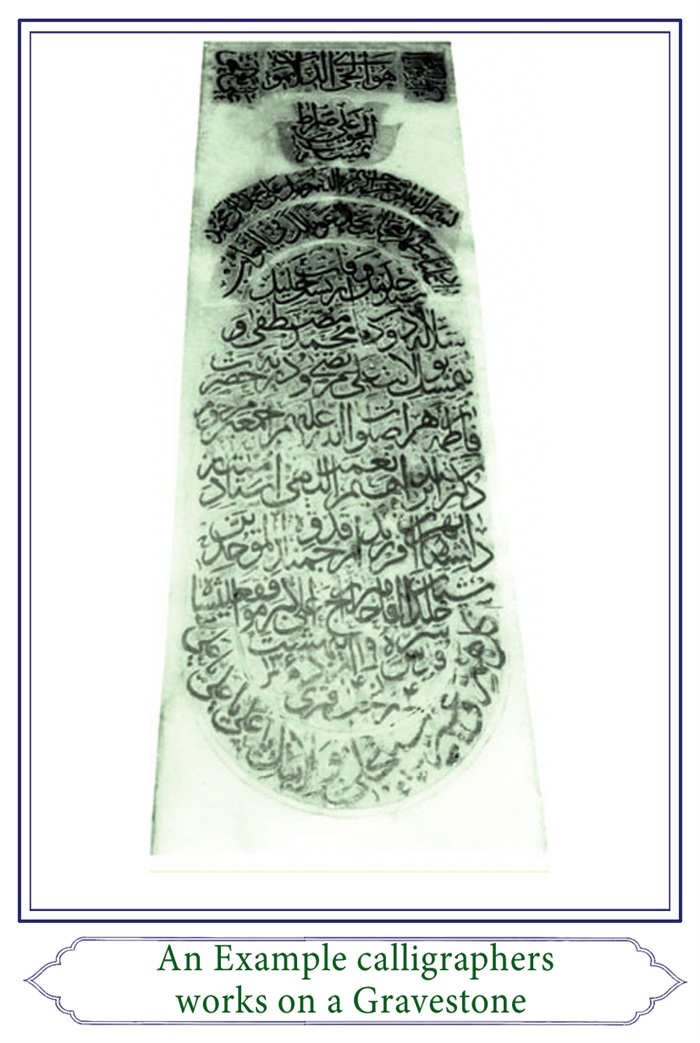
Epitaph: There are abundant examples of these in the cemetery displaying the artistic mastery of the Isfahani stone carvers. Various beautiful tomb inscriptions can be found in the Cemetery which are the unique works of some calligraphers like, ‘Mohammad Bagher Semsuri’ on the tombstone of Maryam Begum, nanny of Seif-o-doleh (Maadar Shahzadeh) and ,also, ‘Mohammad Hussain Zia Isfahani’ on the tombstones of:
1. ‘Sheikh Mohammad Taghi Razi’,
2. ‘Hoorri Nessa Begum’ (located in the Khansari Graveyard),
3.’Mohammad Rahim Sheikh-ol-Islam’ (located in the Khansari Graveyard).
4. ‘Akhoond Mulla Mehdi Ghombavani’ (located in the Fazel Hendi Graveyard).
Additionally, there are other epitaph works that flaunt their splendor and baeuty in the cemetery. Some of these can be found on the following tombstones:
1. ‘Mohammad Kazem Valeh Isfahani’ (written by himself)
P: 35
2. ‘Abol Hasan Soltan-ol-Atebba’ in the Maadar-e- Shahzadeh Grave Graveyard by Zein-ol-Abedin Soltani, known as Ashraf-ol-Kottab (or the Noblest Calligrapher)
3. ’Sayyed Abdol Hussain Sayyed-ol-Araghain’ (written by Hesam-ol-Wa’ezain)
4. Afsar Calligraphy piece at the top of the entrance to the Mosalla Water Reservoir
Symbolic Poems
The other master piece of art in Takht-e-Foulad is the way that poetry is used to convey the dates of burials on the tombstones. The poems were written in Arabic ABJAD system. In the ABJAD system, the 28 letters of the alphabet are assigned numerical values, based on the ABJAD order. The poem lines represent the date on which the descendant died. Most of these poems are of aesthetical and sociological importance when studying the colloquial literature. Reading such poetry gives us some insights into the various aspects of scientific, cultural, and social lives of those that have passed away. The contents of these poems include prayers, words in praising the piety and virtue of the dead and also reaffirming the infidelity and fickleness of this life. These poems also exhort us to be aware of the fragile nature of this world.
Takht-e-Foulad Cemetery
Historically speaking, the graveyards of Takht-e-Foulad can be classified into three different time periods:
1. Safavid to Qajar period,
2. Qajar to Present,
3. Martyrs burial graveyard (Golestan-e Shohada)
P: 36
P: 37
P: 38
This graveyard is attributed to a prominent mystical figure of the Ilkhanid time whose body is entombed in a mausoleum in the center of this graveyard . It is most likely that the mausoleum was built in the 8th century (AH) during the time of the Mongols. Nevertheless the exact construction date of this mausoleum is unknown but the oldest record dates back to the time of Shah Abbas,the first. This is clearly shown on the calligraphic tile writing installed at the entrance porch of the mausoleum. These tile works were implemented as part of the building renovation carried out by the order of Shah Abbas. Writing on the tile works themselves suggest the renovations were completed in 1039 (AH).
The mausoleum is a twelve sided pyramid shaped building, founded on five columns. The actual structure and the dome over it are constructed from brick and later during the Safavid time the porch (twelve sided pyramid) was attached to it. The mausoleum building is said to have once been a place of communion for many scholars and mystics in different times. During the Safavid time, many important people such as Sheikh Bahayee, Mohammad Taghi Majlesi and later Haj Kalbaasi and other religious figures considered this burial chamber as a sacred place. Shah Abbas is said to have possibly repaired this place as a sign of respect for Sheikh Bahayee. Also, different archaic sources suggest other scholars and mystics are entombed around the mausoleum, of whom no traces exist at the present time. These include ‘Darvish Sadeq’ an eleventh century mystic and ‘Mir Mo’ez Soufi’ a Safavid dignitary who administered the Bequest and Endowment Affairs of the kingdom.
P: 39
Image
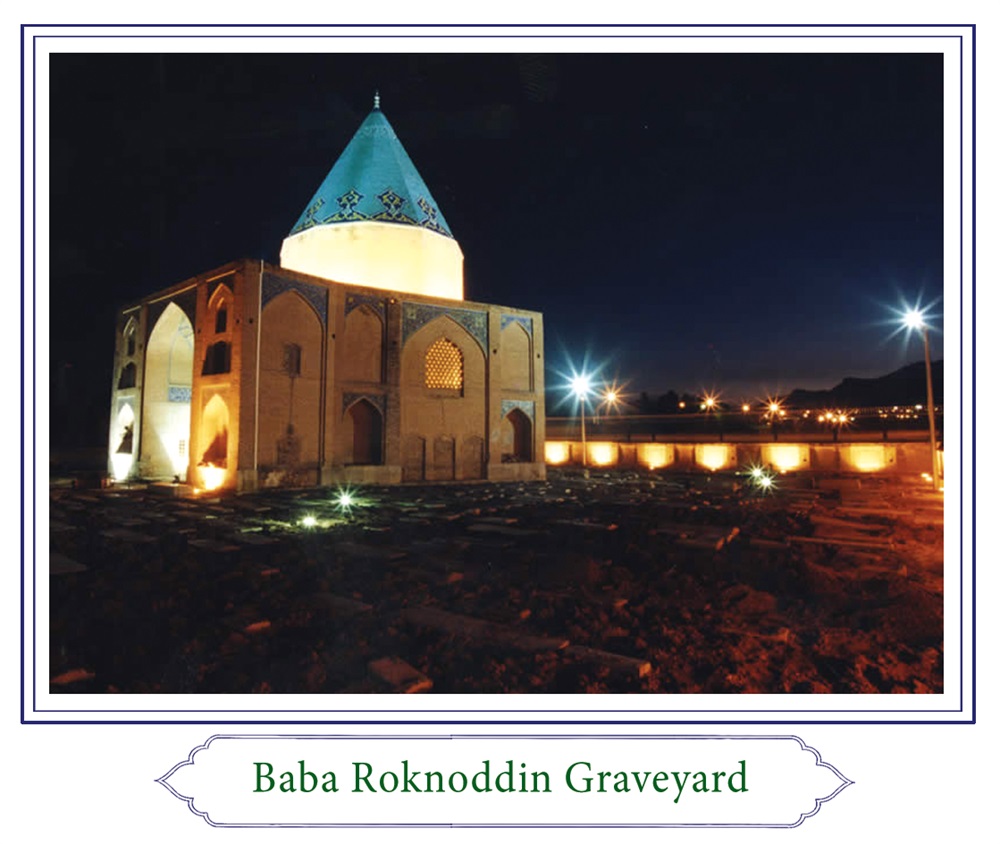
On the north side of the graveyard there were two other structures; one in the interior of the mausoleum building and the other outside. The interior building was known as ‘Chelleh Khaneh’ which was the place of worship and solitude. The exterior building had been a place that embraced the tomb of Ibrahim Rah-e-Nejaat. During the course of time the building itself was ruined, but the tombstone still remains. The Baba Roknoddin graveyard has been described in different history books as being located in very green surroundings and in the vicinity of a big mehmansarai, water reservoir and orchards. It was used as a resting place for travelers arriving in the city of Isfahan.
Most of these places were ruined with the passage of time. Added to this is the fact that some parts of the graveyard were destroyed by building of a city road called Sa’adat Abad' next to the site.
P: 40
Baba Roknoddin Shirazi
His actual name was Mas’oud Ibn Abdollah Beizavi and he was a learned mystic of the 8th century. He originated from Beiza in Fars. The date of his death carved on his tombstone is 796(AH). His approach in mysticism is attributed to the Suhrawardi chain lines. His religious sect is disputed; some suggest he was Shiite others a Sunni. However the inscription on his tombstone implies that the former is more realistic. Additionally, the fact that he was very much honored and given homage by the great Shiite scholars such as Sheikh Bahayee, Sheikh Majlesi I and Haji Kalbaasi. Also the fact that the twelve sided pyramid was built over his tomb signifies the fact that he may have been a “Twelver” (i.e. believe in twelve Shiite imams). His important work is ‘Nosoos al Khossos fi Sharh-ol-fosoos’ a recount of ‘Fosoos al Hekam’ by Ibn Arabi.
Image

It was narrated by Mohammad Taghi Majlesi that ‘once Sheikh and I were at his tombstone and suddenly Sheikh Bahayee went
P: 41
into a very special state and he pulled his garment over his head and was drawn into contemplation. Later I asked him the reason and he said he heard a voice from inside the tomb saying ‘Oh Sheikh! Think of yourself,’ meaning that his death was imminent. After that Sheikh did not participate in social life and worshiped until he died.
Mirza Hassan Khan Jaberi Ansari
Son of Mirza Ali, he died in 1376(AH), known as ‘Sadr-ol-odabba’, a master of literature, historian, researcher and literary figure. He learned from Sayyed Mohammad Bagher Dorche’ie and Akoond Kashi. He was the author of some important books; ‘The History of Isfahan and Rey and All the World’, ‘The History of Half of the World and the Whole World’, ‘The King’s Knowledge of the World’ and ‘The Shining Sun.’ He was among the renowned Koran experts as well as the constitutionalists of Isfahan.
Mulla Mohammad Ali Noori Mazandaraani
Son of Mulla Esma’eil, died in 1253(AH). He was a mystic and a scholar for some time. He traveled to India to purify his soul. After he returned, he isolated himself from society and wrote ‘Nokhbat-ol- Osool’ (Selected Principals), ‘Notes on Shavaaregh’ and ‘Notes on Mathnawi.’
Haj Mirza Javad Noori
Son of Haj Mulla Mohammad Ali, known as ‘Sheikh-ol-Ulama’
(Sheikh of scholars), died in 1323(AH). He was famous for being a religious faithful and a source of religious authority. He was a source of authority and Imam of the Darvaze No Mosque. His writings include ‘Night Prayer Dissertation’, ’Practical Religious Imitation Instruction’ and ‘Logical Jurisprudence’.
P: 42
Haj Mirza Baha’oddin Noori
Son of Mirza Javad, known as ‘Fazel-e-Noori’, died in 1343(AH). He was one of the elite and a literary man whose pen name was ‘Fazel’. He was one of the students of Mulla Mohammad Kashi.
Haj Mirza Mohammad Taghi Noori
Son of Mohammad Ali, died in 1329(AH). He was very skillful in interpreting dreams. It is said that he had forewarned Nasereddin Shah of his assassination.
Mulla Hasan Aarandi Na’eeni
He died in 1270(AH), a highly respected and honored learned man of his time. He was skillful in the logical and discourse sciences. His mastery in mathematics and mysticism made him an outstanding figure among his contemporaries.
When he was young he worked as a shepherd. Later on, under the guidance of Haj Mohammad Hasan Na’eeni he found a place in science. He explored many avenues of knowledge in across the physical and metaphysical sciences. It is said he had an intuitive knowledge of many sciences; however, he lived a very unadorned and pure life. He fasted every day of the year and lived in a very simple house. It seems, most of the time he had no money even to buy candles. Although he seemed to be very uneducated person his mastery of mathematics and theology was unparalleled. Some stories suggest he was treated as a poor man and pushed outside and even beaten by people.
Ibrahim Rahe Nejat
Died in 1368(AH), a journalist and constitutionalist of the time. He was responsible for publishing the ‘Rahe Nejat’ journal. He was a nephew of the Malek-ol-Motokallemin, one of the leaders of the Constitutional Revolution and was greatly influenced by him.
P: 43
Javad Majd Zadeh
Being a poet, with the penname, 'Sahba', and also the head of the Office of Archeology of Isfahan, he was one of the benefactors of the officials of Isfahan who were very effective in the renovation of the Baba Roknoddin Mausoleum and his desire was to be buried at the entrance to this. He published the Sarnevesht Newspaper for two years and being a man of literature he composed a collection of poems. One of his poems reads:
‘Though my heart is filled with nothing, just the nightly cries,
Our nightly weepings are of no effect in her heart,
What my heart seeks in my soul I know not,
It trapped itself in calamities,
Thus there is no regret of what was self imposed.’
Image

A single -Tomb Resting Place
This famous tombstone belonging to Foulad Ibn Shija’eddin Halvayee, a renowned mystic, who died in 959(AH), is located in the present telecommunication center in Feiz Street. Some believe that the reason for naming the graveyard Takht-e-Foulad was the presence of this oldest tomb in the cemetery.
P: 44
He must have lived in the time of Shah Tahmasb, the Safavid. The word ’Baba’ is used for Sufi learned scholars and men of wisdom and for people with special spiritual knowledge and power. These pious characters were referred to by people to solve their problems. After the death of Babas people usually built mausoleum over their graves and honored them with great respect. Baba Foulad’s fame was so great that many people in Isfahan considered themselves to be descendants from him. It appears that he lived in the reign of Shah Tahmasb of the Safavids.
P: 45
The reason for naming this Safavid era graveyard ‘Mir Fendereski’ is that, one of the greatest philosophers and mystics of 11th century of Islam and one of the founders of the Philosophical Schools of Isfahan was buried in this yard. This graveyard borders Dahesht Street on the north, the residential area on the east and the west, and to Darvish Abdol Majid on the south.
Image

A very old wooden door opens to the graveyard. Just above the door, the exterior side of the wall vaulted in plaster appears in light brownish simple color. The tomb has no memorial building over it because his desire was that he be buried in an open space
P: 46
exposed to direct sunshine. His tomb is located on a large platform, on the west part of this, exquisite writing (or Sols writing) has been inscribed. However the age of this graveyard dates back to sometime before his life. Some researchers believe that this graveyard was originally used as ‘Khanegah’ (Dervish Monastery). It is recorded by the French traveler ‘Chardan’ that this place embraced worship places and tombs.
There are a number of reasons that support the idea that the graveyard was a place for gatherings of the mystics and Sufis, including the calligraphic writing of Mir Emad of the Hafiz lyric, ‘The heavenly paradise is the corner of solitude of the Dervish.’; and the fact that this place was used by Mir Fendereski for worshiping and spiritual self-discipline.
Image

Some other reasons that date this place before the time of Mir Fendereski may be the fact that there is a room at the top part of the tomb. This room contains calligraphic writing by Mir Emad that dates the place to sometime before him. It seems Mir Emad
P: 47
was killed by the order of Shah Abbas in 1603(AH), while the date shown for the death of Mir Fendereski is 1628(AM). Therefore, the date of this calligraphic piece goes back to sometime before Mir Fendereski.
Another exquisite and unparalled piece of art in this graveyard is the calligraphic work of Mir Emad in the western room which contains a beautiful lyric form Hafez ‘The heavenly paradise is the corner of solitude of the Dervish…’ This has been implemented in plaster moulding. Other features such as very delicate vaulted works in brown colors displayed at the top part of the entrance to this graveyard as well as tombstone inscriptions can be seen. There are some little rooms around the graveyard. It is said that in one of these rooms in which the calligraphic works of Mir Emad in plaster works can be seen, was the meeting place of artists and calligraphers such as Mirza Reza Kalhor Khoshnevis ’the calligrapher’.
In the southern part of the graveyard there is a sacred drinking water reservoir decorated with tiles and containing a well inside it which provides the water. Also there is a cubic water stone that still remains perfectly intact though it dates back to the Safavid time.
Again, in the southern part of this graveyard, many rooms can still be seen that open to a network of vaults full of the graves of many people from the Bakhtiari tribe. Some of these were prominent political and military figures in the last decades. These include Hussain Gholi Khan Ilkhani who was a Khan Bakhtiari poet and literary man, among with some of his relatives and descendants. The gravestones here are finished very artistically.
P: 48
Mir Abol Ghasem Fendereski
Son of Mirza Beik Ibn Sayyed Sadroddin Mousavi Astar Aabadi, died in 1628(AH). He was a mystic scholar, literary poet, scientist and philosopher of the Safavid period. Together with Sheikh Bahayee and Mir Emad, he founded the Philosophy School of Isfahan. Some of his students included Agha Hussain Khansari, Mirza Rafi'a Na'eeni and Mulla Rajab Ali Tabrizi. His renown was so great that accounts of his life have appeared in almost all the sources pertaining to the period during and after the Safavids. He wrote many books, including ‘Dissertation in Alchemy’ and ’Notes on Indian Philosophy and Mysticism’. Also a poet, he wrote many pieces including the following two verses:
‘The skies with all these marvelous, pleasant and beautifully set stars on the exterior,
Have a face underneath manifesting what is in the interior.
If the face underneath becomes visible by the hands of ‘knowledge,’
Truly it will be the very essence.’
P: 49
Image

There are many strange stories about Mir Fendereski, some of which are the miraculous acts attributed to him. One of these is about a meeting he had with some religious leaders when he visited India. The Indians were trying to convince him that the reason why their worship places had not been destroyed after so many years in comparison to mosques, which were ruined much earlier, shows that their religion is founded on firm and godly believes, whereas Islam is not. Mir Fendereski retorted that if a Muslim were to utter the same words which they recite in a mosque in the Indian places of worship, the whole building would tremble. The Indian asked him to recite these words. After a long solitary prayer he uttered these words and suddenly the whole ceiling crumbled. This miraculous act inspired many Indians to convert. The fictional story of a lion escaping from the king’s cage and entering the place where he was meeting Sheikh Bahayee has also been portrayed on one of the walls of the Hasht
P: 50
Behesht Palace. This was later on copied by other artists for curtain painting.
Many writings during the Safavid period credit him with being a virtuous scientist and an explorer of spiritual boundaries. His mastery in mathematics was so extensive that many times he proposed several solutions and logical interpretations to one single geometrical question. Although he had a very close relation with the kings of the time, he often spent his time with the dervishes, the poor and the men of art. He was continually engaged in the process of purifying his soul.
Sayyed Rohullah Kashfi (d. 1382 AH)
His father was Sayyed Mahmoud Kashfi. The author the poem selection, 'Kashfi Gift', was among literary men and poets in Isfahan.
Abbas Beheshtian (d. 1408 AH)
He was an Isfahani historian who endeavored hard to publish the book ‘Part of National Heritage of Isfahan.’ Many considered him the lover of Isfahan and its monuments. Due to his persuasion, hard work and correspondence he saved many of Isfahan’s monument from ruin. Inscribed on his gravestone a piece from Hafez reads:
‘Who am I to be remembered by you, you are being so kind.
Oh you! The dust of your threshold is the crown over my head.’
Hussain Shahnaz (d.1358 AH)
He was the son of Sha’ban Khan Taarzan, the Sitar player. Although not as famous as his brother Jalil Shahnaz, who initiated many Iranian musical rhymes, this young musician who died young was one of the pioneers of Iranian traditional music in Isfahan.
P: 51
Mirza Mohammad Hussain Angha (d. 1308 AH)
This son of Reza Gholi Khan Homaye Shirazi, was called ‘The King of Poets,’. Being a man of literature, a mystic poet and a great calligrapher, he wrote many poems:
‘Who am I, a wanderer in life, bewitched,
A homeless one with a lost soul, the mind is deceased.
Depressed, the heart is, with the monestary, bring a glass,
Oh Saki! The heart is despondent with school.
Tell the minstrel to sing a fabulous song.’
Sayyed Mohammad Taaher Toyserkani (d. 1327 AH)
A highly respected scholar and scientist. On his graveyard it is written: ‘We shall not disgrace the concept of poverty and wealth. Tell the king that our sustenance is within our fate. ’
Darab Afsar Bakhtiari (d. 1392 AH)
Died 1971(AH ), a prominent Bakhtiari poet, who composed eloquent pieces about Imam Ali. He wrote poems both in Lori and Farsi. Of his poems reads:
‘Oh mates! What I learned from this mundane world,
The life here is naught but suffering and feeling sore.
He is ignorant who ties his heart to this lousy court.
What you get is no more than a load bearing.
If one asks who Afsar was, say:
Born in Bakhtiari with an insane mood, with no promising fate’
P: 52
Mirza Taghi Khan Sartip (d. 1303 AH)
‘Oh the second plato departed from this world’
Son of Mohammad Hashem, he was a medical doctor, a literary man, a researcher and a journalist. He published the ‘Farhang’ newspaper in Isfahan. He wrote many books including ‘Ganj-e-Shayegan’ (Treasury of Shayegan), about the geography of Khuzestan.

Kamaleddin Majlesi (d. 187 AH)
This poet and a scholar, whose penname was ‘Man of Solitude’ was the son of Nooroddin Majlesi. Below are some insightful verses from one of his poems;
‘Raise the curtain and let your shining face appear
To cause the moon and the sun in the sky to be withdrawn.
You are not only secured deep in my heart all my life,
You as well dwell in any insane heart.’
Darvish Abdol Majid Taleghani (d. 1387 AH)
He was one of the greatest artists in the history of Iranian calligraphy who came from the district of Taleghan. His early years in Isfahan were spent in poverty but he continued to acquire knowledge out of the great love and interest he had. He outclassed his contemporary masters in the techniques of calligraphy. His poetry consisted of two thousand verses and was signed with his
P: 53
penname ‘Majid’. Despite his early death, a number of valuable pieces of art, rarely found among the other calligraphers remain. One of the surviving remnants of his work is the calligraphy of Golestan-e Saadi, which is currently kept at Golestan
Palace Museum in Tehran. He wrote the following;
‘It is really unfair of you to push me out of the cage now,
Coz it was your cruelty that dropped my feathers and wings.
Last night, in my dream, I was asked about the banquet you hold.
Wrong, he was, I had no report.
Without you Majid looks to no salvation in paradise.
Anywhere you reside, I enjoy the most.’

P: 54
On the southern part of the Takht-e-Foulad where Flight University (the old airport) is located, there is a beautiful mausoleum belonging to the Safavid period. This little building was built by the order of Shah Soleiman Safavi in the memory of Mirza Rafi'a, who died in 1082 (AH).

P: 55
This monument takes the form of an octagonal double roofed structure. The dome is comprised of a pyramid shaped building decorated with different geometrical tiled shapes. The dominant color of the dome is white and on the neck of the dome there are two rows of tiles. On the first row the Ayat Al Kursi verses from the Qu’ran and the holy names of Mohammad and Ali have been written. On the second row, the attributes of God have been written in Constructor calligraphy style. On the main part of the monument, the names Mohammad and Ali have been written repeatedly in white calligraphy. In the area where the old airport is presently located there were many other graveyards where many important man and women were buried.
Mirza Mohammad Rafi' Tabatabayee Na'eini
He was known as Mirza Rafi'a. His ancestral roots go back to Imam Hasan and Imam Hussain. This scholar was an important philosopher in the time of Safavids. The masters who played formative roles in the acquisition of his knowledge were Sheikh Bahayee, Mir Fendereski and Mir Daamaad. He was the teacher of some great students such as Majlesi, Sheikh Hor Ameli and Sayyed Ne'matollah Jazaayeri. In his writings Majlesi praised him a great deal. His great works, include ' Devine Tree’ (It is about principles of religion in Farsi), ‘Notes on Kafi’ Principles’ and ‘Notes on Sahife Sajjadieh’.
Having a sense of poetry, the philosophy of his life is expressed in the following verses:
‘These people who are all worried about their own fate,
They cannot see themselves through their own eyes.
The world is a sea and masses are all waves.
Aimlessly
are running from here to there.’
P: 56
Next to the grave of Mirza Rafi'a, there were other graves that are likely to have been ruined as a result of airport building such as that of Mirza Yahya Modarres Bid Abady, son of Isma’eil who died 1349(AH). He was a poet, lecturer, theology teacher and Arabic Language literary man, who wrote the Matboo collection of poets.
P: 57
This graveyard of the Safavid era was developed after the burial of Agha Hussain Khansari in 1098(AH) by the order of Shah Soleiman.

This burial site is situated on the south of the Razi graveyard, the west of the Bid Abadi graveyard, and the east of th Ayatollah Khansari Street. The style of the building looks very attractive with a vaulted entrance and a two layer dome with silver coated tiles. The interior of the mausoleum has been decorated with plaster work and the walls are inscribed with calligraphic writings praising Agha Mohammad Khansari. In addition to this, religious paintings of Qajar period give spiritual air to the mausoleum. These include an imaginary painting of Imam Ali and his two sons as well as paintings of the tragic events of Karbala. This burial
P: 58
place is famous for its inclusion of so many high ranked religious scholars. Most of the gravestones in this burial place are made of very valuable stones with different calligraphy styles. Outside the main monument just next to the gate of the graveyard, there is a smaller mausoleum topped with a tiled dome. This little building contains the grave of Haj Mohammad Taghi Naghshine, a benefactor and repairer of the Mosalla Mosque and other important places.
On the west side of the Khansari graveyard, the graves of descendants of the Khoei family included Mulla Mohammad Shafi’ Khoei(died 1843 AH) still remain.
Agha Hussain Khansari
Son of Jamaleddin Mohammad Khansari, died 1098(AH), known as ‘The Master of the Whole of the Whole.’ He was known as ‘Mohaghegh-e-Khansari’ and was as a prominent Shiite scholar.
He was a student of important figures such as Mir Fendereski and Majlesi. His early years very also spent in poverty and it is said that in winters he had no clothes to keep himself warm and he had to wrap himself in a blanket and keep walked to stay warm. However later in his life he became so close to the king that on one occasion he became the deputy of the king while he was on a journey. His skills in philosophy, law and Islamic principles were known and he was considered the scientific and religious authority of his time. Being an active authority he left many works behind such as ‘Masharegh-ol -Shomoos’ (The Easts of the Sun) which are detailed explanatory notes on the ‘Ketaboddoroos’ of ‘Shahid Awal’ and ‘Notes on Theologies of Treatment’. He also wrote ‘Notes on Explanations of Abstractions’ and translated ‘The Sahife Sajjadeeye’ of Imam Zein-ol- Abedin.
P: 59
The symbolic verse signifying the date of his death is ‘Today two angels said: Oh Hussain!’ and in Arabic it is ‘Come in to my paradise.’ This verse is attributed to him:
‘Oh early morning breeze! You are so delightful,
From the sole of which lover you are coming so cool?
Tell me the truth of your origin.
Your touch on my eyes is so familiar.’
Agha Jamaleddin Mohammad Khansari
Son of Agha Hussain, died in 1122(AH), a religious leader, philosopher, narrator, and jurist. His knowledge of physics and metaphysics was comprehensive. He was highly respected by the king of the time Soltan Hossein and was very intelligent and had a great enthusiasm for acquiring knowledge. The story is told that in his youth, he was met by Feiz Kashani. When Feiz was on the way to Mecca, he met Jamal and asked him a question which he was unable to answer him and Feiz told him that it was a pity that he could not be as wise as his father (Hossein Khansari). This incident gave Jamal determination to commit himself to study. After Feiz returned from Mecca and visited Jamal again, he was surprised to see how knowledgeable Jamal has become. Jamaleddin Mohammad Khansari wrote many books including ‘Translations and Notes on Ghorar O Dorar’, ‘Notes on Explanation of Lom’a’, ‘Translation of Meftahol Fallah’ (written by Sheikh Bahayee) and ‘Origin and Resurrection’.
Mulla Massih Kashani
Died in 1120(AH), a poet whose pen name was ‘Saheb’. He translated ‘Soleimanieh Present’.
Mulla Mohammad Bagher Fesharaki
Son of Mohammad Ja’far, died in 1314(AH). He initiated Komeil Prayers at Isfahan. Being a religious scholar, he wrote thirty different sources including ‘The Topic of Discourse’ and ‘The Manners of Shari’a.
P: 60
Mulla Hussain Ali Toyserkani
The son of Norooz Ali, a researcher and a devoted jurist died in 1286(AH), He wrote the valuable series of ‘Kashf-ol-Asrar’(The Discovery of the Secrets), ‘Nejat-ol-Mominin in Religious Principals and Manner ’, ‘Practical Dissertation’ and ‘The Closing Discourse’. He had many students, including Mulla Mohammad Kashani and Mirza Abdol Ghaffar Toyserkani.
Mirza Rahim Sheikh-ol-Islam
Died in 1249(AH), this highly respected scientist was one of the descendants of Mohaghegh Sabzevari. The calligraphic inscription should be noted on his precious gravestone.
Mirza Heidar Ali Majlesi
Son of Mirza Azizollah, died 1214(AH), a great scholar of the Zandieh Era and the early years of Qajars. He wrote ’Tazkerat-ol-Ansaab’ which is a genealogy of the Majlesi family in Isfahan.
Sayyed Mohammad Shafi’ Jazaayeri Shooshtari
Died 1274(AH), a researcher and scholar in the science of Influential Dignitaries. He wrote ‘Kashf-o-Riaz’(in four volumes) and explanation on ‘Naghd-oRejal’.
Mulla Mohammad Sadeq Peikani
Son of Mulla Ahmad, died in 1290(AH), one of the students of Sheikh Morteza Ansari. It is suggested his body was among the eternal bodies because while burying a dead body next to his grave, his body did not seem to be decomposed.
Mir Sayyed Ali Tabatabayee
Died in 1306(AH), a researcher in religious studies and the author of a series of books called ‘Osool-ol-Feqh’ and ‘An Explanation of the Guidelines of Sheikh Hor Amoli’. He was a student of
P: 61
Mohammad Ja’far Aabadehee and Sayyed Asadollah Shafti Bid Aabadi. He was the father of Sayyed Abol Hasan Broujerdi who was buried in the Broojerdi graveyard.
Haj Mirza Zein-ol-Abedin Ashraf-ol-Kottab
Son of Mohammad Taghi, died in 1295(AH). He was a very skillful calligrapher and his seventy calligraphic writings of the Qur’an are considered to be a miraculous achievement. He died at the age of one hundred and ten and was said to be as active and energetic as when he was young.
Mirza Hasan Ali Majlesi
Son of Abu Taleb, he died in 1227(AH), one of the descendants of Majlesi. He was a specialist in history, Arabic literature, Hadith, law and principles of Islam.
Sheikh Asadollah Fahami
He died in 1372(AH). For twenty years, he was the preacher and reciter of the Komail prays at the Khansari graveyard. His will was to be buried somewhere between the graves of Agha Hossein Khansari and his son Jamal. It is said that some people dreamed about him and saw visions of the angels greeting him in the nextworld.
P: 62
This graveyard belongs to the Safavid period and includes a cross shaped mausoleum which was built in the memory of the great Quranic interpreter, Sayed Razi oddin Mohammad Taghi Shirazi who died 1113(AH).
The graveyard gained importance after the entombment of Mirza Mohammad Bagher Ameli who was the Imam of the graveyard in 1123(AH). This graveyard includes the graves of Mirza Mehdi Nayeb-o-Sadr, a prominent scholar of the time and Mir Sayyed Ahmad Alavi, who was a student and son in law of Mir Daamaad.
Today, there are no remains of these graves. This graveyard is located in Ayatollah
Khansari Street and located on the southern part of the Mosalla Mosque. The following people are buried here;
Agha Sayed Razioddin Mohammad Hussaini Shirazi
This author of the important sources ‘The Light of the Lights’ and ‘The Lantern of Mysteries,’ which is an interpretation of Quran, died in 1113(AH).
Feiz Kashani and Sheikh Hor Ameli were prominent students of his. His tombs are respected and considered blissful by some people in Isfahan.
Sayyed Mohammad Bagher Pishnamaz
Son of Sayyed Ali Reza, he was the Congregational Prayer Leader of the Abbasi Mosque. He obtained his Religious Authority Permission from Allameh Majlesi, Ayatollah Khansari and Sheikh Hor Ameli.
Mir Mohammad Mehdi Nayeb-o-Sadr
He was a prominent scholar who had a comprehensive knowledge of many sciences. According to Akhoond Gazi, any books that he read, he would write important notes on them.
P: 63
Mir Sayyed Mohammad Darbe Imami
Son of Sayyed Abdo-ol-Wahab Hussaini, died in 1359(AH). He was a virtuous scholar and a prominent lecturer at the Theology School of Isfahan. He was buried in his grandfather’s grave with the permission of AyatollahHaj Sayyed Ali Najaf Aabadi.
Mirza Hussain Aarefche
This famous Isfahani preacher, narrator and poet died in 1322(AH). He wrote ‘Zad-ol-Aarefeen’ (Provision of Mysteries) and ‘Anis-ol-Wa’ezeen’ (A Companion to Preachers).
Mohammad Ali Aarefche
Son of Mirza Hussain Aarefche, died 1380(AH). He was a poet and a religious reciter who lived a very poor but virtuous life. He wrote ‘Tazkerat-o-Sho’araa’ (Biography of Poets) and ‘Hediat-ol-Ma’soomeen’ (Present by the Infallibles).
The following poem belongs to him:
‘Oh God! Now that I’m dead, I’m bringing you four gifts which are not in your treasury:
Non-existence, need, poverty and death.
In my outmost of wretchedness, oh you the beneficient!
I have brought nothing but the tears of my eyes and a heavy sigh.’
Sayyed Ahmad Ibn Sayyed Morteza Shirazi
Died in 1126(AH), a highly respected religious scholar.
Agha Sayyed Ali Asghar Hussaini Barzani
The son of Sayyed Mohammad Hussain, died in 1395(AH). He was a scholar of jurisprudence and a highly ranked lecturer of the Sadr School. His teaching in ‘Laws of Principles’ were unique to him. He
P: 64
attended as a student the teaching sessions of Sayyed Mohammad Bagher Dorche’ee and Ayatollah Zia’oddin Aaraqi.
However, for some of the graves belonging to the following scholars there are no signs of existence:
Mir Sayyed Ahmad Alavi
Son of Sayyed Zein-ol-Aabedin, died in 1054(AH). He was given permission to be the Religious Authority from Mir Daamaad and Sheikh Bahayee. He wrote ‘Notes on Ghabasat (Flames) by Mir Daamaad’, ‘The Delicacies of the Invisible World’, ‘Manaahej-ol-Akhbar fi Sharhe Estebsaar’ (The Ways to Reporting the Explanation of dreams) and ‘Sharhe Shafa’.
Sayyed Abd-ol-Hasib Ibn Sayyed Ahmad Alavi
Died 1121(AH), he wrote the ‘Sedrat-ol-Montahaa’ and ‘Menhaaj-o-Share’een’.
P: 65
This building dates to the final years of the Safavid period and is attributed to Mir Mohammad Esma'eil Khatoon Abadi, who died in 1116(AH). He is considered the ancestor of many people living around the district called Paghal'e who are actually descendants of the Prophet Mohammad. This graveyard stands alone in the Takht-e-Foulad complex in that it consists of a mosque, school and graveyard.
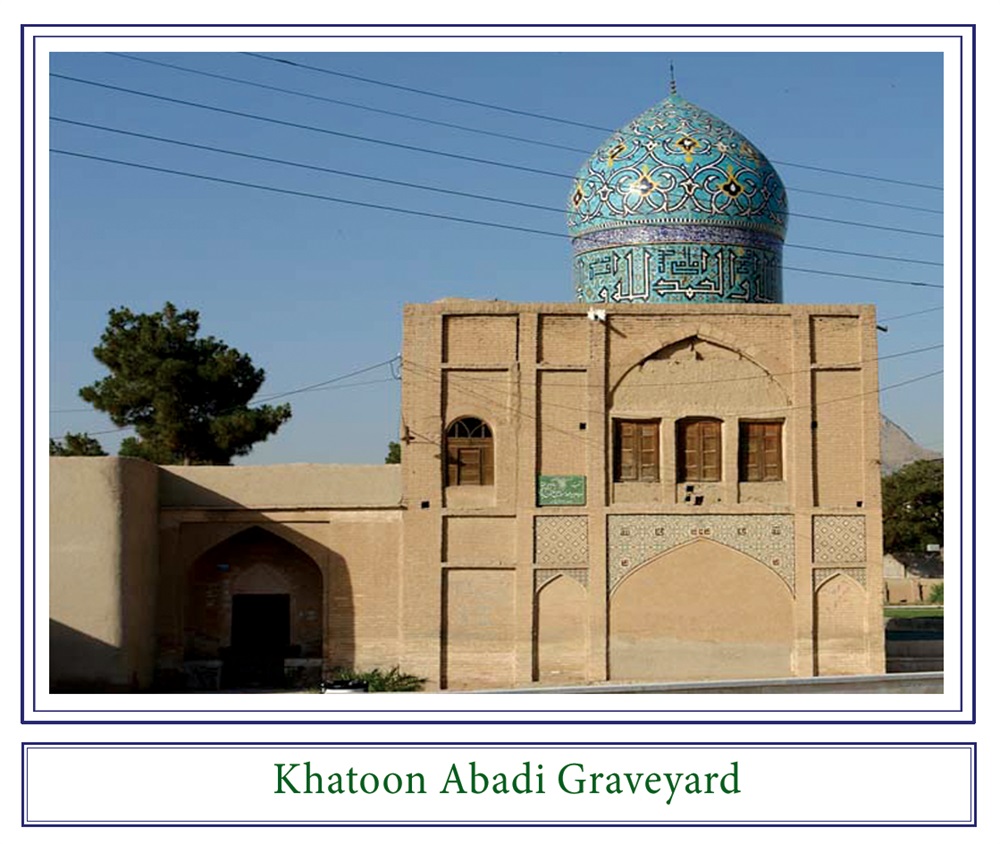
The founder of this graveyard is Mir Mohammad Esma'eil Khatoon Abadi, a prominent scholar and mystic of the Safavid time. He resided in his self-built school and taught Qur’anic sciences there and finally was buried in the same place. This
P: 66
school was later transformed into a graveyard were numerous members of the Khatoon Abadi family have been buried.
The structure itself is composed of several floors. The cellar contains the grave of Haj Mirza Hussain Nayeb-o-Sadr a social benefactor and a scholar in Isfahan. The ground floor was the place of worship of Mir Mohammad Esma'eil. There are also a number of rooms around the graveyard. The second floor consists of a spacious three porch room. The top floor includes a very elegant tiled dome which was built with the utmost care, delicacy and style, bringing tranquility and smoothness to the eyes. This beautiful dome structure resembles the famous Chahar
Bagh School dome. Verses of the Qur’an in white are elegantly inscribed around the rim at the foot of the dome, on a turquoise background. The pear like dome is five metres in diameter and is decorated with little sky blue tiles. It appears fabulously attractive to every viewer. The southern part of the graveyard includes a chapel in which a mehrab can be seen. This place is vaulted with very simple plaster work. Three interconnected mausoleums may be seen on the eastern side of the graveyard. The middle one belongs to Mir Mohammad Esma'eil and the other two to many important members of Khatoon Abadi family.
Mir Mohammad Esma'eil Khatoon Abadi
Son of Mir Mohammad Sadegh, died in 1116(AH), He was a supreme jurist and a prominent scholar and interpreter of the Holy Qur’an. He wrote many sources including 'The Grand Interpretation' (in fourteen volumes), 'Notes on Osool-e-Kaafi’, 'Notes on Sadooq Principles' and 'Schedule of the Faith'.
According to Mohaddese Ghomi, Mohammad Esma'eil was a full master of law, principles, hadith, interpretation, discourse and
P: 67
philosophy and taught in the Abbasi Modern School for fifty years after he spent some time as a student of Mohammad Taghi Majlesi and Mirza Rafi'oddin Na'eeni. After attaining his seventieth year, he lived in isolation at the Chahar
Bagh School. It is said that he lay in a self-dug grave in his room before he wrote 'Notes on Kaafi Principles' and interpretation of the Qur’an.
Mir Mohammad Bagher Khatoon Abadi
Son of Mohammad Esma'eil, died in 1127(AH), known as 'Mulla Baashi.' He was a highly ranked religious leader in the time of Soltan Hussain Safavi who was martyred by his opponents. He has left many sources and translations. His eloquence in preaching was renowned. He was responsible for teaching and advising Soltan Hussain.
Haj Mirza Hussain Nayeb-o-Sadr
Son of Sayyed Mohammad Sadeq, a grandson to Abol Ghasem Modares, died in 1326(AH). He was a religious leader in the Qajar time and a prominent student of Sheikh Morteza Ansari. He was entombed in the cellar of the main structure of this graveyard.

Haj Sayyed Mohammad Hussain Khatoon Abadi
Son of Mirza Mahmood, died in 1400(AH). His pen name was 'liberated', a poet and a genealogist of his time who wrote a collection of poems and other books.
P: 68
Located south of this graveyard is the Shahshahani graveyard and on the north residential areas and to the west Feiz Street.
This graveyard was designed and constructed in the memory of Mulla Mohammad Ibn Abd-ol-Fattah Tonekaboni (known as ‘Fazel Sarrab’), who died in 1124(AH) in the time of Shah Soltan Hussain of the Safavids. Inside this graveyard stands a brick built monument built in octagonal shape topped with a cap like dome. This design is unusual in that many structures and monuments of the Qajar period had fenced interiors, with a network of bricks. Surrounding the different sides of this building are orchards which can be accessed through different entrances. This monument was renovated in 2003.

P: 69
Mulla Mohammad Ibn Abd-ol-Fattah Tonekaboni
Died in1124(AH), he was a researcher, narrator, and a religious philosopher of the late Safavid period. He was trusted by Shah Soleiman and Shah Soltan Hussain as one of the religious authorities as he gave a solid and rational interpretation of religious principles. He lived in the time of Allameh Majlesi and Sayyed Ne’matollah Jazayeri, and he was one of the prominent students of Agha Hussain Khansari and Mohaghegh Sabzevari.
He wrote many books, such as ‘The Savior Vessel’(on the issue of the Imamate), ‘The Light of Hearts’ (on the Imamate) and ‘Notes on Selected Discourse’.
Mirza Mohammad Mehdi Joobare’ee
The son of Mulla Mohammad Saleh, died in 1325(AH). He was the grandson to Fazel Sarrab and is buried next to him.
Mirza Mohammad Mehdi Khan Mazandarani
Son of Mohammad Hasan Khan, died in 1247(AH). He was a poet (pen name: ‘Shahne’) and literary man of the Fath Ali Shah era.

Sayyed Ata’ollah Darbe Imami Hussaini
Son of Sayyed Mohammad, died 1387(AH). He was a virtuous scholar. He was one of the students of Akhoond Kashi and Sheikh Mohammad Reza Najafi.
P: 70
Ostad Hussain Khatayee
Died in 1395(AH), he was a miniaturist artist who was trained by one of the famous miniaturists of Isfahan, Haj Mirza Emami. He was skilled in many arts, such as ornamenting, gold writing, inscribing and so on. Due to this reputation, he was asked by Allameh Ameeni (author of Al-Ghadeer) to take the responsibility for the repair, decoration and coverage of a Kufic style calligraphy of Quran on gazelle skin.
Mirza Hasan Aatash
Son of Haj Mirza Agha, died in 1349(AH). He was a poet who was the author of a collection of poems. This verse inscribed on his gravestone signifies the date of his death:
‘The inner side of Hesam following history said:
Our flames died away though too soon."
Lady Hajieh Maryam Salehi
Died in 1389(AH), she was a very gifted poet as well as a woman of literature. She was a daughter of Mirza Mehdi who started writing poems when she was twelve. The verse signifying her death inscribed on her gravestone reads: “The eternal heaven became the residence of Maryam.”
P: 71
Although the construction of the mausoleum in this graveyard took place in 1417(AH), the post Islamic Revolution era, the tomb itself dates back to 1131(AH). These were
final years of disorder and chaos of the Safavid era, when Baha’oddin Mohammad Fazel Isfahani died. His tomb was not marked because of the political disturbances of the time. The monument contains the remains of another grand Ayatollah of the 13th century, namely, Mulla Mohammad Na’eeni (famed as Fazel Na’eeni) and for this reason, the graveyard is known as ‘Two Fazels Graveyard’.

The monument is a four sided building topped with a cap like dome, erected on a square platform. It includes a small room on top of which stands a turquoise dome. The dome elegantly finishes of the appearance of this simple structure. Geometrical patterns of yellow, white and black display themselves on an azure like background. The same geometrical patterns have been installed on the brick background of the rim at the bottom of the dome. On the top parts of the four sides of the structure a fantastic piece of calligraphic art written by Master Habibollah Faza’eli can be seen. These Quranic verses praise science and scientists.
P: 72
The Fazel Hendi graveyard on Feiz Street, is located on the west side of Golestan-e-Shohada and on the south of Mulla Esma’eil Khajoo’ee Yard.
Baha’oddin Mohammad Fazel Isfahani
Son of Tajeddin Hasan, died in 1131(AH). He was known as ‘Fazel Hendi’ (Indian Scholar) after accompanying his father on a journey to India. His father was also a dignitary in the time of Shah Soleiman and Shah Abbas II. Baha’oddin was educated by his father and by Majlesi. It is said that when he was ten, he used to teach the important source ‘Motawal,’ when he was twelve, he started to write and teach, and when he was thirteen, he was engaged in teaching the rational and traditional sciences. Although he lived a very poor life, he used his extraordinary skills to write some of Shiism’s fundamental sources. These include ‘Khaghani Philosophy’, ‘Al Menhaj-o-Saviah’ and ‘Kashf-ol-Lesam’(notes on principles of Allameh Helli), which is one of the best sources for Shiite jurisprudence.
Mulla Mohammad Na’eeni
Died in 1263(AH). This highly respected scholar was the brother in law of Mohammad Ebrahim Kalbaasi, a renowned religious figure. He was known as ‘Fazel Na’eeni’ and was the congregational prayer leader of Hakim Mosque.
Haj Sayyed Yousof Khorasani
Son of Sayyed Mohammad Hussaini, died in 1247(AH). He was a comprehensive religious jurist. He wrote many books such as ‘Al Kawakeb-o-Zia’eeye’ (The Shining Stars) which are notes on the selective principles of Sheikh Bahayee.
P: 73
Sayyed Mohammad Javad Khorasani
Son of Sayyed Mohammad Reza died in 1352(AH). He wrote ‘His and His Father’s Biography’ and ‘A Dissertation in Dream Interpretation’. It is that he was one of those selected dignitaries who were honored to meet Imam Mahdi.
Agha Sayyed Mohammad Reza Khorasani
He was the son of Haj Sayyed Javad, died in 1397(AH). He was a researcher and a scholar and the Dean of the Isfahan Theological School as well as the founder of Sadr School Library located in Isfahan Grand Bazzar.
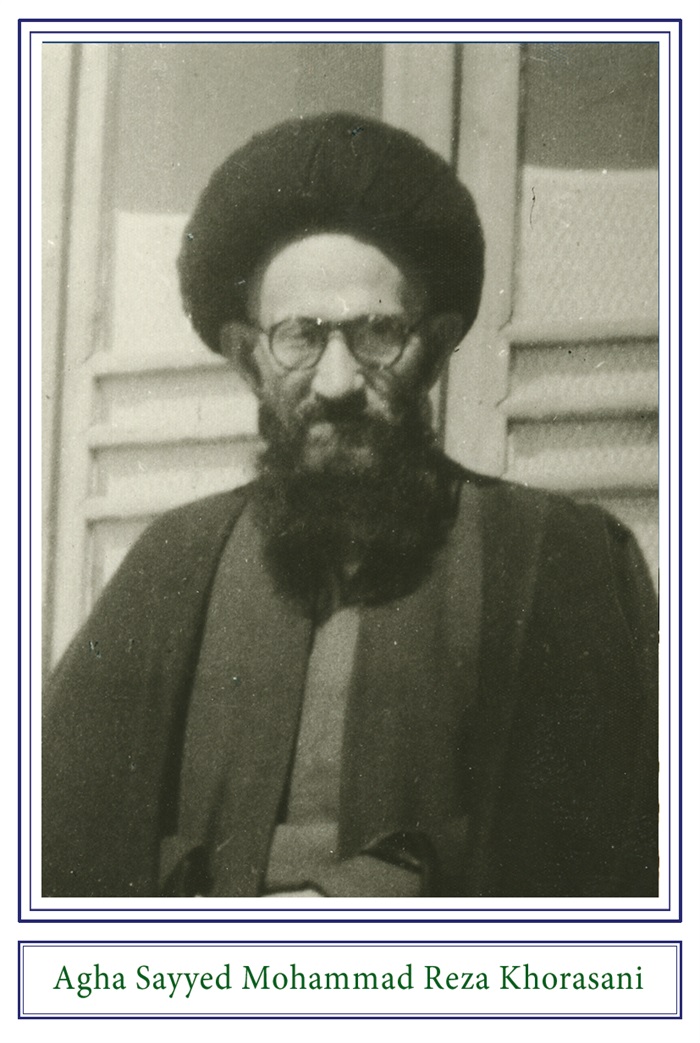
Haj Sayyed Ali Naghi Mousavi Zanjani
He was the son of Mirza Mohammad Ali. The date of his death is 1328(AH). He was a renowned scholar and a religious leader of Isfahan.
Mir Mohammad Hussain Hussaini Mir Mohammad Sadeqi
He died in 1288(AH) and was the brother of Mir Sayyed Hasan Modarres.
P: 74
Haj Mulla Mohammad Sadeq
He was one of the mystic religious scholars who died in 1264(AH). His grave was once considered sacred to needy individuals.
Haj Sheikh Abdol Hussain Mahallati
Died in 1323(AH), the author of twenty six different books and sources in theology, literature and law including 'Notes on Sheikh Ansari’s Dissertation' and 'Moghtanam-o-Dorar' (Worthy Pearls).
Agha Sayyed Zein-ol-Abedin Tabatabayee Abarghooyee
He died in 1372(AH). He was one of the prominent students of Sayyed Mohammad Bagher Dorchei and Akhoond Kashi and sheikh Abdul Hussein Najafi. He was known as a learned mystic and wrote some valuable pieces including 'Velayt-ol-Motagheen' (the Divine Rule of the Believers). In his life time, he dedicated himself to solve people's problem, and also following his death, his grave was a place for those who sought solitude and peace. He wrote the following verse:
'There is no way but patience to bear calamity,
No way but to surrender to the mystery of fate,
Seeking salvation from the deadly waves of incidents,
No way but to seek refuge in God through the Prophet and his descendants.'
Mulla Mohammad Ghombavani
He was the son of Mohammad Sadeq, who died in 1255(AH).
Mulla Hussain Zia Isfahani
He died in 1265(AH). He was a descendant of Mulla Esma'eil Khajooyee. He was a prominent figure in astronomy, geometry, arithmetic, and master of calligraphy as well as a poet. Some of his typical works can be seen in Khansari and the Sheikh Mohammad Taghi Razi Graveyards.
P: 75
Sayyed Mohsen Mir Mohammad Sadeqi
Mir Mohammad Bagher, he died in 1328(AH). He was a close relative to Mir Sayyed Hasan Modarres. He wrote the books; ‘A Dissertation in the Principles of Religion’ and ‘A Dissertation in Contract Terms’.
Sayyed Ali Khorasani
Known as ‘Jihad Akbar’, son of Sayyed Ja’far, died in 1365(AH). He was the editor of the newspaper ‘Jihad Akbar’ which was published during the time of the formation of the constitution in Isfahan. The writing on his gravestone and the verse, symbolizing the death date reads:
‘No one went to paradise unless accompanied by Jihad Akbar.’
Sayyed Hashem Khorasani
He died in 1366(AH) and was known as ‘Jihad Minor’. He was a Constitutional Revolution activist.
Mirza Mohammad Hussein Modarres
He died in 1402(AH). He was a learned literary man as well as a skilled physician. His penname was ‘Ghane’ and several of his works include ‘A Collection of Poems’ and ‘Paradise Tree’ (Shajara Tooba). He was the nephew of the famous ‘Ayatollah Modarres’.
Mir Sayyed Mohammad Ali Shahshahani
The son of Abdol Samad, died in1265(AH). He was a student of Haji Karbasi(Kalbasi) and Mojahed Karbalaa’ee.
P: 76
Mulla Mohammad Esma'eil Khajooyee was among those who revived philosophy and logic in Isfahan after it was aggressively destroyed by the Afghan's. He educated many scholars in this period, considered a transitional stage between the Safavids and Qajars.His hard efforts caused the enrichment of philosophy in the time of Safavid and made it
possible to be conveyed to the Qajar period. The graveyard is situated within the Lesan-ol-Arz section of Takht-e-Foulad along the western side of Feiz
Street. The mausoleum attributed to Mulla Esma'eil Khajooyee was erected over his gravestone. Its architectural style is modern and it is decorated with ornamental bricks laid on concrete. This graveyard is significant in that many of those buried here were philosopher and Hekma in Isfahan.
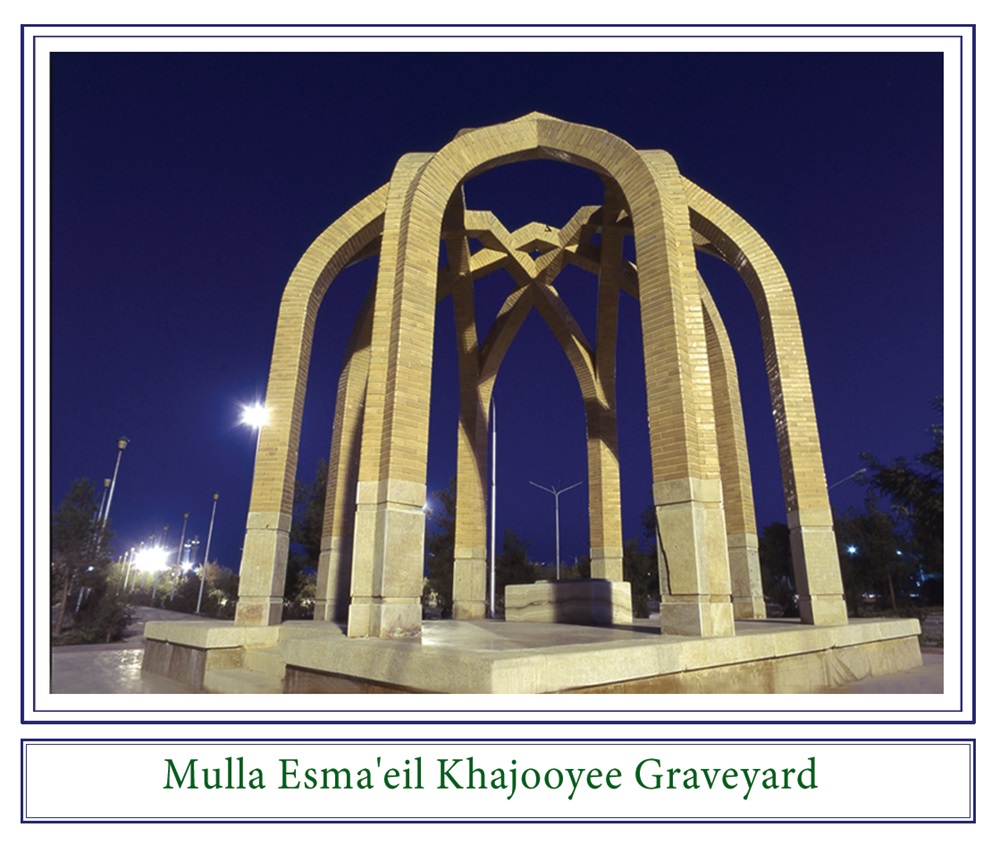
P: 77
Mulla Mohammad Esma'eil Khajooyee
The son of Mohammad Hussain died in 1173(AH). He was one of the greatest scholars and jurists in the time of Afsharieh. He authored more than three hundred different sources and books across a variety of academic disciplines. His lived during the Afghan's bloody attack on
Isfahan which drove him to write many great books and sources. This prominent religious scholar was highly respected by Naader Shah Afshar.
His many high ranking students include Mulla Mehdi Naraghi, Agha Muhammad Bidabadi, Agha Mirza Abulghasem Modarres Isfahani. This highly respected religious scholar was in real love with the descendants of Fatima (pboh) and authored many writings on their life accounts.
Haj Mohammad Hasan Kalbasi
He was the father of the famous religious intellectual and clergyman Haj Mohammad Ebrahim Kalbasi and a companion of Agha Mohammad Bid Aabadi. He was also the grandfather of the famous Mirza Abol Ma'ali Kalbasi.
Mulla Esma'eil Darkooshki
He was the teacher and the master of Mulla Mohammad Kashi and Jahangir Ghashgha'ee.
Mirza Mohammad Shams-ol-Kottaab
The son of Mirza Abol Ghasem Khajoo'ee died in 1367(AH). He was a great calligrapher in the different styles of 'Naqsh, Sols and Roqa'. He trained many prominent artists including Sheikh Mohammad Reza Hesam-ol-Va'ezain. Some of his master pieces are currently held in different museums across Iran.
P: 78
Mohammad Hussain Molavi
He was the son of Mulla Ali Khansari and died in 1366(AH). He was an important publisher and a book seller who contributed to Shiite literature by his work. He also wrote important sources such as 'Interpretation of Mullavi ', 'Notes on the Quran' and 'A Guide to Locating Quranic Verses'
Mulla Mostafa Ghomshe'ei
A prominent religious academic of the Qajar time who died in 1215(AH). In opposing the Sunni approach to Islam, he took part in many constructive discussions with the Sunni scholars. He was highly respected by the Qajar king. According to the decree of the king his body was reburied in the holy city of Najaf.
This graveyard also contains many other famous dignitaries including Agha Mohammad Esmaei'l Khajoo'ee II; Mulla Abdollah Ezhe'ei (the son of Mulla Ali Akbar, a comprehensive jurist and philosopher); Mulla Ali Mohammad Ezhe'ei (died in 1332 AH, a man of literature and poet with a penname 'Sharifi' and the author of 'A Selection of Ethics and Manners'. Work in Manner and Ethics'); Mulla Mohammad Ebrahim Jadali (a great religious scholar in philosophy who died in 1199AH); Saayed Mohammad Hussain Dorche'ei (the brother of the famous scholar Saayed Mohammad Hussain Dorche'ei); Sheikh Mohammad Hussain Najafi Sede'ei (a learned scholar and an esteemed religious jurist of Khomeini Shahr of Isfahan); Mulla Abdollah Abel Hasan and Sheikh Ahmad Zanjani, the author of 'A Book on Discourse' and 'Writings on the Difference between Miracles and Magic’.
The west part of Takht-e-Foulad has a special place in the history of Isfahan. Here, there is a grand congregational place for praying that used to be utilized for other puposes too, including political decision-makings such as announcing decrees and orders of the state to the people of the time, as well as informing people of the
P: 79
most recent political and social events. However, the most important function of the place included religious gatherings and ritual services. The origin of Mosalla Mosque most, likely, dates back to the Safavid period and even before. Prior to this time, however, there were so called ‘local mosalls’, used in different parts of the city, which lose their importance with the expansion of the city towards south. In the Safavid era, the place was used for holding ‘Fitr’ and ‘Ghorban’ festivals.This place continued to be used for festivals until recent years by some ‘ulamas’. There are remains of a mosque built in the Safavid period, which had been founded on the remains of a mosque built in the Qajar period.

The Mosalla burial site geographically borders the Agha Hussein Khansari and Sheikh Mohammad Taghi Razi graveyards in the east and Sahab Rozat Graveyard on the south, and a large burial site in the north. This burial site is classified into three sections:
P: 80
This graveyard had been used for burials since the 11th century till very recently. The area is usually featured for having a stone lion in its area.
Mirza Mohammad Bagher naghash Bashi Semiromi
Died in 1351 (AH), pen named as ‘Sedghi’, an artist, a poet, and a literary figure, he was known for his art of actualizing live looks and their complexions and textures. His paintings of sunsets are illustrious.
Abbas Majnoon Sichani
Died in 1367 (AH), a literary poet, he wrote many poems, some of which have been published as ‘Letters of Majnoon’. The verse signifying his date of death reads:
The heart of our ‘Majnoon’ was more frantic,
So narrated the book of History.
Mirza Mahmood Tabrizchi
Died in 1382(AH), son of Abdul Wahab, he was one of the eloquent poets of the 14th Century. Some of his poems have been published under the title, ‘Treasuru of Happiness’. One of his poems reads:
His hand was raised by the hand of the ‘Apostle’ on the Day of Ghadir,
The order of ‘the Lord of Universe’ was for him to be ‘the successor’
Congratulations came from Him to the Holy book,
Truly, by Him, the whole universe moves because of him.
P: 81
Mullah Geda Ali Ghari
died in 1134(AH), son of Abulfath, he was among the Safavid clerical scholars who authored a book called ‘the Pearls of Koran’.
Sayyed Rahim Avazeh Khan
Died in 1342 (AH), he was the most prominent Iranian musician in his own time. He was unequaled for his talent, taste, and style in singing for ceremonies. Some isfahani singers such as Adib, Taherzadeh and Taj Isfahani are the followers of his school of music. He was the last musician who had the knowledge of the very secrets of the old traditional music.
Haj Mirza Hussein Modarres Kahangi
Died in 13676 (AH), son of Sayyed Mohammad Ebrahim Tabatabai, he was a righteous and honorable clerical scholar who learned his knowledge from such dignitaries as Mirza Abul Maalii Kalbasi, Agha Mohammad Hashem Chaharsooghi, Akhoond Kashi, and Jahangir Khan. He rached the highest stage of knowledge and became a ‘mojtahed’. He was enequaled in self-disciplined practices and purification of soul. He authored many academic publications including, ‘Taghrirat Feghhi’ (a book on jurisprudence) and ‘Hedayt-ul-Wara’. There is a story narrated about his visioned visit with Jahangir Khan in a book titled ‘the Works of hakim Sahba’ by Mohammad Reza Ghomshehi.
Just at the foot of the northern part of Mosalla Mosque, there is a rather large cemetery, a small part of which belongs to the noble family of Sadat Beheshti who were famed for their piety, academic standing, and good deeds. They had been living in Isfahan since the 10th Century and were buried in this resting ground. The first most famous deceased of this family was Mir Mohammad Reza Beheshti whose name ‘beheshti’ (from
Paradise)came after Afghans’ occupation of Isfahan, during which many scared, poor
P: 82
people took refuge in his house and gave him the title ‘Beheshti’. Many of the graves were ruined in the course of time and not many have remained.
Agha Mir Mohammad Reza Beheshti:
died in 1195(AH), son of Mir Mohammad Hadi Hosseini, he was a pious and a highly respected cleric who lived in the last years of the Safavid time, as well as in the Afshari, and Zandiah periods.
Agha Mir Mohammad Reza Beheshti
died in 1256 (AH), son of Mir Abdul Baghi, he was a pious scholar and a prominent member of Beheshti Family.
Mir Mohammad Sadegh Beheshti
died in 1308 (AH), son of Mir Abdul Baghi, he was a comprehensive jurisprudent and cleric scholar who was pen named as ‘Saman-ul-Zaman.
Sayyed Mohammad Ebrahim Beheshti
died in 1310 (AH), son of Mir Asadollah Husseini, he was a jurisprudent scholar.
Sayyed Mostafa Beheshti Nezhad
son of Sayyed Mohammad, died in 1397 (AH), he was a well known scholar for his piety and virtue.
Sayyed Asadollah Beheshti
son of Sayyed Ebrahim, died in 1310 (AH), he was a clerical scholar.
P: 83
Agha Sayyed Mohammad Hashem Beheshti
died in 1353 (AH) Son of Mir mohammad Sadgh, this clerical scholar was the son in law of Mirza Masih Chaharsooghi.
Agha Sayyed fazlollah Beheshti
died in 1382 (AH), son of Sayyed Hashem, a pious scholar and the son in law of Mohammad Sadegh Khatoon Abadi.
Agha sayyed Taha Beheshti Nezhad
died in 1403, son of Agha Sayyed mohammad Bagher, a preacher, man of literature, and a religious scholar, he authored ‘Alaem –ul-Motaghin’ (the signs of the pious), ‘Tohfat-ul-Ahbab’ (the gifts of Lovers) and ‘Poetry Selection’.
Dr Abdul Baghi Nawwab
son of Mirza Reza, died in 1403 (AH), a prominent medical doctor who was much admired by people, he was also a skilled calligrapher, a poet, and a man of literature. He was the dean of the Faculty of Letters of the University of Isfahan and a professor of medicine at the Medical Faculty.
Some part of the grand Mosalla burial ground, is specified to the graves of Imami family. Some members of this family were among the most eminent artists in Isfahan. The family’s ancestral roots go back to Imamzadeh Darb-e-Imam (a decendants of the Imams) whose memorial is in Abdul Razzagh Street. Their graves are situated in the north of the Mosalla burial site, accessible from Ayatollah Khansari Street. A famous deceased figure from this family, laying in peacs in this place, is Hajj Mirza Agha Imami (d. 1250-1300 AH), unparalleled miniature artist of the time who was known as 'Mirza Jaan', and a very renowned calligrapher, painter, and page decorator. Two other prominent late artists are laid in peace in this place:
P: 84
Sayyed Mohammad Hossein Imami
died in 1321 (AH), son of Mirza Jaan, he was a very endowed and talented painter who created some beautiful works of art on pen-holds, such as flowers and shrubs.
Haj Mirza Agha Imami
died in 1375 (AH), son of Mohammad Hossein Hosseini, he was among famous Iranian contemporary miniature artists who trained some masters of painting such as Hossein Behzad and Mahmood Farshchian. His beautiful works on carpet designs and pen-holds as well as decorations showed his mastery in arts.
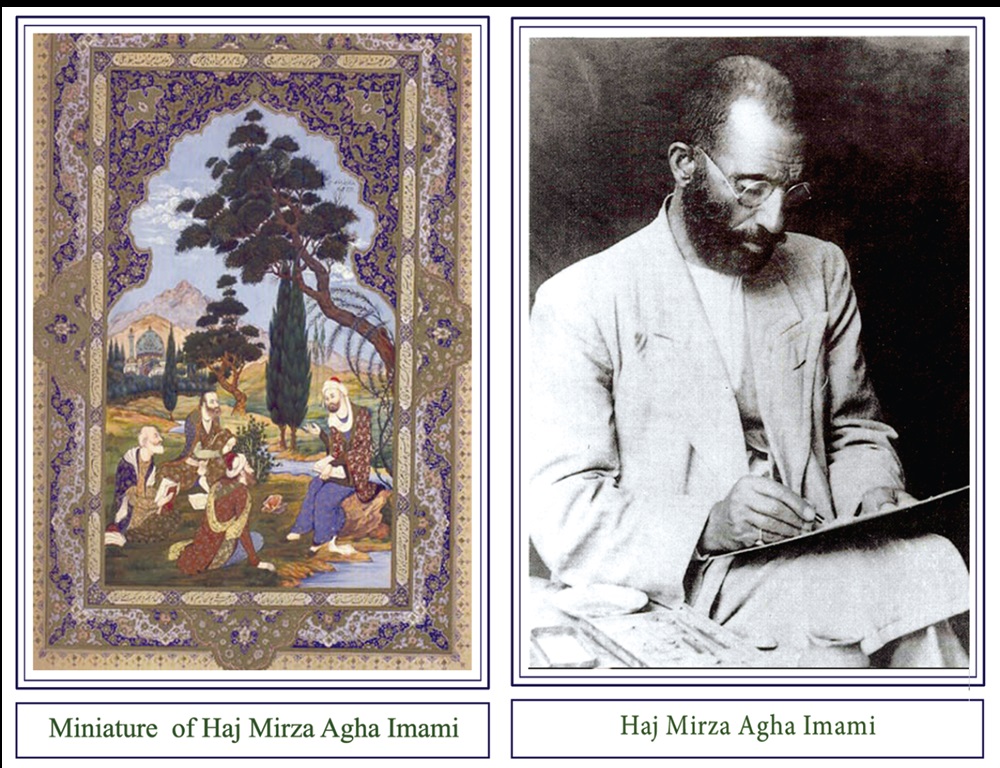
P: 85
This graveyard should be specially noted for a number of reasons; First, it embraces the tomb of a famous mystic of the Ne'matollahi dynasty named 'Feiz Ali Shah'. Secondly, inside the mausoleum two splendidly engraved-marble gravestones of artistic significance can be seen. Thirdly, many of the mystics and Sufis of Isfahan have been buried around the main mausoleum of this graveyard. The antiquity of this graveyard, however, may date back to many years before the entombment of those presently found in this yard. The abundance of the graves of the mystics in this graveyard compelled Shafiq Isfahani, the poet, to write the following verses:
'Many people like Feiz, on this land lie in peace,
Look within and explore the inner part.'
This graveyard is located between Feiz Street on the east and Yazd Khasti graveyard on the west, Takht-e-Foulad Caravanserai on the northwest and the Zoroastrian graveyard on the south.
Mirza Abdol Hussain Isfahani
He was the son of Mohammad Ali Tabasi Khorasani. He died in 1194 (AH); he was called 'Feiz Ali Shah I. ‘ He was a mystic of the Ne'matollahi branch of Sufism. It is recorded that he came from the city of Tabas to Isfahan for education purposes. After completing secular sciences, in his quest to find men of inner conscience, he left for Shiraz and there, he acquired knowledge
P: 86
from Ma'soom Ali Shah, who had migrated from India to Shiraz. After a while he returned to Isfahan and died in the late years of Ali Mardan Khan, the Zand Amir of Isfahan.
Haj Mirza Mohammad Sadeq Namazi
Died in 1301(AH), he was known as 'Feiz Ali Shah II’ and practiced mysticism in the time of the Qajars.
Mohammad Hashem Khoshnevis
He died in 1306(AH). This prominent literary figure of his time was a mystic and a calligrapher of the Qajar period, who wrote in the style of the Daervish Abdol Majeed.
Agha Mohammad Taghi Sahhaf
Son of Mohammad Ebrahim Moghaddas, he died in 1337(AH). He was an unparalleled master of various arts such as calligraphy, painting and printing Many different people at many different times praised him and he was remembered by the poet Homayee in this way, 'Truly, he was a hundred men in one body and a comprehensive master of the different arts of bookbinding, painting, designing, decorating, and calligraphy.' With regard to his works, the inscription at the entrance door of Safa Mosque (in Shahshahan District), the inscription at the entrance door of Rokn-ul-Molk Mosque and the inscriptions on the gravestones attributed to Mir Mohammad Hadi and Mir Mohammad Esma'eil Khatoon Aabadi (in Khatoon Aabadi Graveyard) should be noted.
Mirza Mohammad Soha
The son of Homaye Shirazi, due to his amazing memory he was known as 'The King of Poets.' His knowledge of various skills and sciences including poetic styles and techniques, history and genealogy, bibliography and the science of personages made him a distinguished figure among his contemporaries. He was the guardian of Ostad Homayee when he was only a child.
P: 87
Nayeb Asdollah Neizan (the flutist)
He was a famous flautist of the time of Nasereddin Shah and he believed in music therapy. It is reported that a patient who was on his death bed recovered and came back to life as the result of his beautiful flute playing. However, he never played for financial reasons. He hesitated to attend the gatherings were people were ready to pay him for his music, instead he preferred to play at religious ceremonies like Ta'zieh.
This graveyard also includes the graves of many other important people including Sayyed Hussain, Sayyed Mostafa Ben Mohsen, Mulla Mohammad Bagher Ghomshe'ei and many others.
P: 88
'Lost in the mud, pearls and jewels,
Like dust under the feet, but actually crowns on top of heads.'
(Shafigh)
This part of the cemetery is so named due to the presence of a tomb attributed to a twelfth century scientist and scholar, Mulla Mohammad Rafi' Gilani, who migrated from Gilan to Isfahan and lived in the Bid Aabad district in Isfahan and for this reason he took the surname Bid Aabaadi.
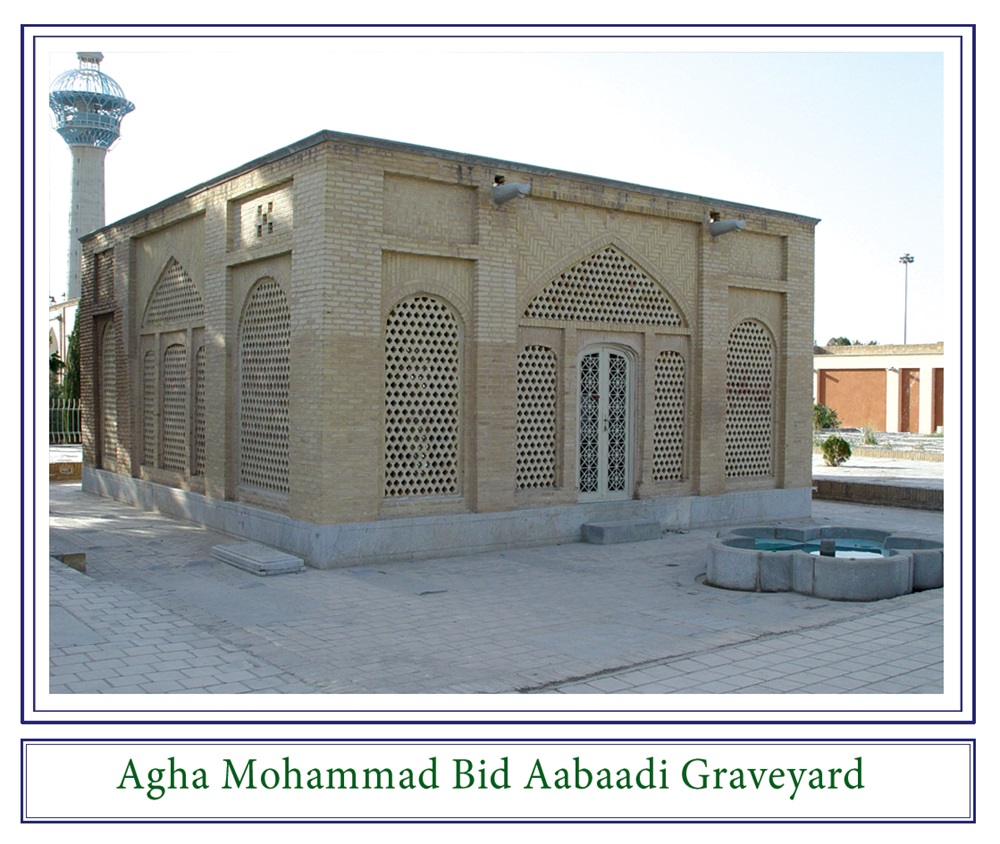
His life time coincided with the fall of Safavids and the transition of power to the Afshari and Zandi dynasty. The present mausoleum was originally built in 1319-1324(AH) by the order of Soleiman Khan Rokn-ul-Molk, while constructing the Rokn-ul-
P: 89
Molk Mosque almost one hundred and twenty years after his burial in the yard.
The mausoleum was renovated by the Takht-e-Foulad Heritage Maintenance Department in 1382(AH Solar Years) .
Agha Mohammad Bid Aabaadi (d. 1198 AH)
Son of Muhammad Rafie Gilani was a very prominent philosopher, religious thinker and mystic of his time. He wrote many sources on Quranic interpretation, different mystical styles, philosophy, Hekma and alchemy.
The famous Isfahani poet, Agha Mohammad Kazem Vale, has written a very strong poem which is inscribed on the gravestone of this important scholar.
The last two verses read:
'The pole of knowledge, Agha Mohammad, departed from the earth,
A mystic and a learned soul was chosen to be raised.'
He was known to be a man of God and to live ethically. Although he was an authority on law and religion and a master of philosophy as well as mysticism, he lived a very simple life. When Isfahan was hit by a draught resulting in the suffering of many people, he expressed no dissatisfaction with the situation. Later on it was found out that he and his family had lived on carrot diet for six months. He rejected any kind of patronage by the kings of his time out of his contentment and disinterest in worldly positions, refusing to meet the kings such as Karim Khan and Ali Mardaan Khan. He is considered to have been a very effective person in ensuring the flourishing of philosophy and Hekma from the falling Safavids to the successive dynasty by educating and
P: 90
training important scholars like Mulla Ali Noori. He also wrote many dissertations on different aspects of mysticism and ethics.
Mir Ma'soom Khatoon Aabadi
He was the son of Mir Abdol Hohssain Khatoon Aabadi, and the great grandfather of the Isfahani religious scholar, Lady Mojtahid Ameen. He was also a lecturer and a teacher at
Chaharbagh Imperial School.
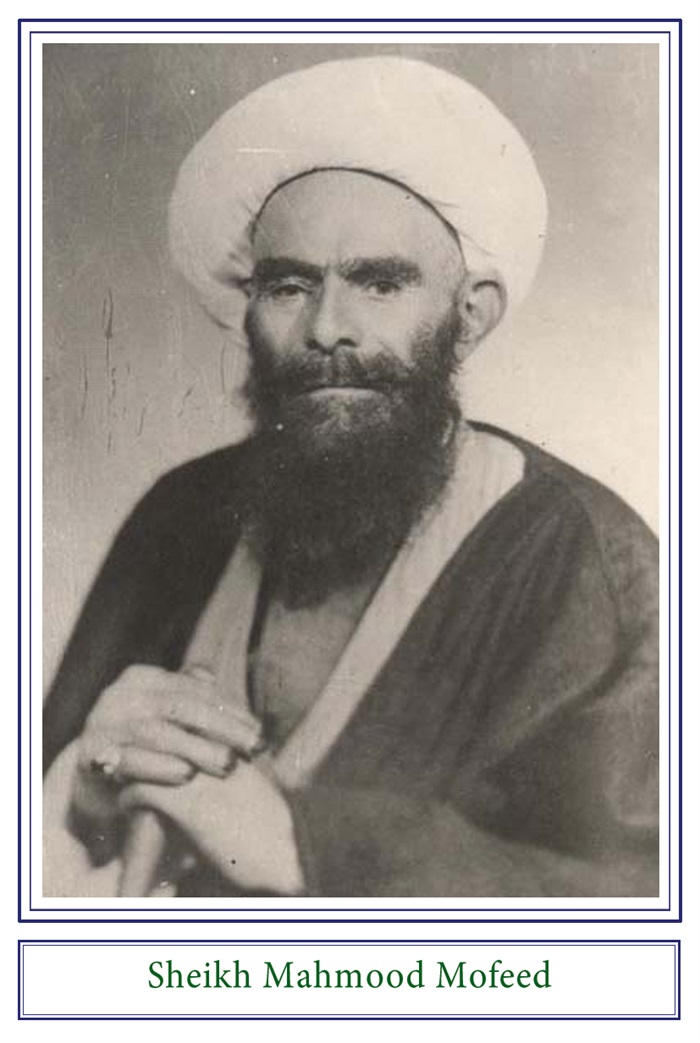
Sheikh Mahmood Mofeed
He was the son of Mofeed, a great religious philosopher and thinker. He died in 1382(AH). He lived a very pious life, controlled his desires and lived in contentment. He was not known to many, even after forty years of teaching at Sadr
School. In his theological classes, he always used to say: 'No student had ever suffered starvation like me all my life; I starved so much that my whole body trembled out of hunger.' He also told his students that the greatest credit for students of religion are that their names be registered in the holy notebook of Imam Mahdi. He was one of the grandsons of Agha Mohammad Bid Aabaadi.
This graveyard also includes a number of other dignitaries such as Mulla Mohammad Rafi' Gilani (the father of Agha Mohammad); Mir Abdol Hussain Khatoon Aabadi (the author of 'The Events of Ages and Ages); Sheikh Abdol Wahhab Ghazi (died in 1269 AH, ancestor of the Ghazi family living in Charsooq and Darbe Sheikh); Sheikh Ali Mofeed (the son of Sheikh Mofeed); Sayyed Ahmad
P: 91
Yazdi (a mystic of the Qajar period); Haj Abdol Ghader Aashegh Abadi (his grave was destroyed when constructing the Sa'aadat Abad Street), Mohammad Reza Isfahani (a scientist); Sheik Zeinoddin Khansari (a religious scholar in the time of Fath Ali Shah) and Mirza Abol Ghasem Allagheband (penname “Nayyer”, a contemporary poet and literary man).
It has also been recorded in different sources that on the top part of the mausoleum, toward the east side, there used to be a big gravestone attributed to Baba Bayat. There are no signs of this grave anymore.
P: 92
P: 93
P: 94
This graveyard is also known as 'Madar-e Shahzadeh' (The Mother of The Prince) because the step mother of Prince Mohammad Mirza Seifoddoleh, the son of Fath Ali Shah and the ruler of Isfahan asked her executor, Sheikh Mohammad Taghi Razi, to bury her body here after her death. Therefore this site and its mausoleum were initially erected by Sheikh Mohammad Taghi Razi, who was the ancestor of the grand Najafi family in Isfahan. The architectural style of this graveyard is Safavid.

P: 95
Nevertheless, there are some delicate Qajar artistic features that may be seen. This graveyard is located next to Khansari graveyard from the south and to the general cemetery from the north and the east. The entrance to the site (which is on the north east of the graveyard) has been decorated with vaulted plaster work and inscriptions.

Outside the entrance alley there are two stone platforms situated on both sides of the door, these were used to provide shade for tired and thirsty visitors during the long summer days. In addition, next to these platforms there are stone water reservoirs that were once filled with water for recently arrived visitors to quench their thirst.
Inside the graveyard an octagonal mausoleum attracts the attention of the visitor with its interwoven exterior brickwork which makes the construction look elegantly beautiful. Inside the mausoleum, the stone work’s distinguished features at the top of the pillars is unique to Takht-e-Foulad. Also the artistic vaulted plaster work of the ceilings gives a unique ornamental view to the interior.
Outside the mausoleum, in the southern part of the graveyard there is a little chapel for those who chose to worship God in isolation. The walls of this place have been decorated with verses
P: 96
from the Quran and written prayers. The most precious marble stones with elegant masonry arts display some of the valuable calligraphic works of the 13th century. The beautiful works of Ashraf-ol-Kottab and Mohammad Bagher Semsoori and Mirza Abdol Rahim Afsar (who is also buried in the same graveyard) can be seen. Also some wonderful poems composed by Zia Isfahani (buried in Fazelan Yard) attract the visitor's attention.
Maryam Beigum (The Prince’s Mother)
Died in 1246(AH), she was a Qajar princess and step mother to Mohammad Mirza, the ruler of Isfahan and the son of Fath Ali Shah. She was among the social benefactors in Isfahan and was considered very religious. She participated in many public trust works in Isfahan. The inscriptions on her gravestone were written by a famous calligrapher of 13th century, Mohammad Bagher Semsoori, and engraved by Mohammad Hussain Hajjar, the mason.
Sheikh Mohammad Taghi Razi
He was the son of Muhammad Rahim Eivan Keifi, he died in 1248(AH). A great jurist of the 13th century, he was known as 'The Owner of the Notes.’ For fifteen years he was a student of Vahid Behbahani in Karbala and was also taught by Sheikh Ja'far Kashef-ol-Qota', later marrying his daughter. The story of his marriage to the daughter of Sheikh Ja'far Kashef-ol-Qota' is interesting; 'Once, during a lesson, Sheikh Ja'far asked him if he was married. He answered no. Then the Sheikh told him that he had two daughters at home, one of whom was famous for her beauty and the other for her knowledge. He could choose to marry any one of them, as he wishes. He said he would like to marry the one with
P: 97
knowledge. Immediately after that, during the lesson, Sheikh Ja'far declared them permanently married.
Razi's scientific position is very well known among the Shiite theologicians. His book 'Hedayt-ol-Mostarshedin' is considered the most authentic book on the 'Science of Principles'. According to records, every time he lectured, as many as three hundred scholars attended his classes. Most of these scholars, including Sayyed Mohammad 'Bagher Saheb Rozat', 'Mirza Mohammad Hasan Shirazi', 'Mohammad Hussain Sahab Fosool', 'Mulla Hadi Sabzevari', later became famous academics. When he died he left nothing but a small library and an old house.
Agha Sayyed Zein-ul-Aabedin Khansari
An ancestor of the Rozaati family in Isfahan, he died in 1275(AH). His son was Mirza Mohammad Bagher Charsooqi the author of 'Rozat-ol-Jannat.' In addition to writing many books, he also wrote poetry.
Sheikh Jamaloddin Najafi
This prominent religious leader in Isfahan died in 1344(AH). For many years, together with his brothers, Sheikh Mohammad Taghi, Agha Noorollah and Sheikh Mohammad Ali, he preached in Isfahan. He was expelled from Isfahan to Tehran during the Russian occupation of Iran.
Sheikh Mohammad Reza Najafi
The son of Sheikh Mohammad Hussain, he died in 1362(AH). Although he was a master of theology as well as mathematics, he was also an expert in Arabic literature and wrote many poems. He wrote the book, 'The Events of the Mind' and' A Criticism of Darwinian Philosophy'. He was one of the teachers of Imam Khomeini, Ayatollah Golpaayegani, and Ayatollah Mar'ashi Najafi.
P: 98
Mirza Abol Ghasem Tabib (Naser Hekmat)
He was the son of Mirza Mohammad Ali and died in 1371(AH). He was among the students of Jahangir Khan Ghashgha'ee and Akhoond Kashi. As one of the last physicians who practiced traditional medicine in Isfahan, he considered medicine as a divinely ordained profession and therefore never charged his patients for his work. It is recorded that every time he prayed, he implored Allah with tearful eyes for the healing of his patients.
Agha Mirza Mohammad Javad Hussain Aabadi
He died in 1312(AH). His grave is in the southern sanctuary of the graveyard with no gravestone. He was the father of Sheikh Ahmad Mojtaheed Bid Aabady and Ayatollah Sheikh Mohammad Ali Shah Aabadi (Imam Khomeini’s teacher of mysticism). According to records, while he was a student, he lived in extreme poverty. One of his classmates once said, 'Mirza Mohammad and I slept hungry so many nights'.
Haj Mohammad Sadeq Takht-e-Fouladi
He was a religious leader who died in 1290(AH). He was the teacher of Sheikh Hasan Ali Isfahani, known as 'Nokhodaki'. Although he was not highly educated, he was very much respected by other scholars, especially his student Sheikh Hasan Ali Nokhodaki.
The graves of many other important people can also be found in this cemetery:
Mohammad Saleh Mazandarani: The author of 'The Unveiling of the Curtains.'
Abol Hasan Soltan-ol-Atebba: Died in 1269(AH), a prominent physician.
Sayyed Mohammad Sadeq Charsooqi: The brother of Sayyed Mohammad Bagher. He died in 1290(AH) author of 'Explanations of Avenues in Religion'.
P: 99
Sheikh Mohammad Hussain (Imam Najafi): He died in 1329(AH). He was the son of Sheikh Jamaloddin. He was the author of“The Existence of God”.
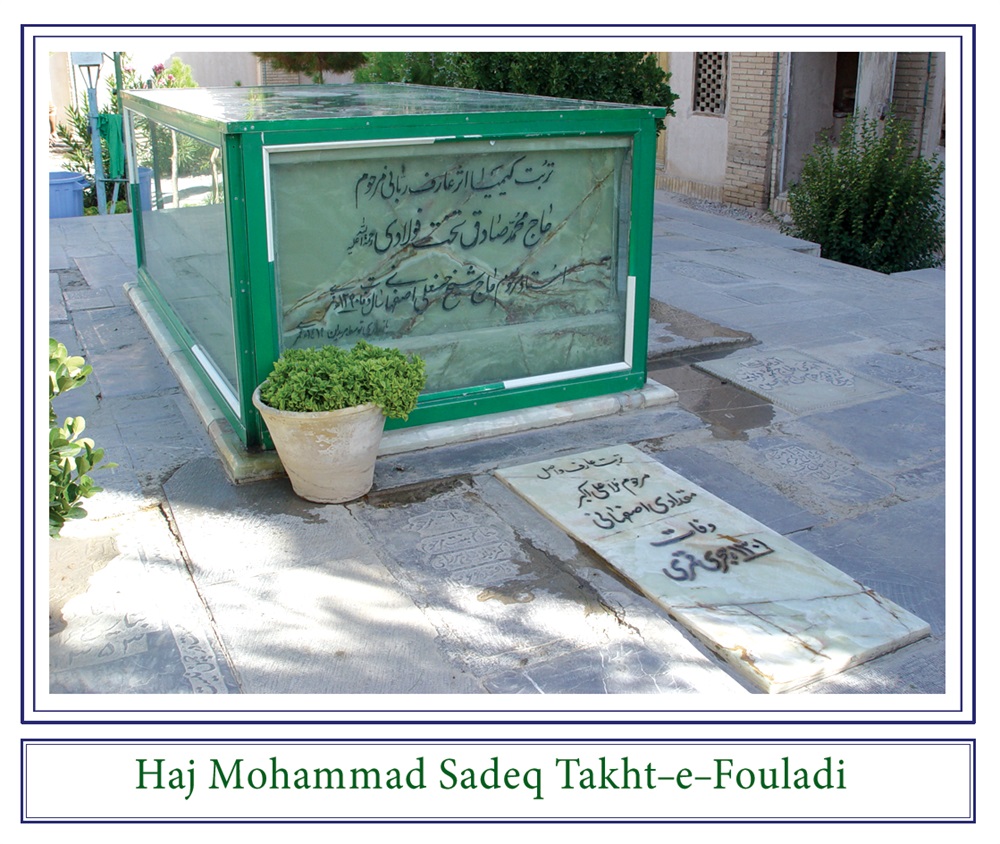
Haj Sayyed Mohammad Javad Sadr Ameli: Died in 1347(AH), a mystic and a learned scholar. He was the founder of The Safa Khaneh Society that was responsible for challenging Christian propagation. He used to write in Al Islam Magazine.
Zahra Beigom Ameli: The daughter of Sayyed Sadroddin and the wife of Mulla Saleh Jooybare'ei. She was a scientist in theology and an authority on jurisprudence.
P: 100
This graveyard located in Valeh Avenue, opposite the Feiz Telecommunication Center, next to the Khatoon Aabaady site, dates back to the Qajar period and is possibly even older. Due to the fact that a tomb belonging to Sayyed Mohammad Sadeq Moosavi dating to last years of 11th century was located in this place, the last person buried in this graveyard was Sayyed Mohammad Hussain (Moslehoddin Mahdavi), who died in 1416(AH). He was a contemporary historian of Isfahan whose knowledge about the life of the dignitaries buried in Takht-e-Foulad is evidenced by the many books he has written concerning this cemetery.
Sayyed Mohammad Taghi Mostajaboda'veh
The son of Mohammad Sa'ed Ben Mohammad Sadeq Moosavi Isfahani, he died 1236(AH). He was a distinguished scholar who acquired his religious knowledge from Agha Mohammad Bid Aabaadi. He was highly respected and trusted by Haji Kalbasi and Sayyed Hojat-ol-Islam Shafti.
Agha Sayyed Hasan Mojtahid
He died in 1263(AH). He was the son of Sayyed Mohammad Taghi Mostajaboda'veh, a religious leader who excelled in knowledge and was known as a Mujtahid. He wrote many religious texts such as 'Mahjat-ol-Fowad' (a note on Allameh Helli Guidelines, twelve
P: 101
volumes) and 'Al Jame' Feqhi' (Comprehensive Religious Rules, six volumes), and 'Wajizah Dissertation' (on Quranic Miracles).
Sayyed Mehdi Nahvi
He died in 1307(AH) and was the son of Sayyed Mohammad Hasan Mojtahis Moosavi, a prominent literary scholar, whose knowledge of literature and syntax was the reason he was called “Nahvi”, which means, ‘Syntactical’.
Sayyed Mohammad Bagher Nahvi
Son of Sayyed Maahdi, he died in 1350(AH). He acquired his knowledge from Akhoond Kashi, Akhoond Mulla Mohammad Hussain Fesharaki and Agha Sayyed Mohammad Bagher Dorche'ei. He was a virtuous religious man who lived a life of contentment and grace.
Sayyed Moslehoddin Mahdavi
He was the son of Sayyed Shahaboddin Nahvi. He died in 1374(AH). He was a great historian and his knowledge in the science of Bio-data of great men and women was complete. Considered among those who dedicated their lives to the culture and history of Isfahan, he wrote and translated many valuable books on the life accounts of Isfahan’s famous scientists and nobles. His writings include books

P: 102
such as 'A Perspective on Isfahan’s History', ' Dignitaries of Isfahan', 'Notes on Graves', 'Notes on Isfahani Poets', 'Isfahan’s Cemeteries' and numerous other books. This trustworthy researcher cited original references for his research and generously provided the researchers with the knowledge and information he had on a particular subject. He was also competent in other fields of knowledge such as literature, law, jurisprudence, and narration. However, since he was very engaged in teaching at the high schools of Isfahan, he found little time to publish any works. Ten Grand Ayatollahs (such as Sheikh Agha Bozorg Tehrani and Ayatollah Mar'ashi Najafi) had given their permission for him to propose his interpretation of religious issues to the public. He was very keen to familiarize his students with divine matters and the responsibilities of a Muslim. He looked at teaching as a holly responsibility endowed by God.
Haj Mirza Sayyed Mohammad Hasan Nahvi (the son in law of Mohammad Baqer Charsooqi and student of Dorche'ei and Akhoond Kashi) is buried here. Abdol Wahab Mahdavi (known as Mo'ein-ol-Olama, the son of Haj Sayyed Mehdi, who was a court judge, a journalist and editor of the magazine Nayyer Azam in the time of the constitution), and Sayyed Reyhanoddin Mahdavi, an academic are all also buried in this graveyard.
P: 103
On the right side of Feiz Street next to Rokn-ul-Molk Mosque, there is a graveyard which belongs to the Safavid Period. It has been named after of a religious scholar known as Mohammad Ja'far Aabaade'ei whose grave, without stone or monument, laid here until recently. A monument has recently installed over the grave by The Cultural Heritage Center.
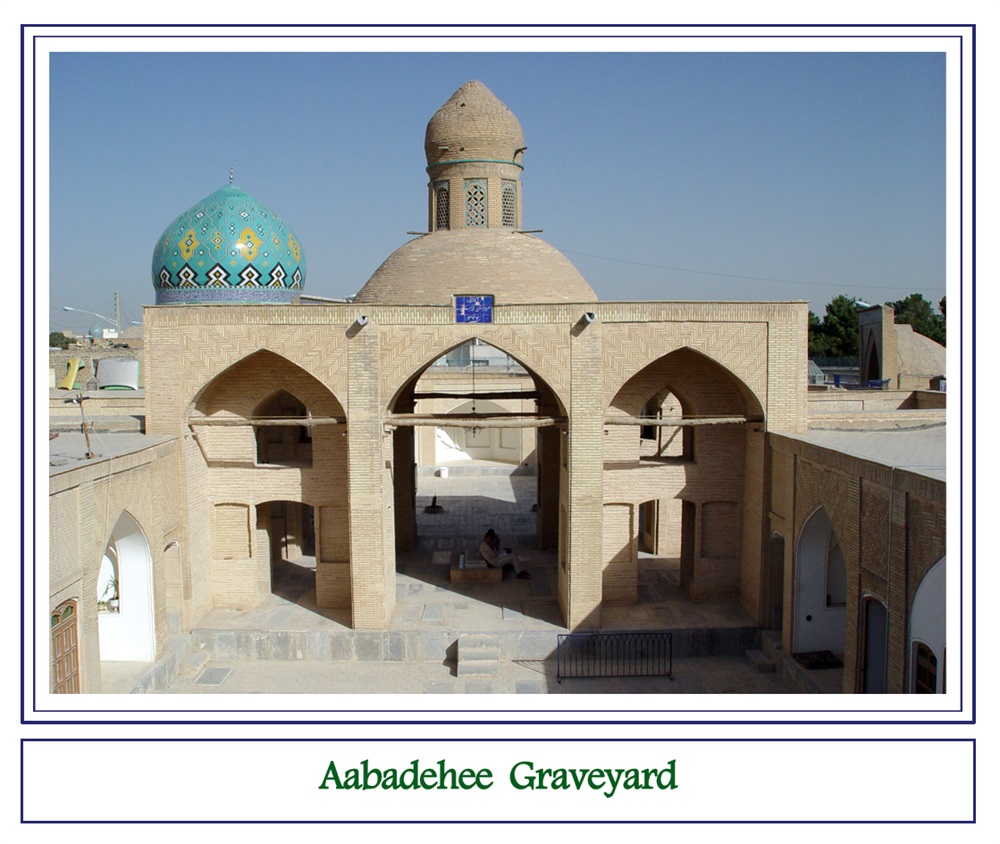
The construction of this graveyard is of developed architectural style of the Qajar period. It displays wonderful works of calligraphy, brick and ceramic tiling by Isfahani artists. An example of this beautiful work is the calligraphy of Mirza Fatollah Jalali that exhibits some work of Toqrol Isfahani. Inside the graveyard there is a mausoleum and two graveyard on the east and the west. There are also some small rooms on the east and the
P: 104
west side of the graveyard. The graveyard was originally part of the grand orchard 'Valeh' which was bought by Suleiman Khan Rokn-ul-Molk from the inheritence of Valeh. The mausoleum inside the graveyard was built in 1324(AH).There are many rooms in the graveyard as well as plenty of green space, allowing it to be well used as a religious school.
Haj Mohammad Ja'far Aabade'ei
He was the son of Mohammad Safi and died in 1280(AH). He was a highly ranked religious leader and an intelligent scholar who was competent in jurisprudence and religious interpretation. He was known among Isfahanis as a virtuous and pious benefactor.
He was very proud of having been taught by great scholars such as Hojat-ul-Islam Shafti and Haji Kalbasi. His writings are famous for being resourceful and well researched. They include: 'Ja'fari Fiqh' (Jurisprudence), 'Noqud-ol-Masa'el' (critique of Issues) which was written using a deductive approach to jurisprudence. He also wrote many other books such as 'Notes on Critique Work of Rijal' (the science of important religious men and the knowledge of knowing the meaning traditions narrated from Holy prophet and his family p.b) and 'An Explanation on the Holy Names of Quran'.
There are some interesting stories about this learned man. He was famous for having a very good memory in the sense that he never forgot any trivial events in his life time. In his judgments he always referred to preceding verdicts which had previously been arrived at. His interpretations of Islamic rules and principles were referred to by many people outside the province of Isfahan. In his life time, the Bahai conspiracy had already started and as an opponent to this sect, he used to say that this group who had deviated should try to modify their unethical behavior and strive toward cleansing their thought and put into practice what they preach. He is recorded (by Homayee in ' History of Isfahan ') as a very humorous person whose soft tone pleased his audience and readers.
P: 105
Many other noble people are also buried in this part of the cemetery those who are better known are:
Mirza Mahmood Sadr-ol-Mohadessin
Died in 1332(AH). He was the son of Abdollah Khoonsari and a famous preacher in Isfahan. In addition to Malek-ol-Motokallemin and Sayyed Jamal Va'ez, he is known as a constitutionalist in Iranian contemporary history.
Mulla Abdollah Khansari Sadr-ol-Mohaddesin
The father of Mirza Mahmood and a famous preacher in Isfahan. He died on the day of Ashura while reciting the tragic events of Karbala attributed to Imam Hussain. The verse written on his gravestone is very appropriate:
'While the light was singing 'Oh Hussain!’ he inhaled his last breath, and departed to Hussain.'
Mirza Asadollah Ashtari
A learned poet and the author of 'The History of Love', 'Collection of Poetry' and 'Storm of the Soul'. He has numerous followers because of his attractive writing style;
'I'm that little bird who can fly nowhere but your homely roof,
Even if you open the door of my cage…'
Mulla Hussain Korbekandi
Known as Emad-ol-Va'ezeen. He was a famous Isfahani preacher and the author of many collections on the calamities of Ashura. His son Haj Mirza Ahmad emad-ol-vazain (died in 1383 AH) is also buried in this cemetery.
Haj Mulla Esma'eil Naqne'ei
Died in 1350(AH), a religious man.
P: 106
Mirza Mohammad Moosavi Monajjem
Died in 1289(AH), an astronomer, mathematician and a poet.
Mulla Najaf Ali Khorasani
Died in 1284(AH), a scholar.
Mulla Hasan Rizi
He died in 1299(AH). He was highly respected among other religious people.
Sheikh Mahammad Hasan Yazdi
Died in1286(AH). He was a virtuous religious academic and a preacher who wrote some valuable works such as 'The Sword of those who preached and the companion to those who prayed', on Imam Ali’s holy wars.
Many worthy people have been laid to rest in this graveyard. This inspiration enabled Shafiq, the poet, to write:
'Those who recited on Minbars, excitingly and enthusiastically
Now all silently asleep, no agitation, no ebullition.'
P: 107
This graveyard is also known as the Sayyed Mohammad Tork graveyard. He was a highly respected religious scholar and his grave remains in a rather ruined part of the cemetery. After the death of Jahangir Khan Qashqa'ei, this burial ground prospered to the extent that it was noted to the general public, and the public start to use it. Until recently, Jahangir Khan's tomb was situated on a platform on the eastern side of the graveyard. It was renovated and an octagonal memorial mausoleum in the memory of this great philosopher of the Islamic world has been constructed. The date of death has been inscribed with a constructor calligraphy style on the top of the modern structure in turquoise.

P: 108
At the right side of the eastern end of the graveyard stands another beautiful and rather small mausoleum that entombs the grave of the contemporary journalist and editor of the Erfan Magazine, Ahmad Erfan (d. 1371 AH). This resembles the Hafiz mausoleum in Shiraz.
At the entrance of the graveyard there are many gravestones attributed to the descendants of Mohammad Tork. A number of his late students have also been buried around the mausoleum of their beloved teacher, Jahangir Khan.
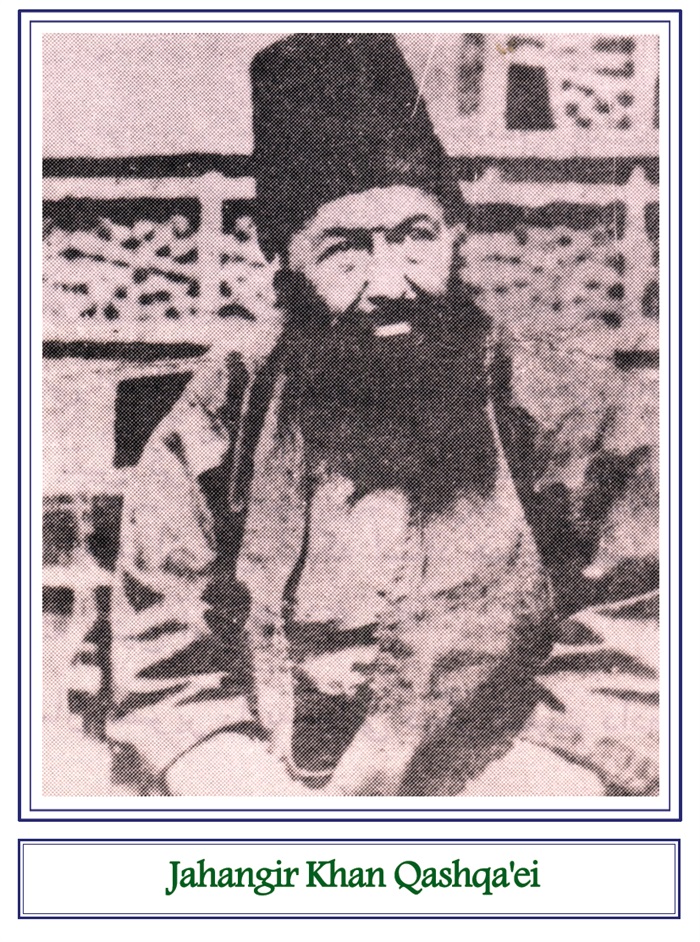
Jahangir Khan Qashqa'ei
He died in 1328(AH) and was the son of Mohammad Khan Darreh Sho'ei one of the most prominent men of philosophy and Hekma' in the Qajar period. He was taught by one of the famous philosophers of the time, Mohammad Reza Sahba Ghomshe'ei, a great mystic and religious man of Isfahan. Jahangir Khan taught many great scholars, academics and prominent religious figures in Isfahan. On his gravestone the following verse reads:
P: 109
'Jahangir departed for God.'
In his youth, he was one of the distinguished reciters of the Shah Nameh 'The Persian Book of Kings' in his locality. When he was forty, great spiritual changes occurred in him that led him to the long way of religious and philosophical education. He
finally became one of the greatest philosophers of the east. When he arrived in
Isfahan, he became acquainted with distinguished figures such as Homaye Shirazi(d. 1290 AH) and Abdol Javad Hakim (d. 1281 AH). His innermost purity and intuitive talent led him to the world of academia and to the acquisition of knowledge. No one knows what happened to him in Isfahan that produced such a change in his heart causing him to leave his home town and gain an education in
Sadr School. Soon he became the greatest discoursive philosopher and jurist and in his time his knowledgeable was comprehensive. He died at the age of eighty six. At his funeral ceremony, the grand Ayatollah of Shiism, Sheikh Mohammad Taqi Najafi, performed the ritual prayers, these respects were indeed worthy of this deceased noble. Jahangir Khan was deeply loved and sincerely respected by his students in such a way that when he died many people requested that they too be buried next to him following their deaths. It is recorded that he possessed unparallel attributes that made him distinct from many others. No one heard him say anything unpleasant or act unethically. His love for writing, shooting and hiking gave him a healthy physique until the last days of his life.
Perhaps his most worthy achievement was to purify philosophy from all allegations of blasphemy and deviation. His piety and virtue were so great that the grand Shiite Ayatollahs like Boroojerdi and Golpayegani were always proud to have learned philosophy and Hekma from him and Akhoond Kashi, on of his contemporaries. They both studied at the Sadr
School as well as Isfahan School of Theology , where these two pillars of philosophy were intimate friends. Since they had no families their reliance on each others’ friendship remained all their life. It is recorded that when Kashi died, shortly before Jahangir Khan, despite the fact
P: 110
that he was so ill and hardly able to walk, he asked his students to drag him along beside the coffin of his friend at his funeral. He walked for only a few steps and then fell down out of of sorrow and illness. After Jahangir's death one of his students saw a vision of him in a dream where he said, 'Akhoond told me you truly did what a friend should do.'
On the occasion of his 4oth death anniversary, the following verses (being parts of a forty-line poem) were composed were composed by a Dr Ahmad Fazel:
So it was his fate,
How beautifully it came to end,
Cause the love of Lord illuminated his heart,
Jahangir’s name became Jahangir (widespread and famous),
Glory to that charming butler
Who bestows eternal life with a ‘glass of wine’’,
When His magnificent eyes looks to attract,
A musician becomes a Godly being.
Agha Sayyed Mohammad Hussaini Kho'ei
He was a highly respected and learned religious man who died in 1266(AH) . He was a grand preacher who wrote commentary notes on Sharh-e-Lom'e (an important source in the school of theology) as well as comments on Riadh. There are stories of a mysterious power of healing being attributed to him. Some believe that reciting the first chapter of the Quran (Fatiha) at his grave helps cure some deseases.
Sayyed Mohammad Najm Isfahani
He died in 1347(AH) and was a distinct interpreter of the Quran. Being a scholar and a religious authority, he wrote the thirty volumes of ‘The Versified Interpration of Quran, Masabih-ol- E'jaz,
P: 111
the Lanterns of Miracles, (description of Mysterious Flower Orchards ), and Collection of Poetry.
Sayyed Fakhroddin Moosavi Khansari
He was the son of Sayyed Mohammad Reza and died in 1348(AH). He was a prominent student of the famous scholars, Dorchei, Jahangir Khan and Akhoond Kashi.
Norollah Noor-e-Sharq
He was a virtuous scholar and the founder of the Noor-e-Sharq Newspaper who died in 1331(AH). Born to a religious family with a father in the clergy, he became an authority in the principles of literature and jurisprudence. His newspaper was published for two years with the aid of Noorollah Najafi (known as Haj Agha Noorollah). This newspaper was a voice of challenge to the increasing corruption and immorality of the time.
Ahmad Erfan
He was a prominant journalist and the founder of the Erfan Magazine. He died in 1371(AH). He was among the great high school teachers in Isfahan. The poet Hoor composed the following verses to signify the date of his death:
'Thousands of God’s compassion to his soul,
From us to him peace and solitude flow,
This is what I write at his grave,
Closed becomes his soul, to his Almighty.'
This graveyard also includes a number of the other scholars of Isfahan, most notably Sayyed Mohammad Javad Masa'eli, a learned religious man who died in 1340(AH), Sayyed Mohammad Reza Razavi Khonsari (d. 1339 AH), and Sayyed Mohammad Ibn Mahmood (d. 1351 AH) Golastaneh, a calligrapher and the founder of Olum School in Isfahan.
P: 112
This graveyard dates to the time of the Qajars and is named after Mir Sayyed Mohamad Shahshahani (d. 1287 AH), who was a prominent religious scholar in Isfahan. The architecture of the mausoleum in the graveyard is interesting, in the sense that, from the outside the shape of the building it looks like a quadrangular building, but from the inside it looks hexagonal. This makes it unique among the mausoleums in this cemetery. The mausoleum is located in the center of the graveyard and each of the gates to the mausoleum is situated in front of each of the individual rooms around the yard.
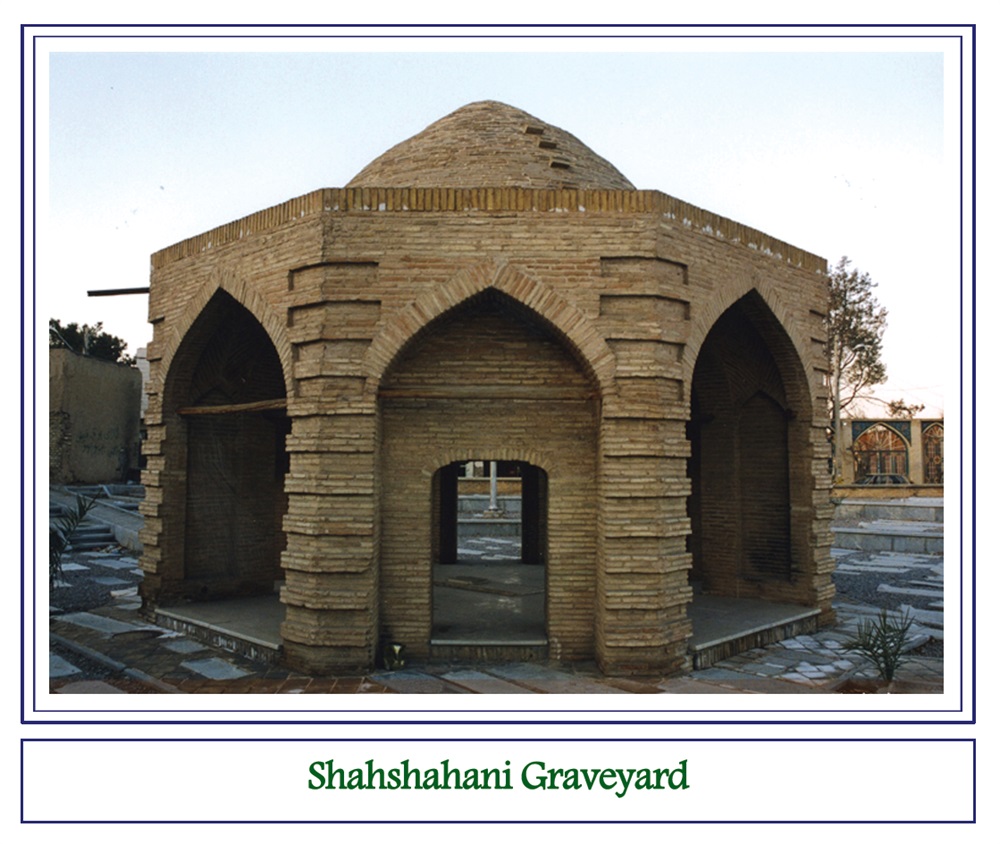
From the perspective of history this graveyard, similar to Jahangir Khan, in the past, was located on the way to Shiraz. This is the main reason for the fact that many of the buildings which functioned as caravanserais, mosques and water reservoirs were
P: 113
constructed in the area. Perhaps the place was used as a final stopping point for travelers before reaching the main city area of Isfahan. The location of the Shahshahani graveyard on the west of the Jahangir Khan graveyard and on the east side of Feiz
Street and opposite the Rokn-ul-Molk Mosque have made the graveyard very accessible.
Agha Mir Sayyed Mohammad Hussaini Shahshahani
The son of Abdossamad, he died in 1287(AH). During his younger years, he acquired knowledge from prominent figures such as Haji Kalbasi and Sheikh Mohammad Taghi Razi. Later he became one of the great religious authorities in Isfahan, gaining fame for his knowledge and virtue among the city dwellers. He was appointed to teach and command religious orders in Isfahan after the death of Haji Kalbasi. All his life was spent writing books on religious laws and philosophy and living a socially isolated life. His main piece of writing was 'Al Orwat-ol-Wothqa' which discusses the logic of religious principles. The name of his book was also later used by the famous religious authority 'Mohammad Kazem Yazdi Tabataba'ei'. He also wrote 'Al Qayat-ol- Ghosva on the principles of religion, and Anwar-o-Riaz, which is a very valuable scientific book. He also wrote a collection of poems which is a comprehensive account of religious principles. He trained some very learned intellectuals and religious figures that played effective roles later in contemporary history such as Haj Mirza Hasan Shirazi, Sayyed Mohammad Bagher Khansari, (Saheb Rozat), Fazel Ardekani.
Haj Mirza Badi' Mousavi Darbe Imami
He was the son of Mostafa Mousavi. His died in 1318(AH). He was a literary Mojtahid and a scholar as well as a famous calligrapher
P: 114
in Isfahan. He was famed for being eloquent and moderate temper among Isfahani people. His teacher 'Sayyed Mohammad Shahshahani' famouly said:'There is only one religious scholar in this city, that is myself and my other half Mirza Badi'.' He was also a well known student of Sayyed Abol Hsan Isfahani. In addition to his skills in the memorization of narrated statements, stories and historical facts, he was also poetically gifted:
'One who has kissed your wine colored lips,
Has looked down on bottles of pure wine.'
'Oh my friend, complain not about ‘friend’,
No way but to quid love or seek patience,
On the day of meeting do not feel afraid,
His wish is your departure fom the place.
(Mirza Badi' Darbe Imami)
Mirza Hasan Araqi Isfahani
He was the prayer leader of the Salam mosque and famous for his social contributions to help the poor and the needy. He was very keen to stand up against non ethical activities in the society through words and actions. He died in 1323(AH).
This graveyard also contains the graves of many more of the dignitaries of Isfahan including Sayyed Mohsen Mir Shamsi, a religious scholar who died in 1368(AH), Mulla Mehdi Shah Touri (a student of Sayyed Mohammad Shahshani who died 1319 AH) , Sayyed Mohammad Jazayeri (a literary figure of the late Qajar period who died in 1323 AH the son of Sayyed Mohammad Shafi' Jazayeri,), Mirza Abdol Hussain Sani Homayoun, the son of Mirza Mohammad Kazem Naqash who died in 1341 AH and was a renowned artist in Isfahan and famous for his paintings of scenery and making pen holders), and Sayyed Abol Ghasem Seyyed-ol-eslam (the son of Sayyed Ibrahim, died in 1357 AH a religious scholar from Shahshhani family).
P: 115
On the west side of Feiz Street, just opposite Fazel Sarab Graveyard, there stands another graveyard that borders Rokn-ul-Molk Mosque in the south and the residential area in the west.The site of this delicately laid and artistically constructed graveyard dates back to the Qajar period. The site was once within the area of the Grand Chahar Bagh which included a vast area of the Takht-e-Foulad cemetery. The Grand Chahar Bagh had also embraced the Rokn-ul-Molk Mosque, and the Aabade'ei graveyard in addition to this site. The graveyard and its mausoleum may perhaps be considered a product of adornment and love; it was built by one of Isfahan’s moderate and just rulers called 'Mirza Mohammad Hussain Khan Sadr Isfahani' for his favorite poet and calligrapher, Mohammad Kazem Valeh (d. 1229 AH) who was a distinct figure of the time. He named the site 'valehieh
Garden'. The place was used as a residence for Mohammad Kazem Valeh for a long time and was a social center for his friends and fellow artists. His poetic spirit inspired him to build a magnificent building, a place for him to rest in peace after his death. The inscriptions on his gravestone were personally written by him
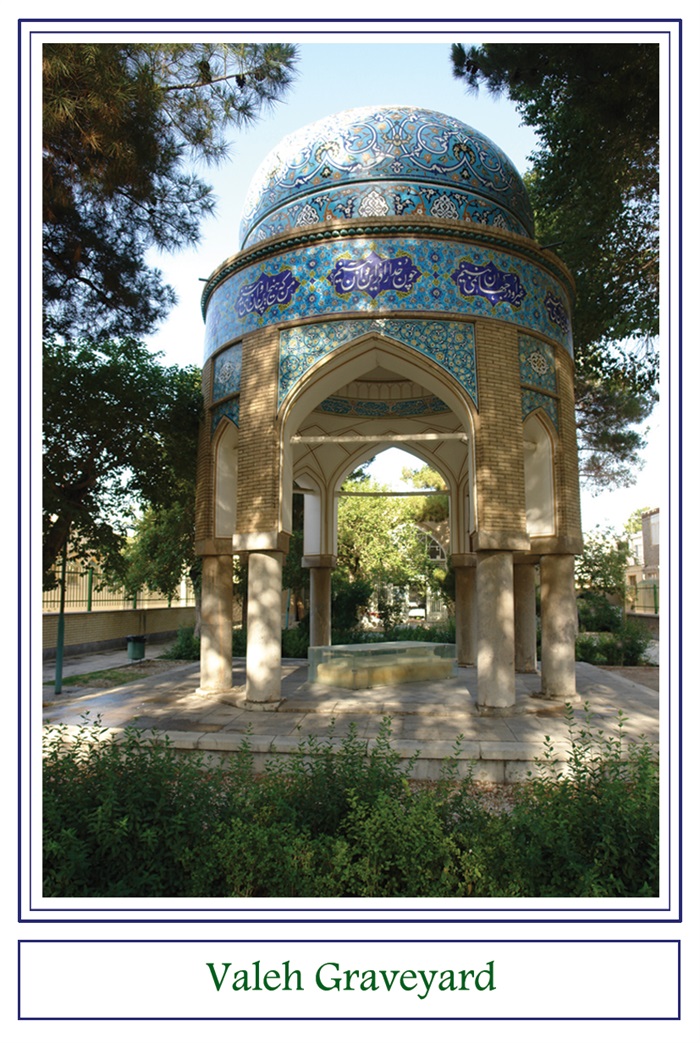
P: 116
with his elegant calligraphic writing.
The mausoleum has been erected on a hexagonal platform in the center of the graveyard. It had originally consisted of a brick-made dome but later in 1350 (AH) was decorated with turquoise ceramic tiles. The dome is elegantly decorated with interwoven patterns over stone pillars. Within the interior rim of the dome some poems from Tal'at Isfahani praising Valeh Isfahani can be seen. These plaster works are the calligraphic works of Ostad Faza'eli, the renowned calligrapher of Isfahan. There are rooms all around the graveyard which were the living and worship places of Valeh.
Agha Mohammad Kazem Valeh
This learned scholar and a poet who also enjoyed a mastery in calligraphy was contemporary with Fathali Shah of Qajar. He was of high respect among people. Being a master of different styles of calligraphy, many of his works can be found in various museums. He authored many poems; he has left behind a ‘Collection of Poems’ that shows he had tendencies toward hikma and mystics. One of his poems reads:
I love you, but not your mercy if it is subject to being put to a test,
Close the door of compassion and open the doors of calamities.
It is recorded that he was well informed of the political trends of his own time. Sir John Malcolm, the British ambassador to Iran’ who was known to have friendship with Agha Mohammad Kazem Valeh writes: “ One morning I went to the ‘Madrisa’ (school) too meet Agha Mohammad Kazem Valeh Isfahani who was a poet and a man of Hikma and very curious in political issues. He told me
P: 117
that ‘Bonaparte’ is a strange man; he plays with the fate of nations as though he saw them as gambling clubs; now that he has settled differences with Ottomans, he is trying to orchestrate a music in which our kings dance for him, and that iran acts like a lash in his hand to whip Russia with; and then use both (Iran and Russia) to wipe out your influence in India. Anyway, this man is a complete western model of jengizkhan”.
I swear it was not I who set for separation,
It was God’s deed, and quite different His deeds,
What should I do when my love’s living is to hurt,
My slogan is to be loyal to my lover not to wound,
What else can she do for ‘not to hurt’ is not within her rule?
What else can I do for to be unfaithful is not within my rule?
This graveyard was inaugurated following the death of the highly respected religious scholar and comprehensive jurist of the time, Grand Ayatollah Haj Sayyed Mohammad Bagher Charsouqi. His grave is located at the south end of the graveyard and the mausoleum of Mirza Mohammad Bagher is situated in the center of the graveyard. Mirza Mohammad Bagher Charsouqi was the author of the valuable book 'Rozat-ol-Jannat fi Ahvalel Olama va Sadat'. This book became so famous that the descendants of the author are now called by the surname Rozati. Most of the children and grand children of Mirza Mohammad Bagher Charsouqi were buried in the same mausoleum. On the north side of the graveyard the grave stone of Mirza Hussain Keshikchi can be found, he was known to have had contact with the twelve Imams of Shiism. This has made the graveyard a very sacred area for believers. The graveyard is located in the south part of Takht-e-Foulad Mosalla and to the north west of the Sayyed Razi graveyard. The main
P: 118
entrance is on the eastern side of the graveyard, on Khansari Street, just opposite the Khansari graveyard.
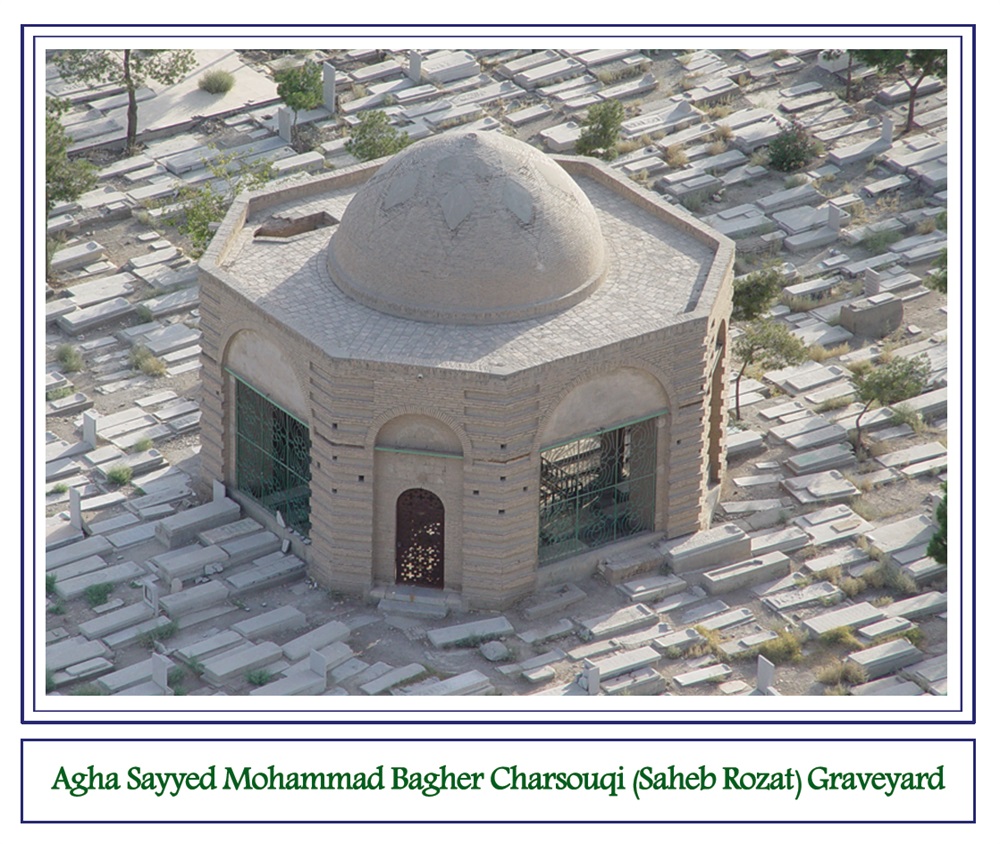
Mirza Mohammad Bagher Mousavi Charsouqi
He was born to Sayyed Zein-ol-Aabedin and died in 1313(AH) and was known as Saheb Rozat. To begin with, he was the student of 'Mir Sayyed Mohammad Shahshahani, Sheikh Mohammad Taghi Razi, Hojat-ol-Islam Shafti, Haji Kalbasi and Sayyed Sadroddin Amoli. He later became a prominent literary man, an authoritative historian, a prominent Mojtahid and a highly respected scholar of the science of Rejal. He spent ten years of his life in writing 'Rozat'. He also wrote many other books such as 'Ahsan-ol-Atieh' (the best gifts), 'Tasliat-ol-Akhzan' and 'A Dissertation on the Obligation of the Religion'.
P: 119
He lived a very poor life, but his self respect and dignity did not allow him to be patronized by the rulers and statesmen of the time.
There is a story about how he rejected the offer of ruler of Isfahan 'Zellosoltan,' who was an oppressive and despotic prince of the Qajars who brutally ruled over the citizens. 'Mirza' refused the prince's bequest by telling him that he owned his own 'sanctuary' village, and he lived on this income. At first Zellosoltan thought that there was a village named 'sanctuary'. Later he found out that Mirza had used the word in a metaphorical sense. In using the word “sanctuary” he wanted to convey that he sought refuge in Allah and no one else. There are some verses written on the gravestone of Mirza which show the profound respect of their composer, Mirza Soleiman Khan Rokn-ul-Molk, one of his great admirers and the founder of his mausoleum:
'The world never witnessed a man like him in arts,
Time never saw anyone as eloquent as him in speech,
Surely he is praised by Imam Bagher, the explorer of science,
Since the mother of time has never given birth to such a wonderful child,
His departure to Heaven caused sadness and weeping among the Muslims.'
Mirza Ata'ollah Charsouqi
He was the son of Mirza Mohammad Bagher and died in 1335(AH). He was a respected religious scholar and an expert in the principles of Shiism. He lived a pious life, a remnant of which is his book 'Meftah-o-Rozat', a brief account of Rozat-ol-Jenat written by his renowned father.
Mirza Mohammad Mehdi Charsouqi
He was the elder son of Mirza Mohammad Bagher and died in 1324(AH). His works include translation of 'Al Fiha' which is
P: 120
known as 'Daily Religious Duties' and a dissertation on religious practices called 'Dalil-ol-Mosallin' (a guide for prayers).
Mulla Hasan Gilani Lonbani
A great philosopher and deeply respected religious learned man of the Safavid time, he died in 1094(AH). He was a distant ancestor of Saheb Rozat and a contemporary to the First Majlesi and Agha Hussain Khansari. He was a great authority on mysticism and very effective in combining the laws of Shariah with an agnostic approach. He was a great admirer of Molana (Rumi) the poet and he wrote a detailed commentary on Molavi’s Masnavi. His works include 'Persian Comments on Usul Kafi', 'Comments on Masnavi' and 'Notes on Isharat'. According to his will he was buried next to his ancestor.
Agha Hosain Gilani Lonbani
He was the son of Mulla Hasan Lonbani. He died in 1129(AH). He was among the authorized religious leaders in the time of Safavids. Apparently he was one of the ancestors of Saheb Rozat. He gained his knowledge from Allameh Majlesi and began to teach at the Lonban Mosque. His most famous written work is 'An Explanation to Sahife Sajadieh' (the famous prayer book of the fourth Imam). He has been entombed in the mausoleum next to his father's grave. Also his son, Mulla Mohammad Taghi Lonbani has been laid to rest outside the mausoleum.
Mulla Mohammad Hussain Teflisi
He was a religious scientist who known to have lived a very humble life and enjoyed the trust and confidence of the Isfahani people. It is said among the people that anyone who pays tribute to this sacred grave and desires to make a journey to Karbala, will succeed in doing so. His grave was initially located in the Aab Bakhshan cemetery. After this cemetery was ruined the remains were buried here in this graveyard.
P: 121
Mulla Mehrab Gilani
He was a mystic and a philosopher who had learned from Agha Mohammad Bid Aabady, Mulla Esma'eil Khajo'ee and Sayyed Qotboddin Neirizi. He was a master of Sophistic and Agnostic ideas. He was unparalled in purification of the soul and self-evaluation of the innerself, which is a trend towards a higher dimention of self-knowledge in mysticism. One of his famous students was Mulla Hasan Na'eini (buried in the Baba Roknoddin graveyard). He died in 1217(AH). A memorial stone, which contains very academic and informatic writting, stands at his grave.
Abbas Ali Khoram Lonbani
He was the son of Haloo Kazem and died in 1324(AH). He was one of the famous poets in Isfahan at the time of the Qajars and his penname was 'Khoram' (green). This famous verse is attributed to him:
'Saghi! Tonight let the wine flow unto my prospering sole village
A tiny opulent parish is worth a hundred ruined cities.'
Mirza Hussain Keshikchi
Known to be associated with Imam Mahdi, he died in 1313(AH). There is a story recorded about this pious man that shows his great spiritual devotion and relation to the spiritual wzorld. One of the great and trusted religious and mystic figure of Isfahan, Haj Agha Jamal Isfahani, recited a story, that was in turn passed on from a very trustworthy merchant of Isfahan: 'On my way to Mecca, somewhere near Karbala, all my possessions and money were robbed by thieves. I was

P: 122
extremely upset by the thought that I could never reach Mecca now that I had lost my money. It occurred to me that I would stay in the Mosque of Kufe over night. While on the way to the mosque, I saw a rider on a horse who displayed all the beauties and appeal of the Twelfth Imam. The rider turned his face to me and asked:'What makes you so irritated, man?' 'I am on a journey and exhausted from the way.' I replied desperately. 'Any other reasons if I may ask?' he inquired. I explained everything to him. When I finished talking, he told me to look and when I did I saw a man with wretched looking clothes next to me who looked like one of the porters of the bazaar of Isfahan. When I looked at him well, I recognized the face. He was the man called Haloo who used to watch the shops at night. The rider told Haloo to find all of my property that had been stolen and return it back to me. He also told him to accompany me to Mecca. After that the rider disappeared and Haloo told me to meet him at a certain time and in a certain place. When I met him later in that place, he gave me my money, and every thing was perfect and in order. Then he asked me to follow him to Mecca. Surprisingly, after a few hours I suddenly found myself in Mecca. There he asked me to follow him back to Karbala, after I had performed all my religious duties. Again, I followed him back to Karbala and amazingly after only a few hours of travel, I found myself in Karbala. He asked me to tell my friends that I had taken a shortcut on the jorney. When we reached Karbala he asked me if I could do him a favor. When I asked him what it was, he told me that he would tell me later.
When I returned to Isfahan from the pilgrimage, after a while, many people came to visit me. Among the visitors, I saw Haloo. I rushed towards him to pay my respects and express my gratitude for his kindness towards me. His facial gesture suggested to me that I should remain quite. When leaving the house, he said to me:'The favor that I wanted was for you to come and visit me at my house on Thursday at two o'clock. There I will tell you what you can do for me. Please be on time. 'Then Haloo gave his address to me and left my house.
P: 123
On the agreed date, I prepared myself to go to Haloo's house. I decided to go an hour earlier than the time we agreed; I wanted to talk to him about Imam Mahdi to see if I could have an opportunity to visit the Holy Imam. With a lot of going to and fro, when I finally found the address it was exactly two o'clock. I was about to knock the door, when I suddenly saw it open and a man in a green garment passed through the door and by me. The man's face was magnificently bright. He had a green turban and a black shawl tied around his waist and was followed by Haloo who followed him outside the house and thanked him for being his guest. I was amazed and asked Haloo who the man was. He said the man was the Twelfth Imam and he had visited him to say goodbye on the last day of his life. Haloo then asked me to return to the house the next morning and to bring with me a few porters and watchmen. He told me that the door would be open and I would find him dead upon arriving at the house. He told me that he had prepared the shroud as well as some money for the funeral. He asked me to wash his body and bury him in some particular place in Takht-e-Foulad.
The following day, on Friday morning, we carried out his instructions. We gave him a simple funeral. When I was filling the grave with earth, I could not stop crying. My whole body was trembling with loud tearful cries as I was telling people the whole story and the true identity of this sacred man. Then I went to see some of my travelling companions and together we all went to the house of Ayatollah Rozati to explain everything to him. When the Ayatollah heard what had happened to me and what I had seen, his eyes were filled with tears and he rushed towards the cemetery. He wanted to be buried there next to the grave of Haloo. He believed that he could perhaps receive some blessing when the Imam came to visit the grave of Haloo.
The graveyard also contains many other graves of religious men and scholars belonging to the Rozati dynasty including Agha Mirza Massih, son of Mirza Mohammad Bagher who died in 1325(AH) and was renowned for his knowledge, piety and virtue.
P: 124
The Abol Ma'ali graveyard has a border to the south with the Khajoo'ei graveyard and from the east with the Qashqa'ei graveyard. It is located on Lesan-ol-Arz Avenue just opposite the Khajoo'ei yard dates back to the Qajar reign. The mauseloum named after this graveyard is a hexagonal multi entrance structure. The building has brick honeycomb style windows which have been constructed with the uttermost care and is named after Mirza Abol Ma'ali Mohammad (d. 1315 AH, the youngest son of the highly respected Shiite scholar Mohammad Ebrahim Kalbasi). The foundation of the building was laid by his son in law Mirza Ahmad Mulla Bashi. Just below the Malek graveyard there used to be a small area where number of highly respected and prominent religious scholars have been buried;

P: 125
Sayyed Zein-ol-Abedin Razavi Khansari(d. 1307 AH).
He was the great author of 'Hesam-o-Shia', an important book among religious scholars. Sayyed Zein-ol-Abedin was known to have met His Holy Majesty, Imam Mahdi.
Sayyed Mohammad Razavi Khansari (d. 1374 AH)
He was a well known Mujtahid in Isfahan who went to great efforts in reasearching and writing scholarly sources as well as preaching and advising the local community. His life’s output was the publication of more than thirty different sources. Next to his grave, his son Sayyed Baha'oddin Razavi whose pen name was 'Johdi' (Challenger), and who was one of the freedom activists during the constitutional revolution lies in peace.
Mirza Abol Ma'ali Kalbasi
Son of the great scholar, Haj Mohammad Ebrahim Kalbasi, he died in 1315(AD), a researcher and a scientist who, in his time, was unparalled for his religious knowledge and piety and was famous for being consistently engaged in thought and writing. His devotion to scientific issues was unaffected neither by place nor time. It is narrated that even when he was in the public toilets, he would ask for paper and a pen when a solution to a problem or a thought about a certain issue occurred to him. All his life he suffered from a heart ailment, however it did not stop him from writing seventy books and dissertations on various religious and philosophic issues.
It is written by Sheikh Abdol Karim Gazi that his lesson's session resembled Jesus Christ and the disciples: the disciple said;
P: 126
'Oh Jesus! Who should we accompany? And Jesus said: ' Be friends with those whose faces remind you of thy Lord and whose speeches add to your knowledge and whose deeds lead you to the world of the hereafter.' It is said that anyone who visits the grave of Mirza Abol Ma'ali and recites the two opening chapters of the Quran, Hamd and Surah, forty times, will have his or her honest wishes fulfilled. The Late Ayatollah Safi, a famous religious authority, once told a story about a dedicated believer by the name of Haj Agha Monir Ahmad Aabadi whose business had collapsed leaving him unable to pay his debts. He visited the graveyard of Abol Ma'ali and recitedthe whole Quran at his grave. Surprisingly, he saw a horse and cart that stopped by the door of the graveyard and asked to take him to the place of Ebrahim Malekottojar, (a rich man and a benefactor in Isfahan) who agreed to pay all his debts. Haj Agha Monir asked him how he had been informed of his problem. He told him: 'Although I had never been used to a midday siesta, I suddenly fell asleep and in my dream Abol Ma'ali told me that a man by the name of Haj Agha Monir is weighed down with debt and has sought help from him. You clear his debts.'
Mirza Abol Hoda Kalbasi
The son of Abolmaali Died in 1356(AH), he was a prominent religious jurist of Isfahan and an authority in Elm-u- Rejal. He wrote a number of valuable books such as 'Badr-ol-Tamam va Sama'-ol-Maghal' (the Full Moon and Hearing Discourse) which is on the science of religious dignitaries. It took him thirty years to write the book.
It is said that he reached certain sophistic spiritual plateaus. It is recorded somewhere that he explored some avenues of spiritualism by praying in solitude in order to reach a state in which he could feel wholeheartedly the absolute unity of the Creator. After one of these prayers, he felt a strange sense of knowing a considerable portion of this knowledge.
P: 127
Mirza Jamaloddin Kalbasi
The son of Abol Ma'ali, he was the author of a number of sources including: 'A Brief Account on God' and 'Principles of Religious Jurisprudence.' He and his brother lived all their lives in solitude. Countless number of people attended his prayer ceremonies at one of the mosques in Isfahan. In fact, they were known to be among the largest religious gatherings.
Haj Sheikh Mohammad Hussein Ashani
He was a prominent religious scholar who died in 1375 (AH). He was famous for his keen interest in performing nightly prayers.
Sheikh Nooroddin Ashani
Son of Mohammad Hussain, he died in 1398 (AH). He was famous for being a public benefactor as well as a highly versed preacher, although his scientific efforts and capacity were unknown to many in Isfahan.
Mirza Abdol Rahim Kalbasi (d. 1335 AH)
He was the father of Ayatollah Mohammad Reza Kalbasi. Many stories have been narrated about him, including prompting Ayatollah Sayyed Abol Hasan Madise'ei to continue with his education and inspiring people to perform a prayer for rain that ultimately led to the construction of the Rokn-ul-Molk Mosque.
Sayyed Hasan Kashani
Known as 'Soltan-ol-Wa'zin' (the king of preachers), he was a renowned literary figure of the Qajar period. As well as giving very eloquent speeches, he also wrote a number of books on social well being. He died in 1312(AH).
The following people have also been buried in this graveyard;
Reza Falsafi (a journalist who died in 1368 AH),
Agha Jan Kashipaz (an artist who died in 1358 AH),
P: 128
Ali Badi' Sanaye' (historical monument architect, died in 1382 AH),
Mehdi Nava'ei (died in 1326 AH; a famous poet and a musician who was a prominent student of the late Nayeb Asadollah Isfahani),
Mostafa Sharifian (a contemporary painter and miniaturist of the time, he died in 1357 AH),
Bagher Khan Araqi (a freedom activist and a constitutionalist, he died in 1354 AH), and Mahmoud Moqtada'ei, (died in 1354 AH, a religious scholar and the son in law of Sheikh Jamaloddin Kalbasi).
Finally, the graveyard also includes a tombstone that belongs to a famous poet and literary figure of his time, Mirza Mousa Khan Ansari, who died in 1360(AH). One of his poems written below displays his approach, which combined philosophy with mysticism, in dealing with the question of the existence and the love of God in the heart of a believer:
'In the silent court of the heart there is no place for an outsider,
In the tranquility of the heart's space, nothing enters but the thought of the beloved.'
When I beseeched to kiss the red pearl-like lips of love,
'The price of your life may not suffice for the value of the only jewel’, she declared.
P: 129
The construction of this graveyard dates back to the Qajar period and the building here is a hexagonal brick structure with brick lattice openings which function as windows. The ceramic work on the floor of the mausoleum is the main feature of the building. The main graveyard is located on Mir Avenue and situated with the Malek Caravanserai on the east; the present Police Station 16 on the west; and the Golzar graveyard on the south. It is situated right behind the dome of Rokn-ul-Molk Mosque.

P: 130
Haj Mirza Abdol Ghafar Hussaini Toyserkani
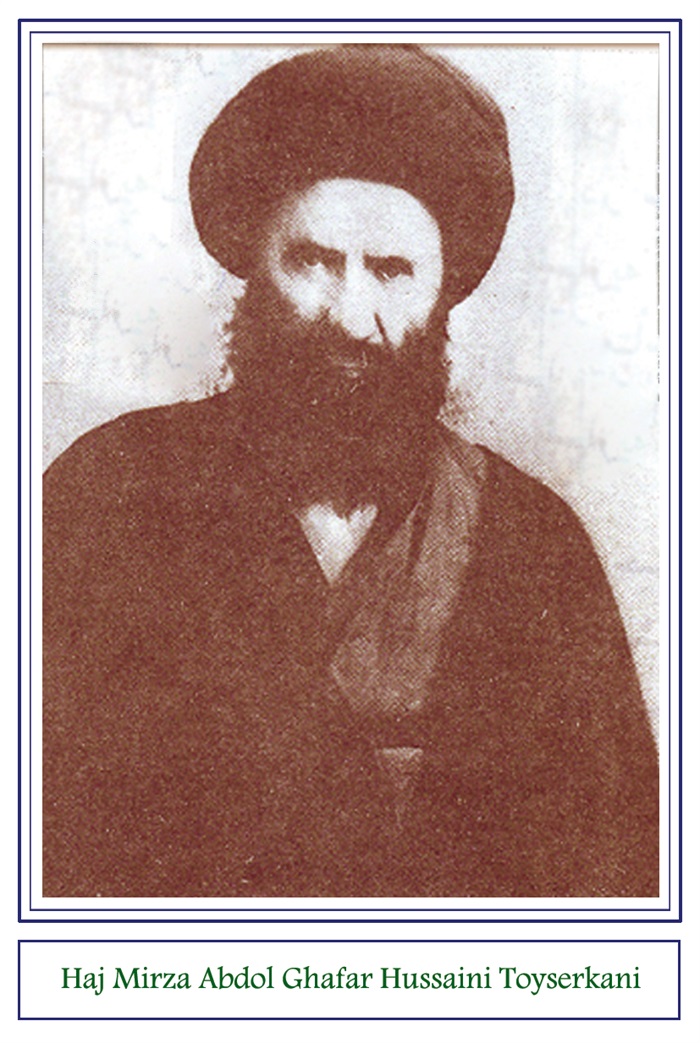
He was the author of 'Notes on Asfar' and 'Notes on the Explanation on Isharat' and 'Notes on Sharayeh'. In his time, he was one of the Grand Ayatollahs and a comprehensive scholar on philosophy and logic, who learned from the distinguished figures of the day, Hussain Ali Toyserkani and Agha Mir Sayyed Mohammad Shahshahani. He was the son of Sayyed Mohammad Hussain Hussaini and died in 1329(AH).

Mir Sayyed Ali Ayat Najafabadi
He died in 1362(AH) after a modest, fruitful life as a comprehensive authority in Islamic studies, especially in Fiqh. Not many religious scholars achieved his level of knowledge in logic, Hekma and jurisprudence. Although he was a profound thinker, he chose to
P: 131
preach to the public and socialise with them whenever necessary. The lay people and the highly educated scholars loved his Quranic interpretation sessions held in Ramadan in Sadr School every year. Among his students were some very famous and distinct figures such as Haj Mirza Ali Agha Shirazi, Mir Sayyed Ali Alameh Fani, the Lady Ameen (Bannu Ameen) and Sayyed Abol Hasan Shams Aabadi.
Haj Sayyed Mohammad Ali Mobarakei (d. 1365 AH)
He was a famous theologician and a literary man. He was also a famous preacher who used to attract an audience with his eloquent speeches. He wrote more that thirty different books, ranging from books on Isfahan’s history and the life accounts of important people, to selections of poetry.

He was gifted poetically as well as literary. When writing poems he used his penname 'Safa'ei' (refreshing);
'I'm engaged with a love whose name I am unable to utter,
Her lips are eternal pearls.
I asked her if she could step into my dreams.
'Lovers never sleep' she said, 'never mind dreams.'
Haj Mirza Mohammad Bagher Toyserkani
He was a student of Ayatollah Mirza Badi' Darbe Imami and Akhoond Kashi. He, like his father, was among the virtuous and pious scholars of the time. His fruitful life ended in 1374(AH). During his life, he produced some valuable written sources, including 'Comments on Rooh-ol-Bayan Interpretations', 'The
P: 132
Garden of Paradise: on the Life of Imam Mahdi' and 'The Life Account of Fatima (Peace Be Upon Her).
Mirza Abdol Hussain Qudsi
Son of Mirza Mohammad Ali Khoshnevis, he died in 1366(AH). Being a distinct calligrapher and a poet, he founded the Qudsieh School, which was among the modern schools in Isfahan. His calligraphic mastery was so famous that everyone knew how skillfully and artistically he had imprinted the 'Tohid Surah' on a grain of rice. In his lifetime, he had the honor of being a student of Akhoond Kashi. The school he founded contributed greatly to the world of science and culture by educating some prominent scientists and intellectuals.
Haj Mirza Habibollah Nayyer
He was the son of Sheikh Mohammad Bagher Waseq who learned from Sheikh Mortaza Rizi and Akhoond Kashi. He was an authority on the Arabic, Persian, literature and mathematics. His main work was composing poems with verses signifying dates of death according to ABJAD alphabetics.
'My life has turned now into fall,
I hope the breeze of His mercy,
Blows away the leaves of my sins.
The graveyard also includes the tombs of many other reknowned Isfahani dignitaries. Jamaloddin Qudsi (calligrapher and literary figure who died in 1394 AD), Mirza Mehdi Qudsi (calligrapher, died in 1378 AH, son of Mohammad Ali), Sheikh Mohammad Bagher Vaseq Hamedani (a poet who died in 1336 AH) and Sayyed Ali Badi' Zadegan, who died in 1387(AH), and was famous for his poetic style in expressing Quranic verses, are all buried here.
P: 133
The history of the graveyard dates back to the Qajar period. It was laid by Sayyed Mohammad Ali Ameen Tojjar (the father of Lady Ameen). However, the beautiful and attractive mausoleum was built in the time of the Islamic Republic. The building is unique among other mausoleums in the sense that it combines modern and Islamic architecture. The shape of the building symbolizes the hijab of a Muslim woman. At the top part of the entrance to the mausoleum, a seven-colored inscription written on beautiful tile works displaying verses of the Quran, as well as vaulted works can be seen. The interior part of the mausoleum has been decorated with traditional tile work on the walls. Lady Ameen's gravestone is situated right under the high-rise dome.
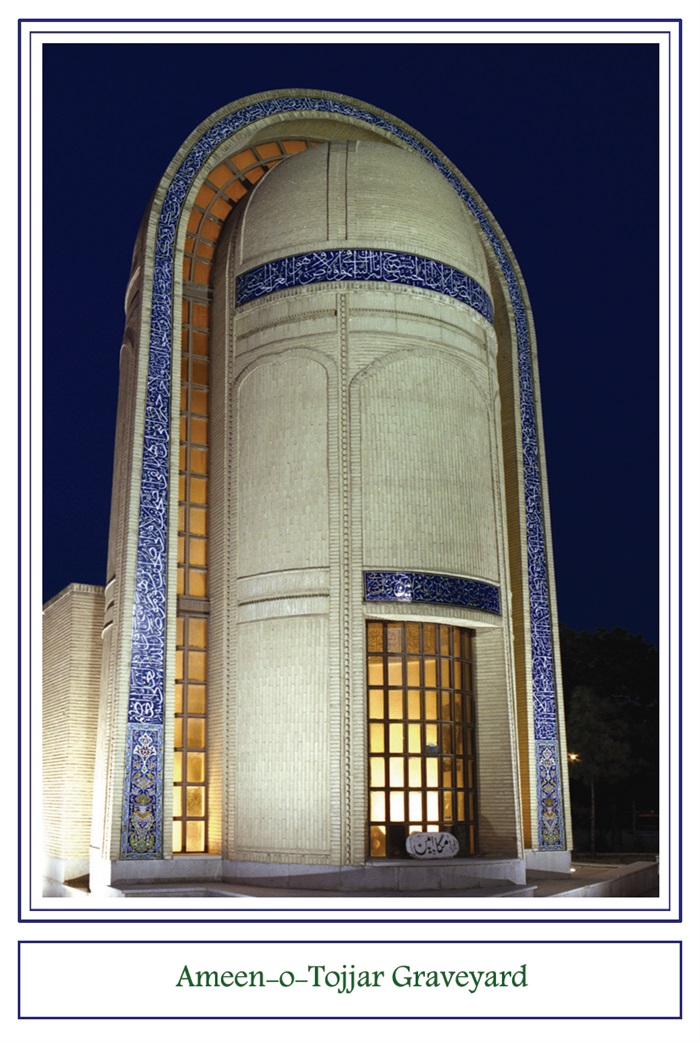
The dome is situated at the northern side of Sa'adat Aabad Street and on the west borders the Haj Agha Majlis graveyard and
P: 134
on the east with the Agha Mohammad Bid Aabadi graveyard. He wrote many different sources on various subjects such as philosophy, mysticism, ethics and social issues.
Banoo Ameen (d. 1403 AD)
She was born in 1308(AH) to a well-known rich family in Isfahan. She started learning the Quran when she was four and by the age of thirteen, she was fully competent in Arabic language and literature. From then on, she started to study Islamic sciences, and by the age of forty she was among the high ranking religious authorities in
Isfahan. She was given a permit to exercise and propogate her interpretation of religious teachings and was recognized as a Mujtahid (highest level of religious authority) by revered religious authorities (Marajeh) such as Ayatollah Sheikh Abdol Karim Ha'eri (the founder of the Qom School of Theology), Sheikh Mohammad Kazem Shirazi, Ayatollah Sheikh Mohammad Reza Najafi and Ayatollah Mar'ashi Najafi. She founded a school for women in Isfahan and for some time she wrote books and articles under an anonymous name of 'An Isfahani Lady'. Her passion for knowledge was so great that her teacher Ayatollah Mir Sayyed Ali Najafabadi reported that when she lost her son or when her son died, she did not cancel her classes. When asked to call off her sessions, she refused and said her son was resting in peace and there was no point in calling off the classes. She was once asked what priorities women should pursue in society; she said the best jihad for women is to keep hijab. She believed that purity and chastity are the very distinct qualities that constitute the female novelty and dissency in society. The late poet, Sepideh Kashani, wrote the following verses on her death:
'That reference of piety and virtue in the way of science,
Sought assistance from the All-knowing,
She was welcomed by 'The Lady of the Ladies' of the world,
When her soul embarked by the promised fountain of 'Kawthar'.'
P: 135
The name of this graveyard is attributed to Mirza Soleiman Agha Bashi, who was a close relative of Zell-o-Soltan, the Qajar Amir of Isfahan. He laid the graveyard for the burial of the dead of the Ne'matollahi dynasty, who were renowned sophists in Isfahan. The graveyard borders Mir Avenue on the north, the general cemetery on the south, Sayyed-ol-Araghain on the east and the Khatoon Aabadi graveyard on the west. This graveyard is accessible through a passageway from the Khatoon Aabadi graveyard. Both the northern and the southern sections of the graveyard contain the graves of the dervish sophists of the Ne'matollahi dynasty. In the center of the graveyard, some famous sophists have been laid to rest in a basement. This basement and the building on the top were constructed by Mirza Abdol Hussain Mirpanjeh who was a senior military officer in the Amir’s army. His grave is also within the basement. On the northern side of the graveyard, in one of the rooms, the grave of Agha Bashi can be found. The architecture of the building in the center of the burial site is simple, without a dome, which would resemble in some ways, palace architecture.
P: 136
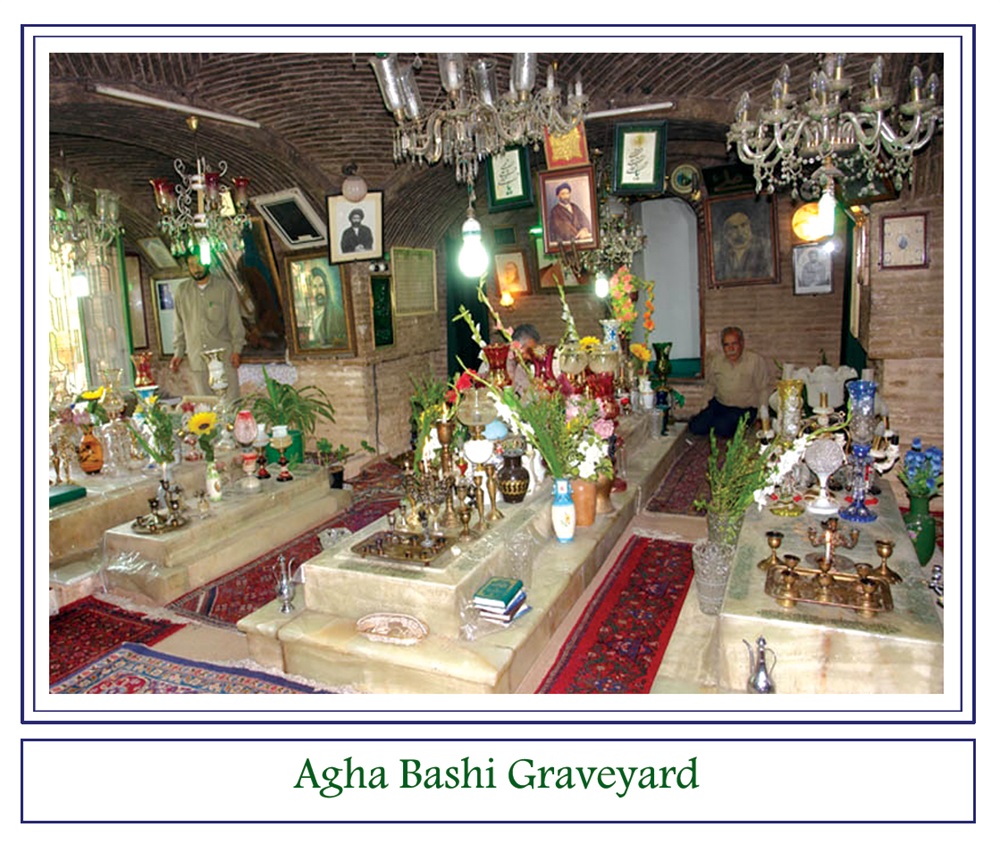
Mirza Abbas Saber Ali Shah
He was the son of Mir Mohammad Hadi, and as a sophist of the Ne'matollahi chain of families, was famous for being very sociable with a highly elevated spiritual and pious soul. He died in 1350(AH). This fragment of a poem symbolizes the date of his death:
'All his life, Abbas sang the song of love,
He became drunk and then quiet,
Finally, went after love.'
P: 137
Mir Mohammad Hadi Ne'matollahi Khatoon Aabadi
Known as 'Hadi Ali Shah', he died in 1311(AH). His father was Haj Mirza Mohammad Hussaini. This sophist was the first in the chain of the Khatoon Aabadi family who paved the way for mystical and agnostic ideas. In fact, Agha Bashi, the founder of the present structure, built the basement and the second floor structure in his memory.
Dr. Ebrahim Ne’matollahi
He was the son of Haj Mirza Ali Akbar Paqale'ei and was the author of many modern medical sources including, 'The Principles of Nutrition' and 'Phyisiology'.
Mirza Soleiman Agha Bashi
He was one of the close associates of Zell-o-Soltan, and was famous for his sophistic ideas. His respect for Saber Ali Shah (Mir Mohammad Isma'eil Khatoon Aabadi) was legendary.
Ostad Shokrollah Sani'e Zade
He rejuvenated the miniature arts in Iran, which had become less popular since the Safavid time. His masterpieces can still be seen in holy and religious places such as Karbala, Najaf, Kazemain, Samera, Mashad and Qom.
Hussain Shajareh
He was the son of Sayyed Abdol Rasool Shajareh (also buried in the graveyard). His pen name was 'Shiva' (eloquent) and he was one of the famous poets, writers and scholars in Isfahan, in the early years of 14th century. He wrote many books such as 'A Study of Khayyam', 'The Science of Living', and 'The Life of Moulavi'. He also wrote a book on 'Geographic Economy'.
P: 138
Mohammad Ebrahim Ne'matollahi
Died in 1334(AH), he was the son of Mohammad Hussain. As a famous artist and a painter in Isfahan, his approach to painting was a mixture of both Caucausian and Persian styles.
This cemetery also includes other graves belonging to:
Mir Mohammad Isma'eil (known as the Second Saber Ali Shah, died in 1323 AH), Bagher Hamidi (a poet and a mystic in Isfahan, died in 1359 AH), Mirza Zein-ol-Aabedin Ne'matollahi (d. 1402 AH, a mystic), Mir Aboo Taleb Ne'matollahi (d. 1412 AH, a sophist), Haj Mirza Ali Akbar Paqal'ei (a sophist and a poet), Mohammad Reza Shakib (known as Shakib, died in 1403 AH, an eminent literary man and poet and a writer of 'A Collection of Poems'), and Abbas Ali Mozoon (d. 1392 AH, a poet).
In conclusion, this graveyard is famous for embracing many of those who spent their lives loving Imam Ali (pbuh) trying to be his devotees.
P: 139
Image
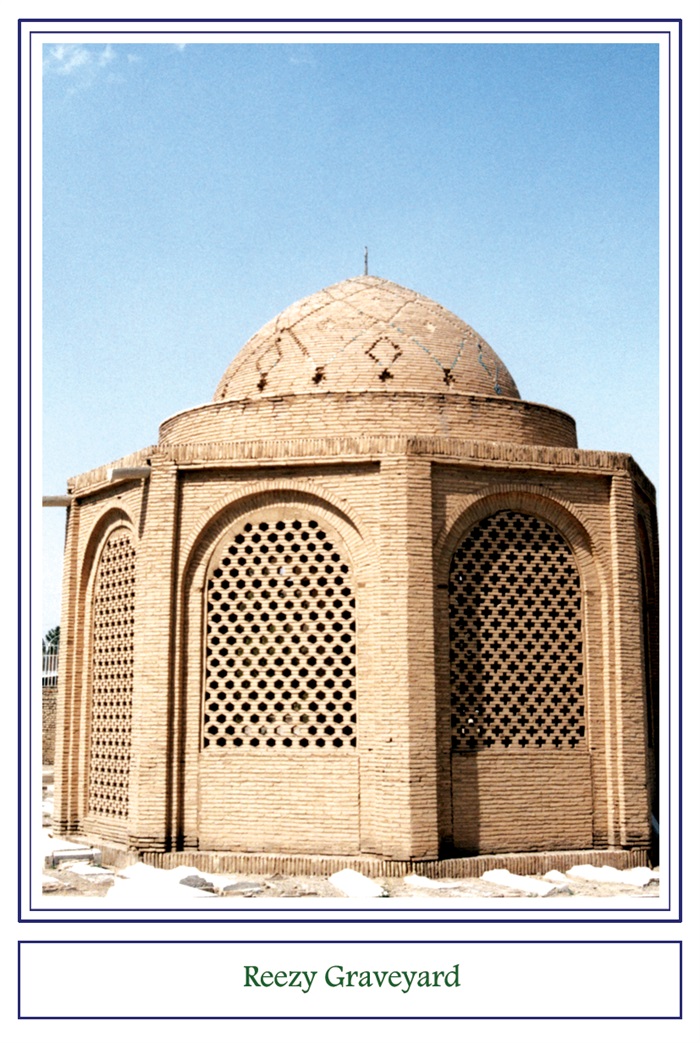
AT The very south end of Takhte- Foulad, there is a graveyard that dates back to the time of the Qajars. It was built by the late Mohammad Hussein Kazerouni (a famous wealthy benefactor of Isfahan) in rememberance for a very highly respected religious scholar of the time, Sheikh Mortaza Reezy (d. 1329 AH). This square-shaped burial ground contains an octagonal-shaped building constructed in the Qajar period. The mauselum was founded on a platform and the interior space of it is decorated with green tiles in a very delicate manner. There used to be many rooms around the site, none of which presently stand. The graveyard was repaired and renovated by the Office for the historical and religious Preservation of Takht-e-Foulad. In the south of the graveyard, there lies another rather diminutive burial ground with a small brick-made construction dating back to the late years of the Qajars in which a constitutionalist and a liberty activist of the Constitutional Revolution, Mirza Ahmad Khan Fateh-ul-Molk has been laid to rest. This burial site which is on the
P: 140
side of Saadat Abad Street from the north and the Adminstration Office of the Cemetry from the west has many dignitaries and reknowned people including Sheikh Mortaza Reezy (d. 1329 AH), who was the son of Sheikh Abdulwahab and one of the students of Sheikh Ansari. He was one of the first people who taught the very famous book (Frayad) of Sheikh Ansari in Isfahan. His sermons at Komail Prayers were so famous that more than ten thousand worshipers usually attended. The sound of his prayers were heard all over the town. His tomb is in the same place where he used to perform his Thursday evening prayers.
Akhoond Mulla Mohammad Hussain Fesharaki
He was one of the religious authorities of his time. By the time he died (1353 AH), he had gained a reputation and fame for his religious knowledge and piety among the people of
Isfahan.
Mirza Abul Hasan Toyserkani, Sheikh Mohammad bagher Ghazvini, and Sheikh Mahmoud Mofid were reknowned students of his. Among his great written works are his comments on some books of Sheikh Ansari.
Mulla Mohammad Javad Adinehee (d. 1339 AD)
He was a Philosopher and a highly respected religious scholar. He was among the students of Jahangir Khan Qashghaie. After Jahangir, he taught philosophy, astronomy, and mathematics in Isfahan. Mirza Hasan Khan Jaberi Ansari and Jalal Homai were among his prominent students. One of the great authorities of the time, Sheikh Agha Bozorh Tehrani, once named him as the pioneer of philosophy and science in his own time.
Sheikh Abulfazl Reezy
He was Sheikh Mortaza's brother. As a distinct scholar and a researcher in jurisprudence, he applied the teachings and laws of Islam in the society. He obtained his permit to apply his religious authority from highly prominent Grand Ayatollahs of the time,
P: 141
Mirza Fathollah Rashti, Agha Muhammad Kazem Yazdi, and Akhoond Khorasani.
Mulla Lotfollah Shams-u-Waezeen (d.1356 AH)
He was the son of Abdulhussain. He authored a book 'Jawaher-ul-Hekam', meaning 'the Jewels of Philosophy'. His sermons were very famous for their truth and sincerity.
Muhammad Hussein Mirza Khaghani (d. 1333 AD)
He was the son of Muhammad Vali Mirza. He was very insightful poet and a distinct literary figure with a pen name 'Fasih' (Eloquent). He composed the following poem acclaming Imam Ali:
'Oh, My love, tell me where you found all this charm and fascination,'
'Our enchanted hearts have no way to know oh thou 'love of creation''
'Oh you who hunted the hearts wth the net of reason and explanation'
'The whole world saw you not in person but rejoiced in your admiration'
Mirza Ali Muhammad Abrishamkar
He was a poet and a literary man who died in 1338(AH). His pen name was 'Fanaii' (fragile).
Sayyed Abdulali Marandi (d. 1354 AH)
He was the son of Sayyed Ahmad. He was a highly respected man of his time famous for his piety and self-discipline.
Sayyed Taghi Rastghalam (d. 1390 AH)
He was a prominent poet in Isfahan whose pen name was 'Haghighat' (truth). He wrote many ethical and religious poems.
P: 142
Mirmohammad Mehdi Khalighipour (d. 1379 AH)
He was the son of Sayed Abduwahab Taleghani. He was one of the great calligraphers of the time who created many beautiful artistic pieces.
Abdul Rahim Afsar and the master of calligraphy, Habibullah Fazaeli were among his students.
Mostafa Fateh (d.1398 AH)
He was the son Mirza Ahmad Khan Fateh-ul-Mulk. He was famous for being a writer and an expert in the oil industry. His books 'Fifty Years of Oil in Iran' and 'Money and Banking' display his economic knowledge and expertise.
Late Musician, Master Abdul Hussein Barazandeh (d.1391 AH)
This renowned Isfahani music composer and expert was born in 1313 (AH) to the family of Abduwahab Sadri. During his lifetime, he made some of the eternal songs sang by some of the most famous Isfahani lyric singers such as 'Taj Isfahani'. His art of making songs soon were praised and approved by the dignitaries like Darvish Khan, Aref Ghazvini, Abulahasan Saba, Malek-ul-Shoaraye Bahar, Reza Mahjoobi, and Moshir Homayoon Shahrdar.
Came into bud but I was never seen by the beloved,
Petty that wild flower I am which was destined to grow in the ruin.
P: 143
This graveyard ,bordering Saadat Abad Road on the south, Ayatollah Khansari on the west, and Ameen-u- Tojjar graveyard on the east, dates back to the Qajar period. It includes the tombstone of a much respected learned man in Isfahan named Sayyed Abo Jaafar Khadem-u Sharia (d. 1324 AH). The graveyard was opened by his son Haj Agha Majles and for this reason it is sometimes called 'Majles Graveyard”. The area of this graveyard has halfed in size, nevertheless when the nearby Saadat Abad Road was built almost half of the graveyard was demolished and annexed to the road. In the middle of this graveyard, there is a small octagonal brick-made building which has small netlike windows. On the west side of the graveyard, there are rooms containing the tombs belonging to the Agha Mirza Muhammad Bagher Hakim Bashi dynasty who was a well-known physician in Isfahan in the time of the Qajars. In the northern part of the graveyard, on a platform, there are a number of graves belonging to the Shafii Family. The most famous of which is the tombstone of the once famous jurist scholar, Mirza Yahya Mostofi Bidabadi. The Ameen-u-Tojjar graveyard was previously part of this site but, later, with the construction of Banoo Ameen burial chamber, became a separate burial ground.
Agha Sayyed Abojaafar Khadem-u-Sharia (d. 1324 AH)
He was the son of Allameh Agha Sayyed Sadr-u-Din Ameli Isfahani and one of the decendants of Sheikh Jaafar Kashef-u- Quta. He was
P: 144
famous for his piety, worship, contentment, and genuinness among the people of Isfahan.
Mirza Yahaya Mostufi Bidabadi (d. 1325 AH)
He was the son of Mirza Shafii. A student of Sheikh Mortaza Ansari and the author of more than 30 books, he was a researcher and a religious authority in contemplative and narrative sciences. His books include 'A Dissertation on Tax and Divisibles', 'A Dissertation on Khums', and some other writings on various religious principles.
Haj Mir Esmaeal Rizi (d. 1338 AH)
He was among prominent scholars in the city who had gained knowledge from high-ranking academics of the time such as Mirza Shirazi and Muhammad Kazem Tabatabai Yazdi.
Haj Mirza Muhammad Bagher Hakim Bashi (d. 1327 AH)
The son of Mirza Abdul Javad Khorasani was a well-known medical practitioner of Isfahan in the time of Qajars. He was tutored by outstanding scholars such as Sayyed Mohammad Shahshahani and Mulla Hussein Ali Toyserkani. In addition, he reached high levels in different sciences such as medicine, logic, hikma, and literature. His attempts at curing patients were said to be miraculously successful. He was acknowledged to have the ultimate say in traditional and old medicine in his own time. Mirza Abdul Javad wrote some books including a book on cholera.
Dr Mortaza Hakami (d. 1359 AH)
He was a contemporary, unparalleled Isfahani surgeon who gained academic recognition and prestige both inside and outside the country. He was famous or his humanistic attitude toward the poor and the sick.
P: 145
Rokn-ul-Mulk Mosque
Next to the Valleh graveyard, there is a big and beautifully constructed mosque that was founded by Soleiman Khan (d. 1331 AH), a benefactor and reputable Isfahani merchant. The land on which the graveyard is laid, was part Valeh Garden and his own personal property. The construction of the mosque took around seven years, between 1318 and 1325(AH). The mosque comprises of two courtyards: a grand courtyard and a small one. It is comprised of two sections; The grand one which contains a large dome, an auditorium, front yard, and a pool. The minor courtyard includes a water reservoir. At the entrance to the minor courtyard there is a delicately built and beautifully constructed portal. The tomb of the late Rokn-ul-Mulk is situated in a room between the grand and minor courtyards. In the room, a large and distinguished portrait of him can be seen.

Image
P: 146
Image
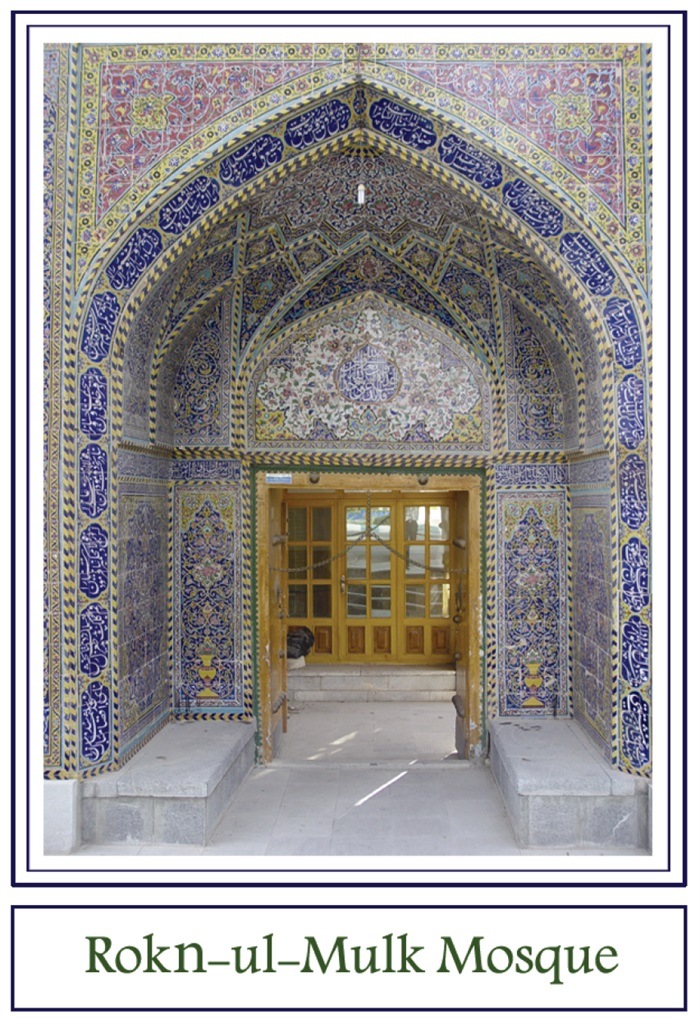
The major courtyard is of rectangular shape and four-porch construction, the double -shelled roof dome standing in the southern part of the yard has been decorated with harmonious arabesque patterns, colored in azure blue.
Rokn-ul-Mulk Mosque can perhaps be regarded as the most spectacular edifice of Takht-e-Foulad attracting the attention of every viewer. At the portal of the entrance door, one can see some blessed verses of Holy Quran; " Glory to Whom that made His servant traverse.
P: 147
Image

Haj Mirza Suleiman Khan "Rokn-ul-Mulk Shirazi"

The son of Mirza Mohammad Kazem died in 1331(AH). He was one of the greatest political, charitable, and reputable men in the Qajar era. He was known as Rokn-ul-Mulk (the Pillar of the State) and his alias was 'the legitimate'. His contribution to the publication of religious literature made him a distinguished benefactor. His love and attention were immensely directed toward
P: 148
religious scholars, mystics, and the poor. In addition, he was one of the political and influential figures of the Constitutional era. He was also known for his love of poetry and literature and held regular poets gathering at his house.
Haj Sheikh Ismael Kalbasi
The son of Haj Mirza Muhammad Reza Kalbasi, died in 1397 (AH). The author of valuable works such as, ' Pilgrimage Place of Ahwaz' (about Ali Ibn Mahziar, the devotee who met the Mahdi in person) and 'Commentary on the Companion to Komail Prayers' and many other treasured works.
Haj Agha Sadrudin Kalbasi
He was born to Haj Mirza Muhammad Reza Kalbasi and died in 1411(AH). He was among those pious religious scholars who obtained knowledge at the threshold of some distinguished grand Ayatullahs such as Boroojerdi, Marashi Najafi, and Haj Agha Rahim Arbab. He spent some time praying and preaching to people at the Mosque.
Haj Agha Fakhrodin Kalbasi
Being a distuinguished scholar and a literary man as well as a very eloquent preacher, he was much admired by members of the public in the city. He was among the founders of Ghaemiyeh and Ahmadiyeh Complexes. His life ended in 1407(AH) and was buried next to his father, Haj Mirza Muhammad Reza Kalbasi, by the Mosque.
Dr. Hasan Kalbasi
He was an economic scholar at the University of Isfahan and one of the key administrative figures of the University who was once the head of department of Economics. Many people knew his contribution in the Imposed War as the organizer of aids and supplies. His genuine behavior and honesty were two important characteristics that endeared him to his colleagues and students.
P: 149
Image
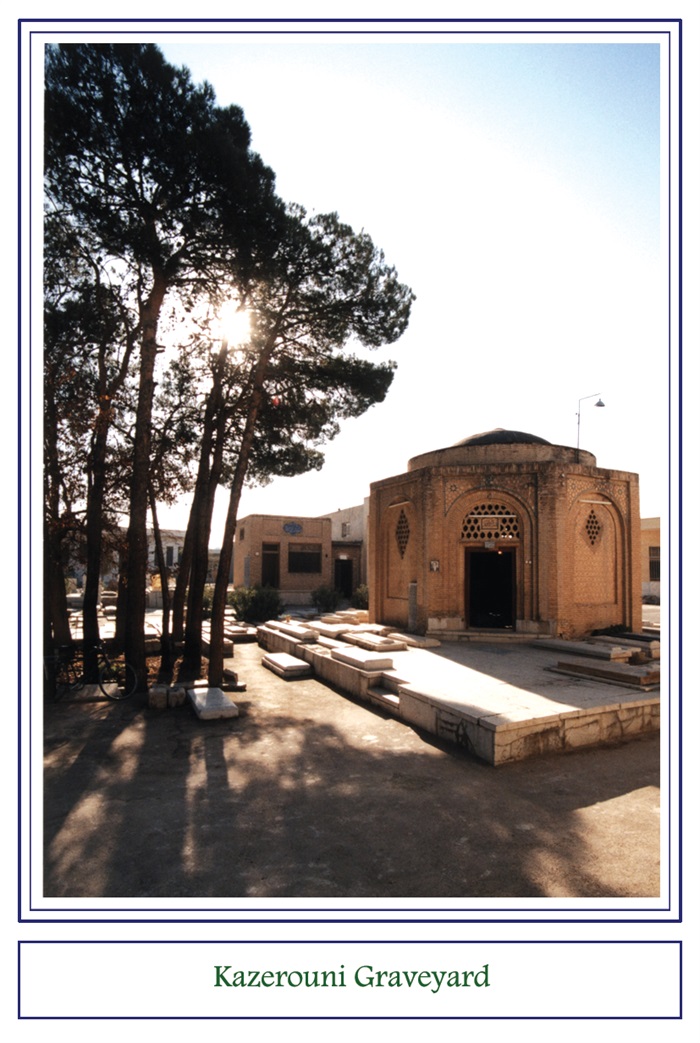
This is another beautiful and very peaceful burial grounds dating back to the Qajar period. It is located on the south and west of Feiz Graveyard ,and on the north of Zanjani graveyard. It also borders Baba Rukn-u-Din Street on the west. A very well known and reputable benefactor in Isfahan, by the name of Haj Mohammad Hussein Kazerouni, built this graveyard. After the death of Akhoond Mulla Abdul Karim Gazi in 1339(AH), a mausoleum was built over his grave. The burial site has been encircled by sanctuary rooms in which graves belonging to important people remain. This graveyard has always been used for religious ceremonies and prayers. In every sense, burial site is equipped with all the facilities for visitors. An important construction seen in this graveyard is the octagonal shape building in the northern part of the graveyard, which has unique social applications not seen anywhere else. There is also a water reservoir in the northern part of the yard supplying the needed water. On the south of the site, there is a mosque at the entrance of which some beautiful ceramic
P: 150
works and arabesque patterns may be seen. There is a great auditorium with stone pillars giving a very pleasant atmosphere to worshippers. The mausoleum of the graveyard is in the middle of the graveyard on an octagonal platform. This magnificent structure has been built decorated with a number of brick work windows. The mauselum contains a number of the graves belonging to different religious scholars of the time. In the south eastern part of the site, a room exists which belonged to the late Seddighain (one of the prominent Ulema). This enshrines many deceased religious scholars. The rooms all around the graveyard are still in good shape. What can be seen in Kazerouni Graveyard resembles the lay out of an old house in Isfahan showing an association between secular thought and Islamic concepts of the hereafter. Outside the graveyard, in the noth part, a burial chamber resembles that of Hafez in Shiraz. The son of Muhammad Husein Kazerouni in memory of his father built this chamber. Another distuinguished architectural piece in this graveyard is the square shaped Water Reservoir in the northwestern part of the graveyard. The reservoir is comprised of eight ‘iwans’ (roofed verandahs) and four minarets. The ‘iwans’ provided a shade in hot summer days to passersby and visitors.
Mulla Abdulkarim Gazi (d. 1339 AH)
The son of Mulla Mahdi, he was a highly respected scholar among the public who was famous for being a literary man and an authority in ‘Ilm-u-Rijal’. He wrote many books including ‘Tazkirat-u-Ghobour’ (prayers of graves) that contains some useful information on important people buried in Takht-e-Foulad. He was a much loved scholar among the people and famous for being well spoken. On his piety, it has been recorded that he was the judicial authority in Isfahan for more than thirty years, but
P: 151
when he died, his family were left behind without any food and fuel. The following poem about ‘hypocrisy’ is attributed to him:
“Those who like to escape hypocrisy in the soul,
Should attempt to run away from people’s praise,
Look inside you to see how entangled you are in the chain of hypocrisy,
It is more hidden than the sound of the footsteps of an ant walking on a ceramic tile,
Now tell me how it is possible to free yourself from it.”
Agha Sayyed Mohammad Bagher Dorchehee (d. 1342 AH)
The son of Sayyed Mortaza and during his blessed life became a full master of religious sciences and a Grand Ayatollah. He authored a sixteen volume book on jurisprudence. He taught and researched for thirty years at Nimavard
School. He had a number of students who later became prominent features in the world of Shiite. These include Sheikh Ismail Moezzy, Ayatollah Borojerdi, Haj Agha Rahim Arbab and more than fifty other distinguished scholars. Mirza Hasan Khan Jaber Ansari composed the following poem that signified the date of his death:
Out of certainty cried one and said:
Bagher headed toward certainty through certainty.
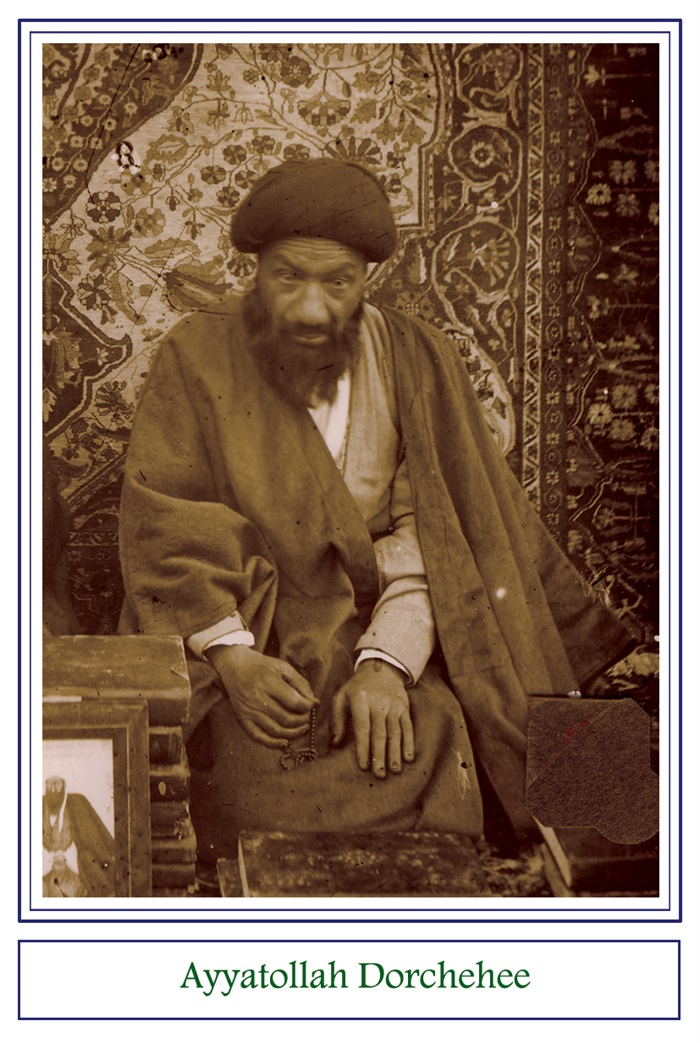
He was known for his love of school and schooling and being punctual in his classes. He was also known to modestly admit to what he did not know. Every time he was asked something that had no knowledge about, he would acknowledge it in a
P: 152
loud voice apprrently to encourage the students to be sincere in their discussions. Homai records that. " When he was at his best health, his food was very simple including bread, onions and some herbals. He was indifferent toward secular matters as though he were an angel having fallen from the heaven to train the creatures on earth. I used to see that he was offered a lot of money as 'Sahme Imam' (religious taxes) and he would not accept, though I knew that all he had were a few worthless coins in his life."
Once a week, he went to his home village, Dorcheh, and brought back with him some bread and yoghurt to survive on all through the week. It is also said that he once turned down the offer of Reza Khan to meet him despite the fact that he was a scary despot. His dead son, Dr Muhammad Mehdi Razavi is also buried next to his grave. He was a dedicated medical practitioner who spent all his life treating people, especially the poor, free of charge and with care.
Haj Mohammad Hussein Kazerouni (d. 1351 AH)
He was the son of Haj Mohammad Jaafar. Being a well-known, reputable charitable merchant in Isfahan, he left behind a great number of contributions, donations and charity organizations in Isfahan. His fame for being a man of help to the needy is known to every Isfahani and will remain so for a long time. Some of his charities can be seen in Takht-e-Foulad too. During the Constitution Movement, he and some distinct dignitaries of Isfahan, such as Haj Agha Norrullah Isfahani, set up an Islamic Corporation that
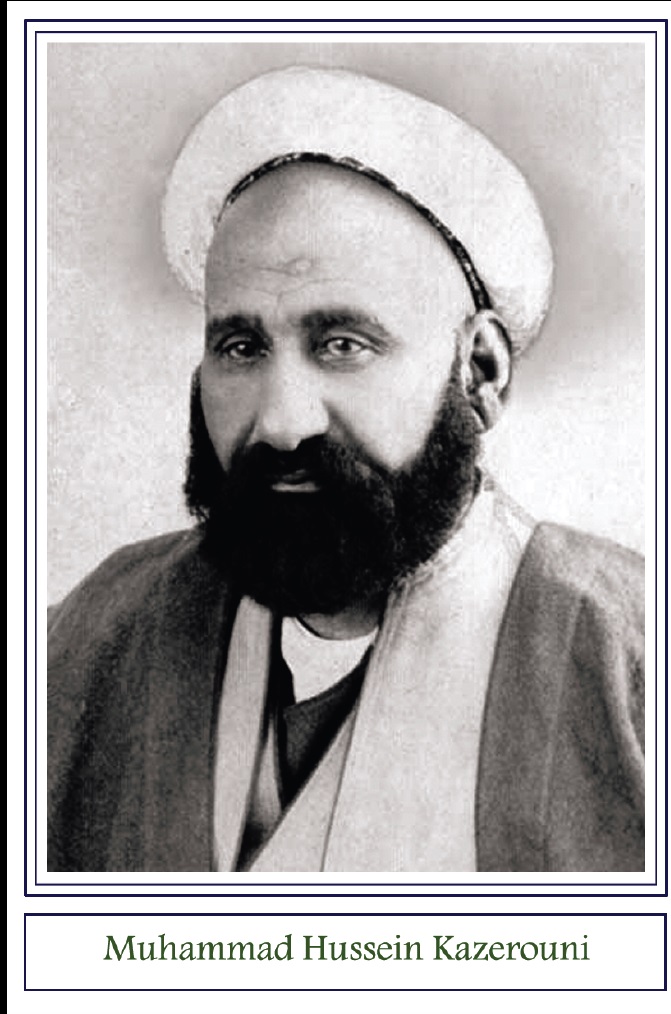
Image
P: 153
aimed to support the home made products over foreign made goods. His bones were transferred to the holy city of Najaf to be buried next to the shrine of Imam Ali.
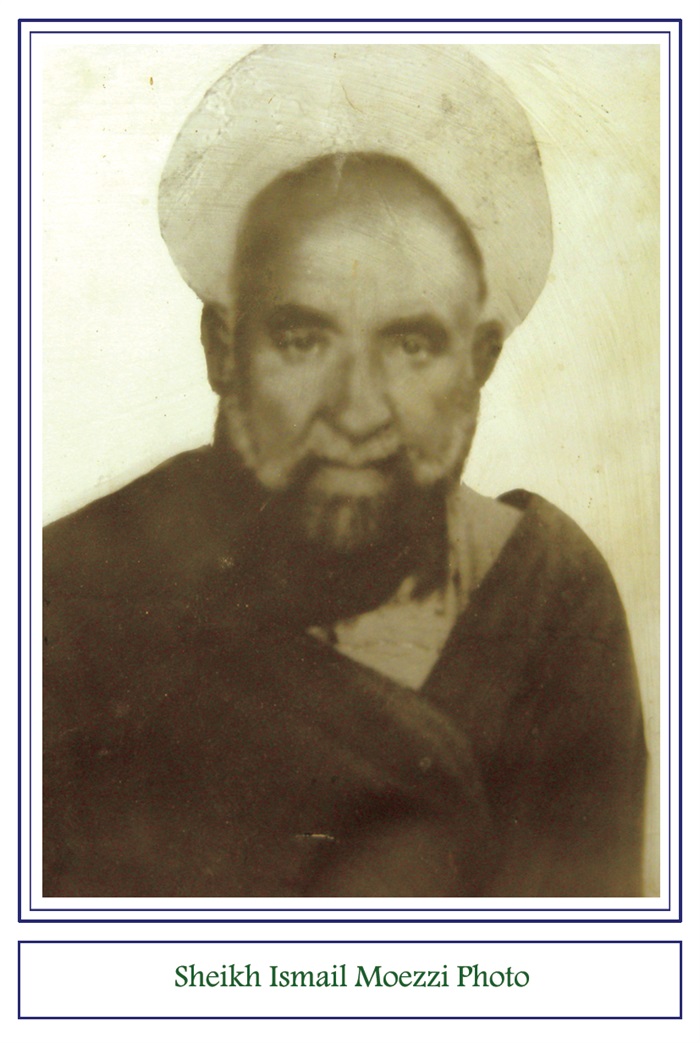
Sheikh Ismail Moezzi (d. 1363 AD)
This great Scholar is known for his piety and vitue among the people of Isfahan. He used to hold prayers and sermons at Salam Mosque. Having had some mystical experiences, it is said that he had the honour of meeting The Mahdi once in his life. He wrote as many as thirty books on different religious issues.
Sheikh Muhammad Hassan Alem Najafabadi (d. 1384 AH)
Sheikh Muhammad Hassan was a famous preacher in Isfahan and a lecturer of Isfahan Theological Center. He was best known for his preachings on ethical issues. His words penetrated into the hearts of his listeners. It is narrated that once in the presence of Haja Agah Rahim Arbab and Haj Mirza Ali Agha Shirazi, Sheikh Muhammad Hassan started preaching to a large mass of believers in the Jadeh Bozorg School. When he started talking about the Day of Judgement, many people, including Shirazi and Arbab, started weeping in a way that the whole mass of listeners were deeply touched by his words.
P: 154
Haj Sheikh Muhammad Bagher Sedighain (d. 1414 AH)
He was famous for interpreting dreams according to the Holy Koran and famous for his attempts in purification of his soul. His prayers in Sedighain Mosque on present day Tohid
Street were a place for the believers to seek help from his interpretation of dreams and counsel from the Book.
Sheikh Muhammad Bagher Faghih Imani (d. 1370 AH)
This scholar,
expert in Koranic interpretation and Hadith as well as a researcher authored more than seventy books whose topics relate to the life and characteristics of Imam Mahdi, such as ‘How to Help the Ghaem – e-Alemohammad (Madi)’, ‘The Great Ascent’, and ‘ the Flames of Separation’.
Sayyed Mahmood Moosavi Darb-e-Imami (d. 1372 AH)
Son of Sayyed Abdul Ali Moosavi, he was a learned scholar and a researcher in the field of narration. He was also a distinguished preacher whose audience included many prominent social groups of the time. Grand Ayatollahs such as Sayyed Mohammad Bagher Dorchehee were among the ones who listened to his sermons.
This graveyard also contains the graves of many other people who played significant roles in the society in their lifetime. They include scholars like Sheikh Muhammad Hassan Rozati (d. 1380 AH), son of Mirza Ahmad Ibn Muhammad Bagher Chaharsooghi; Agha Muhammad Noori (d. 1372 AH), a literary man and a preacher); Sayyed Mortaza Khorasani (d. 1357 AH), researcher and a pious jurist; Sheikh Hebatollah Harandi, son of Sheikh Mohammad Ali (d. 1366 AH), a lecturer in literature and jurisprudence at Sadr School; Haj Mirza Hashem Kalbasi (son of Mirza Abdujavad, died in 1358(AH), one of the descendants of Haji Kalbasi; and Sayyed Mehdi Dorchehee (d. 1364 AH), a great jurist and a scholar who became a comprehensive religious authority in Isfahan.
P: 155
In addition to the graves inside Kazerouni graveyard, there are a number of tombstones outside the graveyard. They include:
Akhoond Mulla Muhammad Sadegh Ardestani (d. 1134 AH)
The son of Haj Muhammad was a great man of ‘Hikma’ of the time of Safavids. He taught ‘hikma’ in different schools in Isfahan. Many great scholars like Mulla Hamzeh Gilani and Sheikh Muhammad Ali Hazin had the opportunity to obtain knowledge from him. He was buried at the southeastern foot of Khaju Bridge. When the nearby road was constructed, his bones were transferred to the present place next to Darvish Naser Ali’s tombstone. He authored a few books on the “Interpretation of the ‘Light’ Verse” and “A Commentary Note on Shafa”.
Darvish Naser Ali Golkar
Mirza Muhammad, known as ‘Naser Ali’, was one the mystics of the 13th Century and a companion of Karim Khan Zand. For a while, he was a follower of Noor Ali Shah and then some spiritual changes occurred in his life so he isolated himself from worldly affairs and started disciplines of the soul and spent rest his life worshipping.
Mirza AbdulJavad Khateeb (d. 1350 AH)
Son of Sheikh Abdullah, he was among prominent orators and poets in Isfahan. He was known for his skills in poetic techniques, especially in poems signifying date of death. Every time a poet died in his time, he wrote a poem signifying his date of death. His grave is situated near the water reservoir in the graveyard. Of his masterpieces, we can name the inscription at the portal of Sadr
School as well as the writing at the top part of the entrance to the Kazerouni Water Reservoir.
P: 156
Sheikh Asadullah Izadgoshasb (d. 1366 AH)
His father was Mahmood; he was taught by great scholars such as Akhoond Kashi, Jahangir Khan Qashqaie, and Shekh Muhammad Bagher Estahbanati. He was given the title ‘Darvish Naser Ali’ by Saleh Ali Shah. In addition to mysticism, he was involved in Koranic interpretation. His intuition and knowledge in poetry inspired him to rewrite the Holy Koran chapter ‘Joseph’ poetically, thus leaving a great effect on the reader.
P: 157
At the south end of the Takht-e-Foulad cemetery, there exists a graveyard dating to the late years of the Qajar period. This burial site was laid after the death of Haj Mirza Abulhasan Broojerdi Tabatabai in 1348(AH). This graveyard is also known as ‘Darb Kooshkie Graveyard’ because Mirza Abulhasan in his lifetime had lived in the ‘Darb-e- Kooshk’ district. There is mausoleum in the center of the burial site. Also, there are indications that all around the graveyard, there existed a number of rooms ruined through the course of time. This graveyard is also famous for having the tombstone of a very famous, good- humoured and well spoken Isfahani orator and preacher, “Samsam’ whose tomb is always frequented by various group of sightseers.

Image
P: 158
There are over forty gravestones belonging to various prominent members of society in this yard.
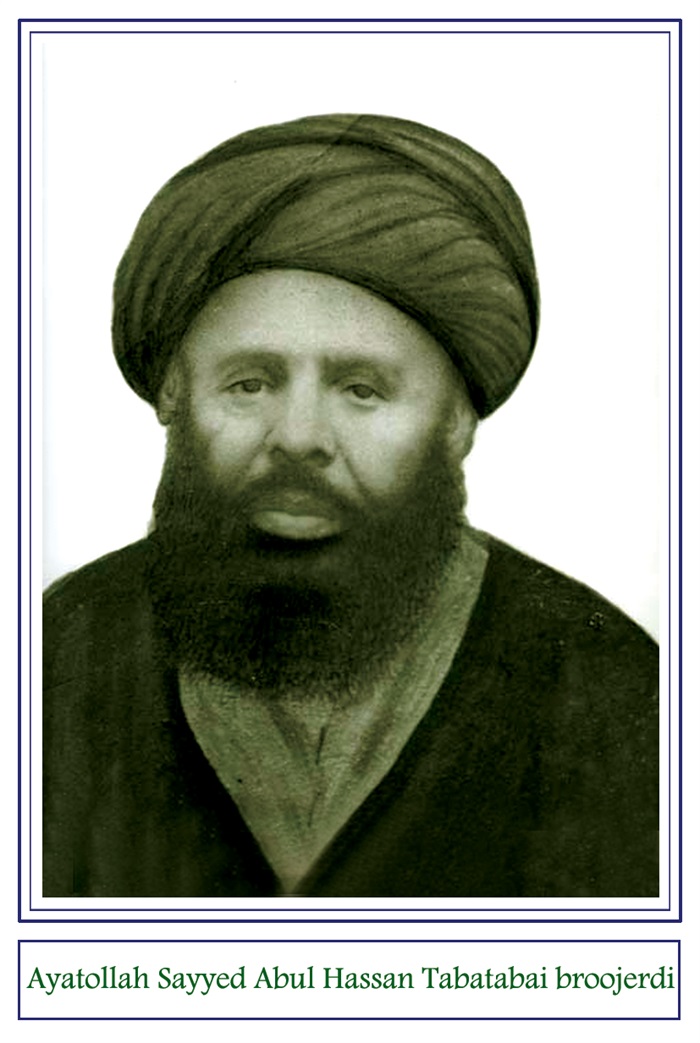
Ayatollah Sayyed Abul Hassan Tabatabai Borojerdi (Darb-e-Kooshki)(d. 1348 AH)
He was the son of Mir Sayyed Ali Borojerdi who, as well as his father and brother, were highly respected by the public in Isfahan. He was among prominent jurists and mojtahids who taught theological subjects for many years. His late father is buried in Khansari graveyard and his brother in Haj Agha Majlis graveyard.
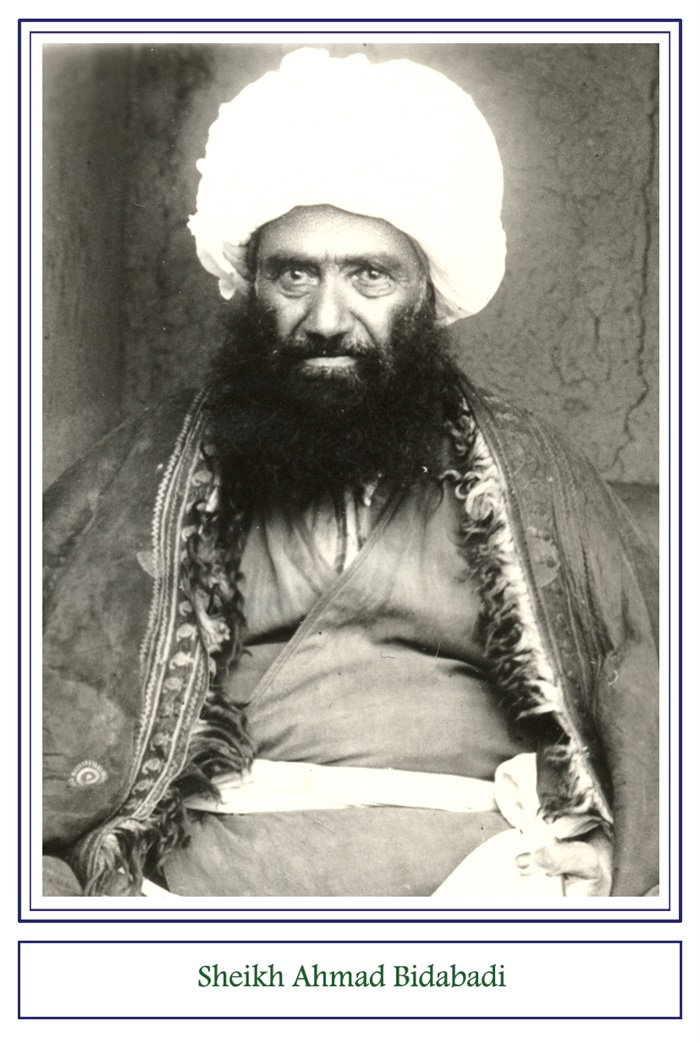
Sheikh Ahmad Bidabadi (d. 1357 AH)
He was the son of Mirza Muhammad Javad Mojtahid Hussein Abadi . He was a distinct mojtahid and faqih of his time. He was famous for becoming a great scholar before he was fifteen years old. He was the elder brother of Grand Ayatollah Sheikh Mohammad Ali Shahabadi (the master of mystysism who was the teacher of
P: 159
Imam Khomeini). Sheikh Ahmad was known for having a very powerful memory, being intellectually competent in jurisprudence, loving the Imams, and loving people and being kind to them. For fifty years he performed prayers in the Bidabad District.
Sayyed Sadr-u-Din Hateli Koopaii (d. 1372 AH)
He was the son of Hussein Tabatabaii. A highly respected scholar, a jurist, a literary man, and the author of several valuable books, he lived a vey fruitful and spiritual life, full of pride and contentment. Though he lived a harsh life, he never deviated from the ‘Straight Path’. After seventy years of living, he was still unknown to everyone but a few ‘specials’. It is recorded by Late ‘Mahdavi’ that “he was an angel in the form of a human”. It is also recorded that when Ayatollah Agha Sayyed Muhammad Kooh Kamary died, Sayyed Sadr-u-Din attended his funeral ceremony at a mosque, and said to the audience that the next day was his turn. He died the next day and his ceremony was held in the same mosque.
Sheikh Abulghasem Zefrehee (d. 1352 AH)
The son of Mulla Ali Arab was a highly knowledgeable scholar in philosophy who was known as ‘Haj Akhoond’. Many great men such as Abdul Hussein Tayyeb, Shaheed Haj Sayyed Abul Hassan Shams Abadi, Mulla Ahmad Bayan-ul-Waezeen, and Lady Ameen were his students at first.
Haj Mulla Ahmad Bayan-ul-Waezeen (d. 1371 AH)
Son of Mulla Hasan Edham, he was among the prominent literary men, preachers and authors in Isfahan. He wrote a ten-volume book ‘Paradise’. He also authored a collection of poems.
P: 160
Akhoond Mulla Kazem Moravej Bidabadi (d. 1367 AH)
He was the son of Nasrollah. He wrote many valuable books such as Arbaeen (forty saying and narrations on the virtues of Imam Ali), A Selection of Poems, and… etc.He wrote the fallowing poem for Imam Mahdi:
When would you reveal to us out of kindness
Our beloved ‘Sayyed’ for
My heart fell into pieces
Till when my eyes in search of ‘him’?
Till when my heart full of pain away from ‘him’?
Sheykh Ali Yazdi (d. 1353 AH)
He was the son of Agha Muhammad and taught at Sadr School. His main speciality was editing books. His voice when teaching was wonderful. His nights where mostly spend in prayer. It can be said that he was a devout scholar.
Sheykh Abasali Soheilian (d. 1385 AH)
Son of Agha Mulla Muhammad Ali, his pen name was ‘Faez’. He acquired knowledge from great men such as Jahangir Khan Qashqaie and Muhammad Bagher Dorchee. He wrote poetry and used to take part in the Sheyda Poetic Gathering. His poems for Imam Hosein are well known.
In the hot sun of the day, he who mourns you, Hosein, today
Shall take refuge from the hot to the beautiful cool shade tomorrow.
Mirza Muhammad Taghi Adib Toosi (d. 1362 AH)
Son of Mirza Ali Naghi Mullabashi, he was a great man of literature, the editor of ‘Sobhe Omid’ Newspaper. In addition, he was an active constitutionalist and a great speaker.
P: 161
Lady Robabeh Elahi (d. 1400 AH)
She was the daughter of Mirza Muhammad Reza Elahi Shahraki and a student of Lady Ameen. She, as well as her father, was a virtuous knowledgeable woman .She wrote ‘Forty Narrations’, ‘Kashkool Elahi’ and ‘Al-Jennat Wa Rezvan’. Her father's tombstone is next to hers.
Sayyed Asadollah Rashtian (d. 1392 AH)
Son of Sayyed Hashem Naghash (painter). He was the artist who painted the courtyard of Imam Hosein’s shrine. His father was also among the outstanding painters and artists of his time.
At the foot of every shrine, appears his name
He is graceful in the eyes of the ‘descendants of purity’
(Shafigh)
Sayyed Muhammad Samsam (d. 1400 AH)
Son of Sayyed Jafar Mussavi, he was descended from a family of artists and handicraft makers. This good hearted preacher in Isfahan was considered a comical and satirical feature, known to almost every Isfahani. People called him ‘The Bohlool of Isfahan’.
He lived a simple life but helped many poor families in Isfahan financially. He had critical views on social issues that made him a very influential person among the public. His lectures were always attended by a massive crowd.
His satires were always directed at political people and individuals with high governmental positions. It is recorded that once a speaker in a mosque prayed for the Shah, his son and Hassan Ali Mansoor (then the premier of the Shah); he suddenly yelled at him and said why he had forgotten to pray for his donkey. The whole audience burst into laughter. Many Isfahanis remembered Samsam for a long time, wearing a green turban and clergy clothes and riding on his horse in the city.
P: 162
This beautiful and relaxing burial site is located on the east of Khatoonabadi graveyard. It borders Mir Graveyard Avenue on the north, Imam Jomaeh Graveyard on the east, and the general Cemetry on the south.
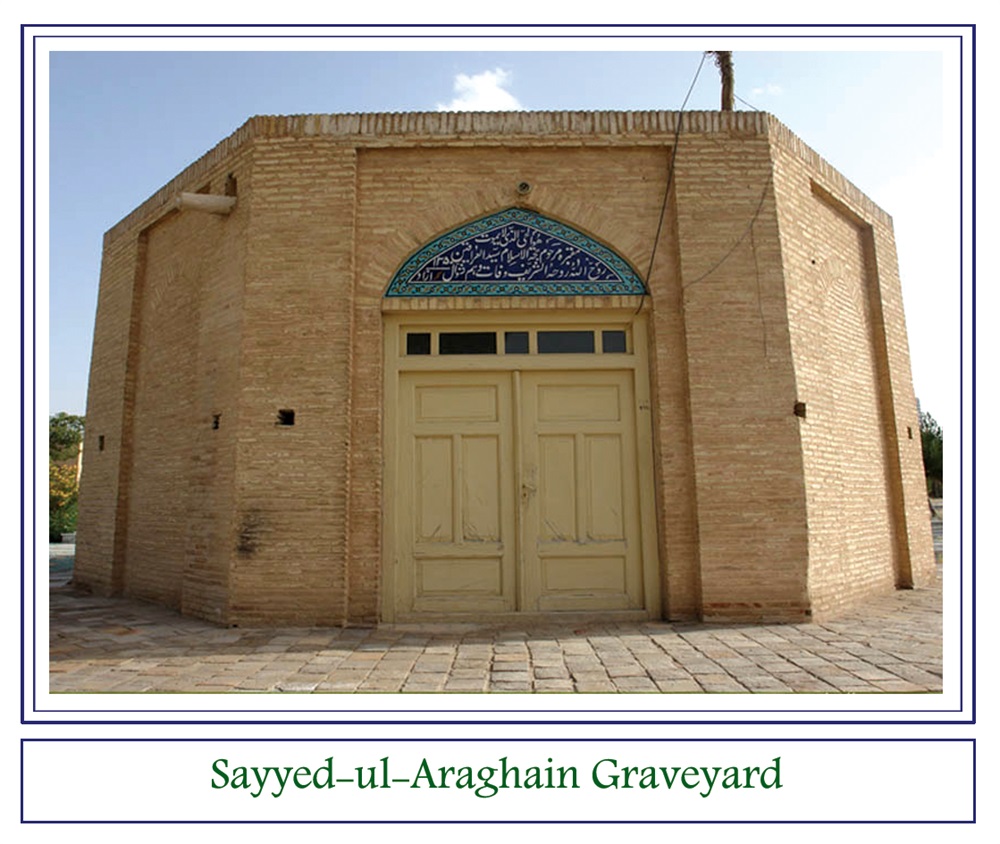
It is named after a very respectful religious scholar in Isfahan, namely, Haj Sayyed Abdul Hussain Modarres, known as Sayyed-ul- Araghain who lived in the contemporary time. In the center of the burial site, a beautifully constructed mausoleum was built over the grave of Sayyed-u- Aragain in 1373 (AH) by his children. The building has a very attractive interior giving a very tranquil feeling to visitor. The tomb is architecturally very atractive and is comprised of a central dome and a numer of cross-shaped roofs. The graveyard is perhaps considered the most crowded graveyard in terms of the structures built on the burial site as well as the number of those buried in the site. Not far from Sayyed-ul-
P: 163
Araghain, a newly built four-roofed Islamic style structure can be seen that embraces Jalal Taj. The exterior of it has been decorated with turquoise tiles. Also, in the south of Sayyed-ul-Araghain Mausoleum, stands another burial chamber belonging to the Nikpey extended family. The pyramid-shape dome and the tilework of the exterior with well-designed patterns look pleasing to the eye. The building was renovated in 1424(AH) and is currently being used as the museum for inscriptions and art features in Takht-e-Foulad.
There are more than sixty tombstones belonging to various important people, some which are as follows:
Mir Abdul Hussein Sayyed-ul-Araghain
Son of Mir Sayyed Mehdi Khatoonabadi, a distinguished jurist and an active supporter of the Constitutional Movement, he was awarded the rank of mojtahed by Ayatollah Akhoond Khorasani. He also acted on behalf of Khorasani to back people in their move to the Constitution. After the death of Norollah Najafi, he gained the status of the first ranked religious scholar in Isfahan.

Mir Mohammad Sadegh Modarres Khatoonabadi (d. 1348 AH)
Son of Haj Mirza Hussain Naeb-ul-Sadr (buried in Khatoonabadi Graveyard), he was a highly authorized mojtahed and a great scholar in the city of Isfahan. Being of Akhoond Khorasanii, he helped him write the book, ‘Kefayat-ul-Osool’. He had many students such as, Sayyed Ahmad khansari, Sayyed Abdu
P: 164
Hussein Tayyeb, Mirza Jala-u-Din Homaie, Sayyed Shahab-u-Din Marashi Najafi, and Sayyed Mohammad Reza Khorsani. He always thought of the gaining knowledge was a
divinely ordained duty of for humans. All his life, he was engaged in research and studies. Evantually, overwork led to his illness and, ultimately, to his death at the age of sixty two.
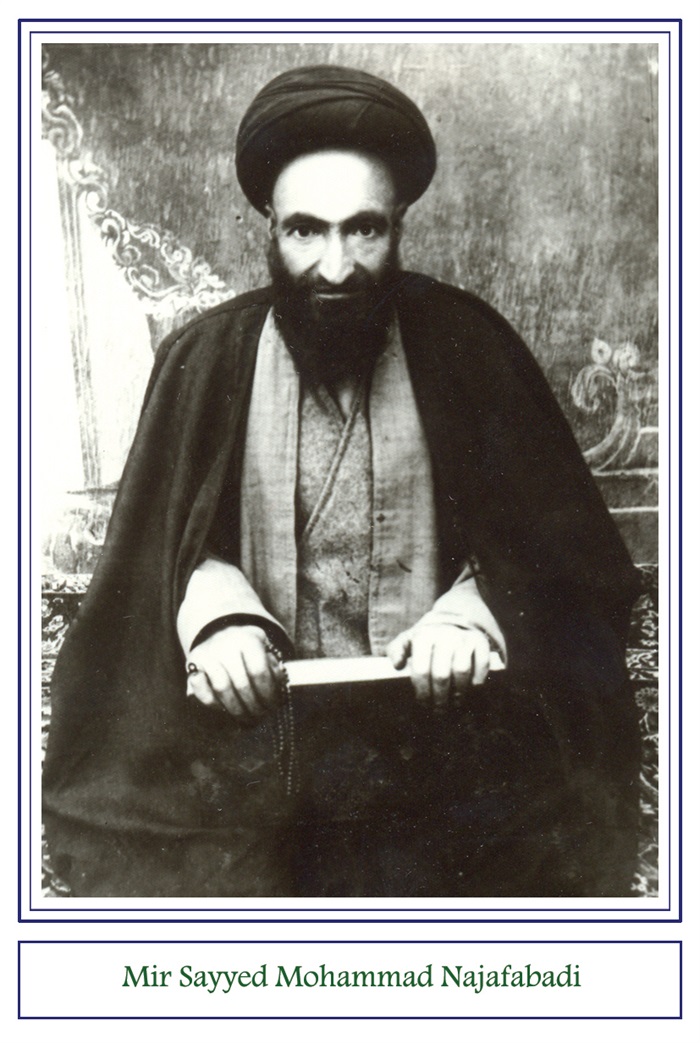
Mir Sayyed Mohammad Najafabadi (d. 1358 AH)
Son of Sayyed Mohammad Hussein Husseni, researcher, scholar, and teacher, he was among the high ranking individuals in Isfahan, he was known as ‘Modarres’. Of his works, we can name ‘Taghrirat osool, by Akhoond khorasani’. His well-mannered personality together with his mastery in teaching had given him a well-known reputation. His classes were attended by more than hundred students each session, most of whom were themselves scholars and learned people.
Sayyed Mohammad Oraizi
He was the son of Agha Sayyed Abdul Hussein. In his lifetime, he was famous for his unique work in carving and engraving. Some examples of his works include metal engravings on the holy shrine of Imam Ali (pbuh) and the shrine of Hazrat Masoomeh (peace be upon her). He died in 1388(AH).
P: 165
Image
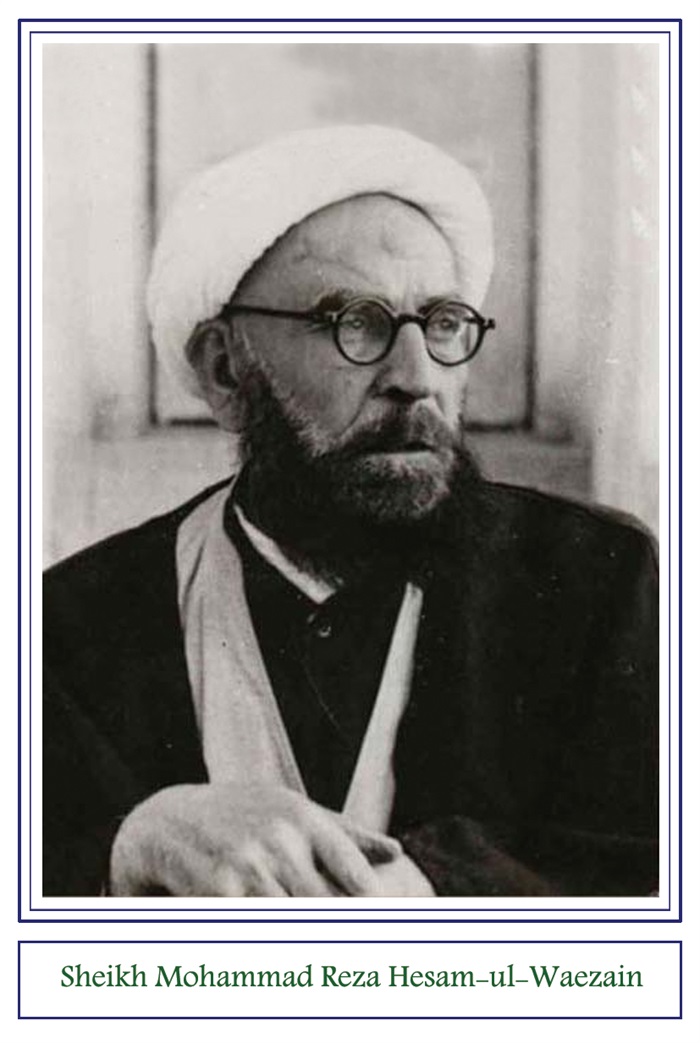
Sheikh Mohammad Reza Hesam-ul-Waezeen
He was the son of Mohammad Ali (known as Alaghehband). A famous calligrapher, literary man, preacher, and a poet, he was known for his devotion to Imam Ali’s decendants and followers. The calligraphy writings on the gravesone of Sayyed-ul-Araghain are attributed to him. He departed from this world in 1381(AH).
Sheykh Abbasali Moeen-ul-vaezeen
Son of Mulla Ali Mohammad Waez, died in 1360(AH). He was a learned man and a man of literature as well as a poet. He authored several books and dissertations, some of which are inscribed on his gravestone.They include books on Imam Mahdi such as ‘The Signs of Revelation of the Mahdi’ and ‘Incidents Prior to the Mahdi’s Appearance’.
Haj Sayyed Mohammad Sadr-ul-Zakerin
Son of Sayyed Muhammad Reza Sadr-u-Zakerin Tabatabaie, he was a famous and a respected man in
Isfahan. He was loved and respected among the people and he was always asked to keep his prayers for the needy and ill people. His prayers were always known to be whole hearted. He died in 1358(AH).
P: 166
Image

Abbas Khan Sheida (d. 1369 AH)
Son of Ishagh, he was a poet and the founder of The Sheida Literary Association. He wrote ‘A Complete Selection of Poems’. This lover of poetry was famous for his sincerity, friendliness, piety, and virtue. After having learned from great men like Akhoond Kashi, Sheikh Mortaza Reezi, and other great figures of jurisprudence, philosophy, narration, and Quranic interpretation. He was also the editor of ‘Daneshkadeh’ as well as a calligrapher and a student of Mirza Fathollah Jalali. He was perhaps the last calligrapher who emerged from the ‘Nastaligh’ School of calligraphy. On the events of Karbala, and the sufferings of Imam Hussain, he wrote following poem:
When the ‘king’ fell off the horse,
‘Well done’ said ‘The Creator of Love’, the Lord,
The whole heaven clamored,
And the Earth mourned for him too,
In essence, it led to general resurgence,
The whole moving planet turned uppside down,
There remained no more ‘King’ because of this fall …
Sheikh Ismail Taj-ul- Waezeen
He was among the scholarly-minded preachers and speakers in Isfahan. He wrote a book on the interpretation of the Quran as well as a book on ‘minbar’ advice. His distinct features were his beautiful singing voice and his openhandedness.
P: 167
Jalal Taj Isfahani
Jalal was the son of Sheikh Ismail Taj-ul-Waezeen. He was one of the most famous singers in Iran. He learned the technique and art of singing from his father and from a well-known master of music, Sayyed Abdul Rahim Isfahani, and became a favourite singer in dfferent art circles because of his beautiful voice. He trained a number of prominent classical singers in the city such as Alireza Eftekhari and Hussein Shahzeidi who have also enjoyed fame throughout the country and the world. Of his well-known songs are ‘The Call of Adhan’ and ‘Go to Isfahan’. The latter was a poem composed by Malek-ul-Shoaraye Bahar. He is a typical example of the Isfahan School of singing. Jalal was a man of religious and ethical principles and committed to humanitarian values. There are so many stories about his love and respect for his parents and his being kind to animals that show his humane attitude in life. Late Ghodsi writes a verse symbolizing his date of death:
Together with nightingales,
Taj flew away from the meadow.

P: 168
Sayyed Abbas Safi Dehkordi
Died in 1394 (AH), a scholarly minded worshiper, a lecturer and a mojtahed in Isfahan who was highly cherished by people. He was a treasury of knowledge of different subjects including usool, medicine, and hikma and was granted with different positions and authorities from grand religious leaders.
Sayyed Aghajan Noorbakhsh
Died in 1364 (AH), a highly ranked preacher and a scholar, he was regarded an expert in teaching ‘Moghni’ and ‘motawal’, two important courses in ‘Huza School’. In addition to his high ranking academic position, he was also an expert in making speech.
Sheikh Mohammad Reza Jarghooyehi
Died in 1372 (AH), son of Mulla Ali Hussein Abadi, he was a very respected man of knowledge and a cleric who obtained knowledge from some distinguished scholars such Sayyed mohammad Bagher Dorchehee and Akhoond Kashi and became an a mojtahed in Najaf. He was a supporter of Ayatollah Kashani who was wounded in the events related to the ‘Nationalization of Oil’. He died as the result of his injuries. He wrote a dissertation on ‘Kibla’ and ‘Disputes between marriage Parties’.
Sheikh Mohammad Ali Dezfooli
died in 1358 (AH), a scholar, jurisprudent and an author
Sheikh Mohammad Hassan Davarpanah
Died in 1384 (AH), he was a comprehensive man of knowledge. He was very much praised by Late Ayatollah Shams Abadi for his moral values and all-inclusive knowledge. For many years he worked as ‘army judge’ in the Army.
P: 169
Nasrollah Khan Shah Naser
Died in 1384 (AH), son of Abdollah Khan Lelah Bashi, a poet, literary man and a man os eloquence, his alias was “Shah Naser’. He wrote a poem in elegy of Iimam Hussein Mrtydom that reads:
Who is the lonely man of Karb-o-bala (the land of calamity)?
I tell you it was the ‘Master of Martyrs’, Hussein,
Who is the sacrificed in the way of God?
I tell you it was the ‘Master of Martyrs’, Hussein,
The king who put his whole being on his palm,
And what a worthy charity his contribution was,
I tell you it was the ‘Master of Martyrs’, Hussein,
His Ali Akbar, ghasem, Abbas and Asghar’
He who bestowed them all for the sake of His Love,
I tell you, it was the Master of Martyrs, Hussein,
The king who watered the ‘rose garden’ of religion,
With the tears of the thirsty lips in the way of God of ‘Safa’,
I tell you, it was the ‘Master of Martyrs’, Hussein,
He whose Cut-off head on a golden tub near the ‘polluted’ Yazid,
On tell you, it was the ‘Master of Martyrs’, Hussein,
On his lips, were the words of the Almighty,
I tell you, it was the ‘Master of Martyrs’, Hussein,
On the Day of Judgement, do you know,
The one who relieves you from torture?
I tell you it is the ‘Master of Martyrs’, Hussein,
P: 170
Every corner of this misty house,
A poet is laid to rest in a dark bed.
(Shafiq)
This burial site borders Toyserkani Graveyard from the north, Yazdkhastiha Graveyard from the south, Moghaddas Graveyard from the south, and the Police Station 16 from the west.
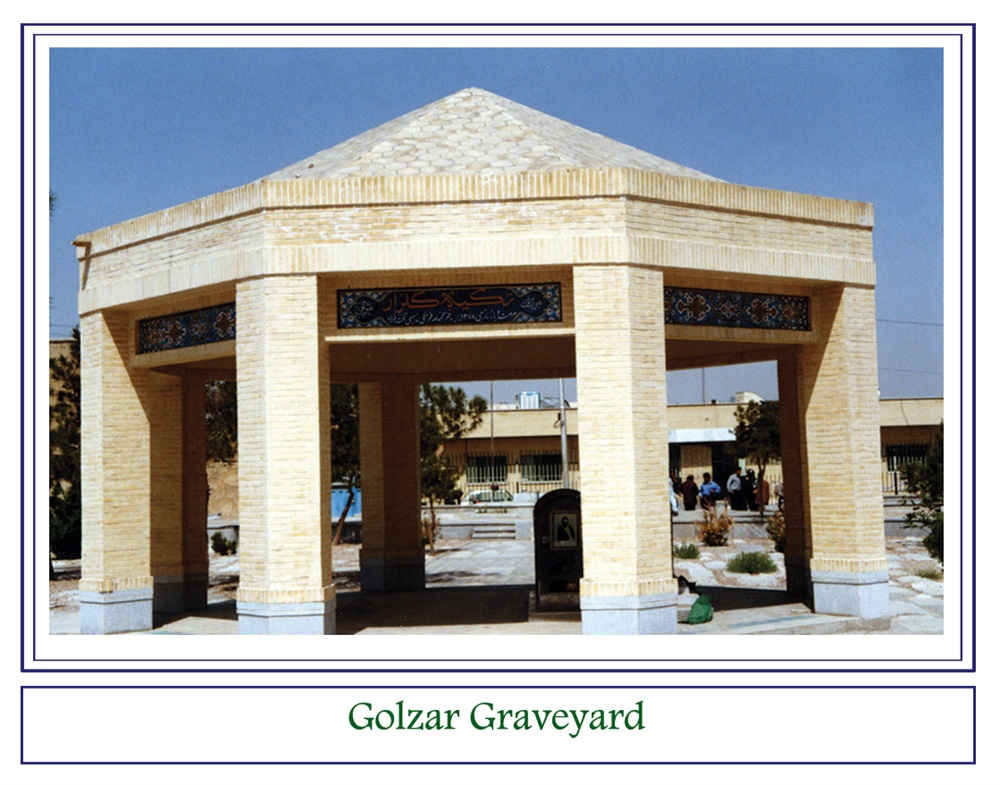
This contemporary resting place was built after the death of the celebrated poet 'Rajab Ali Golzar' in 1366(AH). This graveyard also includes the tombstones of two other dignitaries who were religious scholars and jurists, Agha Sayyed Ali Husseini Barzani and Haj Mirza Ali Rozati over whose graves a beautiful hexagonal-shape burial chamber stands. It consists of eight pillars made of bricks and its pyramid shape dome is a very simple structure. The
P: 171
tombstone of Golzar is situated in the northern part of the graveyard. On the eastern side of the graveyard, there are some gravestones, which belong to the Badri dynasty.
On the eastern part of the graveyard, there are a number of the graves of martyrs of the Islamic Revolution. These have given a special spiritual atmosphere to the burial site.
Important people Buried in the Graveyard
The following people have been buried here;
Aga sayyed Ali Husseini Barzani(d. 1369 AH)
Son of Sayyed Mohammad Hussein, he was a virtuous scholar who performed Komail prayers in Baba Rokn-u-Din. He wrote 'A Dissertation on the Case of Evasion from Law'.
Haj Mirza Habibollah Rozati (d. 1379 AH)
Son of Hedayatollah, a knowledgable scholar, and a member of Rozati dynasty, he used to hold Komail supplications at Kazerooni graveyard.
Haj Mirza Sayyed Mehdi Husseini Badri Sini (d. 1377 AH) Son of Sayyed Mohammad Ali, a religious sholar, much loved by people.
Sheikh Ali Faghih Fereidani (d. 1373 AH),
Son of Mulla Mohammad Bagher, he was a lecturer in Islamic principles, jurisprudence, and discourse.
Haj Sayyed Mortaza Zahir-ul-Islam ( d. 1403 AH)
Son of Haj Sayyed Ali, he was a famous speaker, a preacher, and a man of literature; a very scholarly piece of calligraphic writing on his gravestone was written by Late Master Fazaeli, the calligrapher.
P: 172
Mirza Ali Moshfeghi (d. 1399 AH),
An eminent poet, an astronomer, and a literary man.
Sayyed Jaafar Khakshir (d. 1375 AH)
Son of Sayyed Ismail, from the decendants of the Prophet (Mussavi), he tended to the jocular style rather than to seriousness in his poems. However, in his personal life, he was a venerable and shy individual. One of his poems reads:
"Oh God, now that I committed sins, what should I do?
Now that I have blackened my 'letter of deeds', what should I do?
I was told to go straight, but I went off track, what should I do?"
Rajab Ali Golzar (d. 1361 AH)
Son of Mulla Hussein, he was among the masters of poetic techniques and literature as well as a famous poet. He has a selection of poems. On his tombstone, the first few lines of a lyric read:
Just like nightingales I whimper and cry because,
I am a bird of paradise but have found myself on earth.
P: 173
This graveyard was built fairly recently, after the death of Agha Sayyed Mohammad Moghaddas (d. 1378 AH) who was a famous jurist and a preacher in Isfahan. The mausoleum in this graveyard resembles one in Golzar very much. It is a hexagonal structure built of concrete and bricks. The graveyard is situated between the Khalilian graveyard, to the west, the Kazerooni water reservoir, tothe east, Golzar, in the east, and Izadgoshasb, to the south.

P: 174
Image
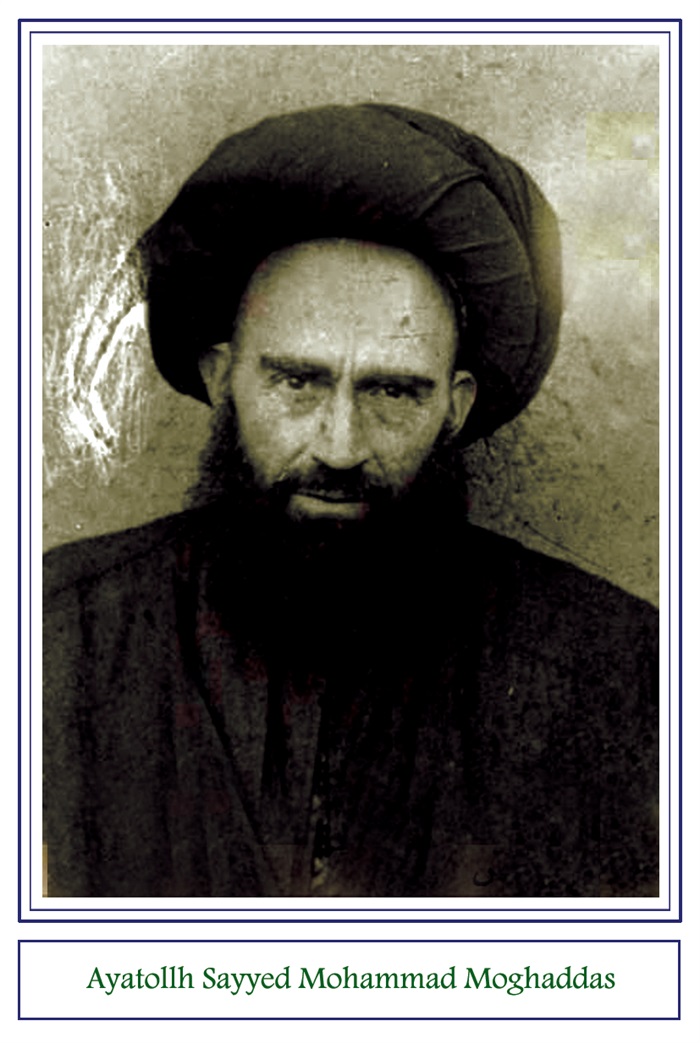
Haj Sayyed Mohammad Moghaddas
Son of Sayyed Abdul Hussein Husseini, died in 1378 (AH), he was a highly ranked religious scholar and a ‘mojtahed who taught various theological subjects and helped spread religious knowledge among the public. Grand Ayatollah Boroojerdi invited him to Qom and appointed him as one of his trustworthy companions. His efforts in collecting many printed and manuscript books led to an important library that was transferred to Azaam Mosque Library in Qom after his death. He wrote many books including, ‘The Book of the First Things’, ‘the Book of the Last Things’, ‘the Preachings of Loghman’, and ‘the Rules of Jurisprudence’.
Sayyed Asadollah Mostajab-u-Daawati
Son of Mirza Mehdi and the grandson of Sayyed Sadr-u-Din Jabal Ameli, he died in 1342 (AH). Because he was a very knowlegable scholar in religious matters, he was permitted by Ayatollah Mohammad Reza Najafi to be an authority in narrations. He was
P: 175
also among one of the first people to found modern schools in Isfahan.
Mirza Mohammad Ali Parvaneh
He died in 1397 (AH), he was a journalist and the editor in chief of the the newspaper ‘the Candle of Truth’ (Shame Haghighat) in Isfahan as well as a poet (with the pen name of ‘Caterpillar’) (Do you mean caterpillar or butterfly???). One of his poems reads:
I was immersed in the sea of sorrow of your love,
Just like a diver searching for pearls out of despair,
Heartbroken lover does not look up to the richman’s wealth,
Cause he seeks out the treasure within a ruined heart,
Egocentric hermit cannot fly to the peak of your closeness,
However, the lover is looking for a nest there, just like the phoenix,
Not every so-called lover forfeits his life in the fire of candle,
Unless the one who follows his love, just like the ‘Caterpillar’.
This burial site also comprises some other tombstones belonging to important people, including:
Mulla Ali Marbini: died in 1402 AH, son of Mulla Abo Torab, he was an Isfahani learned man.
Mir Sayyed Ali Mahdavi Kermani: died in 1378 AH, son of Sayyed Mahdi Moosavi, he was a pious scholar.
Mirza Abdollah Arbab: died in 1379 AH, son of Ali Panah, a scholar and a calligrapher, he was the brother of the well- known Haj Agha Rahim Arbab.
Sayyed Abulghasem Shahkarami: died in 1384 AH, he was a virtuous scholar.
Mulla Muhammad Dehaghani: died in 1389 AH, son of Mohammad Khaliil, he was a scholar who wrote a series of books on jurisprudence.
P: 176
This burial site borders Sadriha Graveyard to the west, Izadgoshasb to the north east, the General
Cemetery memorial site to the south, and the Kazerooni Avenue to the east. This contemporary memorial site contains, in the centre, the tomb of Agha Sayyed Mohammad. Next to the mausoleum, a little-domed structure with seven-coloured tile work can be seen which includes the tombstone young man.
This graveyard is famous for including the graves of two of Isfahan's comics; Habibollah Yoozbashi (d. 1393 AH) and Mirza Mohammad Ali Mokram(d. 1384 AH). The former was known for his arts of
improvisation and humour. On his gravestone, it reads, “My dear,
come here clean, there is no place for the unclean…’. The former was also a poet and journalist as well as a satiric writer. He was famous for his humorous use of words with several meanings. All his life he challenged double standards and delusion. The verse symbolizing his date of birth reads:
Foe, he was, to hypocrisy and hallucination.
In addition, there are other eminent personalities, laid to rest in this graveyard. These include:
Agha Sayyed Mohammad Latif Khajooi
died in 1378 AH, son of Sayyed Mohammad Shafie, he was a pious religious scholar whose efforts in guiding the society toward religious values were remarkable.
P: 177
Haj Abulghasem Nouraei Sedehee
son of Sheikh Kamal-u-Din, died in 1390 AH, a teacher at Chahar Bagh school, he was a learned religious preacher who also founded a school called ‘Noor’ for teaching
religious education in Isfahan.
Sheikh Mohammad Javad Fereidani
son of Ali Asghar, died in 1375 AH, a literary man and a religious scholar.
Sheikh Baha-u-Din Borhani
son of Mulla Ali, died in 1393 AH, a reknown preacher and a scholar, he suffered a long-term illness.
Sheikh Mahmoud Salek
son of Haj Ismail, died in 1389 AH, he obtained knowledge from Sheikh Abdul Karim Haeri. According to Late mahdavi, “ he was a real and genuine Muslem who followed the path of Truth”.
Hassan Ghavvami Zadeh
died in 1384 AH, an Isfahani knowledgable master teacher and the editor of ‘Pazahr Newspaper’.
Mostafa Sattarian
a doctor of philosophy who worked at the Ministry of Education and a very conscientious teacher, he authored a book on philosophy and ethics for high school students.
Mirza Asadollah Rejali
son of Abdul Javad, died in 1372 AH, a famous calligrapher and a student of Abdul Rahim Afsar; the inscriptions on the entrance work of masjed sayyed were done by him.
P: 178
This graveyard is located to the east of Moghaddas and on east of Sayyed-ul-Araghain Graveyard. It is attributed to Haj Agha Bagher Ghazvini, a Fourteenth Century (AH) religious scholar who lived in the district of Dardasht, in Isfahan. This burial site is also known as ‘Khalilian’ because many members of the Khalilian Dynasty, who were famous families in Isfahan were buried in the place. The tomb of Agha Bagher is set on a platform, in the centre of the graveyard without a gravestone. The graveyard used to be encircled with simple and undecorated rooms, which were recently demolished. The north part of the graveyard is currently being used as ‘the Centre for Training and Enhancement of Children’s Mental Awareness’.
Haj Agha Bagher Ghazvini Dardashti
Died in 1363 (AH), the son of Haj Mohammad Javad, he was the son- in law of Agha Jalal-u-Din Agha Najafi and one of the decendants of Haj Mohammad Ibrahim Ghazvini, a prominent scholar ( who was very much loved and praised by Sayyed Shafti and approved as a mojtahed). He was also vey much praised and envied by Haj Mohammad Javad Abadehee for his piety and knowledge.
Sheikh Heidar Ali Salawati
Died in 139 (AH), the son of Haj Ghadir Ali Sedehee, he was a pious scholar and a mystic who wrote a book called ‘Najm-ul-Soheil’, an invalueable piece of writing on versified Komail
P: 179
Supplications. He also wrote a piece of poem to be inscribed on his own gravestone that reads:
Oh you, lovers, remember the captured of ‘grave beds’
Try to flourish the ‘house of grave’ by penetrating into hearts,
We are gone, you try not to stop,
Make me happy by uttering your praise for Mohammad (pbuh) and his decendants.
Abdul Mahmood Mahzoon Isfahani
He died in 1377 (AH), he was an eloquent poet and the author of a number of books, such as ‘Jungle’, ‘Ascent of the Prophet’, ‘Treasury of Enjoyment’ (Collection of Lyrics). One of his poems reads:
Oh, you, the beauty, be fair for God’s sake,
Be genuine with friends and do not repress,
When you come after all these years of being away,
This wanderer feels more happy than being the king.
There are many other famous dead people buried burial ground including:
Agha Sheikh Mohammad Hussein Meshkini: died in 1368 AH, son of Agha Sheikh Ali, a descendant of Shahid Thani, he was a scholar in philosophy, usul, and hikma.
Mulla Farajollah Dorri: died in 1382 AH, he wasa student of Sayyed Mohammad Bagher Dorchehee, Akhoond Kashi, Jahangir Khan, and Homai and became a scholar in religious studies.
Yadollah Barkhordar: died in 1380, he was poet with a pen name ‘Taeb’.
Haj Agha Kamal-u-Din Ghazvini: died 1394, he was highly respected scholar and religious man.
P: 180
Mango ghaan ZolKhair: died 1390 AH, he was a journalist.
Rasool Behravan: died 1384 Ah, he was a poet.
Sayyed Ibrahim Mir Shafie: son of Sayyed Ibrahim, died 1370 AH, he was a pious man of knowledge.
Sayyed Mohammad Ali Mir Shafie: died 1390 AH, he was a highly ranked and respected scholar.
Sayyed Khalil Mobarekehee: died 1396, he was a preacher.
P: 181
This graveyard is situated far to the east of Takht-e-Foulad, north of Lsan-ul-Arz, in front of the Meeting Hall of Golastan Shohada. The oldest grave in this burial site belongs to the highly cherished man of knowledge, ‘Mirza Abdul Razzagh ibn Sayyed Abdul Javad Mussavi', whose ancestor is Mir Mohammad Taghi Mussavi, the minister of Shah Soleiman. His son, Agha Mohammad Taghi Faghih Ahmadabadi (d. 1347 AH) was also buried in this place. After his burial, this graveyard was named after him or ‘Sadat Ahmadabadi’. The mausoleum in the place was built recently (in 1421 AH) by some of his devotees.
Image

Sayyed Mohammad Taghi Mussavi Ahmadabadi (Faghih Ahmadabadi)
Son of Agha Sayyed Abdul Razzagh, died in 1348 (AH), he was known as Faghih Ahmadabadi. Having been a student of Agha Sayyed Abulghasem Dehkordi, Akhoond Kashani and other masters of the time, he became
P: 182
a highly respected scholar, jurist, and an expert in narration. He authored more than 20 books most of which are about Imam Mahdi (pbuh). One his books is titled ‘Makkian-ul-Makarem, which is on the benefits of keeping prayers for Imam Mahdi (pbuh). It is published in two volumes.
Sayyed Muhammad Taghi composed this poem:
“Because of the absence of your eyes, oh the ‘king of beauty’,
Lovers are all dying of broken hearts, oh darling please come.”
It is narrated that the book ‘Makkian-ul-Makarem’ was written by the decree of His Majesty Imam Mahdi who came to him in a vision.
There are a number of other dead scholars laid to peace in this resting place. They include, Agha Mirza Abdul Razzagh Moossavi (son of Abdul Javad, died in 1319 AH, a respected imam of the Ismail Holy Shrine, and a scholar); Sheikh Fazlolah Aazadi (died in 1360 AH, a great mojtahed who chose a secluded life and only a selected number of scholars gained knowledge from him).
P: 183
This contemporary burial site used to be encircled with walls; however, presently there are no roofed chambers or mausoleums in the graveyard. It is named after Agha Sheikh
Mohammad Bagher Zand Kermani. He willed no to have any mausoleum built over his grave. The geaveyard borders Zargarha Graveyard in the south, Sirafian Graveyard (currently known as Bagh Tooba) in the north and the General cemetery in the east.
Sheikh Mohammad Bagher Zand-e-Kermani
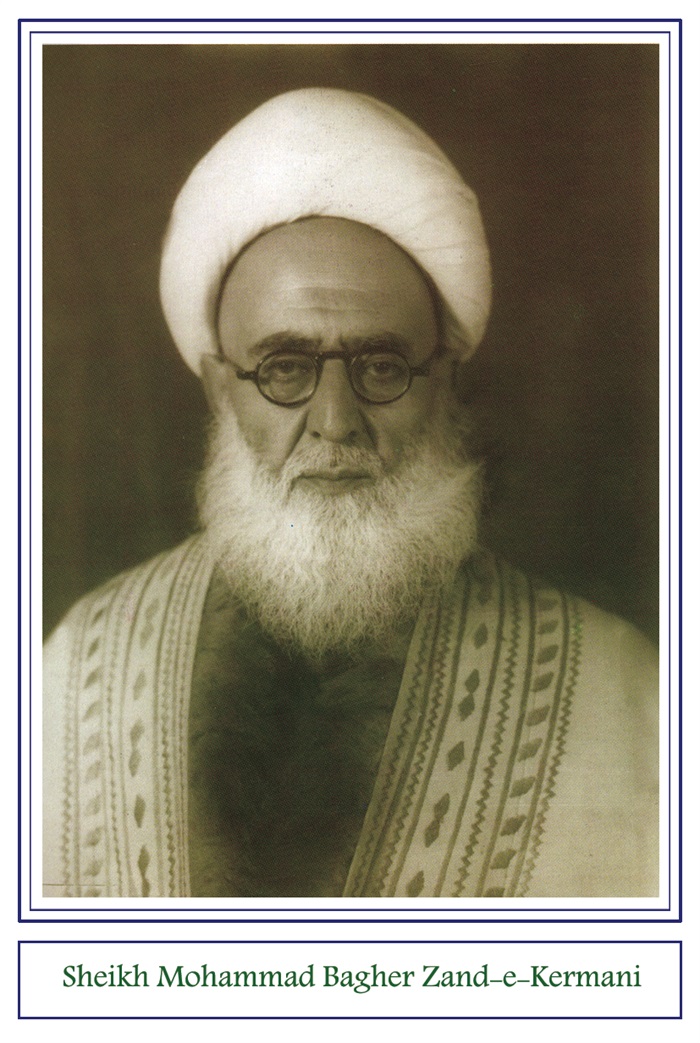
Died in 1389 (AH), he was a famous religious scholar, eminent jurisprudent and a preacher. He learned his knowledge from Abdul Karim Haeri, the founder of Qom Theological School. He was a clergyman who was familiar with modern sciences as well as foreign languages, including English. He used to hold Ramadan festival (Fitr) prayer at Takht-e-Foulad Mosalla every year. He initiated many public health
P: 184
and welfare
services including a hospital in the city. He wrote several books on different issues including “shining Benefits’, ‘State of Devine Rule’, and ‘History of Oil’.
His knowledge of the modern sciences and languages ,as well as his awareness in social and political issues, had made his lectures very attractive to the public.
This graveyard contains the graves of some other eminent dead persons including, Sheikh Abdul Karim Mosaddegh Khah (died in 1390 AH, a scholar reverend, known as ‘issue raising cleric’), and Sheikh Mohammad Javad Osooli (died in 1359 AH, he was a pious cleric and a learned man, a lecturer at Shahrekord School of Theology).
P: 185
This burial site was built in 1363 AH). It has a modern style mausoleum that encloses the tombstone of haj Sayyed Ahmad Hosseini Beheshti. Also a four-roofed structure was built on the grave the Isfahani ‘shahnameh’reader, Morshed Abbas Zariri; This chamber is decorated with tiles. The graveyard was named after the surname of an Isfahani’s famous dynasty, ‘Zargar’ whose dead members are buried here.
Sayyed Mohammad Taghi Beheshti
died in (1384), son of Sayyed Jaafar Hosseini, he was a dedicated scholar who performed prayers in Mosalla of Takht-e-Foulad.
Sayyed Ahmad Lonbani (Beheshti)
died in 1362 (AH), the son of Sayyed Mohammad Hassan, he was a well known jurisprudent who was famous for his piety and honesty.
Morshed Abbas Zariry
died in 1392 (AH), he was one of the last people who recited ‘Shahnameh’ in the public. He was famous for his strikingly impressive tone in reciting Shahnameh. He used to narrate the events of Ashura and laments for the martyrs of Karbala after each recitation.
Hassan Ehtemam
died in1379 (A), son of Gholamhossein, he was a poet and a literary man who authored Versified ‘Leili and Majnoon’ and ‘Ehtemam Collection of Poems’.
P: 186
Sheikh Ahmad Ehtemam
died in 1387 (AH), a religious scholar,a clericand a jurisprudent, he authored many invaluable books such as ‘Philosophy of Religious Laws’, ‘Reasoned Fiqh’ (in 26 volumes), and ‘Collection of Poems’.
Sheikh Yosef Ale Ebrahim Dehkordi
died in 1386 (AH), son of Mulla Hassan, he was a man of literature and a virtuous scholar.
Dr Ahmad Riahi
died in 1389 (AH), son of Haj Abdul Wahab, a medical practitioner and a surgeon, he was also a professor of medicine at the Faculty of Medicine, Isfahan. He used to treat the needy patients very kindly and free of charge. He also had a say in literary and historical issues.
Agha Sayyed Asadullah Dadkhah (Beheshti)
died in 1363 (AH), son of Mohammad Jaafar, a jurisprudent and mojtahed, he was famous for his caring attitude toward people. Being a member of the Majlis in the time of the Constitution, he was known as ‘Wakil’ (the Lawyer) among Isfahanis.
Haj Sheikh Mohammad Ismail Heirani
died in 1403, son of Sheikh Mahmood Ghomshehee, he was a poet and a man of literature.
P: 187
This graveyard, located in the west side of baba Rkn-u-Din, opened after the passing away (1384 AH) of the well thought-of benefactor and sponsors in Isfahan, Ali Hamadanian. This highly regarded and prominent wealthy man and his brother were f the pioneers of textile industry in Iran. Their efforts strengthened the process of industrialization in Iran. After their death, Hamadanian Charity Trust became in charge of the wealth belonging the Hamadanian Dynasty, that is being used in the benefit of the needy.
Those who walk in the peaceful burial ground, and pray his soul,
Shall bring to mind the name ‘Hamadanian’ with great admiration.
Ali Hamadanian
died in 1384 (AH), son of Haj Mohammad Reza, he was one of the founders textile and cement industries and the most reputable wealthy in Isfahan.
Hossein Hamadanian
died in 1399 (AH), son of Haj Mohammad Reza, the founder of Hamadanian Charity Trust, and a close aid to his brother, he donated all his family’s wealth to the charity purposes.
Sayyed Ali Noorbakhsh
died in 1401 (AH), son of Sayyed Mahmood, he was a respected scholar.
P: 188
This a small graveyard that embraces the gravestone of some the departed members of Sadr-u-Ulama family . It is situated in the south west of Khansari graveyard.
Sayyed Mohammad Sadr-e- Hashemi
Son of Sayyed Mahdi ibn Mir Sayyed Abdul Wahhab, he died in 1384 (AH). Being highly learned historian and a journalist, he authored a number of publications including, ‘the History of Printed Journals in Iran, ‘History of Islamic Civilization’, and ‘Poetry and Poets in the Time of Safavid’.
Sayyed Mohammad Hadi Sadr-ul- Ulama
Died in 1361, he was an influential clergyman in Isfahan who was known as ‘Sadr-ul-Ulama’ (the high ranked Scholar).
P: 189
This is a fairly new graveyard that borders Sayyed-ul Araghain Graveyard in west, the Police Station 16 in the east, and the Khalilian graveyard in the south. Its land was bought by Mir Mohammad Mehdi Soltan-ul-Ulamai (died in 1395 AH) who was the last Friday prayer of Isfahan before the Islamic Revolution who willed to be buried in this burial site. However, when he died, because his burial coincided with one of the high ranking authorities’ visit to Isfahan, and the police being anxious with the funeral gathering, stopped people from burying the deceased in the site; therefore, the dead was buried in the Allameh Majlesi mausoleum. Two important dead persons are resting in peace here: Sheikh Abulghasem Eshraghi Ghomsheiee (a dedicated and pious cleric who taught at schools and high schools and also helped people with their problem); and Mirza Agha Isfahani (died in 1389 AH, son of Sadegh, he was a calligrapher and a literary man in Isfahan).
P: 190
In this burial site,located in the south of Zanjani Graveyard and the east of Agha Sayyyed Mohammad Latiif Khajooi, there is a mosque built by a dedicated and renowned archaeologist in Isfahan, Master Hossein Maarefi. There are a few rooms in the graveyard in which some tombstones can be seen. In the middle of the graveyard, there is a tombstone belonging to Hussein Moarefi himself.
Ostad (Master) Hossein Maarefi
Son of Gholamali, he was a professional and creative Isfahani archaologist and renovator whose determined efforts led to the renovation of many historical buildings such as ‘Shaking
Tower’, the entrance to ‘Imam Mosque’, ‘Maryam Beigum Mosque’, Isfahan Congregational Mosque (Jamea). He was so much in love with the historical monuments and cultural heritage of the country that once he sold his own house for paying for the renovations and maintenance of them. He died in 1395 (AH).
Haj Mirza Hassan Moinzadeh
Died in 1399, son of Haj Abbas Ali Moin-ul- Waezeen (engraved in Sayyed-ul-Araghain Graveyard), a righteous leaned man, he spent all his life teaching and preaching.
Sheikh Dawood Mosahebi
Son of Mulla Ali Akbar, died in 1401 (AH), a modest and an honorable scholar, he was so much in love with and devoted to th the children of the Prophet, in particular, Imam Mahdi (pbuh).
P: 191
Hashemi Talkhooncheh Resting Place
In the southern east of Tooba Bagh (Sirafian Graveyard), in the north of Baba Rokn-u-Din (in the General cemetery), one can see a Resting place that embraces the grave of a contemporary religious scholar by the name of ‘Sayyed Ali Akbar Hashemi Talkhooncheh (died in 1388 AH). He was the prayer leader of Salman Mosque in Saremieh Street. He used to write good callgraphic writings. In addition, this place has a tombstone of another cleric called, ‘Sheikh Mohammad Reza Bayan-ul-Hagh’ who was the son of Sheikh Zein-u-Abedin Waez, a famous preacher in the 14th. Century. He died in 1390 (AH).
P: 192
As one walks along
Saadat Abad Road, towards Azedega Street, just before Baba Rokn-u-Din, he can see a graveyard that looks like a mosque with a large- domed structure at its end, on the left hand side of the road. The children of Sheikh Mortaza Najafii (died in 1386 AH and known as ‘Hojjat najafi’) built this contemporary graveyard in memory of their father. The domed mausoleum contains the tombs belonging to Sheikh Mohammad taghi Razi, the patriarch of the Razi, Sheikh Jamal-u-Din Razi, the father of Hojjat Najafi.
Sheikh mortaza Najafi, the son of Sheikh Jamal-u-Din and son in law of Mohammad Taghi Najafi (known as Agha Najafi), died in 1386 (AH).He was highly cherished by the public because of his well brought up and affable personality. He studied as a student with prominent scholars such as Haj Agha Monir-u-Din Boroojerdi, Haj Agha Norollah Najafi, Haj Mir Mohammad Sadegh Khatoonabadi and his esteemed father.
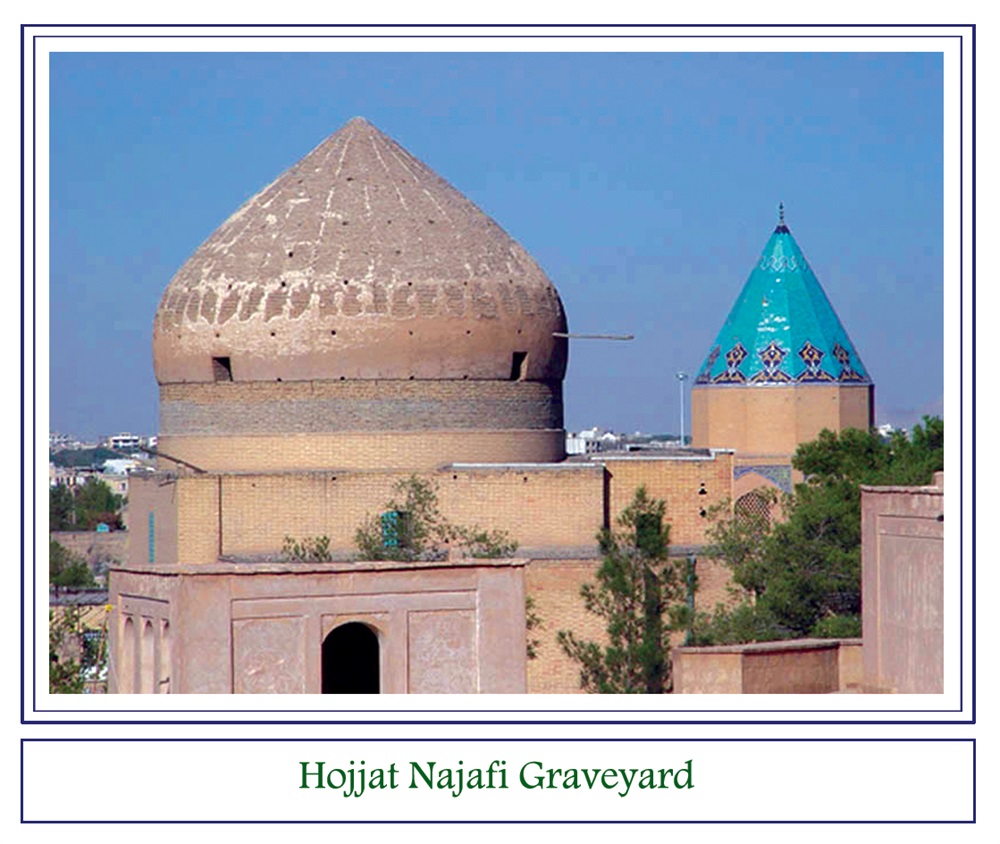
Image
P: 193
Sayyed Mahmood Kelishadi Resting Place
Let us remember the departed from this world,
And Let the posterity recall us when we depart.
(Shafigh)
It is a triangular shape space that borders Shahid Shatergoli to the south and west; and residential area to the north and west. On this rather small graveyard, a very respected scholar and a great literary figure of a century ago rests in peace. He was a famous lecturer in literature at Shahzadeha School. His lessons and discussions had proved very beneficial to his prominent students such as Haj Agha Rahim Arbab, Haj Mir Sayyed Hassan Chahar Sooghi, Agha Sayyed Hassan Modarres Asfehee, Mirza Mohammad Hussein Rozati, Haj Ahmad Emad-ul-Waezeen, Sheikh Mohammad Reza Hesam-ul-Waezeen, and Mirza habibollah Rozati. These scholars had gained a great deal of knowledge from sayyed Mahmood.
P: 194
We seek success from Almighty for Ata,
May God add to prosperity of already lavish Ata.
This once privately- owned graveyard is situated far to the north of Takht-e-Foulad. It was a garden, in which a number of tombs belonging to Dahesh Family existed. In 1995 (AD), it was renovated by Isfahan Municipality and it was handed over to The Takht-e-Foulad Cultural, Historical and Religious Organization. A beautiful mausoleum with a dome, as well as some cap-like little domes on top of the pillars, was built. This graveyard can perhaps be regarded as the last one in the zone of Takht-e-Foulad cemetery.
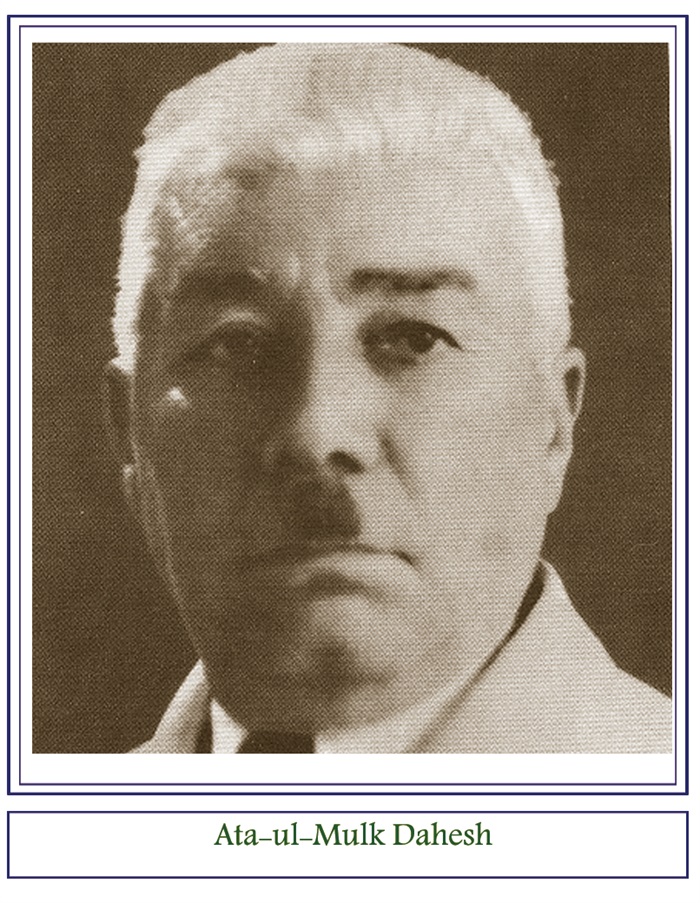
Fazlollah Dahesh
Died in 1380 (AH), son of Haj Mohammad Hussain Shirazi, Dahesh (known as ata-ul-Molk) was one of the highly regarded benefactors of Isfahan. He was among the pioneers who helped develope industry in the city. He was the first person who founded an electricity plant in Isfahan. After the Second World War, he, by purchasing modern textile machines, established Watan Textile Industrial Unit that was the first modern textile plant in Iran. He was an active and sociable individual who spent his life being of service to his fellow citizens. There are five other dead persons resting in peace in this graveyard.
P: 195
This brial site belongs to Haj Mirza Karim Sirafianpoor (died in 1349 AH) who was a much-reputed benefactor merchant in Isfahan. His mausoleum is topped with a Safavid-hat like dome standing on four concrete columns. Since a tombstone of a distinguished student of Allameh Mohammad Bagher Majjlesi, by the name of Maula Mohammad Lachin, is present in this burial ground, the graveyard most likely dates back to the time of Safavid. This great scholar lived in the same as Mirza Abdollah Afandi. He was the prayer leader of Abbasid Grand Mosque (Imam Mosque). He read the book ‘Kaafi’ with majlesi. He made a lot of efforts in editing and note-taking of the books written by different scientists. Also, he autored many books, including the first version of ‘Haghayegh-ul-Iman of Shahid Thani’ that was completed in 1016 (AH).

Image
P: 196
In the south part of the graveyard, there is a mausoleum resembling that Hafez in Shiraz. It contains the grave of Reza Mohtashami, the ex- manager of Kowsar Hotel (died in 1392 AH). The eight- pillar mausoleum is situated on a platform, and capped with a dome.
In the east side of the Sirafian mausolume, another roofed chamber contains the grave of Haj Mohammad Sheikh Zadeh Harati (died in 1388 AH). He was the founder of Harati
School, one of the first modern schools in Isfahan. Next to his grave are the resting places of the family of Haj Mohammad Bagher Malek and the Samsarzadehs.
In the south side of the graveyard, a simple hexagonal shape structure contains the grave of Master Ghasem Dashti Zadeh. This graveyard is now used as a cultural centre and a pleasant environment that embraces the Office for the Cultural Issues and the specialized library of Takht-e-Foulad.
P: 197
P: 198
P: 199
P: 200
Image
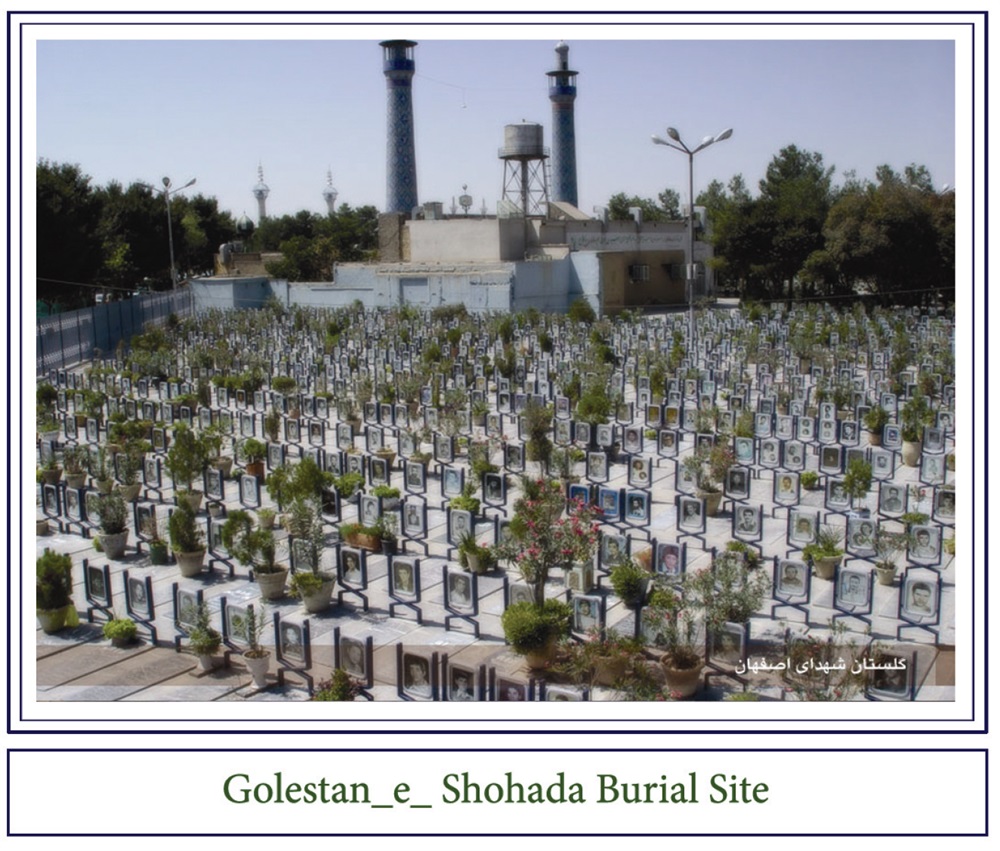
This is a major part of Takht-e-Foulad cemetery and it is renowned for having embraced 7300 martyrs and victims of the Imposed War. The interesting aspect of this burial site is the fact that it embraces the religious men, mystics and the scholars as well as the defendants of Isfahan and Iran who sacrified their lives in the way of God for the cause of Allah.It can be said that they both reached the highest levels of salvation by resorting to the words of God and living in the way of Allah. On the one hand, scholars, mystics and religious men reached to this level by working hard through spiritual self-discipline; on the other hand the devotee soldiers dedicated their blood to defend the freedom and liberty of the nation.
P: 201
However, on the main site of this important graveyard, there are a number of other rather smaller burial sites. Most of these sites date back to different periods before and after the Islamic Revolution and are described below.
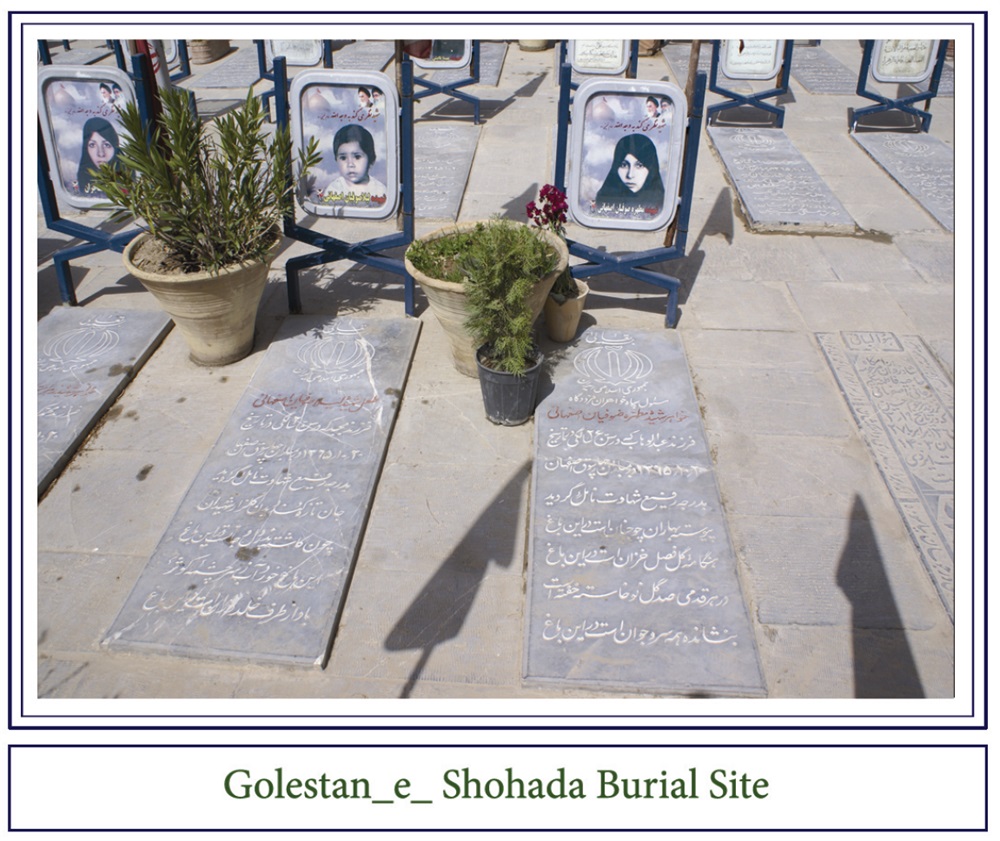
Image
This burial site is situated in the northern part of the Golestan-e Shohada site. This site is considered to be one of the most ancient sites within the graveyard. The earliest records for this cemetery date back to the fifth century. This burial site was surrounded by a wall from the Buyid period; unfortunately, this was ruined in recent decades. The tomb attributed to Joshua, the prophet, as well as a water reservoir topped with a dome is situated on the west side of Lesan-ol-Arz mosque. The water reservoir has now been converted to a Zoor-Khaneh (an old Iranian Virtual Sport Center).
P: 202
Image

Joshua, the Prophet
This is the oldest mausoleum within the whole Takht-e-Foulad cemetery complex. There are no traces of Joshua the prophet in any of the historical records. However, in the book ‘The Recounts of Isfahan’ by Hafiz Aboo Na'eem Isfahani in the fifth century, this mausoleum was mentioned.
Jalaleddin Homayee
Homayee is one of the most prominent literary academic and social figures buried in this graveyard. He was born in Isfahan, educated in the great Theological School of this city along with some of the most outstanding religious scholars who bloomed in
P: 203
this period, such as; Ayatollah Mohammad Bagher Dorche’ie, Mulla Abodolkarim Gazi and Haj Agha Rahim Arbab.
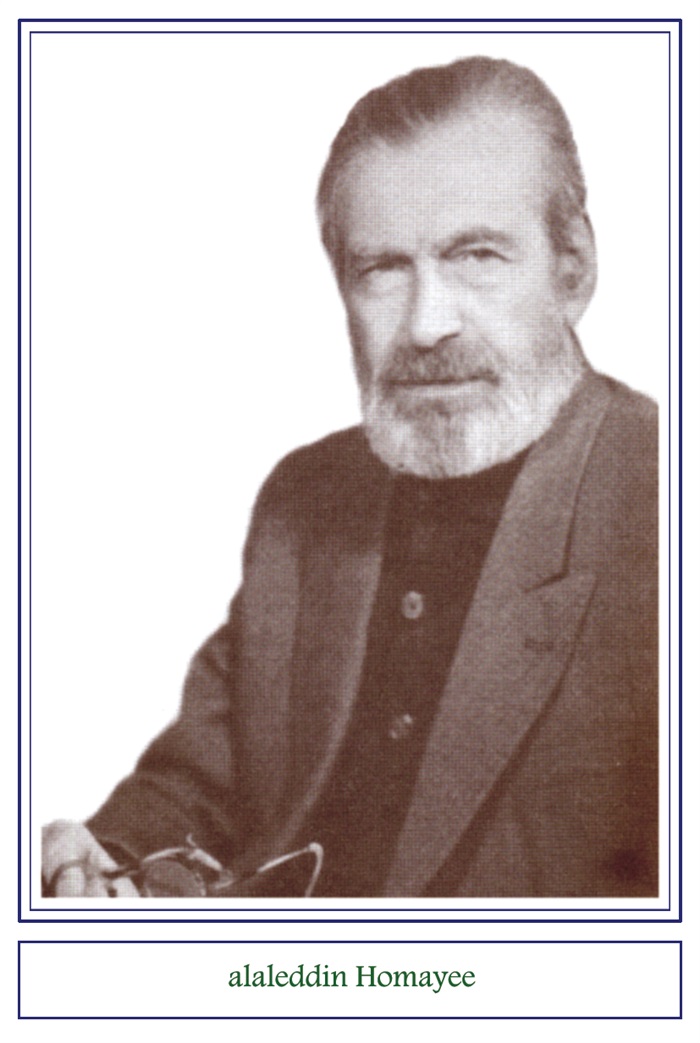
He devoted his life to teaching and education within the high schools and universities of Isfahan. He never accepted any positions of authority offered by the rulers of the time. He is also known for his rejection of the chancellorship of Tabriz and Shiraz Universities during the Pahlavi period. He was the author of several books and sources such as ‘The History of Persian Literature (in five volumes)’, ‘The History of Isfahan (in ten volumes)’, ‘(two treatises on) Islamic Philosophy’, ‘Ghazali Letter’, ‘Collective Poems’, ‘Molavi Letter’, Skills of Eloquence’ and ‘Literary features’. While his life was drawing to a close he composed a piece of poetry which recalls the fragility of life and the final destination of the poet:
‘At the end of the night of versifying,
‘Homayee’ was reciting to himself out of a broken heart:
Woe to this ruined house,
‘Though I am dying, my heart struggles to remain.’
This verse was inscribed on his graveyard:
‘I come to you my Lord, disgraced,
My head is loaded and down with sins, I am distressed.
Revolting servant that I am and merciful master that you are,
I am expected to commit sins and you are to forgive'.
P: 204
Haj Mirza Ibrahim Nawab
Haj Mirza died in 1361(AH). Son of Mohammad bagher Navvab Lahiji, he was a highly respected preacher and scholar. He was the congregational Imam of Zolfaghar mosque.
Sayyed Abdolbaghi Tabib
Son of Mirza Mohammad Rahim Hakim Bashi, deceased in 1171(AH). He was a physician as well as a poet. For a while he worked as a private doctor in the court of Nader Shah Afshar. Also, he was a pioneer of a poetry style so-called “Literal Return.”
One of his famous verses reads:
‘The grief of your departure shall find my heart,
As mincingly as the way that Leili boarded on the camel litter,
Shedding tears so bitterly, running behind the litter,
The camel shall sink deep into the mud made of my tears’.
The verse symbolizing the date of his death has been inscribed on his gravestone and reads: ‘The feast in paradise shall be the final destination of that selected noble ’
The following are a number of dignitaries and prominent people buried in this graveyard:
Haj Agha Mirza Hashemi
A religious scholar who was the father of two war martyrs.
Haj Sayyed Mohammad Beheshti Nezhad
The congregational Imam of Beheshti Mosque, located in Kashani Street. He was known for his good temper and warm attitude toward the worshippers.
P: 205
Mirza Agha Dehkordi (d. 1400 AH)
He was a virtuous jurist and son in law of Ayatollah Abol Ghasem Dehkordi.
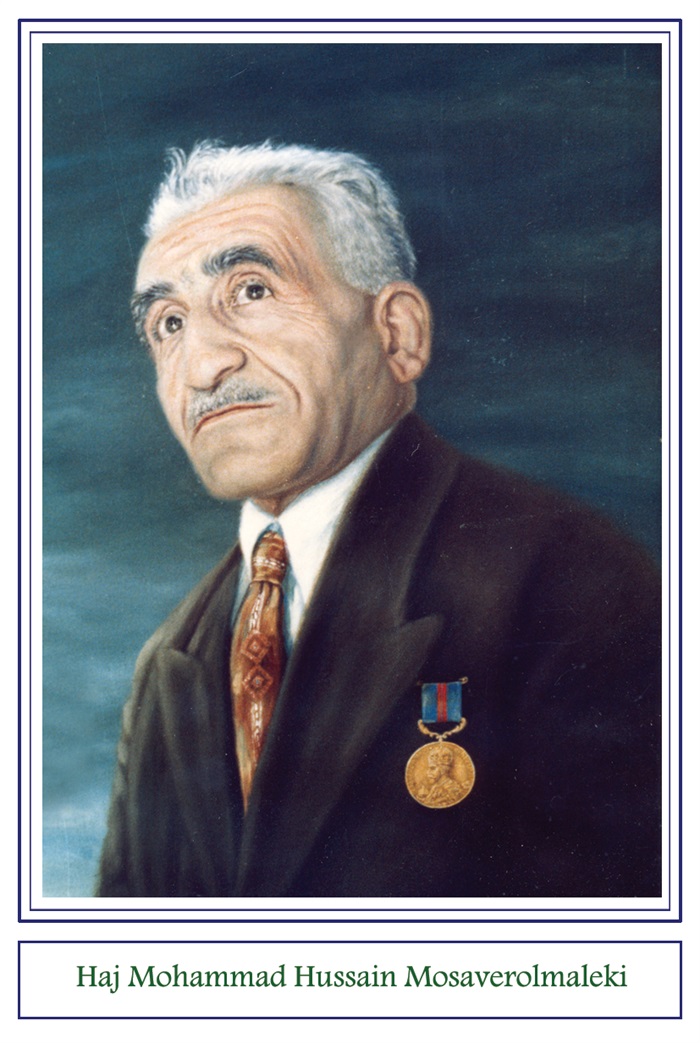
Haj Mohammad Hussain Mosaverolmolk
A famous artist, miniaturist and painter who created some masterpieces such as the Takht-e Jamshid painting, the Imaginary Mosque Portrait and a Second World War painting.
P: 206
This graveyard was specially constructed by a wealthy person known as Malek-o-Tojjar Isfahani who also built a caravanserai at the gate of Takht-e-Foulad in the memory of Akhoond Mulla Mohammad Kashani who was buried in Lesan-ol-Arz.
In strict accordance with his will (Kashani′s will), a mausoleum was not built over his grave of by Malek-o-Tojjar Isfahani. However, dignitaries and scholars were impressed by this graveyard. This graveyard is now located in the center of the Golestan-e Shohada.
Akhoond Mulla Mohammad Kashani
This scholar and a mystic of the Qajar time was known as ‘Kashi’, he died in 1333(AH). He was known as a master of mathematics, literature, philosophy and Islamic jurisprudence. Many scholars in
Iran were educated by him, among whom, Haj Agha Rahim Arbab, Hakim Khorasani, Sayyed Hasan Modarres, Haj Mirza Ali Agha Shirazi are notable. He was also known for his piety and worship. It has been narrated that he was so immersed in spiritual revelation that confirmed his great soul. He was known to repeatedly utter a Qur’anic verse from Surah Al-Fatihah, namely ‘Iyaaka Na’ budu’ (only from thou I seek help) more than one hundred times in a modest way. After this he became unconscious and after waking up, he would say his prayers in a normal way. Haj Agha Rahim Arbab narrates that every night at midnight he would say his prayers with so much weeping and crying that his
P: 207
whole body would tremble and that the sound of his bones could be heard from outside.
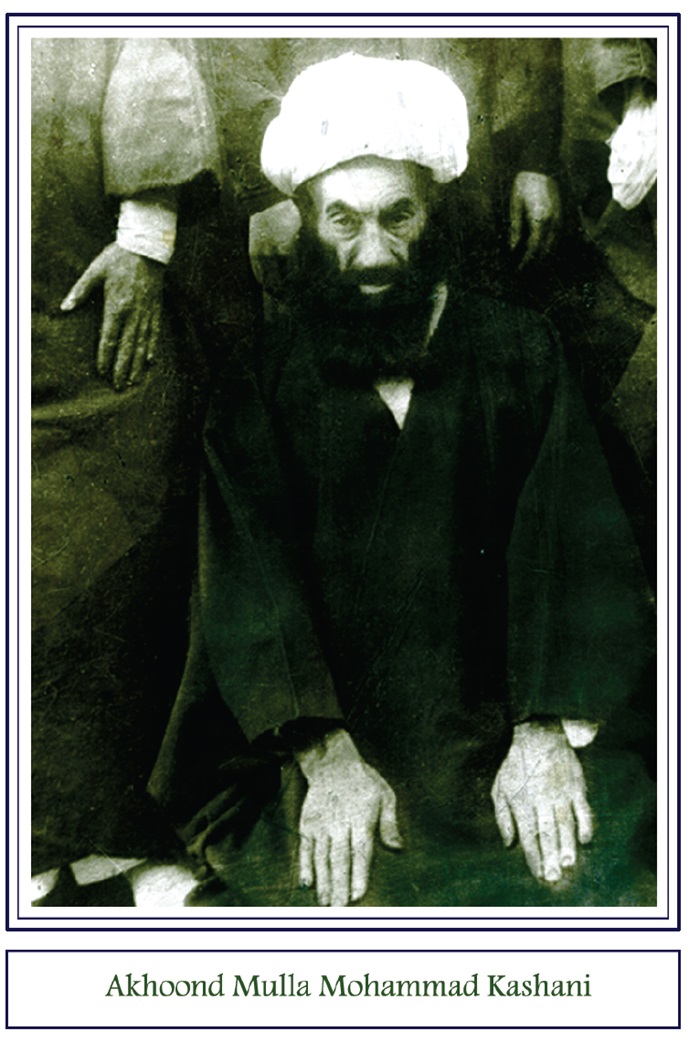
He also narrates that one night while he was in his room at Sadr School in Isfahan cooking dinner, he started saying his prayers while the food was on the stove. He prayed as though the trees and flowers of the school were in chorus with him, he was so absorbed in his prayers as if he was not on earth and was so amazed and stunned with that Godly scene that when he came back to his senses, the whole room was covered with the dark smoke of the burning food and he said, ‘Oh Rahim, did I again burn the food? But it doesn’t matter. We shall have a light snack tonight.’ He was so much loved by his students that when he died many of them left Isfahan.
He requested in his will that the phrase ‘ The humble poor man of Lord and the weakest of the worshippers’ be inscribed on his tombstone.
Sheikh Asadollah Hakim Ghomshe’ie (d. 1334 AH)
His penname was 'bewildered'. As a poet and scholar, he manifested a great interest in gaining knowledge in his time. He showed a great interest in the theological and philosophical sciences and he taught theology and philosophy in Isfahan. His
P: 208
knowledge of Arabic and French was significant and for a spell he also taught mathematics. He had a fair knowledge of a calligraphic style. He died at the age of 36.
Being a student of Akhoond Kashi, he had a romantic nature and his poems are more mystically and spiritually focused as can be seen below.
‘Lovelier than the time of dazzling, I cannot find,
Better than the place of love, I cannot find,
That head that's not the dust on the path
On which the beloved passes,
Deserves not be the seat of the lover.
Though the wise can pass across the river,
Definitely, he is not dazzled enough.’
Sheikh Mohammad Hakim Khorasani (d. 1355 AH)
He was a prominent student of Jahaangir Khan and Akhoond Kashi. Like his teachers at Sadr School, he was a bachelor all his life. His philosophy classes were ranked as the most famous philosophy circles after those of Jahaangir Khan and Akhoond Kashi.
He was buried next to his master Akhoond Kashi. Being a man of God and free from worldly positions, he did not engage himself in any materialistic and worldly affairs. In the time of Reza Shah he was asked to be the head of judiciary by the king’s Minister of Justice. He rejected the offer and replied to the letter sent by the minister with the famous verse:
'We shall not make the concepts of poverty and wealth be disgraced,
Tell the king that our sustenance is within our fate.’
One of his students was Homayee, who gained knowledge for over eighteen years from this great scholar. He always spoke of him with praise such as ‘The omniscient of time’, “The final
P: 209
philosopher” and ‘The heavenly mystic’. In his memory, he composed the following verse:
‘Why should I express my sorrow behind a veil?
Let me reveal it to the whole world;
My master departed from the soil.’
The symbolic verse signifying the date of his death is:
‘The candle of knowledge has been extinguished because of the death of the philosopher.’
There are numerous other dignitaries who have been laid to rest in this graveyard such as:
Haj Agha Monir-o-din Boroojerdi (d. 1342 AH)
Son of Agha Jamal-o-din. He was a religious scholar and an expert in Elm-o-Rejal (the science of important religious men and the knowledge of knowing the meaning traditions narrated from Holy prophet and his family p.b)
Sayyed Mohammad Ali Oraizi (d. 1373AH)
Son of Haj Sayyed Mohammad Bagher. He was a teacher of reading and phonology of Qur’an. He authored the source book ‘Interpretive Literal Footnoting’.
Sheikh Morteza Ghomshe’ie (d. 1341 AH)
In his own time he was a well-known scholar and a comprehensive jurist.
Sheikh Hasan Stahbaanaati (d. 1336 AH)
The son of Allameh Mulla Mohammad, he was famous for his spiritual self-discipline.
P: 210
Sayyed Hasan Fani (d. 1338 AH)
He was a famous preacher and the author of many sources such as ‘The Elixir of Traditions’, ‘The Delight of Liberatated good men’ and ‘The Reasons for the Piety’.
Sheikh Mohammad Ali Yazdi( d. 1351 AH)
He was a comprehensive scholar and the author of several sources such as 'Notes on Makasib (a Shiite reference source) and 'Notes on Rasael'.
Sayyed Mirza Ardestani (d. 1351 AH)
A pious religious learned figure who taught Shiite principles in Isfahan.
Mirza Yahya Fazel Harandi (d. 1369 AH)
He was the author of several sources such as ‘A recount to Kefayat-ul-osul’ (a Shiite reference source) and ‘A recount to the Incidence of Minds’.
Mirza Masih Toyserkani (d. 1351 AH)
Literary man, constitutional revolution and liberty activist and the editor of Naghoor Newspaper.
Mulla Hasan Dorri (d. 1337 AH)
A prominent religious scholar. He was famous for being ethical. He travelled to Mecca and other holy places several times on foot.
On one trip to Mashhad, he saw a vision of some of the servants of Imam Reza’s holy shrine who had been told by the Imam that ‘Mulla Hasan is coming to visit me, proceed to greet him.’ The night he was buried, the son of Haj Mulla Esma’el Naghne’ie who had died before, appeared in a dream to his mother and said ‘We, the dead, were all in anguish, but for the sake of his coming to us, we have become released.’ Mulla Hasan was very much opposed to those religious leaders who followed their worldly desires.
P: 211
This graveyard which is located in the south western part of the Golestan-e- Shohada embraces a number of scholars of the great dynasty of Mir Mohammad Sadeqi. A four columned concrete ceiling has been built in the center of this graveyard around which the gravestones of the dead belonging to different families such as Mostofi Ansari, Safavi and Noor Sadeqi can be seen.
The last religious man of the Mir Mohammad Sadeqi dynasty buried in this graveyard was Ayatollah Haj Sayyed Mohammad Ali Sadeqi.
Agha Sayyed Abdollah Seghatoleslam (d. 1382 AH)
Known as ‘Modares Saadeqi’ (Saadeqi Lecturer),he was a learned scholar and a high ranking religious authority (Mojtahed), as well as the author of over twenty books and dissertations in jurisprudence, beliefs, prominent men (in narrating traditions) and poets.
Some of his works include the book ‘The Guidance of Muslims toward the Children of Imam Ali’ which recounts the Mir Mohammad Sadeqi family, ‘Anis-ol-Arefeen’ (a companion to the mystics) and ‘A Pearl Shell in the History of Najaf’.
Haj Sayyed Mohammad Ali Sadeqi (d. 1417 AH)
Son of Sayyed Mohammad Sadeq died in 1417(AH). One of the greatest religious experts of jurisprudence in Isfahan, he was educated by great scholars like Ayatollah Shams Aabaady and Ayatollah Dastgheib. He was one of the prominent students of Ayatollah Mir Sayyed Ali Allameh Fani in Najaf.
P: 212
Image
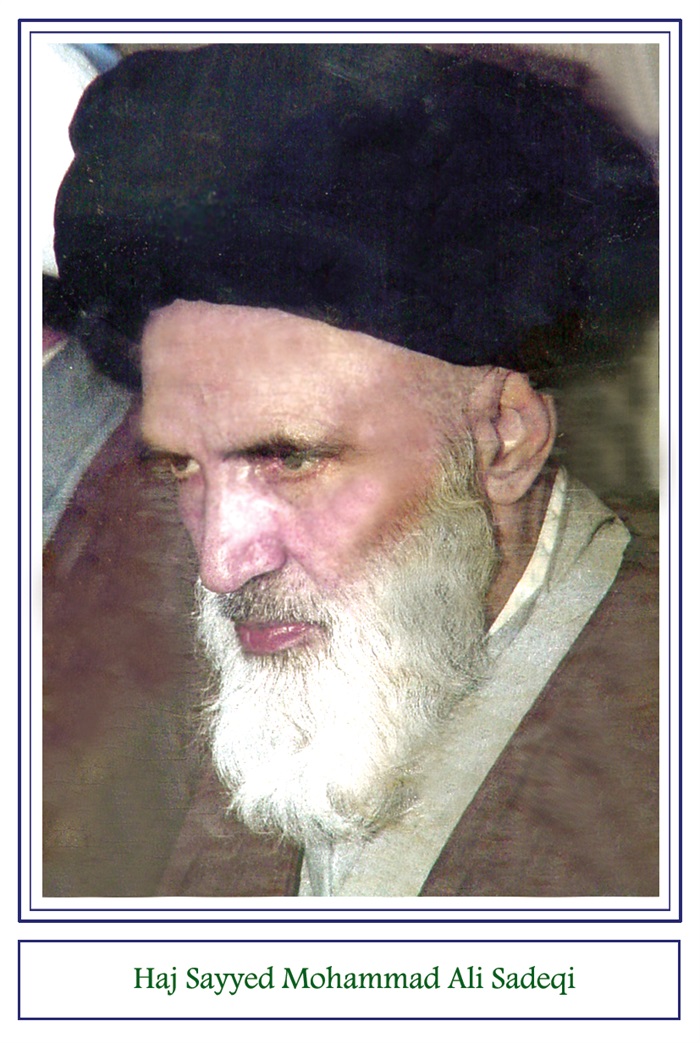
His great endeavor to teach the people of Isfahan made him very famous. He has published a number of books including ’The Unity of the Divine Essence and Attributes from the Perspective of Islam.’ He was also very active socially and participated in establishing and building forty five mosques in the province of Isfahan, Chahar Mahal and Bakhtiari, Kerman, Kohgiluyeh and Buyer Ahmad. He was the Imam of Shafeie Mosque at Tehran Square in Isfahan. He always advised friends to be kind to relatives and to give generously to charity and to say their prayers promptly.
Mirza Mohammad Hussain Khan Ansari (d. 1344 AH)
Son of Mohammad Ali Mostofi Ansari Isfahani . He was a poet and a writer whose penname was ‘Samar’ (The fruit). He wrote ‘The Lessons for the Witness in the Course of History’, ‘The War between Russia and Japan’, ’Ra’na and Ziba’ and ‘A Collection of Poems’.
Haj Agha Rahim Arbab (d. 1396 AH)
Son of Haj Ali Panah was a religious scholar, mystic and philosopher. He was educated in the presence of great scholars such as Mirza Badi’ Darbe Imami,Sayyed Mohammad Bagher
P: 213
Dorche’ie, Agha Sayyed Abolghasem Dehkordi, Jaahangir Khan Ghasghayee and Akhoond Kashi and he was ranked as Mojtahed. He learned the exploration of the different strata of mysticism from Akhoond Kashi and Jahaangir Khan. As a student, he stayed with Akhoond Kashi for twenty years and learned different fields of knowledge from him. Arbab was so in love with his master that he kept visiting him once a week after his death. He requested in his will to be buried next to his master.
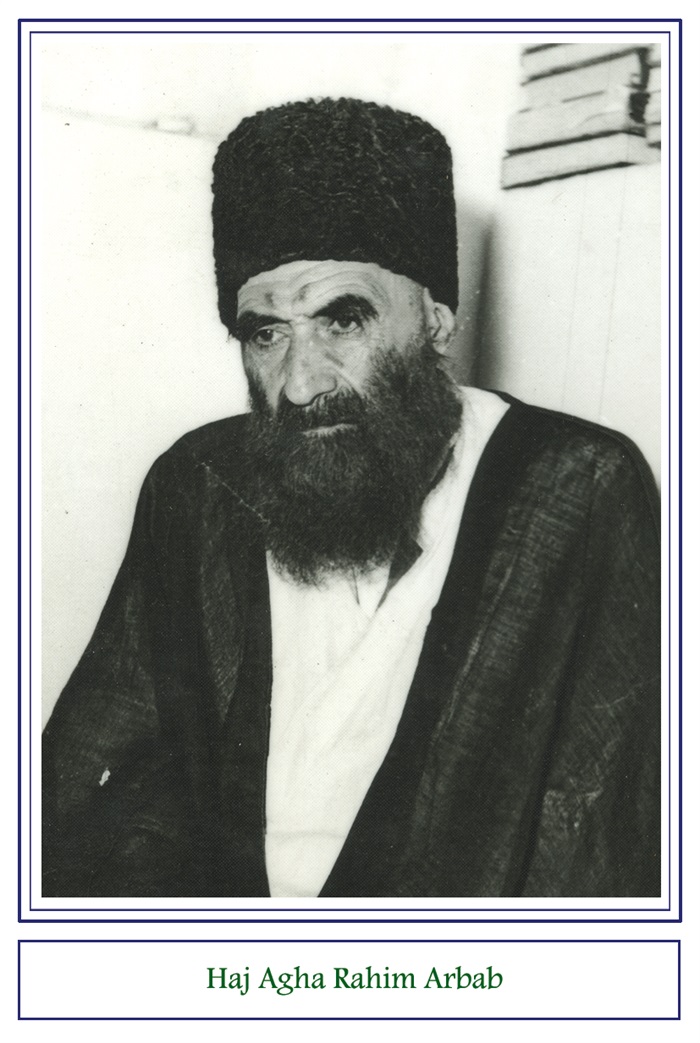
He trained many scholars in his time including; Jalaleddin Homayee, Ayatollah Sayyed Roohollah Khatami, Mohammad Ali Mo’alem, Sheikh Mohammad Bagher Seddighain and many others.
He made many progressive fatwas from his independent and positive attitudes. As a religious leader, he would never become influenced by any misleading words or propaganda. His mastery in different scientific fields including astronomy and mathematics made him an outstanding figure among the religious leaders of his time.
For the last two years of his life he was blind. When he was asked whether he claimed to have any significant characteristics in life, he answered that throughout his life, he never gossiped or exposed himself to backbiting. He also never looked at the face or body of anyone he should not have. He said once that his brother
P: 214
and his wife lived with him for forty years in his house, ‘During these forty years, I never saw my brother’s wife.’
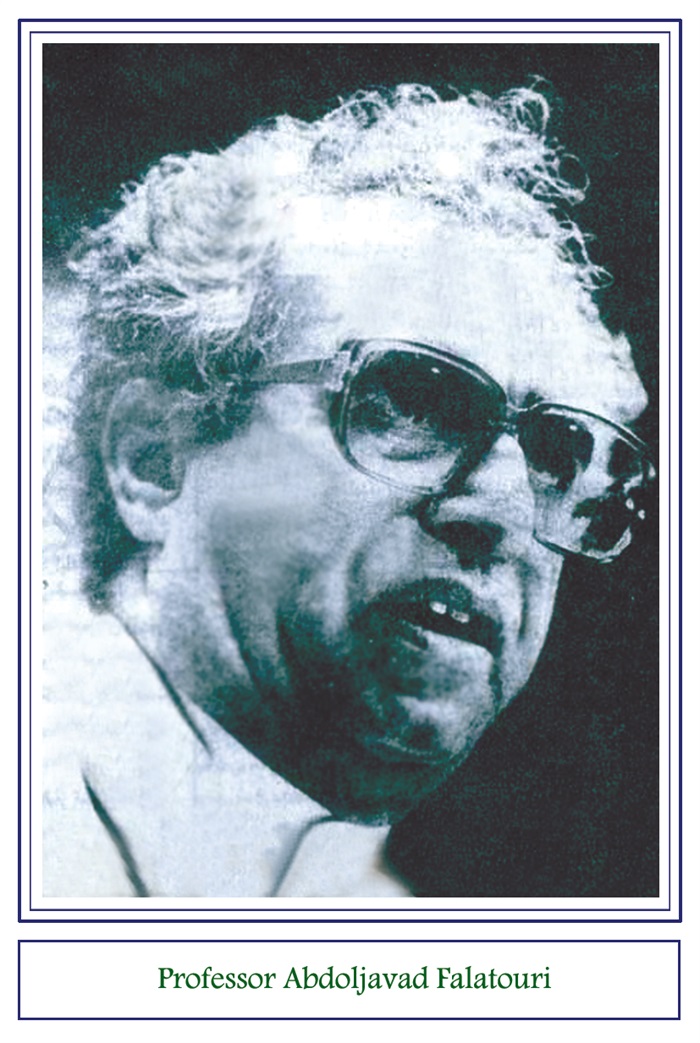
Professor Abdoljavad Falatouri (d. 1417 AH)
He was a scientist and a scholar and one of the antecedents of Mulla Esma’eil Isfahani. He acquired knowledge from important people like Ayatollah Mohammad Ali Shah Abadi, Ayatollah Khansari and Sheikh Mohammad Reza Kalbaasi. He was competent in numerous languages including German, Greek and Latin. He founded a centre for the study of Shiism and compiled some of the most important juristic, theological and philosophical Shiite references in the center. He was very effective at introducing Islam in appropriate ways in German. He wrote sixty books and articles in German and fifteen in Persian. He also translated many history books.
P: 215
This graveyard is located in the northern part of Malek Graveyard (presently known as Golestan-e- Shohada).
Hossein Ali Moshfegh Zargham (d. 1393 AH)
He was among powerful, insightful and famous 14 century poets who wrote the collection volume, ‘Colourful Thoughts’.
Agha Mirza Abbas Nahvi (d. 1371 AH)
He was the son of Mirza Abdol Javad Harandi. He worked as a teacher of arts and calligraphy and one of the founders of new schools in Isfahan. He founded ‘Dianat School’ and was the author of some books.
P: 216
This graveyard is located near the entrance door of Golestan-e Shohada and on the west side of the mausoleum of Ayatollah Ashrafi Isfahani. Some of the figures buried here include:
Sayyed Mohammad Reza Hosseini Harandi (d. 1402 AH)
He was one of the famous preachers in Isfahan who impressed people with his pleasant voice. He received death threats on several occasions by individuals attributed to the Bahai sect. He was taught by Ayatollah Sayyed Ali Najaf Abadi and Ayatollah Abol Hasan Isfahani.
Mirza Abdolwahab Kalantar (d. 1389 AH)
He was a famous man of principal from a well informed family that has contributed to the medical sciences and philosophy.
This graveyard is located in the southern part of Mir Mohammad Sadeqi’s graveyard, on the eastern pavement of Ayatollah Haj Agha Rahim Arbab mausoleum. Dr. Mirza Ahmad Khan Mohei and his two sons have been buried here.
Dr. Mirza Ahmad Khan Mohei (d. 1371 AH)
Son of Mirza Hossein, the sergeant. He is the founder of Ahmadieh Hospital in Taleghani Street. This graveyard also contains a number of other members of Mohyi family, including the deceased sons of Mirza Ahmad, Dr Mirza Ali Asghar Mohyi (d. 1394 AH) and Dr Hussein Mohyi (1371 AH).
P: 217
The burial ground which is named Golestan-e Shohada consists of several old graveyards within the area of Takht-e-Foulad. After the martyrdom of Ayatollah Shams Abadi in 1976(AD), following his burial there, a graveyard nearby was assigned to the political victims of the Pahlavi Regime. Some of the martyrs of the Islamic Revolution have also been entombed here.
Following the victory of the revolution and the start of the Imposed War, sections of privately owned land and houses were bought in order to develop the current burial ground. Initially, the martyrs of the events of Sistan and Baluchistan and Kordestan and then the subsequent victims of the war were placed in this graveyard.
After the Moharram Operation in 1982(AD), in which three hundred and thirty people were martyred and then given a magnificent funeral in Isfahan, each piece of the burial ground was named after a certain war operation in which the most number of soldiers were killed.
Overall there are thirty five sections in the burial ground and the following are some of the most important martyrs buried in this area:
Shahid (martyr) Hojat-ol-Islam Ali Akbar Ezheie
The son of Ayatollah Haj Mirza Ali Mohammad Ezheie, departed in 1981(AD) due to a bombing incident of Islamic Revolution party in Tehran. He is the author of several books including ‘Man from the Perspective of the Quran’ and ‘Piety from the Viewpoint of Man.’
P: 218
Image
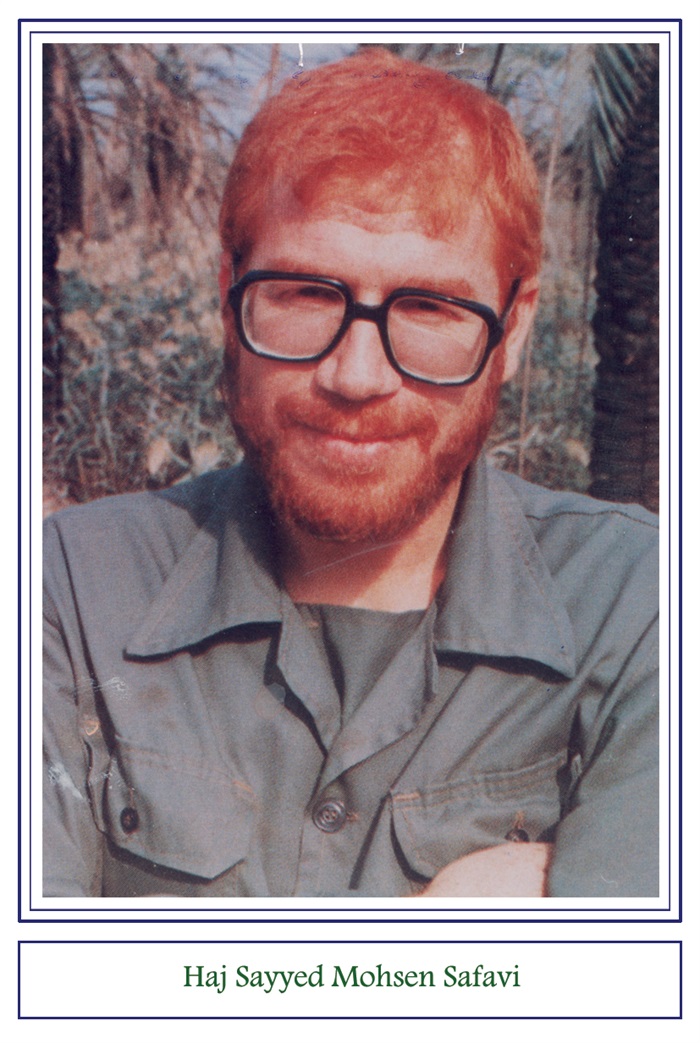
Haj Sayyed Mohsen Safavi
Son of Abbas, martyred in 1986(AD). The civil engineering graduate, Mohsen Safavi, together with his brother, Rahim, was among the political activists before the revolution and joined Shahreza-based Revolutionary corps after the victory of the Islamic Revolution. Later, he became in charge of engineering devision of Isfahan- based Revolutionary Corps. His vigorous attempts and brave attitude led him to key positions in the Imposed War against the enemy. He was known to be a broadminded soldier and courteous individual by his colleagues and family.
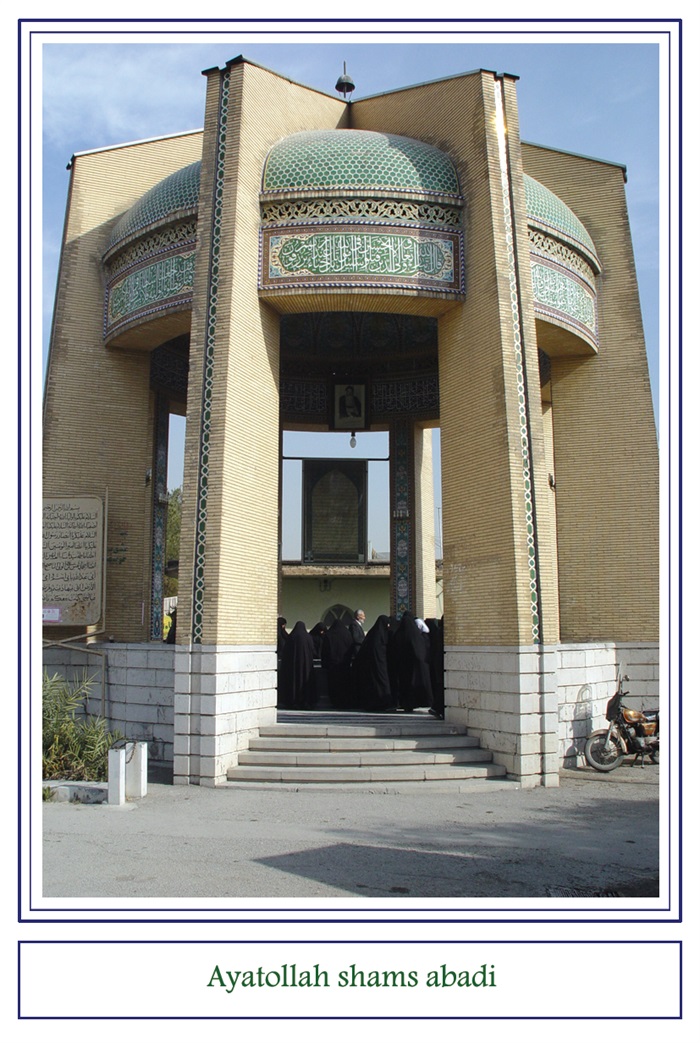
Martyr Ayatollah Haj Sayyed Abolhasan Al-e-Rasool
Known as ‘Ayatollah Shams Abadi,’ he was assassinated by a terrorist group in 1976(AD). He is the author of some valuable books such as ‘An Introduction to Sahifeye Sajadieh’ and ‘Words of Wisdom by Ibrahim, the Prophet’.
P: 219
Ayatollah Sheikh Ali Meshkaat (d.1988 AD)
Being a religious scholar, he taught for more than fifty years in the Sadr School in Isfahan. He was buried next to his son-in-law Ayatollah Shams Abadi’.

Shahid Ataollah Ashrafi Isfahani
He was martyred in 1982(AD) by a so-called Mojahedin terrorist group, who were hypocrites operating within the Islamic Revolution, while he was performing his prayers. He had been appointed as the Friday prayer leader of the city of Kermanshah after the revolution by Imam Khomeini as well as his representative in the city. Imam Khomeini said about him, ‘Every time I see his honour Ashrafi Isfahani, I am reminded of God.’ It is reported that he expressed his love to become a martyr for the sake of Islam by saying: ‘I shall implore Allah that I can be the fourth 'Martyrs of Mosque', and that I sacrifice my life genuinely for the sake of Islam and not only for just being a martyr.”
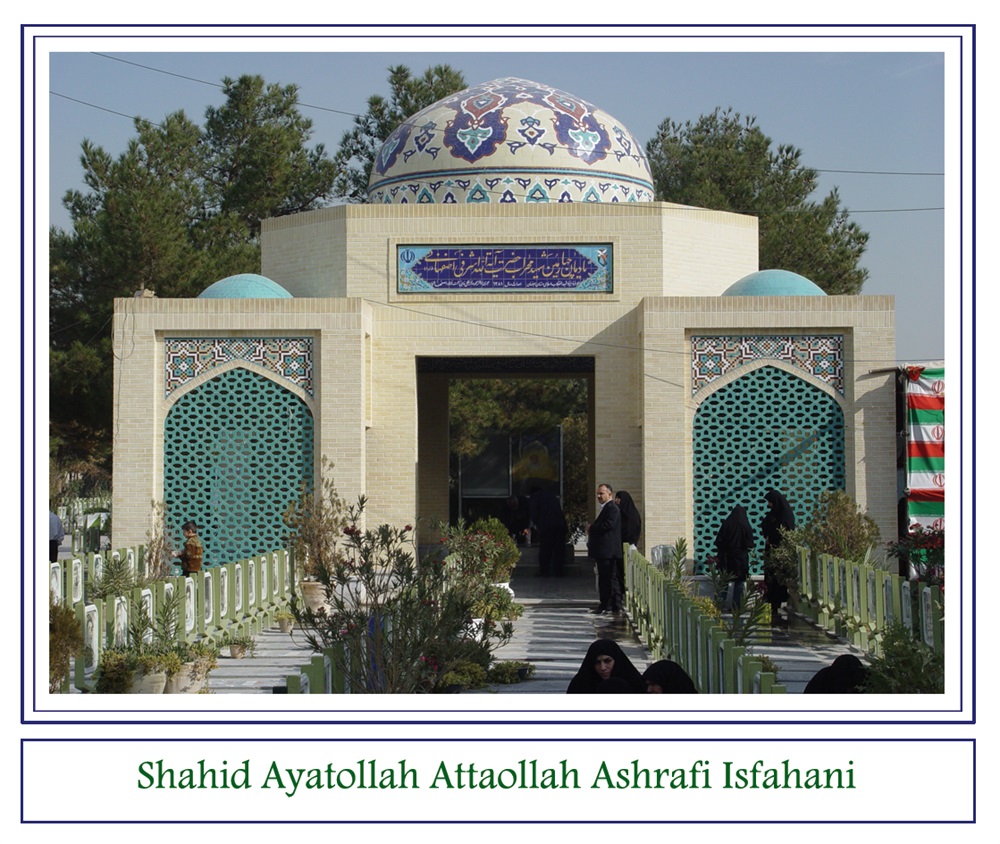
Image
P: 220
Image

Valliollah Nikbakht
Son of Naaser, departed in 1979(AD). He was ranked highest among the students of electronics at the University
of Shiraz. Although he was offered to a doctorate at one of the universities in the USA, he chose to become a university lecturer in Sistan and Baluchistan, a deprived area before the Islamic Revolution. After the victory of the Islamic
Revolution, in addition to his teaching responsibilities, he was also
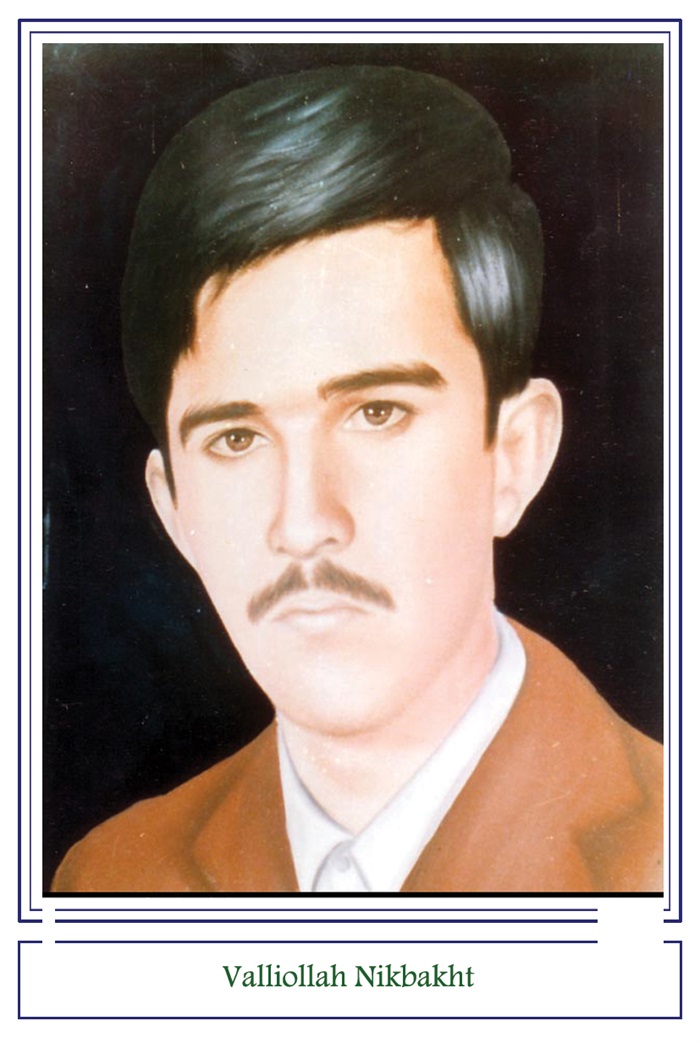
Image
P: 221
active both as a revolutionary guard as well as a committed member (a member of Islamic Revolutionary Committee) and one of the founders of Jihad Sazandegi (Construction Jihad). He was the first Construction Jihad martyr who dedicated his life to the country.
Sayyed Ahmad Hejazi
Son of Hussain martyred 1981(AD). He was an active revolutionary whose opposition to the regime led him to be imprisoned and tortured. He was an activist engaged in attempts at fighting for liberation in the south of Lebanon. After joining the Revolutionary Guard Corps, he took control of the Logistic Section of Revolutionary Guards in Kordestan. He was eventually martyred in the south France.
Jalal Afshar

Son of Mohammad, martyred in 1984(AD) in the Imposed War.He started his political venture by being a very active opponent of the Shah. He was very firm in his belief and reached exalted spiritual heights. He is mentioned by one of the religious figures as being ‘Zaakere Gharib-ol-Boka’ (always weeping worshipper). He lived very simply and his marriage ceremony is famous for its simplicity and informality. His wife says: ’On the third day of Sha’ban with a ring, a Qur’an, a Nahj-ol-Balaaghe and a series of Al Mizan commentary books, we performed our wedding.’ His ultimate wish was to be killed in the way of Islam and finally his wish was granted.
P: 222
Haj Akbar Agha Babayee
Son of Hussain Ali, He was an activist and a revolutionary in the time of the Shah. During the Imposed War, he was in charge of the Revolutionary Guard’s operations in Sanandaj. He was also Commander of the Brigade 110 Shahid Boroojerdi, Commander in Chief of Brigade 18 Al Ghadeer of Yazd. One of his greatest and bravest activities was his mission in the operation called Kirkuk which led to the total devastation of the Kirkuk refinery. After the war, he started studying at university. He eventually departed in 1996(AD) due to the chemical injuries he had sustained during the war.
Ghorban Ali Arab
Son of Mohammad Ibrahim died in 1985(AD). He took part in numerous operations in the war and was one of the Commanders in Chief of the operations carried out by the Imam Hussain Army Division. He was killed in the Badr Operation. Part of his last will reads: ’Oh God! Give us the taste of the love of worshipping you. Oh God! Make our departure martyrdom in your way.

Sheikh Abdollah Meisami
Martyred in 1987(AD). He is famous for being sentenced to long term imprisonments before the revolution. Being a clergyman, he started his cultural activites in Yasuj and later joined the office of the Imam Representatives in the Ninth Division of the Revolutionary Crops. He also became the Imam Representative in the Islamic Revolution Guard’s Headquarter (Khatam-ol-Anbia). He was responsible for all the war fronts. He
P: 223
always used to say: 'When one works for the sake of Allah, his act becomes so apparent that he himself cannot believe it.'
Haj Hussain Kharazi
Son of Karim, martyred in 1986(AD). He was a Commander in Chief of the Imam Hussain Army Division. After the victory of the Islamic Revolution he became a member of the Revolutionary Guards and took part in different missions such as liberating the city of Sanandaj which had been invaded by anti-revolutionaries. After breaking through the Iraqi’s besiegement of Abadan, he became directly responsible for organizing the Imam Hussain Brigade. During the Tarigh-ol-Ghods Operation and the recapture of the city of Bostan, the Brigade inflicted heavy damage on Iraqi forces, resulting in the destruction of more than twenty of Iraq’s armoured, mechanized and infantry brigade.
He was involved in nearly all of the operations carried out by the Imam Hussain Army Division. In the Kheibar Operations he lost his right hand. His comment on this incident was: ‘The angels of God wanted to take me up but I had not released my heart from this unworthy world. I was worth only this much.’

He took part in subsequent operations and inflicted heavy losses on the Iraqi’s President Guard’s and foiled the Ba’si’s attempts in taking back Faw. He was eventually martyred in the
P: 224
Shalamche Operational area near ‘Nahr Jasem.’ Part of his will reads:
‘I witness that the words of the infallible Imams are the last words and obedience to them is our duty and following them leads to our salvation and opposing them leads to anguish and torment. They are intercessors and Imams on Day of Judgement. Oh God! I seek refuge in you from the darkness of the grave and when I am asked questions by the angels. Oh God! Help me on the Day of Justice; I am desperate and broken hearted. Oh God! I only know you as the real owner of victory.’
Shahid Kharazi was very much in love with the Qur’an and its concepts. He used to recite the elegies for Imam Hussain sweetly on the Days of Moharram and Ashura.
He always used to wear the Basij uniform and recommended that others be very careful in observing the principles and values of Islam and not to be wasteful on spending public fund.
Mostafa Raddanipoor
Radanipoor was a clergyman who sacrificed his life in 1981(AD). He was one of the lovers of Imam Mahdi who was always looking forward to meeting him. Before the revolution, he used to work in the back breaking factories around the city of Qom. After the victory of the Islamic Revolution he took part in different operations and was finally martyred in the Val Fajr Two Operation. His younger brother was killed in the war; he was upset that he had not been martyred before him.
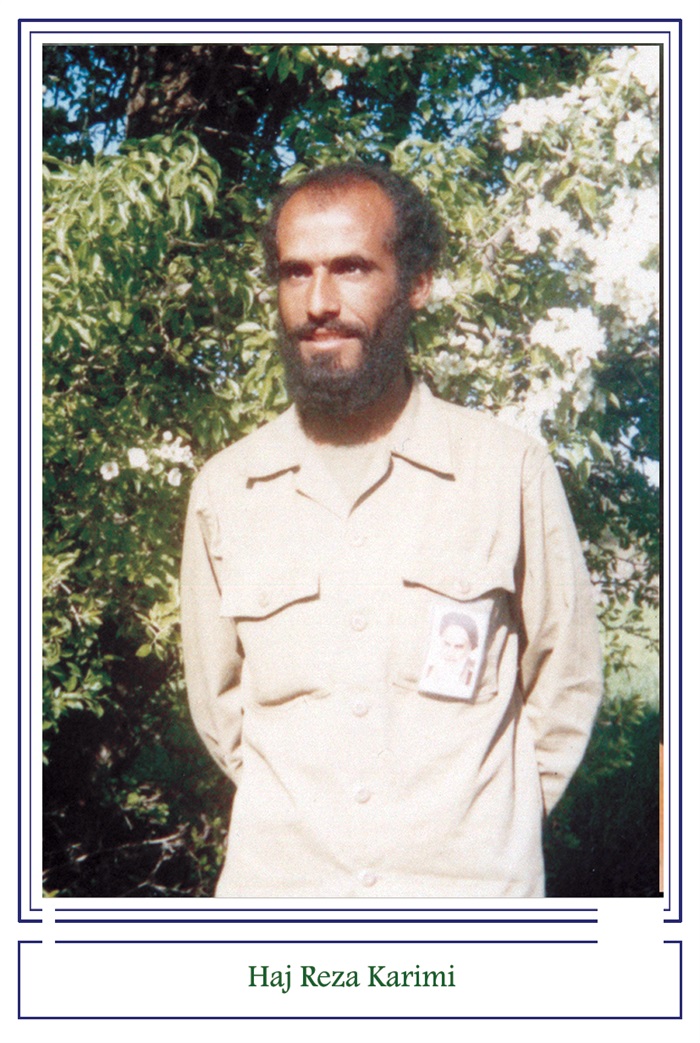
Haj Reza Karimi
Son of Abdollah, his grave is located in the last plot of Golestan-e Shohada and is called the Farewell plot. After
P: 225
suffering a long time from severe chemical injures, he finally passed away in 1381(AD). Some highlights of his will read: ‘Oh you, the responsible and the statesmen, be careful not to be enchanted by worldly positions and ranks. If these positions were forever they would not have been ours. Let us be attentive to the miseries and the agonies of the oppressed. And let us be proud of having been bestowed this opportunity by Almighty Allah to be of service to this beloved nation. This opportunity is the blessed outcome of the martyr’s blood.’
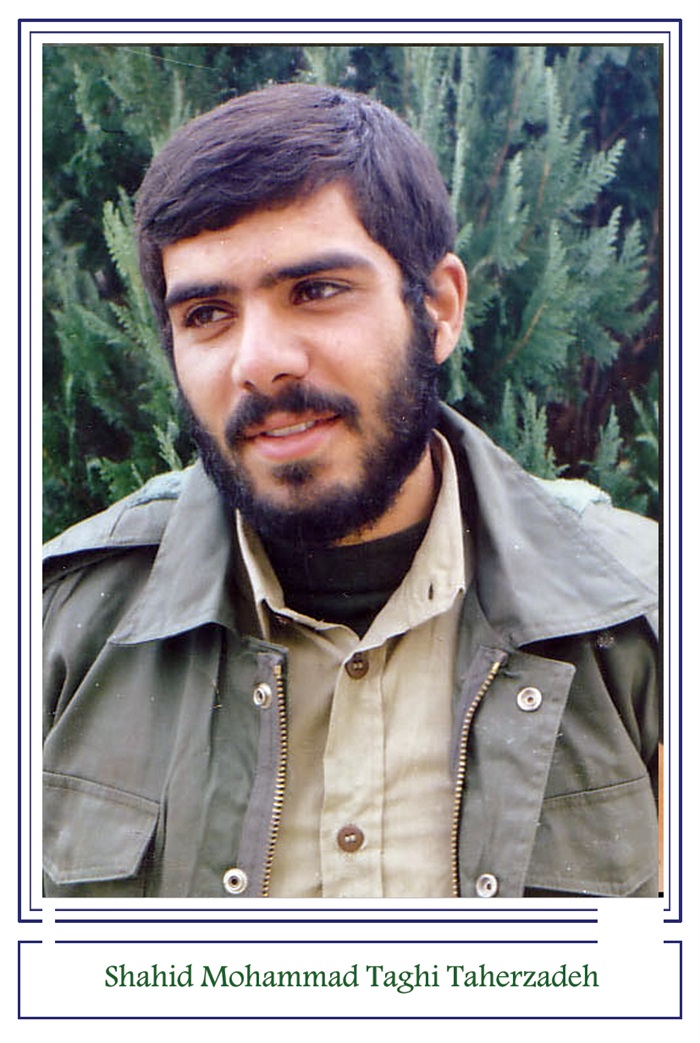
Mohammad Reza Toorajizadeh
Son of Hasan, the Commander of Ya Zahra Battalion of Imam Hussain Division was martyred in the Karbala 10 Operation. He was a modest soldier who dedicated his time to improving his fellow combatants’ morale in the war by singing inspirational songs.
Shahid Mohammad Taghi Taherzadeh
He departed this world at the age of thirty five after being in the state of comma for eighteen years. During this period, he and his family were visited in Isfahan by Ayatollah Khamenei, the leader of the Islamic Republic of Iran.
P: 226
Image
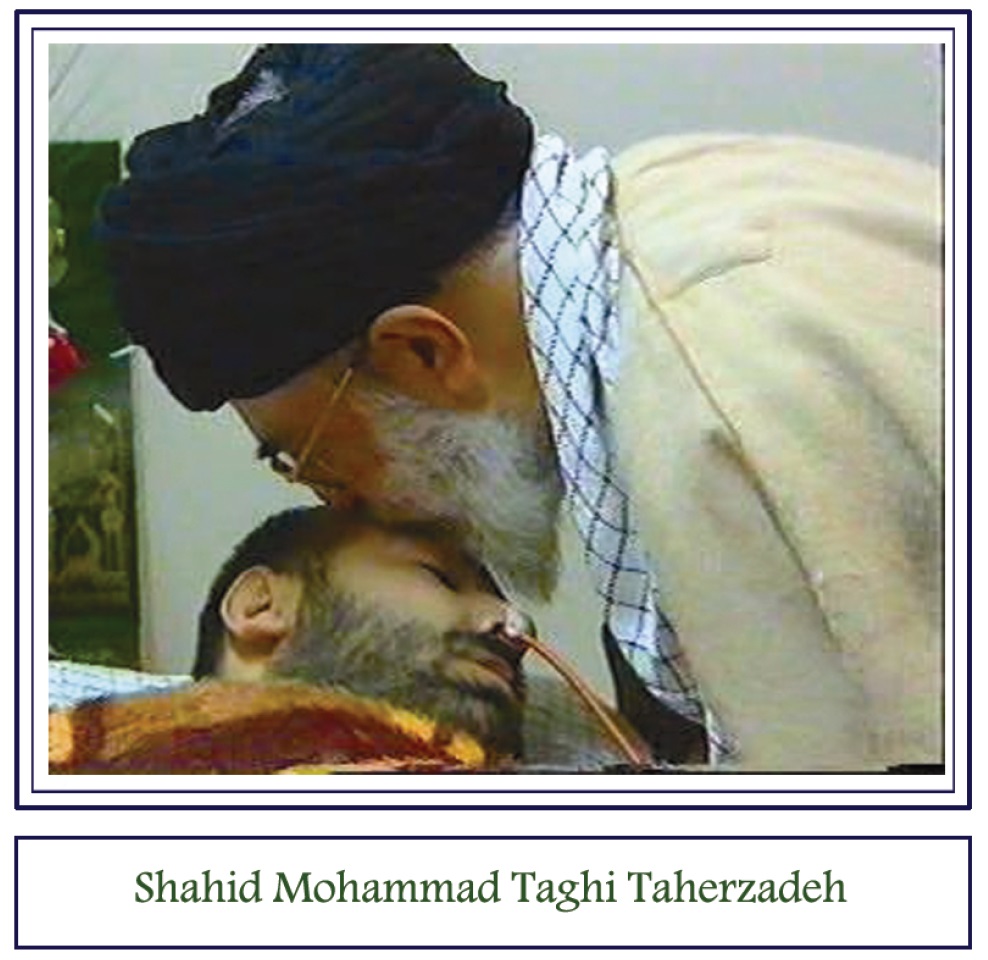
Haj Ahmad Kazemi
The Brigade General Kazemi was born in Najaf Abad, a distinct town of the province of Isfahan. The personality that Shahid Kazemi displayed later on in his life was acquired and developed when he was a young boy in Najaf Abad living in a religious family where love for the Prophet and his family was a normal feeling. It was this love that gave him a feeling of solidarity with the fellow human beings and specially the oppressed Palestinian nation. In 1979(AD) with a number of fellow combatants he headed towards Palestine to aid the Palestinian movement.
P: 227
Image
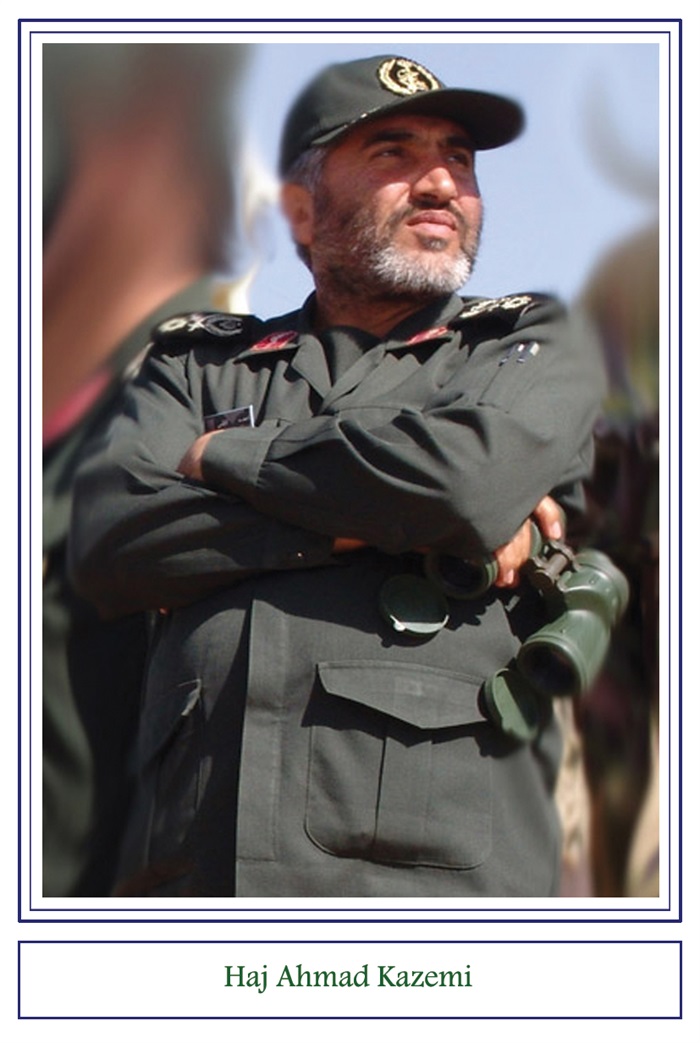
After a while, when he returned to Iran he took part in the Imposed War. On several occasions came close to martyrdom and on some occasions he was severely injured. After the war, he was appointed as the Commander of the ‘Hamzeh, Sayed-o-Shohada Head Quarter’ that was in charge of keeping the war gains and guarding against the enemies’ possible aggressions. He was awarded with three different badges of bravery called ‘Fath Medal’ for his wise and courageous efforts during the war. In 1981(AD) during the battle of Abadan, he formed the central core of Najaf Ashraf Brigade which was later developed to a Division. In 2000 he served as the Commander
in Chief of the Revolutionary Guards Air Force for a period of five years. After this he was promoted to the Commander in Chief of the Revolutionary Guards. He was finally killed in an air crash incident near Urumieh in 2005. In a letter of condolence written by the leader of the Islamic Republic, Ayatollah Khamenei, he was commended for his managerial accomplishments and his capability as a commander. The love.sake of Islam flared in his soul. He always stepped forward with the wish of martyrdom in his mind. Now he has reached his aims, he met Allah while he was performing his service.
P: 228
This cemetery has numerous other martyrs whose names and achievements are beyond the limited scope of this book. But, it can be said that those who rest in peace in this burial site have something to tell us all and that is: when our world is so much corrupted that no man can change the fate of society by words or preaching, there remains only one way and that is to struggle against tyranny, corruption and aggression by devoting the whole soul and body, this manifests the very art of the men of God.
P: 229
—A—
Aabadehee Graveyard, 107
Abbas Ali Khoram Lonbani, 126
Abbas Beheshtian, 53
Abbas Khan Sheida, 172
Abbas Majnoon Sichani, 84
Abdul Mahmood Mahzoon Isfahani, 185
Abol Ma'ali Kalbasi Graveyard, 130
Aga sayyed Ali Husseini Barzani, 177
Agha Bashi Graveyard, 141
Agha Hosain Gilani Lonbani, 125
Agha Hussain Khansari, 61
Agha Jamaleddin Mohammad Khansari, 62
Agha Mir Mohammad Reza Beheshti, 86
Agha Mir Sayyed Mohammad Hussaini Shahshahani, 117
Agha Mirza Abbas Nahvi, 222
Agha Mirza Mohammad Javad Hussain Aabadi, 102
Agha Mohammad Bid Aabaadi, 93
Agha Mohammad Bid Aabaadi Graveyard, 92
Agha Mohammad Kazem Valeh, 121
Agha Mohammad Taghi Sahhaf, 90
Agha Sayed Razioddin Mohammad Hussaini Shirazi, 65
Agha Sayyed Mohammad Bagher Dorchehee, 157
Agha Sayyed Abdollah Seghatoleslam, 218
Agha Sayyed Abojaafar Khadem-u-Sharia, 149
Agha Sayyed Ali Asghar Hussaini Barzani, 66
Agha Sayyed Asadullah Dadkhah, 192
Agha Sayyed fazlollah Beheshti, 87
Agha Sayyed Hasan Mojtahid, 104
Agha Sayyed Mohammad Bagher Charsouqi, 122
Agha Sayyed Mohammad Hussaini Kho'ei, 114
Agha Sayyed Mohammad Latif Khajooi, 182
Agha Sayyed Mohammad Reza Khorasani, 76
Agha Sayyed Muhammad Latif Khajooi Graveyard, 182
Agha Sayyed Razi(Sadat Graveyard), 65
Agha sayyed Taha Beheshti Nezhad, 87
Agha Sayyed Zein-ol-Abedin Tabatabayee Abarghooyee, 77
Agha Sayyed Zein-ul-Aabedin Khansari, 101
Agha Sheikh Mohammad Hussein Meshkini, 185
Ahmad Erfan, 115
Akhoond Mulla Kazem Moravej Bidabadi, 166
Akhoond Mulla Mohammad Hussain Fesharaki, 146
Akhoond Mulla Mohammad Kashani, 213
Akhoond Mulla Muhammad Sadegh Ardestani, 161
Ali Hamadanian, 193
Ameen-o-Tojjar Graveyard, 139
Ata-ul-Molk Dahesh Graveyard, 201
Ayatollah Sayyed Abul Hassan Tabatabai Borojerdi, 164
Ayatollah Sheikh Ali Meshkaat, 226
—B—
Baba Foulad Halvayee, 46
Baba Roknoddin Graveyard, 41
Baba Roknoddin Shirazi, 43
Baha’oddin Mohammad Fazel Isfahani, 75
Banoo Ameen, 140
Behind Mosalla Graveyard, 84
Boroojeni Graveyard, 222
Boroujerdi Graveyard, 163
—D—
Darab Afsar Bakhtiari, 54
Darvish Abdol Majid Taleghani, 55
Darvish Naser Ali Golkar, 161
Dr Abdul Baghi Nawwab, 87
Dr Ahmad Riahi, 192
Dr Mortaza Hakami, 150
Dr. Ebrahim Ne’matollahi, 143
Dr. Hasan Kalbasi, 154
Dr. Mirza Ahmad Khan Mohei, 223
—F—
Fazel Hendi Graveyard, 74
Fazel Sarrab Graveyard, 71
Fazlollah Dahesh, 201
Feiz Graveyard, 89
—G—
Ghorban Ali Arab, 230
Golestan-e Shohada, 224
Golzar Graveyard, 176
—H—
Haj Abulghasem Nouraei Sedehee, 183
Haj Agha Bagher Ghazvini Dardashti, 184
Haj Agha Fakhrodin Kalbasi, 154
Haj Agha Kamal-u-Din Ghazvini, 185
Haj Agha Mirza Hashemi, 211
Haj Agha Monir-o-din Boroojerdi, 216
Haj Agha Rahim Arbab, 220
Haj Agha Sadrudin Kalbasi, 154
Haj Ahmad Kazemi, 234
Haj Akbar Agha Babayee, 230
Haj Bagher Ghazvini Dardashti (Khalilian) Graveyard, 184
Haj Hussain Kharazi, 231
Haj Mir Esmaeal Rizi, 150
Haj Mirza Abdol Ghafar Hussaini Toyserkani, 136
Haj Mirza Agha Imami, 88
Haj Mirza Badi' Mousavi Darbe Imami, 118
Haj Mirza Baha’oddin Noori, 45
Haj Mirza Habibollah Nayyer, 138
Haj Mirza Habibollah Rozati, 177
Haj Mirza Hassan Moinzadeh, 196
Haj Mirza Hussain Nayeb-o-Sadr, 70
Haj Mirza Hussein Modarres Kahangi, 85
Haj Mirza Ibrahim Nawab, 211
Haj Mirza Javad Noori, 44
Haj Mirza Mohammad Bagher Toyserkani, 137
Haj Mirza Mohammad Sadeq Namazi, 90
Haj Mirza Mohammad Taghi Noori, 45
Haj Mirza Muhammad Bagher Hakim Bashi, 150
Haj Mirza Sayyed Mehdi Husseini Badri Sini, 177
Haj Mirza Suleiman Khan, 153
Haj Mirza Zein-ol-Abedin Ashraf-ol-Kottab, 64
Haj Mohammad Hasan Kalbasi, 81
Haj Mohammad Hussain Mosaverolmolk, 212
Haj Mohammad Ja'far Aabade'ei, 108
Haj Mohammad Sadeq Takht-e-Fouladi, 102
Haj Mulla Esma'eil Naqne'ei, 109
Haj Mulla Mohammad Sadeq, 77
Haj Reza Karimi, 232
Haj Sayyed Ali Naghi Mousavi Zanjani, 76
Haj Sayyed Mohammad Ali Mobarakei, 137
Haj Sayyed Mohammad Ali Sadeqi, 218
Haj Sayyed Mohammad Beheshti Nezhad, 211
Haj Sayyed Mohammad Hussain Khatoon Abadi, 70
Haj Sayyed Mohammad Moghaddas, 180
Haj Sayyed Mohammad Sadr-ul-Zakerin, 171
Haj Sayyed Mohsen Safavi, 225
Haj Sayyed Mortaza Zahir-ul-Islam, 177
Haj Sayyed Yousof Khorasani, 75
Haj Sheikh Abdol Hussain Mahallati, 77
Haj Sheikh Ismael Kalbasi, 154
Haj Sheikh Mohammad Hussein Ashani, 133
Haj Sheikh Mohammad Ismail Heirani, 192
Haj Sheikh Muhammad Bagher Sedighain, 160
Hamadanian Graveyard, 193
Hashemi Talkhooncheh, 198
Hashemi Talkhooncheh Graveyard, 198
Hassan Ehtemam, 191
Hassan Ghavvami Zadeh, 183
Hojjat Najafi Graveyard, 199
Hossein Hamadanian, 193
Hossein Ali Moshfegh Zargham, 222
Hussain Shahnaz, 53
Hussain Shajareh, 143
—I—
Ibrahim Rahe Nejat, 45
Imam Jom’aa Graveyard, 195
—J—
Jahangir Khan Qashqa'ei, 112
Jahangir Khan Qashqa'ei Graveyard, 111
Jalal Afshar, 229
Jalal Taj Isfahani, 173
Jalaleddin Homayee, 209
Javad Majd Zadeh, 46
Joshua, the Prophet, 209
—K—
Kamaleddin Majlesi.
Kazerouni Graveyard, 155
Khadem-u-Sharia Graveyard, 149
Khansari Graveyard, 60
Khatoon Abadi Graveyard, 68
—L—
Lady Hajieh Maryam Salehi, 73
Lady Robabeh Elahi, 167
Late Musician, Master Abdul Hussein Barazandeh, 148
Lesan-ol-Arz Graveyard(The Tongue of the Earth), 208
—M—
Maarefi Graveyard, 196
Mahdavi Graveyard, 104
Malek Graveyard, 213
Mango ghaan ZolKhair, 186
Martyr Ayatollah Haj Sayyed Abolhasan Al-e-Rasool, 225
Maryam Beigum, 100
Mir Abdul Hussein Sayyed-ul-Araghain, 169
Mir Abol Ghasem Fendereski, 51
Mir Fendereski Graveyard, 48
Mir Ma'soom Khatoon Aabadi, 94
Mir Mohammad Bagher Khatoon Abadi, 70
Mir Mohammad Esma'eil Khatoon Abadi, 69
Mir Mohammad Hadi Ne'matollahi Khatoon Aabadi, 143
Mir Mohammad Hussain Hussaini Mir Mohammad Sadeqi, 77
Mir Mohammad Mehdi Nayeb-o-Sadr, 65
Mir Mohammad Sadegh Beheshti, 86
Mir Mohammad Sadegh Modarres Khatoonabadi, 169
Mir Mohammad Sadeqi’s Graveyard, 218
Mir Sayyed Ahmad Alavi, 67
Mir Sayyed Ali Ayat Najafabadi, 136
Mir Sayyed Ali Mahdavi Kermani, 181
Mir Sayyed Ali Tabatabayee, 63
Mir Sayyed Mohammad Ali Shahshahani, 79
Mir Sayyed Mohammad Darbe Imami, 66
Mir Sayyed Mohammad Najafabadi, 170
Mirmohammad Mehdi Khalighipour, 148
Mirza Mohammad Hussein Modarres, 78
Mirza Abbas Saber Ali Shah, 142
Mirza Abdol Hussain Isfahani, 89
Mirza Abdol Hussain Qudsi, 138
Mirza Abdol Rahim Kalbasi, 133
Mirza Abdollah Arbab, 181
Mirza Abdolwahab Kalantar, 223
Mirza AbdulJavad Khateeb, 161
Mirza Abol Ghasem Tabib, 102
Mirza Abol Hoda Kalbasi, 132
Mirza Abol Ma'ali Kalbasi, 131
Mirza Agha Dehkordi, 212
Mirza Ahmad Khan Mohei Graveyard, 223
Mirza Ali Moshfeghi, 178
Mirza Ali Muhammad Abrishamkar, 147
Mirza Asadollah Ashtari, 109
Mirza Asadollah Rejali, 183
Mirza Ata'ollah Charsouqi, 124
Mirza Hasan Aatash, 73
Mirza Hasan Ali Majlesi, 64
Mirza Hasan Araqi Isfahani, 118
Mirza Hassan Khan Jaberi Ansari, 44
Mirza Heidar Ali Majlesi, 63
Mirza Hussain Aarefche, 66
Mirza Hussain Keshikchi, 126
Mirza Jamaloddin Kalbasi, 133
Mirza Mahmood Sadr-ol-Mohadessin, 109
Mirza Mahmood Tabrizchi, 84
Mirza Masih Toyserkani, 217
Mirza Mohammad Ali Parvaneh, 181
Mirza Mohammad Bagher Mousavi Charsouqi, 123
Mirza Mohammad Bagher naghash Bashi Semiromi, 84
Mirza Mohammad Hussain Angha, 54
Mirza Mohammad Hussain Khan Ansari, 219
Mirza Mohammad Mehdi Charsouqi, 125
Mirza Mohammad Mehdi Joobare’ee, 72
Mirza Mohammad Mehdi Khan Mazandarani, 72
Mirza Mohammad Moosavi Monajjem, 110
Mirza Mohammad Rafi' Tabatabayee Na'eini, 58
Mirza Mohammad Shams-ol-Kottaab, 81
Mirza Mohammad Soha, 90
Mirza Muhammad Taghi Adib Toosi, 166
Mirza Rafi'a Graveyard, 57
Mirza Rahim Sheikh-ol-Islam, 63
Mirza Soleiman Agha Bashi, 143
Mirza Taghi Khan Sartip, 55
Mirza Yahaya Mostufi Bidabadi, 150
Mirza Yahya Fazel Harandi, 217
Moghaddas Graveyard, 179
Mohammad Ali Aarefche, 66
Mohammad Ebrahim Ne'matollahi, 144
Mohammad Hashem Khoshnevis, 90
Mohammad Hussain Molavi, 82
Mohammad Reza Toorajizadeh, 233
Morshed Abbas Zariry, 191
Mosalla Grand Burial Site, 82
Mostafa Fateh, 148
Mostafa Raddanipoor, 232
Mostafa Sattarian, 183
Muhammad Hussein Mirza Khaghani, 147
Mulla Abdollah Khansari Sadr-ol-Mohaddesin, 109
Mulla Abdulkarim Gazi, 156
Mulla Ali Marbini, 181
Mulla Esma'eil Darkooshki, 81
Mulla Esma'eil Khajooyee Graveyard, 80
Mulla Farajollah Dorri, 185
Mulla Hasan Aarandi Na’eeni, 45
Mulla Hasan Dorri, 217
Mulla Hasan Gilani Lonbani, 125
Mulla Hasan Rizi, 110
Mulla Hussain Ali Toyserkani, 63
Mulla Hussain Korbekandi, 109
Mulla Hussain Zia Isfahani, 78
Mulla Lotfollah Shams-u-Waezeen, 147
Mulla Massih Kashani, 62
Mulla Mehrab Gilani, 126
Mulla Mohammad Ali Noori Mazandaraani, 44
Mulla Mohammad Bagher Fesharaki, 62
Mulla Mohammad Esma'eil Khajooyee, 81
Mulla Mohammad Ghombavani, 77
Mulla Mohammad Hussain Teflisi, 125
Mulla Mohammad Ibn Abd-ol-Fattah Tonekaboni, 72
Mulla Mohammad Javad Adinehee, 146
Mulla Mohammad Na’eeni, 75
Mulla Mohammad Sadeq Peikani, 63
Mulla Mostafa Ghomshe'ei, 82
Mulla Muhammad Dehaghani, 181
Mulla Najaf Ali Khorasani, 110
Mullah Geda Ali Ghari, 85
—N—
Nasrollah Khan Shah Naser, 175
Nayeb Asdollah Neizan, 91
Norollah Noor-e-Sharq, 115
—O—
Ostad (Master) Hossein Maarefi, 196
Ostad Hussain Khatayee, 73
Ostad Shokrollah Sani'e Zade, 143
—P—
Professor Abdoljavad Falatouri, 221
—R—
Rajab Ali Golz, 178
Rasool Behravan, 186
Reezy Graveyard, 145
Rokn-ul-Mulk Mosque, 151
Rokn-ul-Mulk Shirazi", 153
—S—
Sadat Ahmadabadi (Faghih Ahmadabadi) Graveyard, 187
Sadat Beheshti Family Resting Ground, 85
Sadr-e-Hashemi Graveyard, 194
Sayyed Abbas Safi Dehkordi, 174
Sayyed Abdolbaghi Tabib, 211
Sayyed Abd-ol-Hasib Ibn Sayyed Ahmad Alavi, 67
Sayyed Abdulali Marandi, 147
Sayyed Abulghasem Shahkarami, 181
Sayyed Aghajan Noorbakhsh, 174
Sayyed Ahmad Hejazi, 229
Sayyed Ahmad Lonbani, 191
Sayyed Ali Khorasani, 78
Sayyed Ali Noorbakhsh, 193
Sayyed Asadollah Beheshti, 86
Sayyed Asadollah Mostajab-u-Daawati, 180
Sayyed Asadollah Rashtian, 167
Sayyed Ata’ollah Darbe Imami Hussaini, 72
Sayyed Fakhroddin Moosavi Khansari, 115
Sayyed Hasan Fani, 217
Sayyed Hasan Kashani, 133
Sayyed Hashem Khorasani, 78
Sayyed Ibrahim Mir Shafie, 186
Sayyed Jaafar Khakshir, 178
Sayyed Khalil Mobarekehee, 186
Sayyed Mahmood Kelishadi Graveyard, 200
Sayyed Mahmood Kelishadi Resting Place, 200
Sayyed Mahmood Moosavi Darb-e-Imami, 160
Sayyed Mehdi Nahvi, 105
Sayyed Mirza Ardestani, 217
Sayyed Mohammad Ali Mir Shafie, 186
Sayyed Mohammad Ali Oraizi, 216
Sayyed Mohammad Bagher Nahvi, 105
Sayyed Mohammad Bagher Pishnamaz, 65
Sayyed Mohammad Ebrahim Beheshti, 86
Sayyed Mohammad Hadi Sadr-ul- Ulama, 194
Sayyed Mohammad Hossein Imami, 88
Sayyed Mohammad Javad Khorasani, 76
Sayyed Mohammad Najm Isfahani, 114
Sayyed Mohammad Oraizi, 170
Sayyed Mohammad Razavi Khansari, 131
Sayyed Mohammad Reza Hosseini Harandi, 223
Sayyed Mohammad Sadr-e- Hashemi, 194
Sayyed Mohammad Shafi’ Jazaayeri Shooshtari, 63
Sayyed Mohammad Taaher Toyserkani, 54
Sayyed Mohammad Taghi Beheshti, 191
Sayyed Mohammad Taghi Mostajaboda'veh, 104
Sayyed Mohammad Taghi Mussavi Ahmadabadi, 187
Sayyed Mohsen Mir Mohammad Sadeqi, 78
Sayyed Moslehoddin Mahdavi, 105
Sayyed Mostafa Beheshti Nezhad, 86
Sayyed Muhammad Samsam, 167
Sayyed Rahim Avazeh Khan, 85
Sayyed Rohullah Kashfi, 53
Sayyed Sadr-u-Din Hateli Koopaii, 165
Sayyed Taghi Rastghalam, 147
Sayyed Zein-ol-Abedin Razavi Khansari, 131
Sayyed-ul-Araghain Graveyard, 168
Shahid (martyr) Hojat-ol-Islam Ali Akbar Ezheie, 224
Shahid Ataollah Ashrafi Isfahani, 226
Shahid Mohammad Taghi Taherzadeh, 233
Shahshahani Graveyard, 116
Sheikh Abdollah Meisami, 230
Sheikh Abulfazl Reezy, 146
Sheikh Abulghasem Zefrehee, 165
Sheikh Ahmad Bidabadi, 164
Sheikh Ahmad Ehtemam, 192
Sheikh Ali Faghih Fereidani, 177
Sheikh Asadollah Fahami, 64
Sheikh Asadollah Hakim Ghomshe’ie, 214
Sheikh Asadullah Izadgoshasb, 162
Sheikh Baha-u-Din Borhani, 183
Sheikh Dawood Mosahebi, 197
Sheikh Hasan Stahbaanaati, 216
Sheikh Heidar Ali Salawati, 184
Sheikh Ismail Moezzi, 159
Sheikh Ismail Taj-ul- Waezeen, 172
Sheikh Jamaloddin Najafi, 101
Sheikh Mahammad Hasan Yazdi, 110
Sheikh Mahmood Mofeed, 94
Sheikh Mahmoud Salek, 183
Sheikh Mohammad Ali Dezfooli, 174
Sheikh Mohammad Ali Yazdi, 217
Sheikh Mohammad Bagher Zand-e-Kermani, 189
Sheikh Mohammad Hakim Khorasani, 215
Sheikh Mohammad Hassan Davarpanah, 174
Sheikh Mohammad Javad Fereidani, 183
Sheikh Mohammad Reza Hesam-ul-Waezeen, 171
Sheikh Mohammad Reza Jarghooyehi, 174
Sheikh Mohammad Reza Najafi, 101
Sheikh Mohammad Taghi Razi, 100
Sheikh Mohammad Taghi Razi Graveyard, 98
Sheikh Morteza Ghomshe’ie, 216
Sheikh Muhammad Hassan Alem Najafabadi, 159
Sheikh Nooroddin Ashani, 133
Sheikh Yosef Ale Ebrahim Dehkordi, 192
Sheykh Abasali Soheilian, 166
Sheykh Abbasali Moeen-ul-vaezeen, 171
Sheykh Ali Yazdi, 166
Sirafianpoor Graveyard(Tooba Garden), 202
—T—
Toyserkani Graveyard, 135
—V—
Valeh Graveyard, 120
Valliollah Nikbakht, 228
—Y—
Yadollah Barkhordar, 185
—Z—
Zand-e- Kermani Graveyard, 189
Zargarha Graveyard, 191
P: 230
Ata-ul-Molk Dahesh Graveyard, 201
Ayatollah Sayyed Abul Hassan Tabatabai Borojerdi, 164
Ayatollah Sheikh Ali Meshkaat, 226
—B—
Baba Foulad Halvayee, 46
Baba Roknoddin Graveyard, 41
Baba Roknoddin Shirazi, 43
Baha’oddin Mohammad Fazel Isfahani, 75
Banoo Ameen, 140
Behind Mosalla Graveyard, 84
Boroojeni Graveyard, 222
Boroujerdi Graveyard, 163
—D—
Darab Afsar Bakhtiari, 54
Darvish Abdol Majid Taleghani, 55
Darvish Naser Ali Golkar, 161
Dr Abdul Baghi Nawwab, 87
Dr Ahmad Riahi, 192
Dr Mortaza Hakami, 150
Dr. Ebrahim Ne’matollahi, 143
Dr. Hasan Kalbasi, 154
Dr. Mirza Ahmad Khan Mohei, 223
—F—
Fazel Hendi Graveyard, 74
Fazel Sarrab Graveyard, 71
Fazlollah Dahesh, 201
Feiz Graveyard, 89
—G—
Ghorban Ali Arab, 230
Golestan-e Shohada, 224
Golzar Graveyard, 176
—H—
Haj Abulghasem Nouraei Sedehee, 183
Haj Agha Bagher Ghazvini Dardashti, 184
Haj Agha Fakhrodin Kalbasi, 154
Haj Agha Kamal-u-Din Ghazvini, 185
Haj Agha Mirza Hashemi, 211
Haj Agha Monir-o-din Boroojerdi, 216
Haj Agha Rahim Arbab, 220
Haj Agha Sadrudin Kalbasi, 154
Haj Ahmad Kazemi, 234
Haj Akbar Agha Babayee, 230
Haj Bagher Ghazvini Dardashti (Khalilian) Graveyard, 184
Haj Hussain Kharazi, 231
Haj Mir Esmaeal Rizi, 150
Haj Mirza Abdol Ghafar Hussaini Toyserkani, 136
Haj Mirza Agha Imami, 88
Haj Mirza Badi' Mousavi Darbe Imami, 118
Haj Mirza Baha’oddin Noori, 45
Haj Mirza Habibollah Nayyer, 138
Haj Mirza Habibollah Rozati, 177
Haj Mirza Hassan Moinzadeh, 196
Haj Mirza Hussain Nayeb-o-Sadr, 70
Haj Mirza Hussein Modarres Kahangi, 85
Haj Mirza Ibrahim Nawab, 211
Haj Mirza Javad Noori, 44
Haj Mirza Mohammad Bagher Toyserkani, 137
Haj Mirza Mohammad Sadeq Namazi, 90
Haj Mirza Mohammad Taghi Noori, 45
Haj Mirza Muhammad Bagher Hakim Bashi, 150
Haj Mirza Sayyed Mehdi Husseini Badri Sini, 177
Haj Mirza Suleiman Khan, 153
Haj Mirza Zein-ol-Abedin Ashraf-ol-Kottab, 64
Haj Mohammad Hasan Kalbasi, 81
Haj Mohammad Hussain Mosaverolmolk, 212
Haj Mohammad Ja'far Aabade'ei, 108
Haj Mohammad Sadeq Takht-e-Fouladi, 102
Haj Mulla Esma'eil Naqne'ei, 109
Haj Mulla Mohammad Sadeq, 77
Haj Reza Karimi, 232
P: 231
Haj Sayyed Ali Naghi Mousavi Zanjani, 76
Haj Sayyed Mohammad Ali Mobarakei, 137
Haj Sayyed Mohammad Ali Sadeqi, 218
Haj Sayyed Mohammad Beheshti Nezhad, 211
Haj Sayyed Mohammad Hussain Khatoon Abadi, 70
Haj Sayyed Mohammad Moghaddas, 180
Haj Sayyed Mohammad Sadr-ul-Zakerin, 171
Haj Sayyed Mohsen Safavi, 225
Haj Sayyed Mortaza Zahir-ul-Islam, 177
Haj Sayyed Yousof Khorasani, 75
Haj Sheikh Abdol Hussain Mahallati, 77
Haj Sheikh Ismael Kalbasi, 154
Haj Sheikh Mohammad Hussein Ashani, 133
Haj Sheikh Mohammad Ismail Heirani, 192
Haj Sheikh Muhammad Bagher Sedighain, 160
Hamadanian Graveyard, 193
Hashemi Talkhooncheh, 198
Hashemi Talkhooncheh Graveyard, 198
Hassan Ehtemam, 191
Hassan Ghavvami Zadeh, 183
Hojjat Najafi Graveyard, 199
Hossein Hamadanian, 193
Hossein Ali Moshfegh Zargham, 222
Hussain Shahnaz, 53
Hussain Shajareh, 143
—I—
Ibrahim Rahe Nejat, 45
Imam Jom’aa Graveyard, 195
—J—
Jahangir Khan Qashqa'ei, 112
Jahangir Khan Qashqa'ei Graveyard, 111
Jalal Afshar, 229
Jalal Taj Isfahani, 173
Jalaleddin Homayee, 209
Javad Majd Zadeh, 46
Joshua, the Prophet, 209
—K—
Kamaleddin Majlesi.
Kazerouni Graveyard, 155
Khadem-u-Sharia Graveyard, 149
Khansari Graveyard, 60
Khatoon Abadi Graveyard, 68
—L—
Lady Hajieh Maryam Salehi, 73
Lady Robabeh Elahi, 167
Late Musician, Master Abdul Hussein Barazandeh, 148
Lesan-ol-Arz Graveyard(The Tongue of the Earth), 208
—M—
Maarefi Graveyard, 196
Mahdavi Graveyard, 104
Malek Graveyard, 213
Mango ghaan ZolKhair, 186
Martyr Ayatollah Haj Sayyed Abolhasan Al-e-Rasool, 225
Maryam Beigum, 100
Mir Abdul Hussein Sayyed-ul-Araghain, 169
Mir Abol Ghasem Fendereski, 51
Mir Fendereski Graveyard, 48
Mir Ma'soom Khatoon Aabadi, 94
Mir Mohammad Bagher Khatoon Abadi, 70
Mir Mohammad Esma'eil Khatoon Abadi, 69
Mir Mohammad Hadi Ne'matollahi Khatoon Aabadi, 143
Mir Mohammad Hussain Hussaini Mir Mohammad Sadeqi, 77
Mir Mohammad Mehdi Nayeb-o-Sadr, 65
P: 232
Mir Mohammad Sadegh Beheshti, 86
Mir Mohammad Sadegh Modarres Khatoonabadi, 169
Mir Mohammad Sadeqi’s Graveyard, 218
Mir Sayyed Ahmad Alavi, 67
Mir Sayyed Ali Ayat Najafabadi, 136
Mir Sayyed Ali Mahdavi Kermani, 181
Mir Sayyed Ali Tabatabayee, 63
Mir Sayyed Mohammad Ali Shahshahani, 79
Mir Sayyed Mohammad Darbe Imami, 66
Mir Sayyed Mohammad Najafabadi, 170
Mirmohammad Mehdi Khalighipour, 148
Mirza Mohammad Hussein Modarres, 78
Mirza Abbas Saber Ali Shah, 142
Mirza Abdol Hussain Isfahani, 89
Mirza Abdol Hussain Qudsi, 138
Mirza Abdol Rahim Kalbasi, 133
Mirza Abdollah Arbab, 181
Mirza Abdolwahab Kalantar, 223
Mirza AbdulJavad Khateeb, 161
Mirza Abol Ghasem Tabib, 102
Mirza Abol Hoda Kalbasi, 132
Mirza Abol Ma'ali Kalbasi, 131
Mirza Agha Dehkordi, 212
Mirza Ahmad Khan Mohei Graveyard, 223
Mirza Ali Moshfeghi, 178
Mirza Ali Muhammad Abrishamkar, 147
Mirza Asadollah Ashtari, 109
Mirza Asadollah Rejali, 183
Mirza Ata'ollah Charsouqi, 124
Mirza Hasan Aatash, 73
Mirza Hasan Ali Majlesi, 64
Mirza Hasan Araqi Isfahani, 118
Mirza Hassan Khan Jaberi Ansari, 44
Mirza Heidar Ali Majlesi, 63
Mirza Hussain Aarefche, 66
Mirza Hussain Keshikchi, 126
Mirza Jamaloddin Kalbasi, 133
Mirza Mahmood Sadr-ol-Mohadessin, 109
Mirza Mahmood Tabrizchi, 84
Mirza Masih Toyserkani, 217
Mirza Mohammad Ali Parvaneh, 181
Mirza Mohammad Bagher Mousavi Charsouqi, 123
Mirza Mohammad Bagher naghash Bashi Semiromi, 84
Mirza Mohammad Hussain Angha, 54
Mirza Mohammad Hussain Khan Ansari, 219
Mirza Mohammad Mehdi Charsouqi, 125
Mirza Mohammad Mehdi Joobare’ee, 72
Mirza Mohammad Mehdi Khan Mazandarani, 72
Mirza Mohammad Moosavi Monajjem, 110
Mirza Mohammad Rafi' Tabatabayee Na'eini, 58
Mirza Mohammad Shams-ol-Kottaab, 81
Mirza Mohammad Soha, 90
Mirza Muhammad Taghi Adib Toosi, 166
Mirza Rafi'a Graveyard, 57
Mirza Rahim Sheikh-ol-Islam, 63
Mirza Soleiman Agha Bashi, 143
Mirza Taghi Khan Sartip, 55
Mirza Yahaya Mostufi Bidabadi, 150
Mirza Yahya Fazel Harandi, 217
Moghaddas Graveyard, 179
Mohammad Ali Aarefche, 66
Mohammad Ebrahim Ne'matollahi, 144
Mohammad Hashem Khoshnevis, 90
P: 233
Mohammad Hussain Molavi, 82
Mohammad Reza Toorajizadeh, 233
Morshed Abbas Zariry, 191
Mosalla Grand Burial Site, 82
Mostafa Fateh, 148
Mostafa Raddanipoor, 232
Mostafa Sattarian, 183
Muhammad Hussein Mirza Khaghani, 147
Mulla Abdollah Khansari Sadr-ol-Mohaddesin, 109
Mulla Abdulkarim Gazi, 156
Mulla Ali Marbini, 181
Mulla Esma'eil Darkooshki, 81
Mulla Esma'eil Khajooyee Graveyard, 80
Mulla Farajollah Dorri, 185
Mulla Hasan Aarandi Na’eeni, 45
Mulla Hasan Dorri, 217
Mulla Hasan Gilani Lonbani, 125
Mulla Hasan Rizi, 110
Mulla Hussain Ali Toyserkani, 63
Mulla Hussain Korbekandi, 109
Mulla Hussain Zia Isfahani, 78
Mulla Lotfollah Shams-u-Waezeen, 147
Mulla Massih Kashani, 62
Mulla Mehrab Gilani, 126
Mulla Mohammad Ali Noori Mazandaraani, 44
Mulla Mohammad Bagher Fesharaki, 62
Mulla Mohammad Esma'eil Khajooyee, 81
Mulla Mohammad Ghombavani, 77
Mulla Mohammad Hussain Teflisi, 125
Mulla Mohammad Ibn Abd-ol-Fattah Tonekaboni, 72
Mulla Mohammad Javad Adinehee, 146
Mulla Mohammad Na’eeni, 75
Mulla Mohammad Sadeq Peikani, 63
Mulla Mostafa Ghomshe'ei, 82
Mulla Muhammad Dehaghani, 181
Mulla Najaf Ali Khorasani, 110
Mullah Geda Ali Ghari, 85
—N—
Nasrollah Khan Shah Naser, 175
Nayeb Asdollah Neizan, 91
Norollah Noor-e-Sharq, 115
—O—
Ostad (Master) Hossein Maarefi, 196
Ostad Hussain Khatayee, 73
Ostad Shokrollah Sani'e Zade, 143
—P—
Professor Abdoljavad Falatouri, 221
—R—
Rajab Ali Golz, 178
Rasool Behravan, 186
Reezy Graveyard, 145
Rokn-ul-Mulk Mosque, 151
Rokn-ul-Mulk Shirazi", 153
—S—
Sadat Ahmadabadi (Faghih Ahmadabadi) Graveyard, 187
Sadat Beheshti Family Resting Ground, 85
Sadr-e-Hashemi Graveyard, 194
Sayyed Abbas Safi Dehkordi, 174
Sayyed Abdolbaghi Tabib, 211
Sayyed Abd-ol-Hasib Ibn Sayyed Ahmad Alavi, 67
Sayyed Abdulali Marandi, 147
Sayyed Abulghasem Shahkarami, 181
Sayyed Aghajan Noorbakhsh, 174
Sayyed Ahmad Hejazi, 229
Sayyed Ahmad Lonbani, 191
Sayyed Ali Khorasani, 78
Sayyed Ali Noorbakhsh, 193
Sayyed Asadollah Beheshti, 86
Sayyed Asadollah Mostajab-u-Daawati, 180
Sayyed Asadollah Rashtian, 167
Sayyed Ata’ollah Darbe Imami Hussaini, 72
Sayyed Fakhroddin Moosavi Khansari,
P: 234
115
Sayyed Hasan Fani, 217
Sayyed Hasan Kashani, 133
Sayyed Hashem Khorasani, 78
Sayyed Ibrahim Mir Shafie, 186
Sayyed Jaafar Khakshir, 178
Sayyed Khalil Mobarekehee, 186
Sayyed Mahmood Kelishadi Graveyard, 200
Sayyed Mahmood Kelishadi Resting Place, 200
Sayyed Mahmood Moosavi Darb-e-Imami, 160
Sayyed Mehdi Nahvi, 105
Sayyed Mirza Ardestani, 217
Sayyed Mohammad Ali Mir Shafie, 186
Sayyed Mohammad Ali Oraizi, 216
Sayyed Mohammad Bagher Nahvi, 105
Sayyed Mohammad Bagher Pishnamaz, 65
Sayyed Mohammad Ebrahim Beheshti, 86
Sayyed Mohammad Hadi Sadr-ul- Ulama, 194
Sayyed Mohammad Hossein Imami, 88
Sayyed Mohammad Javad Khorasani, 76
Sayyed Mohammad Najm Isfahani, 114
Sayyed Mohammad Oraizi, 170
Sayyed Mohammad Razavi Khansari, 131
Sayyed Mohammad Reza Hosseini Harandi, 223
Sayyed Mohammad Sadr-e- Hashemi, 194
Sayyed Mohammad Shafi’ Jazaayeri Shooshtari, 63
Sayyed Mohammad Taaher Toyserkani, 54
Sayyed Mohammad Taghi Beheshti, 191
Sayyed Mohammad Taghi Mostajaboda'veh, 104
Sayyed Mohammad Taghi Mussavi Ahmadabadi, 187
Sayyed Mohsen Mir Mohammad Sadeqi, 78
Sayyed Moslehoddin Mahdavi, 105
Sayyed Mostafa Beheshti Nezhad, 86
Sayyed Muhammad Samsam, 167
Sayyed Rahim Avazeh Khan, 85
Sayyed Rohullah Kashfi, 53
Sayyed Sadr-u-Din Hateli Koopaii, 165
Sayyed Taghi Rastghalam, 147
Sayyed Zein-ol-Abedin Razavi Khansari, 131
Sayyed-ul-Araghain Graveyard, 168
Shahid (martyr) Hojat-ol-Islam Ali Akbar Ezheie, 224
Shahid Ataollah Ashrafi Isfahani, 226
Shahid Mohammad Taghi Taherzadeh, 233
Shahshahani Graveyard, 116
Sheikh Abdollah Meisami, 230
Sheikh Abulfazl Reezy, 146
Sheikh Abulghasem Zefrehee, 165
Sheikh Ahmad Bidabadi, 164
Sheikh Ahmad Ehtemam, 192
Sheikh Ali Faghih Fereidani, 177
Sheikh Asadollah Fahami, 64
Sheikh Asadollah Hakim Ghomshe’ie, 214
Sheikh Asadullah Izadgoshasb, 162
Sheikh Baha-u-Din Borhani, 183
Sheikh Dawood Mosahebi, 197
Sheikh Hasan Stahbaanaati, 216
Sheikh Heidar Ali Salawati, 184
Sheikh Ismail Moezzi, 159
Sheikh Ismail Taj-ul- Waezeen, 172
Sheikh Jamaloddin Najafi, 101
Sheikh Mahammad Hasan Yazdi, 110
Sheikh Mahmood Mofeed, 94
Sheikh Mahmoud Salek, 183
Sheikh Mohammad Ali Dezfooli, 174
P: 235
—A—
Aabadehee Graveyard, 107
Abbas Ali Khoram Lonbani, 126
Abbas Beheshtian, 53
Abbas Khan Sheida, 172
Abbas Majnoon Sichani, 84
Abdul Mahmood Mahzoon Isfahani, 185
Abol Ma'ali Kalbasi Graveyard, 130
Aga sayyed Ali Husseini Barzani, 177
Agha Bashi Graveyard, 141
Agha Hosain Gilani Lonbani, 125
Agha Hussain Khansari, 61
Agha Jamaleddin Mohammad Khansari, 62
Agha Mir Mohammad Reza Beheshti, 86
Agha Mir Sayyed Mohammad Hussaini Shahshahani, 117
Agha Mirza Abbas Nahvi, 222
Agha Mirza Mohammad Javad Hussain Aabadi, 102
Agha Mohammad Bid Aabaadi, 93
Agha Mohammad Bid Aabaadi Graveyard, 92
Agha Mohammad Kazem Valeh, 121
Agha Mohammad Taghi Sahhaf, 90
Agha Sayed Razioddin Mohammad Hussaini Shirazi, 65
Agha Sayyed Mohammad Bagher Dorchehee, 157
Agha Sayyed Abdollah Seghatoleslam, 218
Agha Sayyed Abojaafar Khadem-u-Sharia, 149
Agha Sayyed Ali Asghar Hussaini Barzani, 66
Agha Sayyed Asadullah Dadkhah, 192
Agha Sayyed fazlollah Beheshti, 87
Agha Sayyed Hasan Mojtahid, 104
Agha Sayyed Mohammad Bagher Charsouqi, 122
Agha Sayyed Mohammad Hussaini Kho'ei, 114
Agha Sayyed Mohammad Latif Khajooi, 182
Agha Sayyed Mohammad Reza Khorasani, 76
Agha Sayyed Muhammad Latif Khajooi Graveyard, 182
Agha Sayyed Razi(Sadat Graveyard), 65
Agha sayyed Taha Beheshti Nezhad, 87
Agha Sayyed Zein-ol-Abedin Tabatabayee Abarghooyee, 77
Agha Sayyed Zein-ul-Aabedin Khansari, 101
Agha Sheikh Mohammad Hussein Meshkini, 185
Ahmad Erfan, 115
Akhoond Mulla Kazem Moravej Bidabadi, 166
Akhoond Mulla Mohammad Hussain Fesharaki, 146
Akhoond Mulla Mohammad Kashani, 213
Akhoond Mulla Muhammad Sadegh Ardestani, 161
Ali Hamadanian, 193
Ameen-o-Tojjar Graveyard, 139
Ata-ul-Molk Dahesh Graveyard, 201
Ayatollah Sayyed Abul Hassan Tabatabai Borojerdi, 164
Ayatollah Sheikh Ali Meshkaat, 226
—B—
Baba Foulad Halvayee, 46
Baba Roknoddin Graveyard, 41
Baba Roknoddin Shirazi, 43
Baha’oddin Mohammad Fazel Isfahani, 75
Banoo Ameen, 140
Behind Mosalla Graveyard, 84
Boroojeni Graveyard, 222
Boroujerdi Graveyard, 163
—D—
Darab Afsar Bakhtiari, 54
Darvish Abdol Majid Taleghani, 55
Darvish Naser Ali Golkar, 161
Dr Abdul Baghi Nawwab, 87
Dr Ahmad Riahi, 192
Dr Mortaza Hakami, 150
Dr. Ebrahim Ne’matollahi, 143
Dr. Hasan Kalbasi, 154
Dr. Mirza Ahmad Khan Mohei, 223
—F—
Fazel Hendi Graveyard, 74
Fazel Sarrab Graveyard, 71
Fazlollah Dahesh, 201
Feiz Graveyard, 89
—G—
Ghorban Ali Arab, 230
Golestan-e Shohada, 224
Golzar Graveyard, 176
—H—
Haj Abulghasem Nouraei Sedehee, 183
Haj Agha Bagher Ghazvini Dardashti, 184
Haj Agha Fakhrodin Kalbasi, 154
Haj Agha Kamal-u-Din Ghazvini, 185
Haj Agha Mirza Hashemi, 211
Haj Agha Monir-o-din Boroojerdi, 216
Haj Agha Rahim Arbab, 220
Haj Agha Sadrudin Kalbasi, 154
Haj Ahmad Kazemi, 234
Haj Akbar Agha Babayee, 230
Haj Bagher Ghazvini Dardashti (Khalilian) Graveyard, 184
Haj Hussain Kharazi, 231
Haj Mir Esmaeal Rizi, 150
Haj Mirza Abdol Ghafar Hussaini Toyserkani, 136
Haj Mirza Agha Imami, 88
Haj Mirza Badi' Mousavi Darbe Imami, 118
Haj Mirza Baha’oddin Noori, 45
Haj Mirza Habibollah Nayyer, 138
Haj Mirza Habibollah Rozati, 177
Haj Mirza Hassan Moinzadeh, 196
Haj Mirza Hussain Nayeb-o-Sadr, 70
Haj Mirza Hussein Modarres Kahangi, 85
Haj Mirza Ibrahim Nawab, 211
Haj Mirza Javad Noori, 44
Haj Mirza Mohammad Bagher Toyserkani, 137
Haj Mirza Mohammad Sadeq Namazi, 90
Haj Mirza Mohammad Taghi Noori, 45
Haj Mirza Muhammad Bagher Hakim Bashi, 150
Haj Mirza Sayyed Mehdi Husseini Badri Sini, 177
Haj Mirza Suleiman Khan, 153
Haj Mirza Zein-ol-Abedin Ashraf-ol-Kottab, 64
Haj Mohammad Hasan Kalbasi, 81
Haj Mohammad Hussain Mosaverolmolk, 212
Haj Mohammad Ja'far Aabade'ei, 108
Haj Mohammad Sadeq Takht-e-Fouladi, 102
Haj Mulla Esma'eil Naqne'ei, 109
Haj Mulla Mohammad Sadeq, 77
Haj Reza Karimi, 232
Haj Sayyed Ali Naghi Mousavi Zanjani, 76
Haj Sayyed Mohammad Ali Mobarakei, 137
Haj Sayyed Mohammad Ali Sadeqi, 218
Haj Sayyed Mohammad Beheshti Nezhad, 211
Haj Sayyed Mohammad Hussain Khatoon Abadi, 70
Haj Sayyed Mohammad Moghaddas, 180
Haj Sayyed Mohammad Sadr-ul-Zakerin, 171
Haj Sayyed Mohsen Safavi, 225
Haj Sayyed Mortaza Zahir-ul-Islam, 177
Haj Sayyed Yousof Khorasani, 75
Haj Sheikh Abdol Hussain Mahallati, 77
Haj Sheikh Ismael Kalbasi, 154
Haj Sheikh Mohammad Hussein Ashani, 133
Haj Sheikh Mohammad Ismail Heirani, 192
Haj Sheikh Muhammad Bagher Sedighain, 160
Hamadanian Graveyard, 193
Hashemi Talkhooncheh, 198
Hashemi Talkhooncheh Graveyard, 198
Hassan Ehtemam, 191
Hassan Ghavvami Zadeh, 183
Hojjat Najafi Graveyard, 199
Hossein Hamadanian, 193
Hossein Ali Moshfegh Zargham, 222
Hussain Shahnaz, 53
Hussain Shajareh, 143
—I—
Ibrahim Rahe Nejat, 45
Imam Jom’aa Graveyard, 195
—J—
Jahangir Khan Qashqa'ei, 112
Jahangir Khan Qashqa'ei Graveyard, 111
Jalal Afshar, 229
Jalal Taj Isfahani, 173
Jalaleddin Homayee, 209
Javad Majd Zadeh, 46
Joshua, the Prophet, 209
—K—
Kamaleddin Majlesi.
Kazerouni Graveyard, 155
Khadem-u-Sharia Graveyard, 149
Khansari Graveyard, 60
Khatoon Abadi Graveyard, 68
—L—
Lady Hajieh Maryam Salehi, 73
Lady Robabeh Elahi, 167
Late Musician, Master Abdul Hussein Barazandeh, 148
Lesan-ol-Arz Graveyard(The Tongue of the Earth), 208
—M—
Maarefi Graveyard, 196
Mahdavi Graveyard, 104
Malek Graveyard, 213
Mango ghaan ZolKhair, 186
Martyr Ayatollah Haj Sayyed Abolhasan Al-e-Rasool, 225
Maryam Beigum, 100
Mir Abdul Hussein Sayyed-ul-Araghain, 169
Mir Abol Ghasem Fendereski, 51
Mir Fendereski Graveyard, 48
Mir Ma'soom Khatoon Aabadi, 94
Mir Mohammad Bagher Khatoon Abadi, 70
Mir Mohammad Esma'eil Khatoon Abadi, 69
Mir Mohammad Hadi Ne'matollahi Khatoon Aabadi, 143
Mir Mohammad Hussain Hussaini Mir Mohammad Sadeqi, 77
Mir Mohammad Mehdi Nayeb-o-Sadr, 65
Mir Mohammad Sadegh Beheshti, 86
Mir Mohammad Sadegh Modarres Khatoonabadi, 169
Mir Mohammad Sadeqi’s Graveyard, 218
Mir Sayyed Ahmad Alavi, 67
Mir Sayyed Ali Ayat Najafabadi, 136
Mir Sayyed Ali Mahdavi Kermani, 181
Mir Sayyed Ali Tabatabayee, 63
Mir Sayyed Mohammad Ali Shahshahani, 79
Mir Sayyed Mohammad Darbe Imami, 66
Mir Sayyed Mohammad Najafabadi, 170
Mirmohammad Mehdi Khalighipour, 148
Mirza Mohammad Hussein Modarres, 78
Mirza Abbas Saber Ali Shah, 142
Mirza Abdol Hussain Isfahani, 89
Mirza Abdol Hussain Qudsi, 138
Mirza Abdol Rahim Kalbasi, 133
Mirza Abdollah Arbab, 181
Mirza Abdolwahab Kalantar, 223
Mirza AbdulJavad Khateeb, 161
Mirza Abol Ghasem Tabib, 102
Mirza Abol Hoda Kalbasi, 132
Mirza Abol Ma'ali Kalbasi, 131
Mirza Agha Dehkordi, 212
Mirza Ahmad Khan Mohei Graveyard, 223
Mirza Ali Moshfeghi, 178
Mirza Ali Muhammad Abrishamkar, 147
Mirza Asadollah Ashtari, 109
Mirza Asadollah Rejali, 183
Mirza Ata'ollah Charsouqi, 124
Mirza Hasan Aatash, 73
Mirza Hasan Ali Majlesi, 64
Mirza Hasan Araqi Isfahani, 118
Mirza Hassan Khan Jaberi Ansari, 44
Mirza Heidar Ali Majlesi, 63
Mirza Hussain Aarefche, 66
Mirza Hussain Keshikchi, 126
Mirza Jamaloddin Kalbasi, 133
Mirza Mahmood Sadr-ol-Mohadessin, 109
Mirza Mahmood Tabrizchi, 84
Mirza Masih Toyserkani, 217
Mirza Mohammad Ali Parvaneh, 181
Mirza Mohammad Bagher Mousavi Charsouqi, 123
Mirza Mohammad Bagher naghash Bashi Semiromi, 84
Mirza Mohammad Hussain Angha, 54
Mirza Mohammad Hussain Khan Ansari, 219
Mirza Mohammad Mehdi Charsouqi, 125
Mirza Mohammad Mehdi Joobare’ee, 72
Mirza Mohammad Mehdi Khan Mazandarani, 72
Mirza Mohammad Moosavi Monajjem, 110
Mirza Mohammad Rafi' Tabatabayee Na'eini, 58
Mirza Mohammad Shams-ol-Kottaab, 81
Mirza Mohammad Soha, 90
Mirza Muhammad Taghi Adib Toosi, 166
Mirza Rafi'a Graveyard, 57
Mirza Rahim Sheikh-ol-Islam, 63
Mirza Soleiman Agha Bashi, 143
Mirza Taghi Khan Sartip, 55
Mirza Yahaya Mostufi Bidabadi, 150
Mirza Yahya Fazel Harandi, 217
Moghaddas Graveyard, 179
Mohammad Ali Aarefche, 66
Mohammad Ebrahim Ne'matollahi, 144
Mohammad Hashem Khoshnevis, 90
Mohammad Hussain Molavi, 82
Mohammad Reza Toorajizadeh, 233
Morshed Abbas Zariry, 191
Mosalla Grand Burial Site, 82
Mostafa Fateh, 148
Mostafa Raddanipoor, 232
Mostafa Sattarian, 183
Muhammad Hussein Mirza Khaghani, 147
Mulla Abdollah Khansari Sadr-ol-Mohaddesin, 109
Mulla Abdulkarim Gazi, 156
Mulla Ali Marbini, 181
Mulla Esma'eil Darkooshki, 81
Mulla Esma'eil Khajooyee Graveyard, 80
Mulla Farajollah Dorri, 185
Mulla Hasan Aarandi Na’eeni, 45
Mulla Hasan Dorri, 217
Mulla Hasan Gilani Lonbani, 125
Mulla Hasan Rizi, 110
Mulla Hussain Ali Toyserkani, 63
Mulla Hussain Korbekandi, 109
Mulla Hussain Zia Isfahani, 78
Mulla Lotfollah Shams-u-Waezeen, 147
Mulla Massih Kashani, 62
Mulla Mehrab Gilani, 126
Mulla Mohammad Ali Noori Mazandaraani, 44
Mulla Mohammad Bagher Fesharaki, 62
Mulla Mohammad Esma'eil Khajooyee, 81
Mulla Mohammad Ghombavani, 77
Mulla Mohammad Hussain Teflisi, 125
Mulla Mohammad Ibn Abd-ol-Fattah Tonekaboni, 72
Mulla Mohammad Javad Adinehee, 146
Mulla Mohammad Na’eeni, 75
Mulla Mohammad Sadeq Peikani, 63
Mulla Mostafa Ghomshe'ei, 82
Mulla Muhammad Dehaghani, 181
Mulla Najaf Ali Khorasani, 110
Mullah Geda Ali Ghari, 85
—N—
Nasrollah Khan Shah Naser, 175
Nayeb Asdollah Neizan, 91
Norollah Noor-e-Sharq, 115
—O—
Ostad (Master) Hossein Maarefi, 196
Ostad Hussain Khatayee, 73
Ostad Shokrollah Sani'e Zade, 143
—P—
Professor Abdoljavad Falatouri, 221
—R—
Rajab Ali Golz, 178
Rasool Behravan, 186
Reezy Graveyard, 145
Rokn-ul-Mulk Mosque, 151
Rokn-ul-Mulk Shirazi", 153
—S—
Sadat Ahmadabadi (Faghih Ahmadabadi) Graveyard, 187
Sadat Beheshti Family Resting Ground, 85
Sadr-e-Hashemi Graveyard, 194
Sayyed Abbas Safi Dehkordi, 174
Sayyed Abdolbaghi Tabib, 211
Sayyed Abd-ol-Hasib Ibn Sayyed Ahmad Alavi, 67
Sayyed Abdulali Marandi, 147
Sayyed Abulghasem Shahkarami, 181
Sayyed Aghajan Noorbakhsh, 174
Sayyed Ahmad Hejazi, 229
Sayyed Ahmad Lonbani, 191
Sayyed Ali Khorasani, 78
Sayyed Ali Noorbakhsh, 193
Sayyed Asadollah Beheshti, 86
Sayyed Asadollah Mostajab-u-Daawati, 180
Sayyed Asadollah Rashtian, 167
Sayyed Ata’ollah Darbe Imami Hussaini, 72
Sayyed Fakhroddin Moosavi Khansari, 115
Sayyed Hasan Fani, 217
Sayyed Hasan Kashani, 133
Sayyed Hashem Khorasani, 78
Sayyed Ibrahim Mir Shafie, 186
Sayyed Jaafar Khakshir, 178
Sayyed Khalil Mobarekehee, 186
Sayyed Mahmood Kelishadi Graveyard, 200
Sayyed Mahmood Kelishadi Resting Place, 200
Sayyed Mahmood Moosavi Darb-e-Imami, 160
Sayyed Mehdi Nahvi, 105
Sayyed Mirza Ardestani, 217
Sayyed Mohammad Ali Mir Shafie, 186
Sayyed Mohammad Ali Oraizi, 216
Sayyed Mohammad Bagher Nahvi, 105
Sayyed Mohammad Bagher Pishnamaz, 65
Sayyed Mohammad Ebrahim Beheshti, 86
Sayyed Mohammad Hadi Sadr-ul- Ulama, 194
Sayyed Mohammad Hossein Imami, 88
Sayyed Mohammad Javad Khorasani, 76
Sayyed Mohammad Najm Isfahani, 114
Sayyed Mohammad Oraizi, 170
Sayyed Mohammad Razavi Khansari, 131
Sayyed Mohammad Reza Hosseini Harandi, 223
Sayyed Mohammad Sadr-e- Hashemi, 194
Sayyed Mohammad Shafi’ Jazaayeri Shooshtari, 63
Sayyed Mohammad Taaher Toyserkani, 54
Sayyed Mohammad Taghi Beheshti, 191
Sayyed Mohammad Taghi Mostajaboda'veh, 104
Sayyed Mohammad Taghi Mussavi Ahmadabadi, 187
Sayyed Mohsen Mir Mohammad Sadeqi, 78
Sayyed Moslehoddin Mahdavi, 105
Sayyed Mostafa Beheshti Nezhad, 86
Sayyed Muhammad Samsam, 167
Sayyed Rahim Avazeh Khan, 85
Sayyed Rohullah Kashfi, 53
Sayyed Sadr-u-Din Hateli Koopaii, 165
Sayyed Taghi Rastghalam, 147
Sayyed Zein-ol-Abedin Razavi Khansari, 131
Sayyed-ul-Araghain Graveyard, 168
Shahid (martyr) Hojat-ol-Islam Ali Akbar Ezheie, 224
Shahid Ataollah Ashrafi Isfahani, 226
Shahid Mohammad Taghi Taherzadeh, 233
Shahshahani Graveyard, 116
Sheikh Abdollah Meisami, 230
Sheikh Abulfazl Reezy, 146
Sheikh Abulghasem Zefrehee, 165
Sheikh Ahmad Bidabadi, 164
Sheikh Ahmad Ehtemam, 192
Sheikh Ali Faghih Fereidani, 177
Sheikh Asadollah Fahami, 64
Sheikh Asadollah Hakim Ghomshe’ie, 214
Sheikh Asadullah Izadgoshasb, 162
Sheikh Baha-u-Din Borhani, 183
Sheikh Dawood Mosahebi, 197
Sheikh Hasan Stahbaanaati, 216
Sheikh Heidar Ali Salawati, 184
Sheikh Ismail Moezzi, 159
Sheikh Ismail Taj-ul- Waezeen, 172
Sheikh Jamaloddin Najafi, 101
Sheikh Mahammad Hasan Yazdi, 110
Sheikh Mahmood Mofeed, 94
Sheikh Mahmoud Salek, 183
Sheikh Mohammad Ali Dezfooli, 174
Sheikh Mohammad Ali Yazdi, 217
Sheikh Mohammad Bagher Zand-e-Kermani, 189
Sheikh Mohammad Hakim Khorasani, 215
Sheikh Mohammad Hassan Davarpanah, 174
Sheikh Mohammad Javad Fereidani, 183
Sheikh Mohammad Reza Hesam-ul-Waezeen, 171
Sheikh Mohammad Reza Jarghooyehi, 174
Sheikh Mohammad Reza Najafi, 101
Sheikh Mohammad Taghi Razi, 100
Sheikh Mohammad Taghi Razi Graveyard, 98
Sheikh Morteza Ghomshe’ie, 216
Sheikh Muhammad Hassan Alem Najafabadi, 159
Sheikh Nooroddin Ashani, 133
Sheikh Yosef Ale Ebrahim Dehkordi, 192
Sheykh Abasali Soheilian, 166
Sheykh Abbasali Moeen-ul-vaezeen, 171
Sheykh Ali Yazdi, 166
Sirafianpoor Graveyard(Tooba Garden), 202
—T—
Toyserkani Graveyard, 135
—V—
Valeh Graveyard, 120
Valliollah Nikbakht, 228
—Y—
Yadollah Barkhordar, 185
—Z—
Zand-e- Kermani Graveyard, 189
Zargarha Graveyard, 191
P: 236
Abunaeem, H. (1995). Akhbar Isfahan, translated by Norollah Kasai. Soroush Publication, Tehran.
Abdollahi, R. (1992). Divan-e- Valehe Isfahani. Barg Publication, Tehran.
Afandi, MA. (1981). Riaz-ul-ulama. Khayam Publications, Qom.
Akbarizadegan, N. (1998). Jeveh jalal. Committee for preservation of the imposed war remains, Tehran.
Al Isfahani, MM. (1989). Nisf-e-Jahan fi Taarif –ul-Isfahan. edited by Sotodeh, M. Amirkabir Publications, Tehran.
Arefcheh, MMA. Tazkerat-ol-Sho’ara. Sangi Publicathion.
Aghighi Bakhshayeshi, A. (1993). Foghahay-e- Namdar-e- Shiite. Ayatollah-ul-Ozma Marashi Najafi Library Publication, Qom.
Azazd Kashmiri, MA. (2003). Nojoom-u-sama fi trajem-ul- ulama. International Print and Publication, Tehran.
Bahreini, SM. (2005). Shahr-e- bahooshan va diar-e-khamooshan. Monir Publication, Tehran.
Bakhshi, y. (1957). Tazkereh sharaye khansar. Mirpoor Press, Tehran.
Beheshtian. A. (1963) Part of Isfahan national heritage. Isfahan society for national heritage. habl-ul-matin Print House, Isfahan.
Bid Abadi, AM. (1997). Hosne Del. Nahavandi Publication, Qom.
Dadmehr, M. (1999). Sagha Khaneha va Sangabhay-e-Isfahan. Golha publication, Isfahan.
Dastgheib, SA. (2003). Dastanhay-e-Shegeft. Islamic Publishing House, Qom.
Dehkordi, A. (1995). Ayeen-e-Farzanegi. Isfahan Education Office, Isfahan.
Etemad-u-Saltaneh, MHK. (1996). Al Muaser-o-val asar.Asatir Publishing Co, Tehran.
Fahami, SM. (2001). Yeksad-o- bist Hadis-e- Talayee. Hojjat Publication, Isfahan.
Gazi, AK. (1992). Tazkerat-u-ghobor. Ayatollah Marashi library, Qom.
P: 237
Gazi, HAS. (1992). Tazkerat-o- Ghobour. Ayatollah-ul-Ozma Marashi Najafi Library Publication, Qom.
Gharghani, M. (1992)Zendegani-e- Hakim Jahangirkhan Ghashghayee. Isfahan
Municipality,Isfahan.
Homai, j. (1973). History of Isfahan. Homa Publishing Co, Tehran.
Hoseini Ashkouri, SA. (2001). Trajom-Al-rejal. Dalile Ma Publishing House, Qom.
Hoseini Zenouzi, MMH. (1989). Riaz-ul- Janat. Ayatollah-ul-Ozma Marashi Najafi Library Publication,Qom.
Homayee, J. (1963). Divan-e- Tarab. Foroughi publication, Tehran.
Honarfar, L. (1967). Ganjineye Asar-e- Tarikhiye Isfahan. Saghafi Publication, Isfahan.
Izadgoshasb, SA. (1966). Shams-o-tavarikh. Nagh-e-jahan print house, Isfahan.
Jaberi, M H K. (1999). History of Isfahan. Mashaal Publications, Isfahan.
Jaber Ansari, MHK. (1999). History of Isfahan. Mashal Publication,
Isfahan.
Jalhli Dehkordi,M. (2000). Aftab-e-Elm. Tablighate Eslami
Publication Center, Qom.
Jenab, MSA. (1992). Al-Isfahan. Golha Publication, Isfahan.
Javaheri, E. (1993). Oloum-o-aghayed. Giti Print House, Isfahan.
Khazaeli, H. (2004). Simay-e-Daneshvaran. Ganje Erfan Publication,
Qom.
Karbasizadeh, A. (2005). Mashahir-e- Mazar-e- Abolma’ani Kalbasi. Kanoun Pazhouhesh Publishing House,Isfahan.
Karbasizadeh, A. (2001). Negahi Be Ahval va Ara-e- Hakim Modares-e-Isfahani.Kanoun pazhouhesh publishing House,Isfahan.
Kalbasi, SM. (2002). Khandan-e- Kalbasi. Kanoun Pazhouhesh publishing House, Isfahan.
Mahdavi, M. (1988). Tarikhe Elmi va Ejtemayee-e Isfahan. Al-Hedayat Publication, Qom.
Mahdavi, M. (1969). Daneshmandan va Bozorgan-e- Isfahan. Saghafi Publication, Isfahan.
Mahdavi, M. (1949). Rejal-e- Isfahan. Isfahan.
Mehriar, M. (2004). Farhan-e- Jame-e- Namha va Abadihaye Kohan-e- Isfahan.Farhang Mardom Publication, Isfahan.
P: 238
Mehdipour, AA. (1998). Ajsad-e- Javidan. Hazegh Publication, Qom.
Mousavi Dorcheyee, ST. (2004). Setareyee Az Shargh. Etela’at Publication, Tehran.
Najafi, H. (2002). Ghabileye Aleman-e- Din. Asgariyeh Publication,
Isfahan.
Nasr Isfahani, A. (2000). Koutaho Khandani Az Vaghaye’e Isfahan. Markaz-e- Farhangiye Shahid Modares Publication, Isfahan.
Qodsi, M. (1998). Dolat-e- Yar. Atropat Ketab Pulication, Isfahan.
Rajayee, SM. (1999). Ahval-o-Asar-e-Mulla Ismayeel Khajouyee. Isfahan
Municipality, Isfahan.
Rahimi Isfahani, G. (1999). Varesan-e-Anbia. Qom.
Refahi, K. (2003). Gardeshe Ayyam. Mani Publication, Isfahan.
Rafiyee Mehr Abadi, A. (1963). Atashkadeh Ardestan. Ettehad Publishing House, Qom.
Rozati, MA. (1992). Zendeganiy-e- Ayatollah Charsoughi. Dad Publishing House, Nafaes-e- Mahtoutat, Isfahan.
Rabani Khalkhali, A. (1981). Shohadaye Rouhaniat Shiite Dar Yeksad Sal-e- Akhir. Maktab-ul- Hoseini Pulication, Qom.
Reyhan Yazdi, SA. (1993). Ayeeneye Daneshvaran. Ayatollah-ul-Ozma Marashi Najafi Library Publication, Qom.
Shafigh. (1993). Takht-e-Foulade Isfahan. Saghir Publication, Isfahan.
Sadr Hashemi, M. (1984). Tarikh-e-Jarayed va Majallate Iran. Kamal publication.
Sadoughi Soha, M. (2002). Tarikh-e-Hokama va Orafaye Mota’akher. Hekmat Publication, Tehran.
Salavati, H. (1974). Raz-o-Niaze Ali Alayh-e-Salam. Qom Publication, Isfahan.
Tonekaboni, MS. (2004). Ghesas-ol-olama. Elmi Farhangi Publication, Tehran.
Vaez Khiabani, HMA. (2003). Olamaye Moaser. Navid-e- Islam Publication. Qom.
P: 239
P: 240